
- Sail Croatia 2024
- Kornati National Park
- Kotor & Budva
- Durmitor National Park
- Biogradska Gora National Park
- SAIL CROATIA 2024
- BALKAN STUDY TOURS
- Popular Tours & Holidays
- Multi-day Tours & Holidays
- Transfer Tours via Balkans
- Death of Yugoslavia
- Brutalist Architecture
- Hiking & Trekking
- Food & Culinary Experiences
- Traditional Arts & Craft Workshops
- Rural Escape Tours & Holidays
- Wine Experiences
- Winter Tours & Holidays
- Private Transfers
- Private Villa All Inclusive Holidays
- Canoe, Kayak & Rafting
- Boat – Yachting Holidays
- Tailor-Made
- Travel Tips

Experiences
- Contact & Location
- Book a Virtual Appointment
- Peace of Mind
- Giving Back
- Multilingual Online Guides
Balkans Academic Study Tours
Pre-made and tailor made multi-day academic study tours, covering wider region of the Balkans, including: Bosnia & Herzegovina, Croatia, Serbia and Kosovo. Trips are perfectly crafted for high schools, colleges and universities, but also for anyone interested into deeper understanding of the Balkans .
All done with maximum attention to every detail and in/credible signature by Funky Tours!
MIRROR OF OUR PHILOSOPHY
"The Balkans produces more history than it can consume."
Attributed to Churchill, but probably of unknown origin, this quote beautifully sums up the vision and purpose of Funky Tours idea of study travels. Together we must properly “consume” Balkans history.
Trip Advisor Reviews
We used funky tours as part of an international school culture trip coming to experience the history of Bosnia. We were not just impressed but BLOWN away.
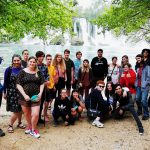
Travelled from Rome on a school trip with 14 high school students for a week of learning about Bosnian history, culture, and exploration. From the beginning, Skender was incredibly communicative and helped us plan every single detail of our trip: day trips, guides, meals, hotels, transport, and other fun activities.

I was the leader of a school group who had a 5 day trip in BH. Skender helped arrange most aspects of our trip. He was quick, courteous and professional in his communication and organization.

Contact Us NOW and organize your Balkan study trip
OUR PARTNERS
“Education is a progressive discovery of our own ignorance.”
Since the very beginning, idea of the Funky Tours is to offer amazing and life-changing experiences. Experiences aimed to heavily exceed expectations and focus on the local stories of life.
Indeed, our work with academic community has always been the most challenging and the most rewarding too.
Over the past years, having the honor to host an amazing number of schools, colleges and universities from all around the world, on different study trips here in Bosnia and Herzegovina and wider area of Balkans, including Serbia and Croatia, we believe we have “perfected” this type of travel to a pure perfection.
Our partners such as American School in London , Loyola University , Johns Hopkins University , St. Stephen’s International School , Walden School of Liberal Arts , Young Pioneers and many others just prove that Funky Tours in unrivaled partner if you ever plan to conduct a study tour in the Balkans.
Quote by Will Durant beautifully explains Funky Tours vision behind “study tour” type of travel.
We dream zero prejudice.

“The measure of intelligence is the ability to change.”
Our study trips focus on Bosnia and Herzegovina, Croatia and Serbia. Those three countries being so closely connected, but on the other hand so different, work best when combined together. Our trips are flexible and can be made as round trips or one way trips. Rest assured that we have a trip that will fit everyones needs and interests.

OUR FIELDS OF EXPERTISE
“Nothing ever becomes real till it is experienced.”
Selection of study trip places, themes, topics and experiences we cover is diverse. Our storytelling breaks the prejudice, offers unbiased – factual stories, and offers in-depth knowledge and understanding of the Balkans.
Short selection of most important themes we explore together. In the Balkans today, everyone have their own understanding about the events which took place in the last millennia. Our goal is to hear them, explore them, see the facts and deduct our own conclusions.
Medieval & Ottoman & Habsburg Period
Learn about medieval Bosnian, Serbian and Croatian state, and see where is the origin of ethnic differences today. Add to the context the Kosovo battle in 1389 and Ottoman 400 year rule, things in Balkans spice up. Don’t forget the Assassination of Franz Ferdinand and WW1.
Art & Culture
We explore the roots of the traditional and modern Balkans music. Special focus is on Bosnian Sevdalinka music, which is deeply rooted into Bosnian culture. Our guests are some of the most prominent Sevdah singers and authors. We bring the sound of the past into presence and define our cultural heritage.
Definitely we will not forget other aspects of Balkans Art & Culture heritage.
Yugoslavian Era
We will learn about difference between first and second Yugoslavia. In the same time we can’t forget the stories of WW2 and Tito’s partisan resistance against Nazi regime. You will learn about Četniks and Ustaše, and relativization of those events today.
Religion & Tolerance
Religion in the Balkans plays a key role when defining Ethnicity. We look into all aspects of various religious groups, with special focus on Islam in Bosnia and Herzegovina.
We’ll explore how and where Christianity, Judaism and Islam meet up and how they manage to coexist over the past centuries.
Are the Balkans heading towards the religious radicalism or religion in general is loosing grounds today?
FALL OF YUGOSLAVIA
Siege of sarajevo.
Stories of Death of Yugoslavia, War Crimes, Siege of Sarajevo & Mostar, Srebrenica Genocide, NATO bombings and many other, backed up with personal stories of war veterans and war survivors puts the era of Balkans during 1990ies into whole new context.
Bosnian Genocide
We go deep into understanding the reasons and facts of Srebrenica Genocide as European soil greatest Genocide since the WW2. How come Srebrenica is the only Genocide in the World which happened in the UN safe heaven? We will meet the survivors and hear their stories of life.
Croatian Homeland War
Among Croats it is referred as “Homeland war”, while among Serbian people refer to those events as “Ethnic cleansing”. We will try to see why the same events have totally opposite perception and “facts”.
Bombing of Dubrovnik and Siege of Vukovar are stories you can’t miss out.
NATO Bombings
NATO bombings in Bosnia 1995 and in Serbia 1998, have led to end of Balkan wars. We will explore different perspectives of those events and what do they mean to Bosnians (Bosniaks) and Serbian people in general.
Explore the story about the last big 1990ies war on Yugoslavian soil, War at Kosovo. Learn why most of the coutries consider Kosovo fully independent country and why Serbia, Russia and few others don’t. Learn about the life at Kosovo today.
Denial & Acceptance
The last phase of Genocide is denial. Learn why today in the Balkans, “war” still goes on, discrimination and animosity continues. What about the life after Genocide? Why are convicted war criminals heroes today and why their victims don’t seem to live up to the justice?
International Relations
What are the relations between the Balkan countries today, people often ask. Well, to properly answer this question we have to take so many factors into account. That is what we love to do.
Bosnian Political System
Just by knowing that Bosnia and Herzegovina has the Worlds most complicated political system, opens us many questions that need to be answered. Country with three presidents, 14 different governments and 3 constituent nations sounds complicated, does it?
Peace & Reconciliation
We explore the war after-math and try to see how well and how far the peace processes have gone by now. We focus on the events which took place in the last 30 years.
Communism vs Capitalism
Learn about how people today feel about Yugoslavia, Tito and idea of “brotherhood and unity”. Was Tito a hero or dictator? Why Yugoslavia was considered the most reformed socialist economy? How come Yugoslavia was the only Communist regime capable of falling out with the Soviet Union?
Ethnicity & Constituency
Yugoslavia with over 22 million people, was a home to 4 different religions and 5 different nations. Have you ever heard of “Muslim” nationality or Constituent Nation? In-depth we elaborate these terms.
PLACES WE VISIT
List of Balkan places we cover on our study trips. This list is just orientational and can be extended according to group needs
BOSNIA & HERZEGOVINA
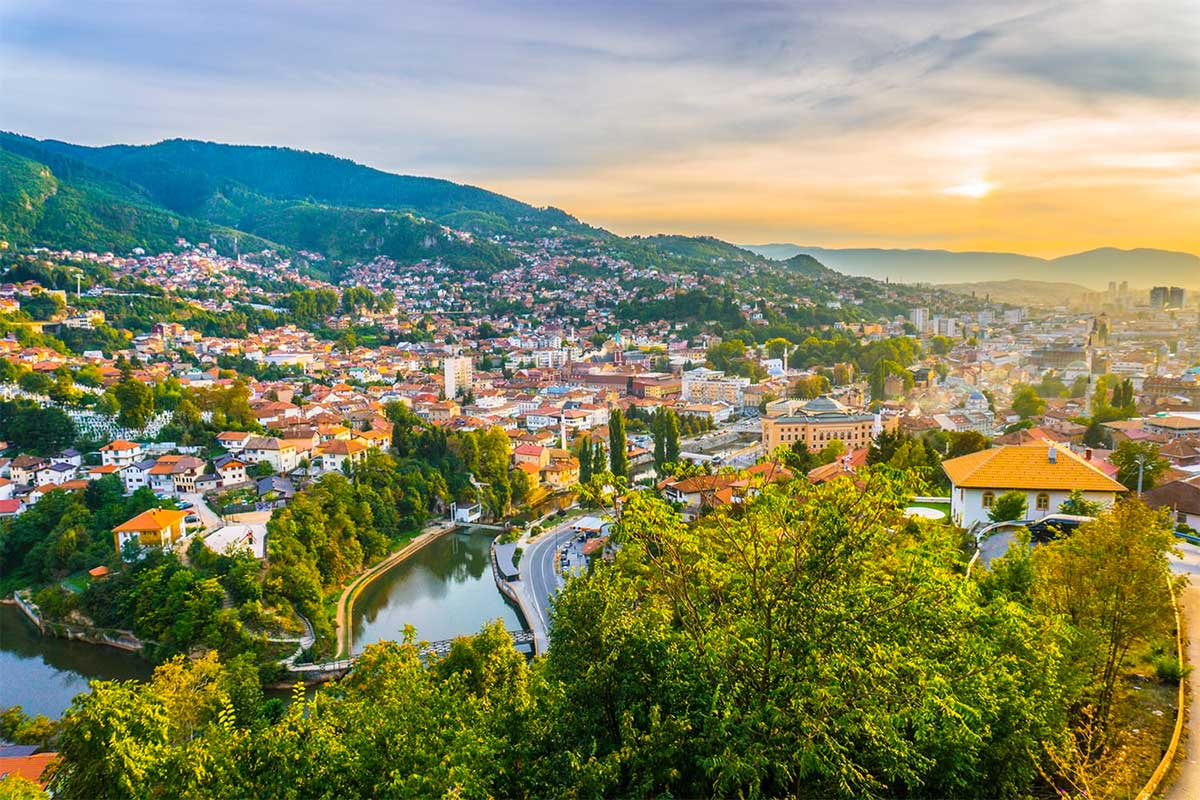
Learn the story of real European Jerusalem, by visiting Sarajevo’s mosques, churches and synagogues. Walk the steps of Gavrilo Princip at the moment of assassination of Franz Ferdinand. Learn the story about modern world longest Siege by visiting Sarajevo Tunnel museum and famous Olympic bobsled . Try Bosnian food, hear Bosnian music and get lost in the timelessness.

At Mostar learn the meaning of divided city. Get to know the perspectives of two different sides during the Siege of Mostar, and how those differences affect the life today. Learn about the Old Bridge – it’s creation, fall and rise. Enjoy the local food and amazing Herzegovinian wines.
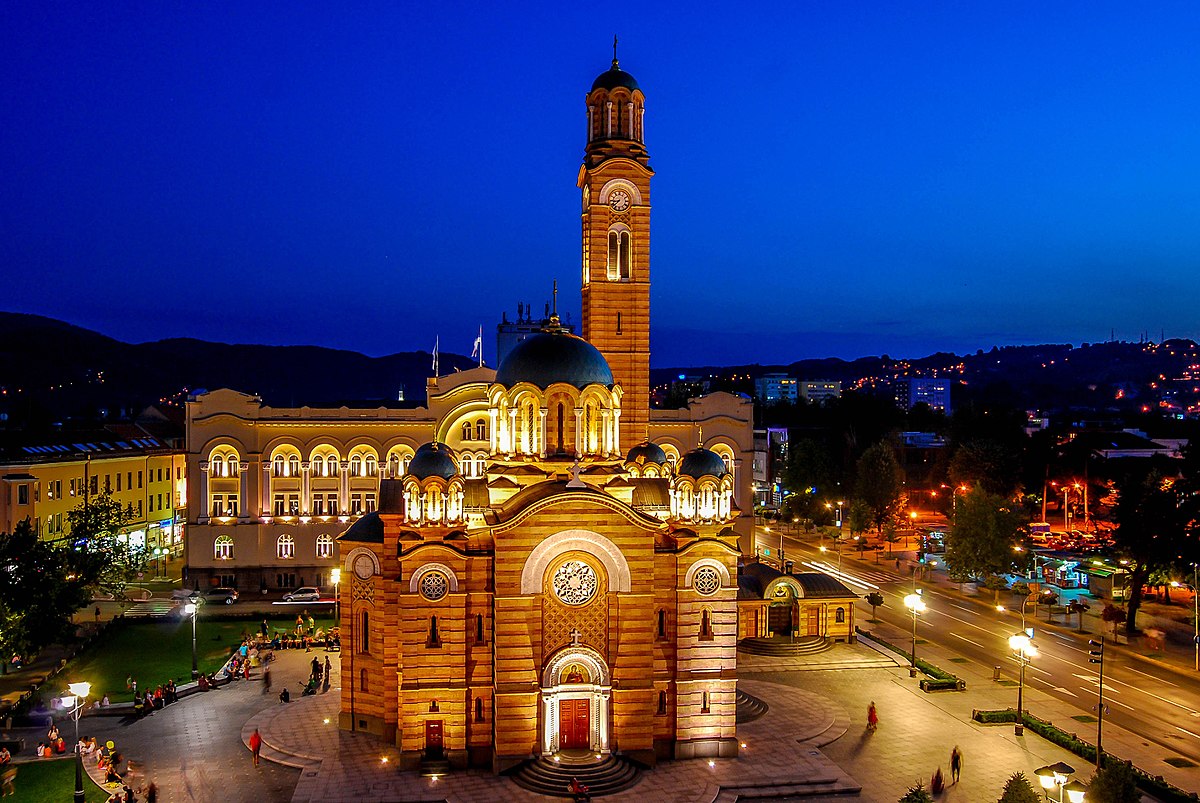
Second largest town in Bosnia and Herzegovina, is perfect opportunity to enjoy river Vrbas and Kastel fort, but in the same time learn the story of tripartite nature of Bosnia and Herzegovina.
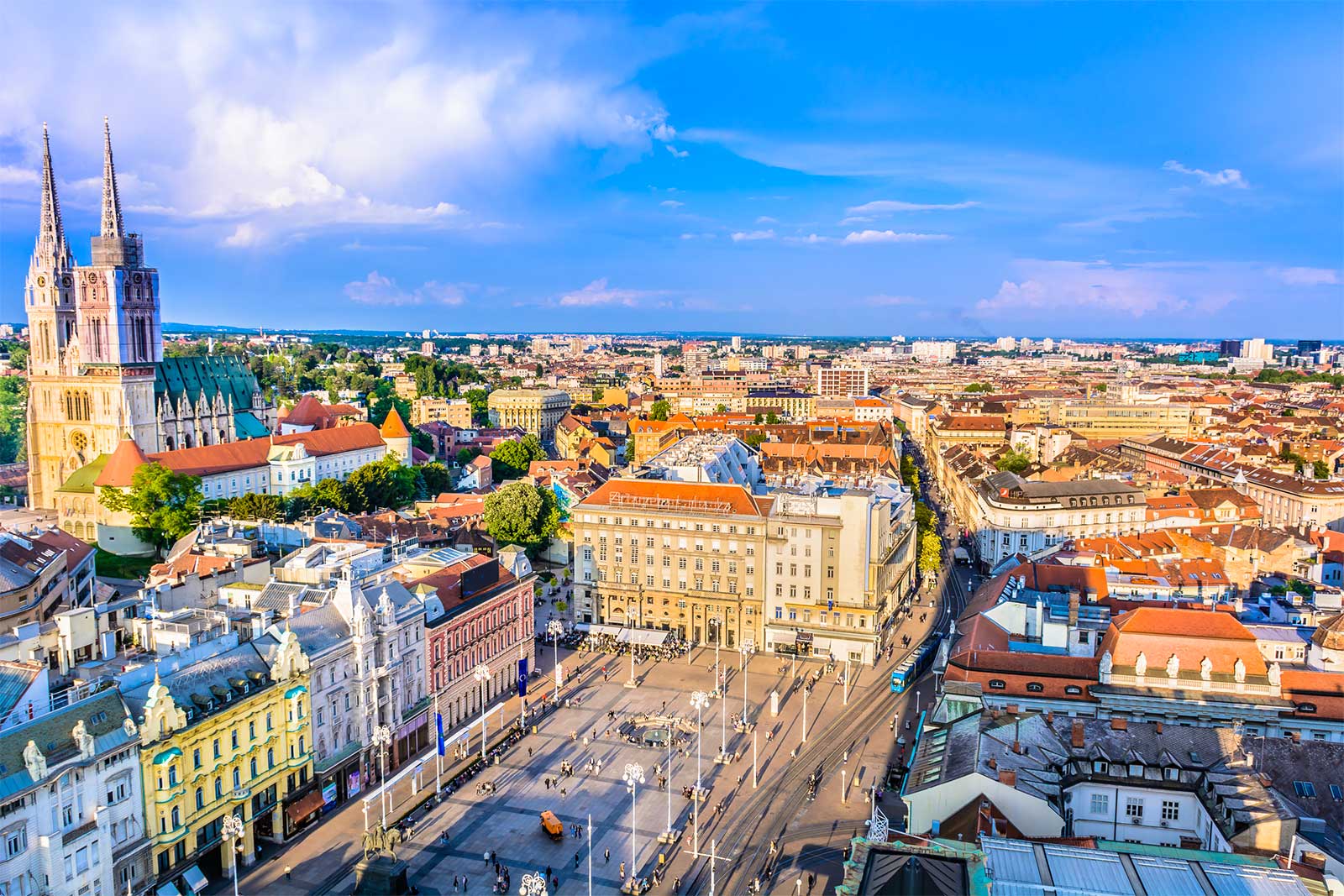
At Croatian capital explore the story of Homeland War and understand the Croatian perspective of Fall of Yugoslavia. Compare the Yugoslavian socialism with story of EU, as Croatia since 2013, is EU member.
Visit Museum of Broken Relationships or visit UNESCO site of Plitvice Lakes.
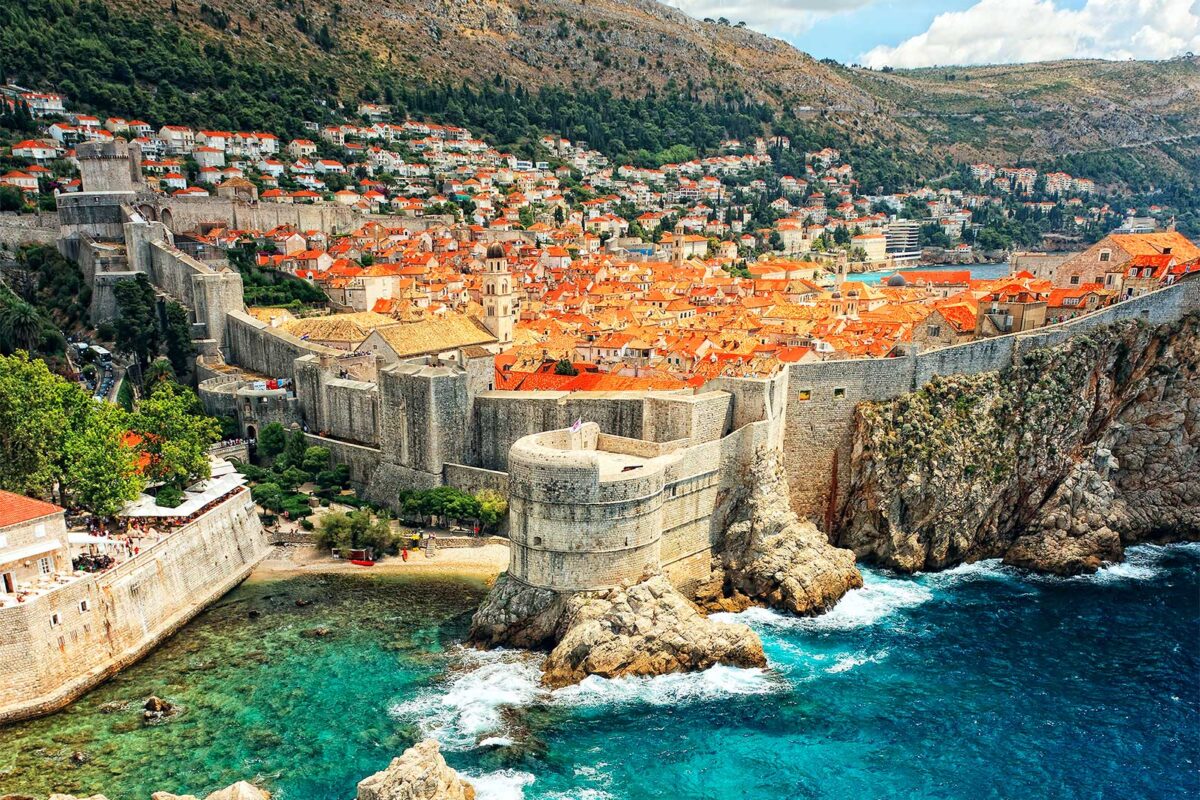
The pearl of Adriatic, Dubrovnik is Balkans most popular tourist site. Learn about state of Ragusa and how Dubrovnik people mastered the art of negotiation through last millennium. Walk the Dubrovnik old walls and hear the story of city bombings during the 1991 and Croatian Homeland War.
Enjoy the Adriatic sea, eat some great sea food and taste the best of Croatian wines.
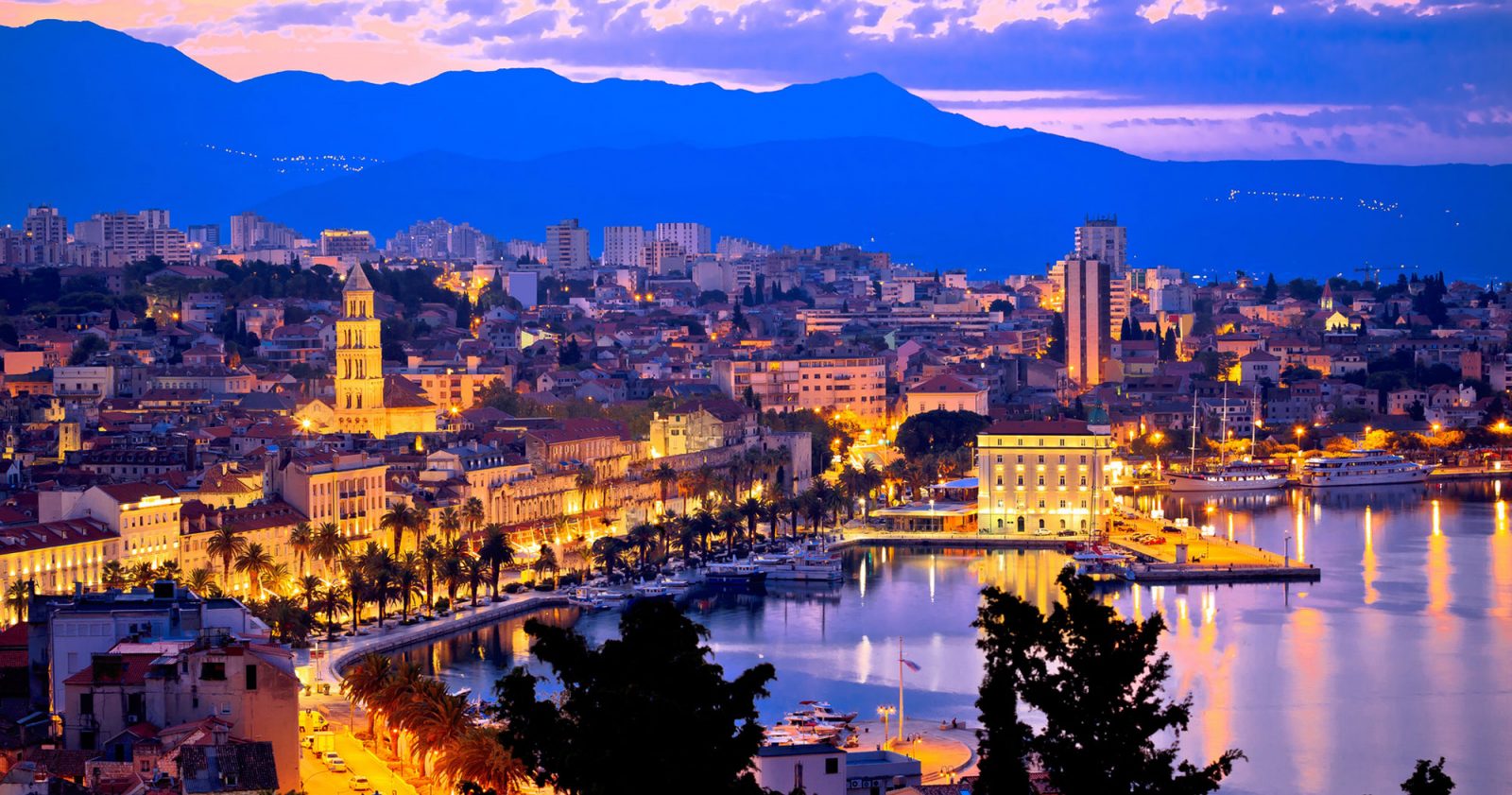
Explore the Roman heritage at Diocletian palace have a coffee and take a walk down the most beautiful Adriatic sea pedestrian road, famously called “Riva”.
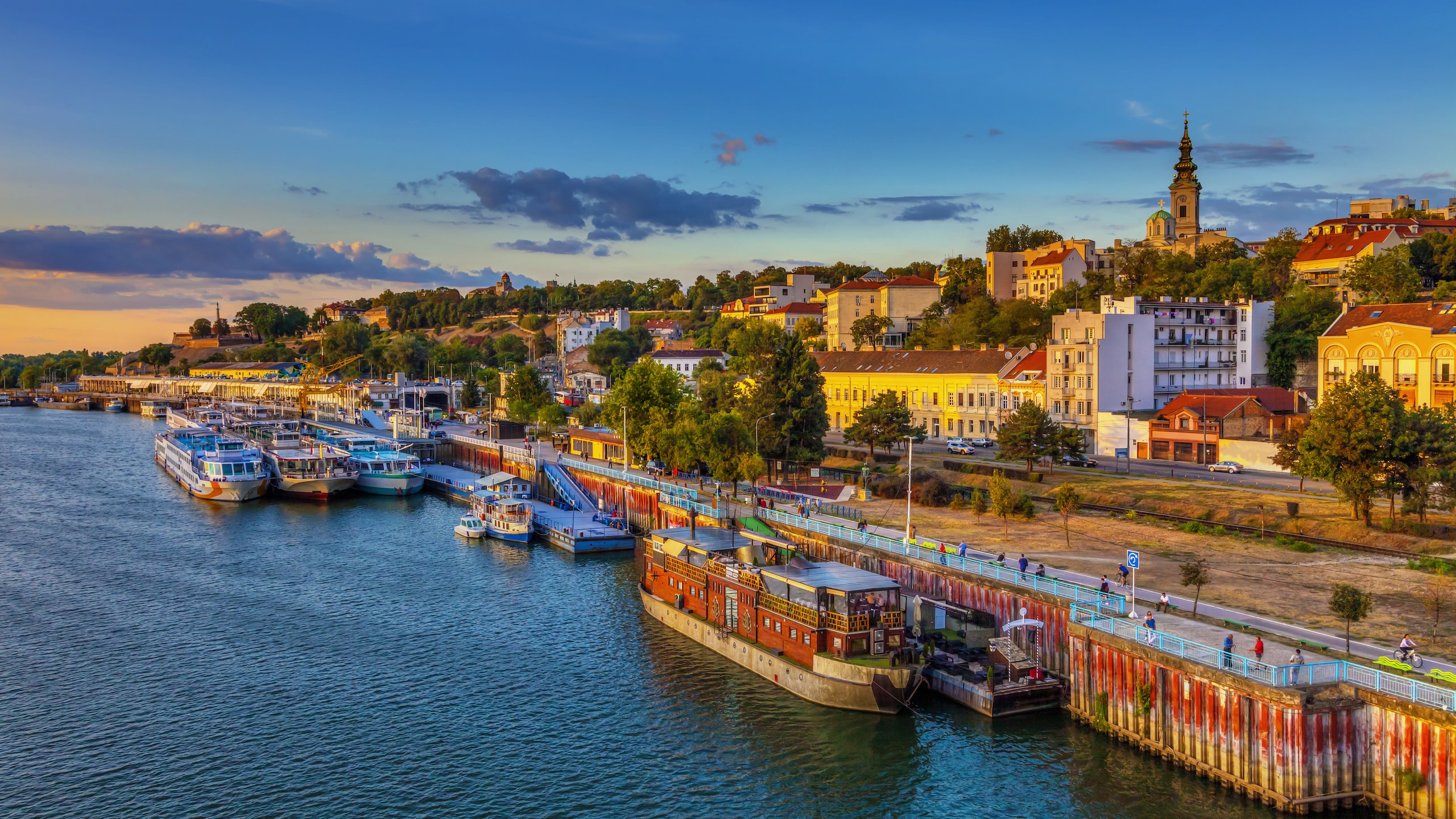
Former capital of Yugoslavia, today capital of Serbia, Belgrade is the largest city in the region and the only European capital with two major rivers – the Sava and the Danube. Get to know Serbian perspective of Fall of Yugoslavia, importance of Kosovo, role of Slobodan Milosevic and NATO bombings. Visit Tito’s burial ground, Museum of Yugoslavia, explore the “capital of Balkans nightlife” and taste some good food.
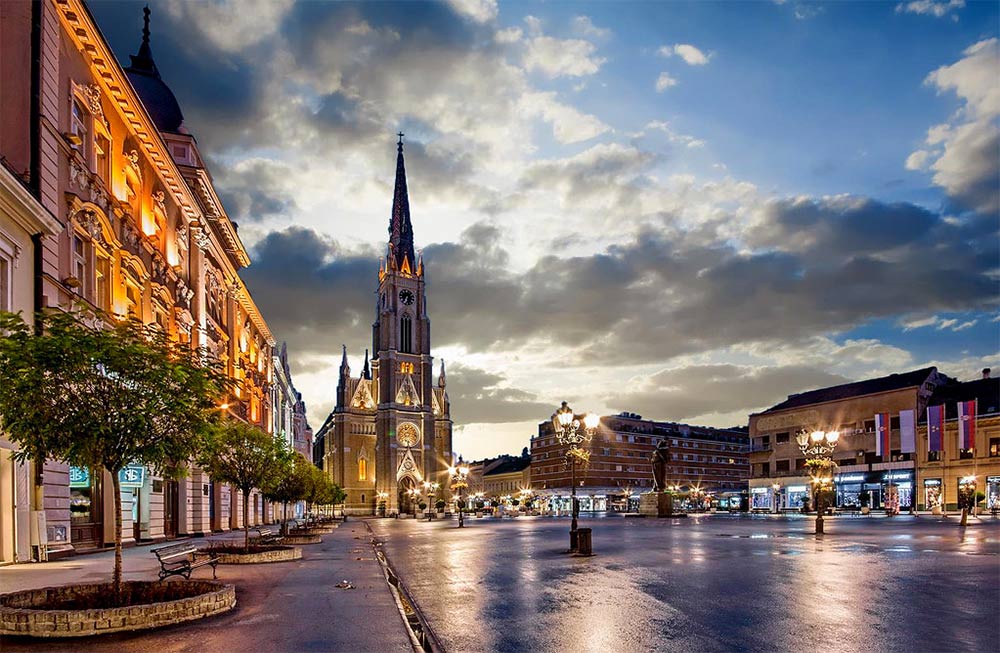
Just by saying that Novi Sad, is home to 26 different ethnic groups, and home to 6 officially spoken languages, spices things up. Adding up that Novi Sad is home to one of Europe’s largest music festivals, Exit festival, and in combination with unique history and architecture, makes the capital of autonomous region of Vojvodina, Novi Sad, a must see place on your visit to Serbia.
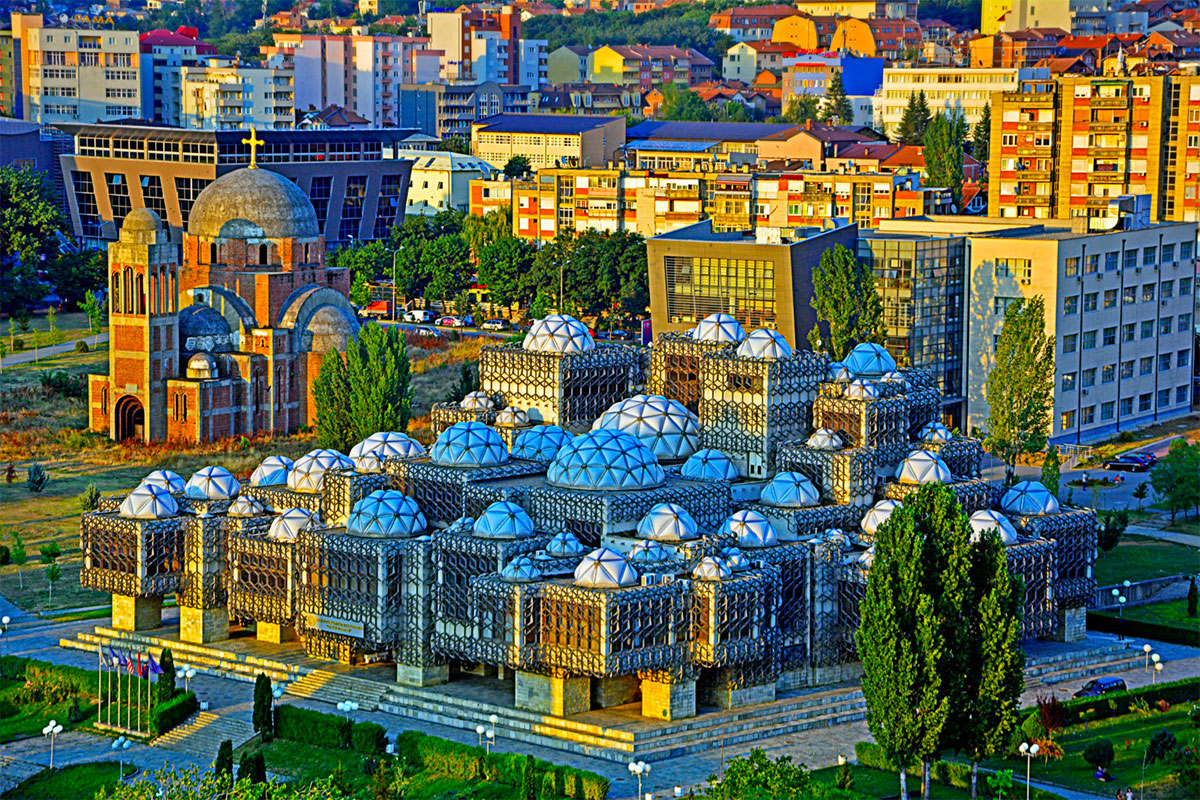
Explore the capital of Kosovo, famous Pristina. Learn the facts behind the importance of Kosovo in the present day as it youngest independent state in Europe. Learn more about Serbian – Albanian relations today.
To create an amazing study tour, we understand amazing itinerary has to be enriched with amazing experiences. Here is a short list of experiences Balkans as destination can offer.
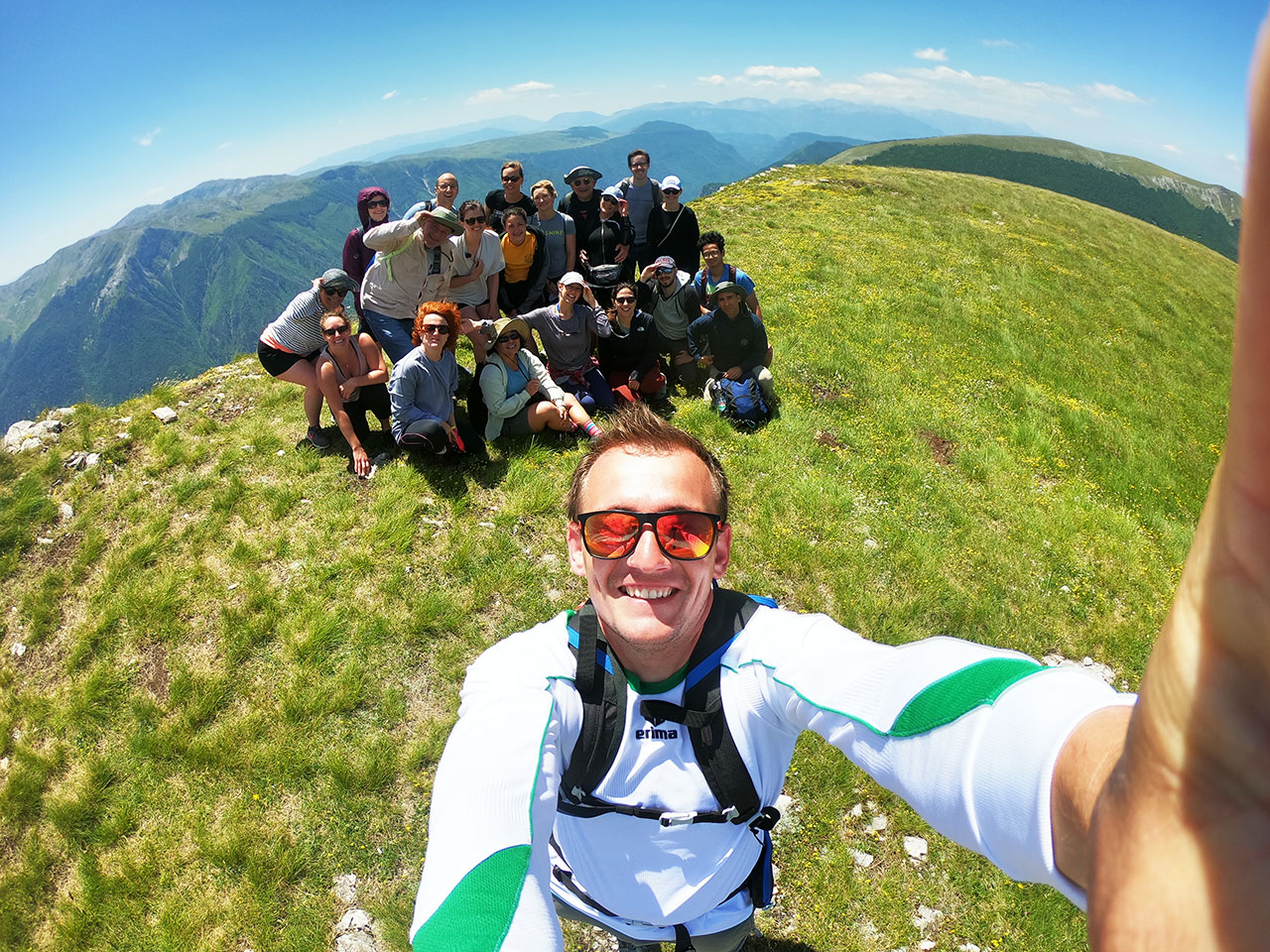
Balkans peninsula is know for variety of hiking options. Bosnia by far has the greatest range of mountains available for amazing outdoor activities. Visit ancient Lukomir village and learn the nomad life. If you prefer easy or hard, Dinaric Alps we have it all.
Horseback Riding
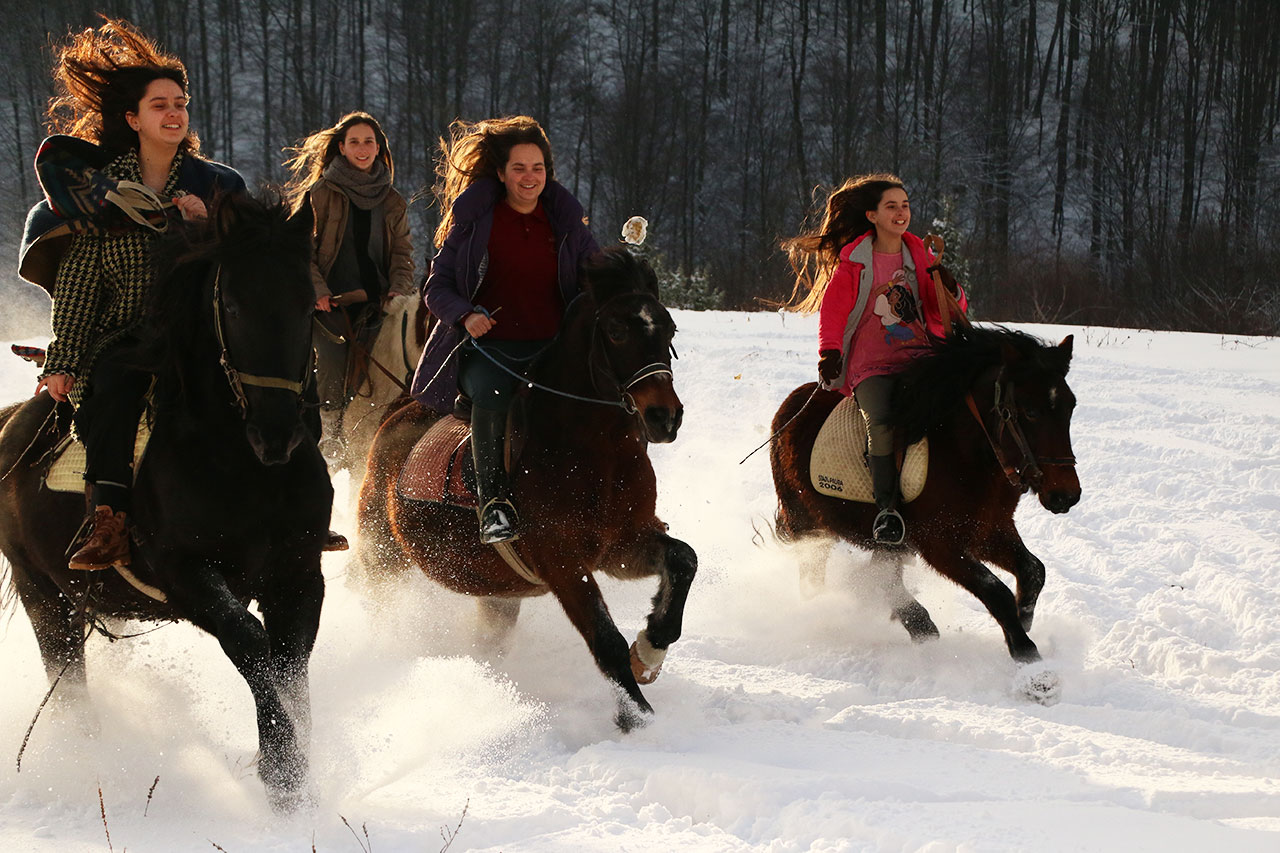
Either if you prefer wild nature horseback riding or you are beginner, we have it all. Imagine a trip to wild and remote ends of Bosnia and Herzegovina where you practice horseback riding with local family.
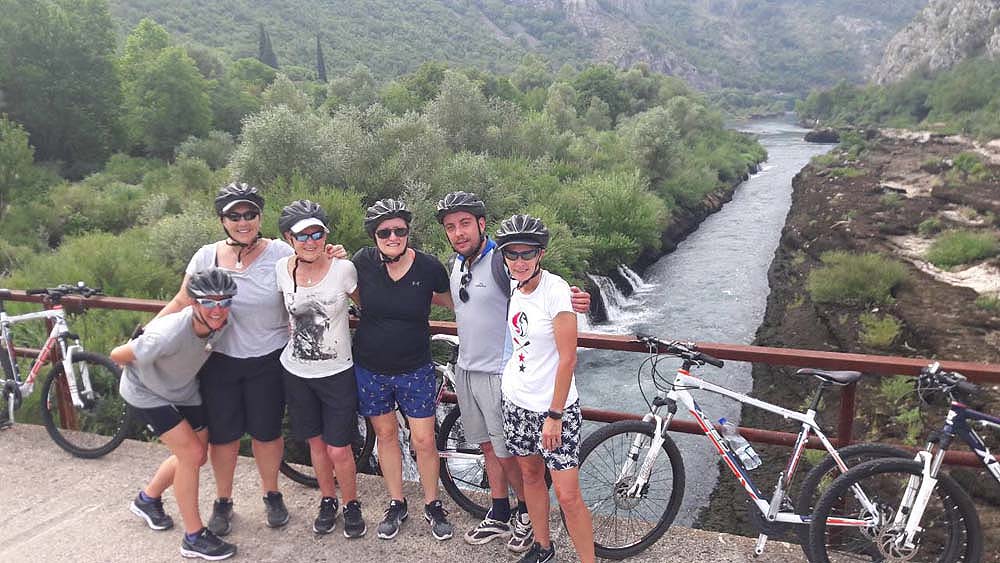
Balkans are full of amazing plains and mountain regions. Either if you are fan of easy city style of biking or maybe prefer the more amazing mountain biking, Balkans will not disappoint you. Have you ever heard of Ćiro biking trail or ever imagined to bike down the Olympic bobsled?

For any study tour anyone does anywhere, Yoga class is a must do. Balkans with its nature and cultural potential is amazing opportunity for great yoga experience.

Home of the 1984 Olympic Games, mountains around Sarajevo, Jahorina and Bjelasnica offer some of the most amazing ski slopes in whole of South Eastern Europe. Everything at an increment of price of the West European ski resorts.
Snowshoeing

Dinaric Alps offer amazing amount of snowfall during every winter. If you are fan of pleasant walking in the snow and soaking up the beauty of the Balkan mountains, snowshoeing style of outdoor adventure is right thing for you.

National Geographic in 2012 listed Bosnia and Herzegovina as the most amazing destination for white water rafting. Having 5 amazing rivers, your rafting options are limitless.
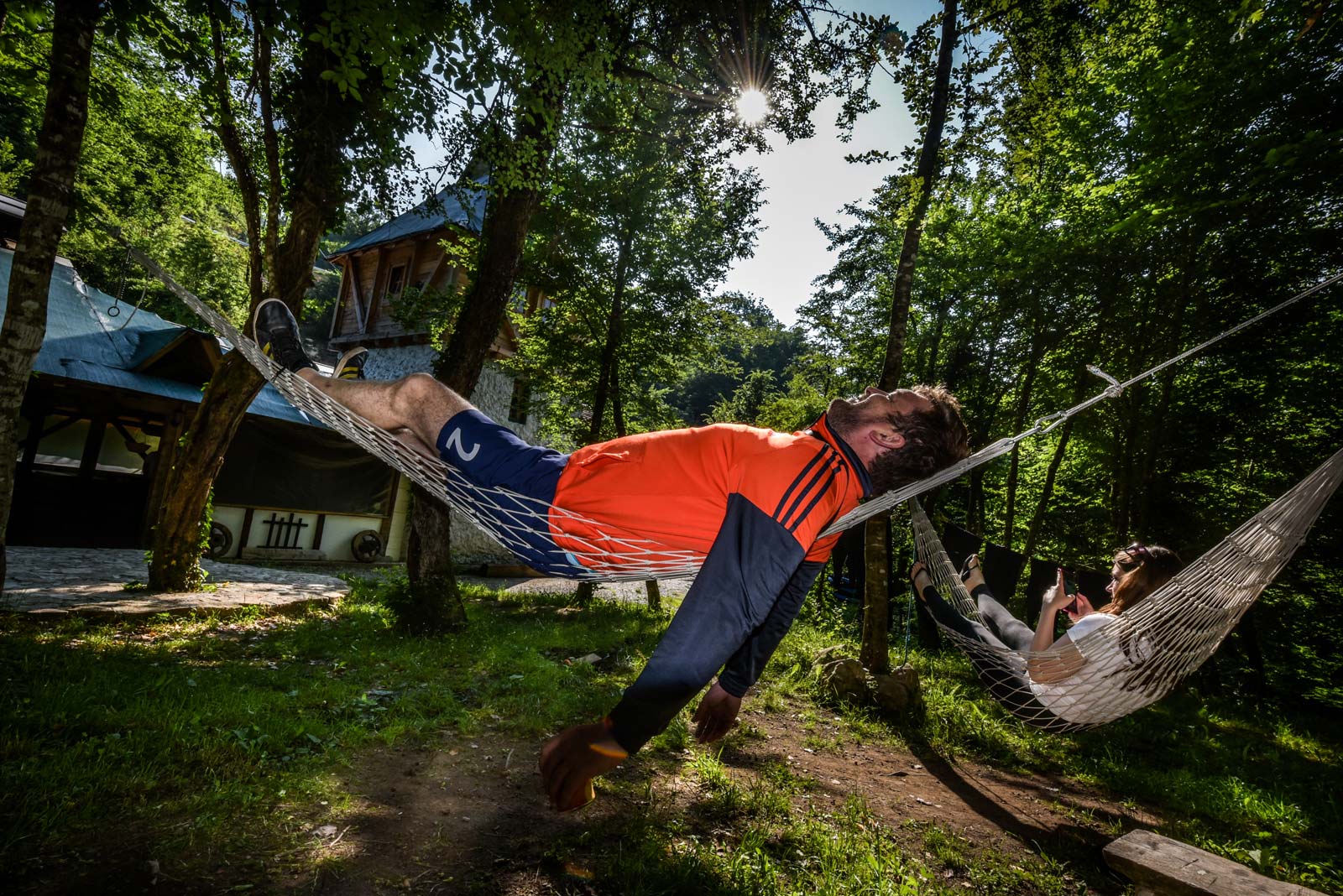
Most of the Balkans National Parks, Nature Parks or general nature areas have no limit on camping, meaning you get to enjoy the most beautiful nature areas without any jam or hassle at all. Maximum safety and enjoyment at your palm.
EXPERIENCES OF LIFE
Life under the siege.
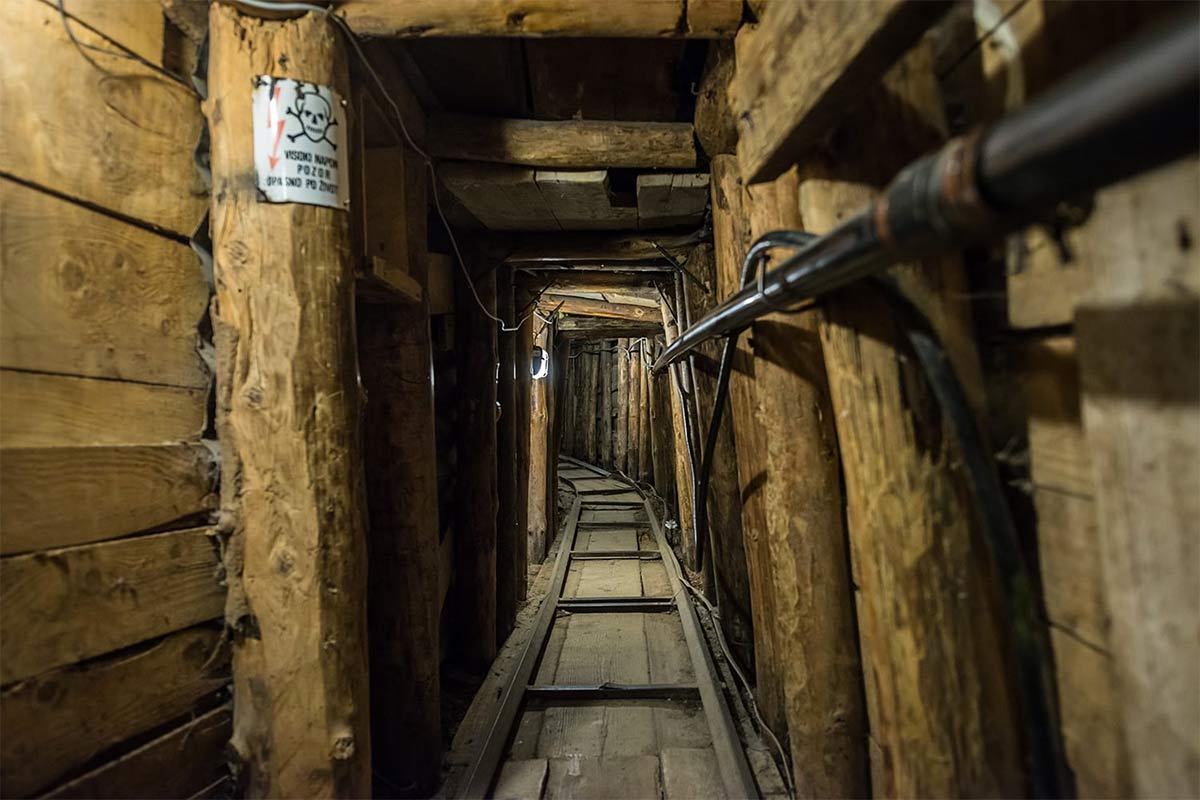
Imagine a 4 years of life spent in the basement. Imagine a place where on average daily, more 330 bombs fall down. Imagine a life priced at only 5 liter of drinkable water. Imagine witnessing loss of your closest friends and family members. You can’t imagine life during the siege, but you can hear it from those who have lived it.
Life After Genocide

By understanding the story of Fall of Yugoslavia, visiting Srebrenica town, Srebrenica Memorial Centre and meeting the Srebrenica Genocide survivors, you get to know the full context of Genocide and life after Genocide. Funky Tours goal is to put these terms into understandable context.
Childhood In War
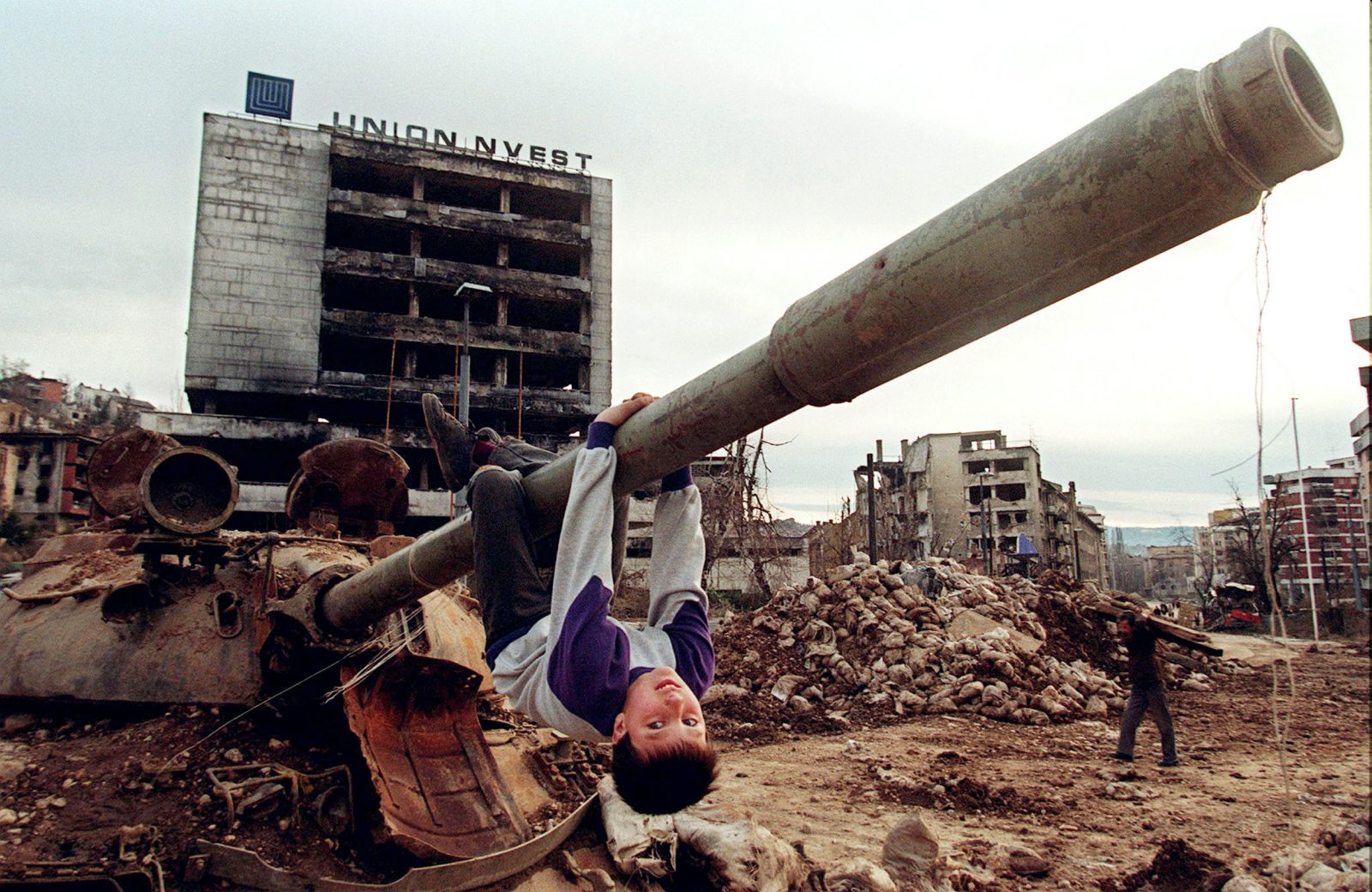
What does childhood in war mean to you? Does it mean going to school everyday? Does it mean playing outside whenever you can? Does it mean you visit your friends whenever you can? Does it mean you have sweets and fruits anytime you want? How fast do you you shift from a child to a man? Our guides and guest speakers will respond to these questions.
Teenage Soldier

Hear the story of the 16 year old boy who participated in resistance during the Siege of Sarajevo, and learn how he deals with life reality today.
Why I consider leaving my country?

Do you know that the Balkan countries have one the biggest brain drain in whole World? What are the reasons that make people leave their homelands? Are those lack of employment, unstable political tensions, ethnic animosity, wounds of the past, possible wars in future, nepotism and corruption?
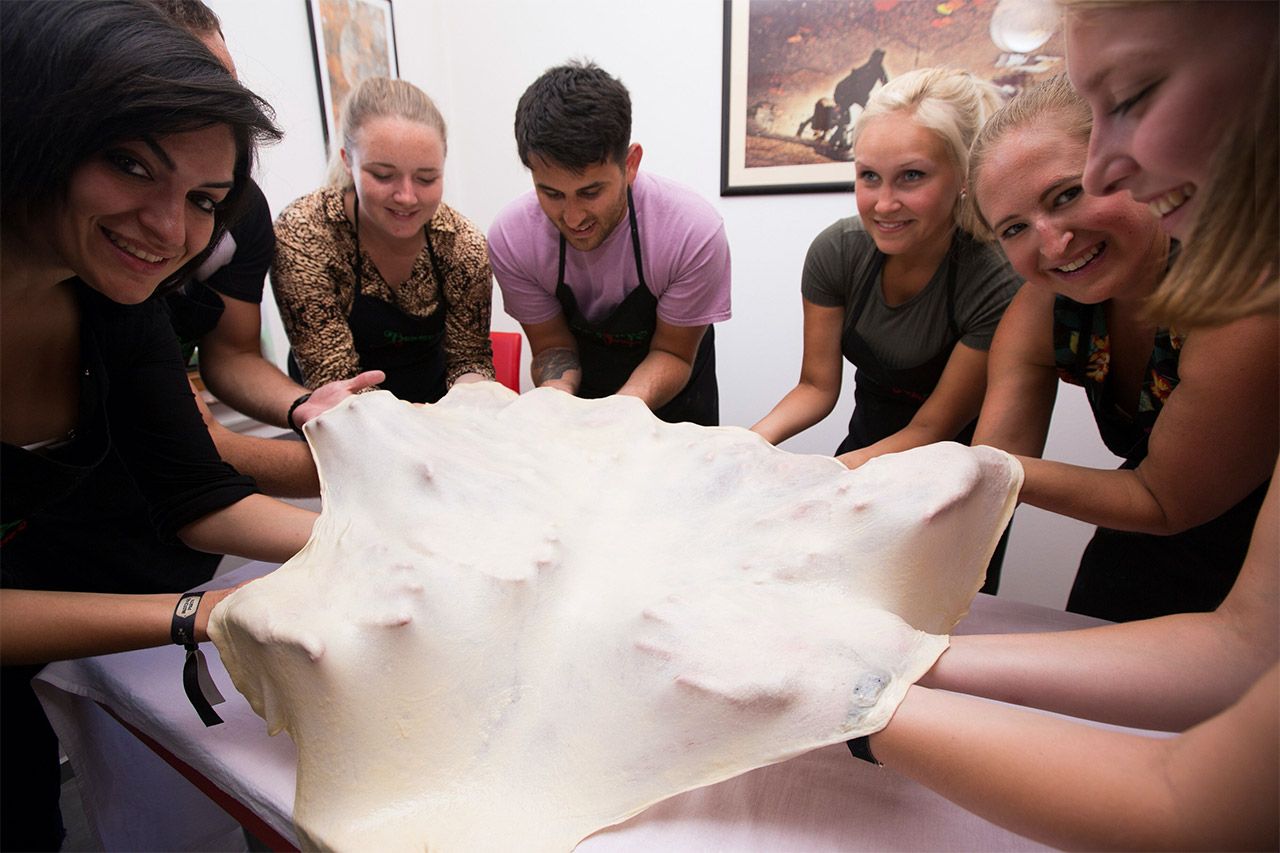
If you are fan of Balkans local food, our cooking classes of Bosnian/Croatian/Serbian food will be the highlight of your Balkans journey.
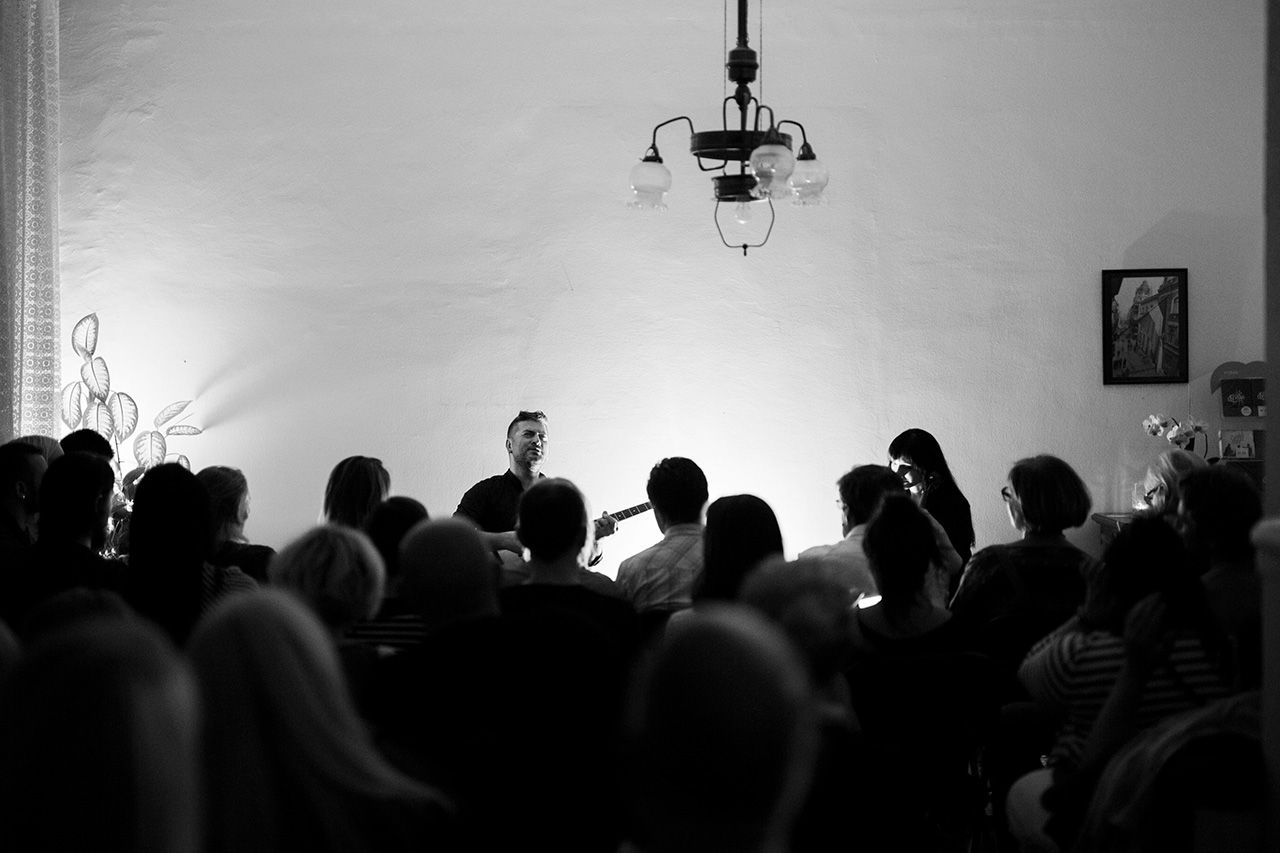
Culture of Balkan Slav people is heavily defined by the music we play. Attend our amazing Bosnian Sevdah music workshop, understand the origin of the traditional sounds and learn to play few notes.
Woodcarving
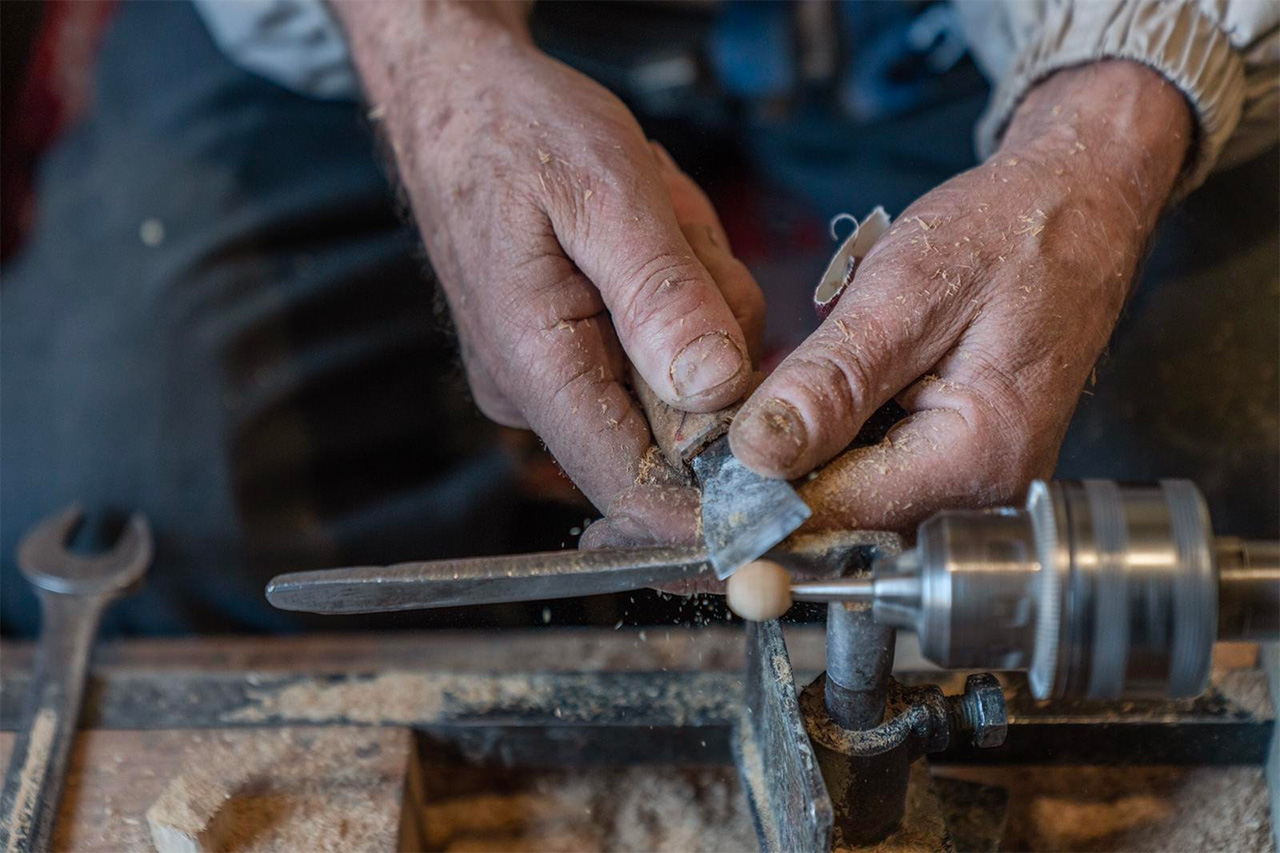
Woodcarving craft is an art deeply rooted in the DNA of the Balkans people. Even though heavily evolved, this art today still finds it’s purpose and survives industrialization till the day. We will teach you how it’s done.
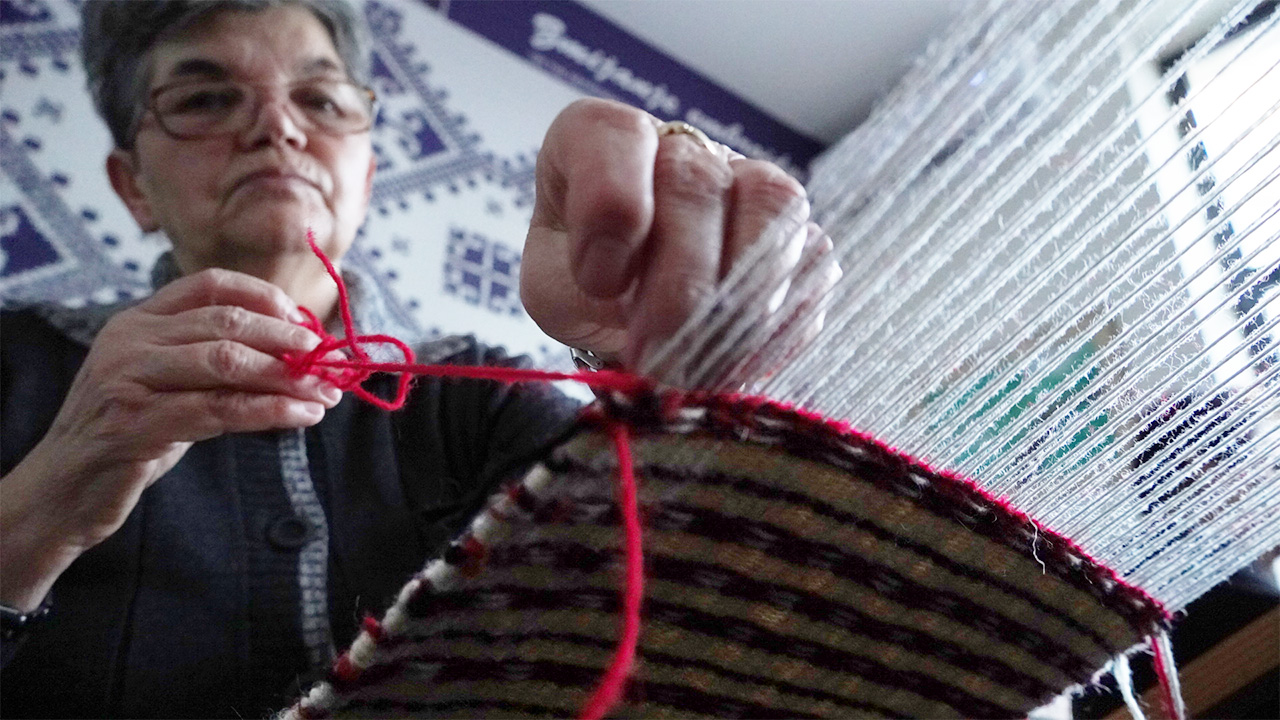
Traditional arts and crafts of weaving, embroidery and knitting are still largely represented industries throughout the Balkans. If you are interested to learn or see these centuries old techniques, Balkans are place to be.
Coppersmith

Is there better way to bring a souvenir home, then to make it yourself with local technique, present in Balkans over 500 years already now? No there is not, and our coppersmith workshop will help you enjoy that experience.

If you would like to understand how old pottery techniques in the Balkans are still today finding its purpose in the modern world, join us for a pottery workshop, make your own pot and learn about entrepreneurship.
“He who opens a school door, closes a prison.”
To create amazing products, we require that all study tour aspects match our philosophy. our tour guides & guest speakers, accommodation, transportation, liability, safety, tasty local food or great fun are all mirror of our philosophy too., tour guides & guest speakers.
The most important asset of our tours and study trips are our people: our staff, our guides and our guest speakers.
Funky Tours philosophy is to deliver completely unbiased and factual stories, and to fully engage with our guests.
Our people are Sarajevo Siege, Srebrenica Genocide and other Balkan wars survivors. Individuals who made precedent in global law, and others who have changed the world in many, many different ways. Our speakers are well established within the field of their expertise.
Our list of guest speakers is never ending and is constantly being updated.

Transportation
As a travel and transfer agency with maximum focus on guests safety and satisfaction, at Funky Tours we always chase excellence in our services.
Our fleet of 20+ vehicles ranging from 4 seater cars to 50 seater buses makes sure we can cater any group size.
SAFETY PROCEDURES & QUALITY STANDARD
- Average age of our fleet of vehicles is under 2 years
- Brand new cars (regularly serviced with an authorised service centre)
- All our vehicles are insured (mandatory auto insurance, casco and passengers insurance)
- Tyre of premium brands (all tyre are seasonally changed & adjusted to weather conditions)
- Professional and experienced drivers
- Internal procedures ensure that all drivers top of the industry
- All our drivers have long term experience in passenger transfer industry
- Our driver will always respect the traffic signs and speed limits

Accommodation
Depending on the group requests we always aim to provide transparent service. We never aim to maximize our earnings, instead we aim to exceed our guests expectations, and save their costs.
Either if you are looking for classy hostel, B&B or hotels of different star rating, we know the market.
On the other hand for adventure lovers, Balkans are crowded by amazing and yet unknown places for home stay, camping, staying in mountain huts or bivouacs, places completely off the beaten path – we know them as well.
Either if you want us to recommend you accommodation options or you prefer to book it on your own, we are happy to assist. Funky Tours only interest is to maximize our guests stay.

DON’T BE BIASED
“We don't see things as they are, we see them as we are.”
The most important thing in the balkans is not to fall under the trap of relativization and "biasness". funky tours guides and guest speakers are carefully chosen and are prominent within a field of their work. our stories are unbiased and factual., proceed booking, already a member, don't have an account create one., or continue as guest.
Subscribe & get your free guide to going abroad!!
3 Perfect Balkans Itinerary Options: 10 Days, 1 Month, and More [+PDF]
Traveling and backpacking in the Balkans is an extraordinary experience that offers the best of Europe on a backpacker budget. This Balkans itinerary will deliver the best of Europe. Delicious, Italian and Turkish-inspired food and drink. World-class beaches and Rivieras. Towering alps and the southernmost fjords in Europe. The Balkans backpacking experience offers so much to love in such a small area and at a great price that it should be top of every traveler’s list.
Read on to discover the best of the Balkans, the essentials for a perfect experience wandering the Balkans, including the best route and itinerary for 10 days, 2 weeks, 3 weeks, and 4 or more weeks.
My experience exploring Croatia, Montenegro, Albania, Bosnia, Serbia, and more was one of the highlights of my European backpacking experience. Amazing food, plenty of great drink (wine and Rakja), never-ending parties, captaining a boat, extraordinary nature of towering mountains in bays, fantastic beaches, plenty of friends and friendly locals, and more. In this Balkans itinerary, I’ll share the must-see sights and experiences and how to make them happen to help you craft the perfect Balkans backpacking experience for you.
CONTENTS OF THIS PERFECT BALKANS ITINERARY
- Quick Balkans Itinerary for 10 Days to 14 Days
- The Full Balkans Travel Itinerary (3+ Weeks)
- Why The Balkans
- Balkans Tour Options to Consider
- Slovenia : Fairy tale like nature, lakes, and forests
- Croatia : Castles, Game of Thrones, wine, Italian inspired cuisine, an exquisite coastline
- Bosnia and Herzegovina : History, Ottoman influenced culture and cuisine
- Serbia : Never ending parties on the riverfront, fusion foods, rakija culture
- Montenegro : Norwegian styled fjords in warm, welcoming waters
- Albania : The Albanian Riviera’s amazing beaches and the Albanian alps
- Bulgaria : Artsy neighborhoods, nature, and gourmet locavore food culture for cheap
The Additional Balkans Destinations
- Kosovo (Optional)
- Macedonia (Optional)
Logistics of Traveling the Balkans
- Balkans Travel Budget & Tips
- Visas and Crossing Borders in the Balkans
- Travel Insurance: Do You Need It In The Balkans?
- When To Visit The Balkans
- Tips for Staying In The Balkans On A Budget
- Balkans Packing List Essentials
- How To Get Around The Balkans
- Balkans Travel FAQ
BALKANS ITINERARY HIGHLIGHTS: THE TOP 10 THINGS TO EXPERIENCE IN THE BALKANS
- Montenegro: The southernmost fjords in Europe and beautiful waterways
- Albania: Undiscovered escapes, beautiful rivieras that rival the Greek isles, Albanian Alps
- Croatia: Medieval architectural beauty and a “Balkans meets Venetian Italy” vibe
- The Albanian Riviera
- The Albanian Alps
- The fjords of Montenegro
- The castles of Croatia
- National Parks throughout
- World-class beaches in Albanian, Croatia, and Montenegro
- Scandinavian style fjords and towering mountains in Montenegro
- Rich food and amazing wine influenced by the Italians, the Ottomans, and Eastern Europe
- Medieval castles and city centers along the entire Balkans backpacking route
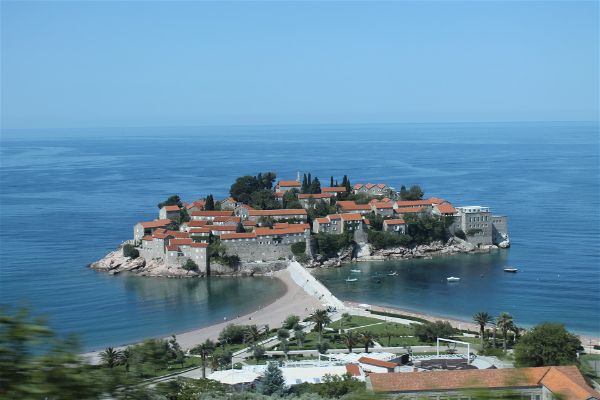
WHAT TO SEE AND DO WHILE YOU’RE IN THE BALKANS

KEY BALKAN ITINERARIES
THE TWO PERFECT BALKANS ITINERARY OPTIONS FOR YOUR TRIP: 10 DAYS AND MORE
The Balkans is such an impressive destination for backpackers and travelers because it offers so much for every type of traveler – and it just so happens to be budget-friendly too. Any one of the core Balkan countries could easily be a multi-week destination.
To balance maximum experience with enjoyment, we’ve created 2 separate itineraries.
The first option is the Balkans itinerary for 10 days , which focuses on the highlight destinations and experiences of the Balkans that no one can miss and skips the countries with redundant views or experiences.
The second is the full Balkans itinerary for 2-3 weeks or more , the itinerary achieves the same (maximum enjoyment and unique experiences), but at a slower, more enjoyable pace and more sites in each country added to ensure constant enjoyment. This itinerary includes everything you need to see in the Balkans if time is no issue and you’re one of the lucky backpackers on the long trail. If you’re backpacking in the Balkans, this full Balkans itinerary is the option you need.
CLICK HERE TO DOWNLOAD A FREE PDF OF THIS GUIDE!!
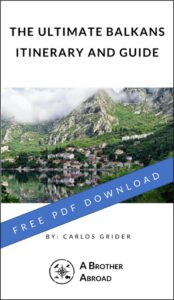
BALKANS ITINERARY (10 DAYS)
Balkans travel is something that every traveler should experience, but not all travelers have the full month necessary to backpack and slow travel the Balkans. This Balkans itinerary for 10 days packs the best sites, tastes, and experiences of the region into a smooth, 10-day jaunt.
With this 10 day Balkans itinerary, every single day will be mind-blowing and enjoyable and leave you wanting to return to the Balkans very soon.

If you are pressed for time, this 10-day itinerary delivers the best of the Balkans – beaches, food, Roman ruins and architecture, and more. However, if you have more time to spare, I highly recommend spending a month or more moving slowly through the Balkans and staying a little longer anywhere that catches your interests.
Read on to discover the places I recommend for a full Balkans itinerary of a few weeks or more.
THE FULL BALKANS TRAVEL ITINERARY (2 TO 6 WEEKS)
The Balkans has just as much richness, beauty, and culture as much more popular and crowded Western Europe, without the crowds and at a far cheaper price tag – fjords, mountains, and national parks as good as any in Scandinavia, wine that rivals Italy and France, rich hearty food that is unmatched, ruins that rival Rome, beaches that are on par with the islands of Greece, Spain, and France, and nightlife that puts Barcelona and Majorca to shame.
If you have a month or more to spare, I highly recommend backpacking the Balkans with this full Balkans travel itinerary.
This itinerary traces a trail through the Balkans, traversable by bus with manageable stops along the way every few hours, giving you a “best of the Balkans” tour, doable on a budget easily by bus.
For those travelers with more time for wandering and backpacking the Balkans, this itinerary shares every place you need to visit and see.

HOW TO USE THESE ITINERARIES
Both of the itineraries above, the Balkans 10-day itinerary and the itinerary, are perfect. Which itinerary you choose obviously depends on how much time you have to travel. For the longer itinerary, you should choose or eliminate destinations based on your own travel style – backpacker, budget traveler, outdoorsy, or party hungry.
If you only have ~10 days, stick to our 10-day itinerary, and you’ll hit the highlights of the regions and the best thing that each country has to offer.
If you’re traveling for 2+ weeks or backpacking, use the full itinerary omitting Kosovo, Macedonia, and Macedonia if you need to save time. Otherwise, hop the bus and enjoy each destination on our list.
If you find a city or country that you particularly enjoy, you should absolutely stay longer in that city or country.
Stay longer in countries where you love the sights, food, people, and lifestyle. As you travel, if you find a country/culture you love, stay longer and add more cities from that country to your itinerary (I recommend a few for each country).
The experience will change drastically once you leave each country as each Balkan country is very unique, so soak it up while you’re there – food, drink, people, architecture, and nature.
Plus , you can always go back and explore other destinations, so live in the moment as much as possible when you travel.
WHY I HIGHLY RECOMMEND THE BALKANS
If you’re looking for some of the most diverse (in culture, religion, language) and untouched parts of Europe, Balkans is a great place to go. The Balkans region has seen it all: from Macedonia’s Roman ruins and stunning mountain ranges in Kosovo to Croatia’s stunning shades of blue lagoons and epic beaches. What attracted me and my experience backpacking the Balkans
- European experience on a Southeast Asia travel budget
- Plenty of “ vacation nature ” and natural beauty – fjords, rivieras, waterfalls, and alps – within a short ride
- The best beaches in Europe for extremely cheap
- “Old World” and medieval cities and architecture bring Game of Thrones to life with castles and walled city centers.
- The varied and rich food : everything from Italian-inspired Istrian, hearty Slavic, and Ottoman/Middle Eastern -inspired Bosnian.
- The drink: Croatian, especially Istrian, wines are underrated, and world-class thanks to Italian influence, and the Rakija (local firewater) is interesting, complex and varied across the Balkans
- Compact and accessible traveling : most of the adventures are hours away from each other by an easily booked and cheap bus or train
- Easy visa situation: whereas the rest of Europe in the Schengen zone only allows 90 days per six months in all of the European Union, each Balkan state offers easily renewable and free visas from 30 days to 6 months
- Less crowded than the rest of Europe with all of the experience
- Plenty of history intact with cities built by Roman emperors , recent wars, and recently opened borders (Albania)
The Balkan region – Croatia, Montenegro, Albania, Slovenia, Serbia, and Bosnia & Herzegovina – offers amazing food, hearty and rich, that will satisfy any taste buds and wine as good as anywhere else in Europe. If you are looking for a “European vibe” but want an experience that’s cheaper, less crowded, and less touristy than the typical destinations, then the Balkans is a perfect place to visit.
The Balkans will give you an unforgettable experience – just make sure to pack your swimsuit, hiking shoes!
BEST BALKANS TOUR OPTIONS
If you’re not in the mood for indie travel, or if you’re pressed for time and want to see all of the Balkans in two weeks but want to skip the logistics planning, I highly recommend attending one of these reputable Balkans tours.
THE FULL BALKANS ITINERARY
Click to Jump to The itineraries
| SLOVENIA | | CROATIA | | MONTENEGRO | | BOSNIA AND HERZEGOVINA | | SERBIA | | ALBANIA | | BULGARIA |
———-
THE ADDITIONAL BALKAN TRAVEL ITINERARY DESTINATIONS
| MACEDONIA | | KOSOVO |
Quaint European towns and Insta-worthy lakes, forests, and caves
For nature lovers and sober travelers, Slovenia is a picturesque and green destination that may be worth adding to your itinerary.
Ljubljana, Slovenia’s capital and Europe’s greenest city, is a charming and quintessentially European city – walkable with cobblestone streets and a Riverwalk with plenty of coffee shops to enjoy the cool weather and peacefully picturesque views.
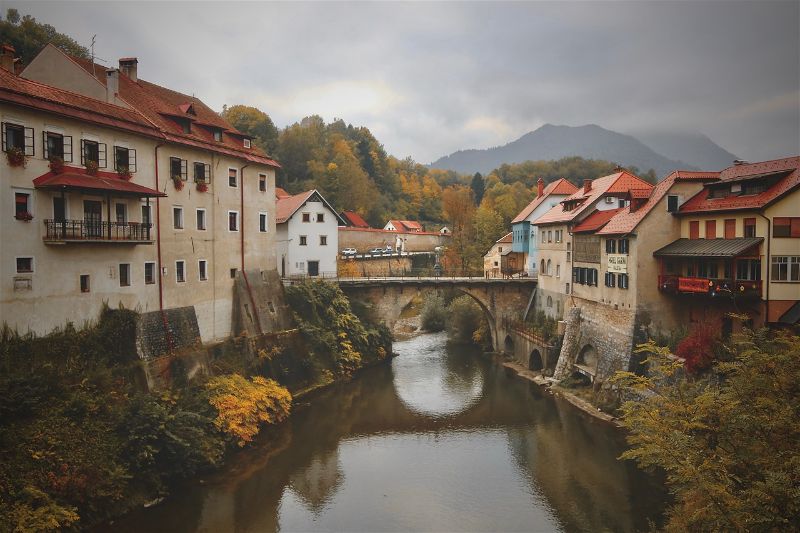
One hour away from the capital Slovenia’s biggest tourist destinations – Bled and Lake Bled – are nestled in the Julian Alps and deliver tons of Insta-worthy views. Hike up to Bled castle, boat to a church on an island, visit the charming village of Ribcev Laz on the shore of Lake Bled and take a cable car ride to the top of Mount Vogel for a panorama view.
End this leg of the trip by visiting the most toured cave in Europe (Postojna cave) and seeing the castle built into it (Predjama Castle) on your way to Croatia.
If you want to jump right into sunny beaches and lively nightlife, I suggest going straight to Croatia.
TIME NEEDED:
3 Days (1 Day in Ljubljana, 1 Day in Bled, 1 Day visiting Postojna Cave And Predjama Castle)
ESSENTIAL FOOD & DRINK
- Kremna rezina
- Kranjska klobasa
- Bograč
- Idrijski žlikrofi
- Pogača
- Štruklji
- Prekmurska gibanica

SLOVENIA VISA
Slovenia is part of the Schengen zone, so the Schengen visa applies – 90 days in a 180 day period, shared with all of the Schengen zone / EU countries
BUDGET/PRICES: ~$50 per day
- Hostel Dorm: $25/night
- Budget Hotel: $45/night
- Food: $15/day
- Transportation: $10 to $15 per day average, to visit attractions
- Attractions: ~$25
MOVING ON: From Ljublana, or anywhere else in Slovenia, if you are on a shorter itinerary (2 weeks or less), hop a bus (~8 hours) or a train (~10 hours + $38) to Split, Croatia, from Ljublana . If you are on a longer itinerary, hop a 5-hour bus or train (~$15) to Pula, Croatia and enjoy Istria .
GETTING THERE: As Slovenia is the start of many travelers’ and backpackers’ trails in the Balkans, the cheapest option is to fly into Bupadest, Hungary, enjoy the beauty of Budapest for a few days and then travel from Budapest, Hungary, to Ljublana, Slovenia by 7-hour train (~$30) or 7-hour bus (~$30) .
SLOVENIA ITINERARY

Slovenia has some amazing natural beauty that is world-class and that travelers rave about – but so do Montenegro, Croatia, and Albania, without being as far from the central Balkans backpacking route. Additionally, Slovenia offers very little outside of nature – while the rest of the Balkans offer rich food, drink, entertainment, and history.
Though Slovenia is remarkably beautiful, if you’re short on time traveling the Balkans, I recommend skipping Slovenia and starting your tour further south, closer to the action.
The Ljubljana city center was planned like an old baroque town, with cobbled streets and a Roman-style canal, catering to a day of walking and a leisurely lifestyle. This is a city that has been preserved in its original form, with buildings from all periods represented, all the while still moving forward. In 2014, Ljublana was awarded the Greenest City in Europe for its dedication to and advancements in sustainability, proving that Ljublana’s soul matched its surrounding beauty of turquoise lakes and sprawling forests.
Ljubljana also has a rich literary and artistic tradition, possibly cultivated by its welcoming cafes, with writers such as Nobel Prize winner Ivo Andric and poets like France Preseren make it their home for much of the 19th century. These literary giants influenced not just Ljublana but also much of the Balkans region as well through their work and by inspiring other writers.
WHAT TO DO IN LJUBLJANA
- Preseren Square and Tromostovje Triple Bridge
- Ljubljana Old Town, walking its two main streets
- Visit the Ljubljana Castle by funicular or hike
- Dragon Bridge
- Walk the riverfront
- Visit Congress Square
- Tivoli Park
- Museum of Illusions
TIME NEEDED: 1 Day
RECOMMENDED RESTAURANTS LJUBLANA:
WHERE TO STAY IN LJUBLANA
The hostel or hotel standards in Slovenia are great, so just choose one that fits your style. However, be choosy about the location to maximize your experience – either the Old Town or the Modern City Center are where you should look for accommodation. H20 Hostel comes highly recommended.
LAKE BLED / BLED
Bled, Slovenia, is a charming little town tucked up in the Julian Alps with the farily tale like Lake Bled situated right beside it. For those backpackers and travelers that love calm, pristine outdoor beauty and just the experience of strolling through a new place, Bled (just like the rest of Slovenia) will capture your heart.
Visitors can enjoy a stroll through the historic and beautiful city center, eating traditional Slovenian cuisine at one of many cafes or restaurants, or just picnic on flat rocks that jut out into the lake. Bled’s historic core is the winding castle on the hill on one side of the lake and the church on top of the hill on the other side of the lake. There are also many tours to take to explore the tiny, hidden, and less well-known, but still equally if not more stunning, parts of Slovenia that are offered by many different tour operators.
On the other side of the lake, on an island in the middle of the Krasna zalza (beautiful grove), stands a small, beautifully constructed church. It is said to be one of the most photographed churches in all of North-Eastern Europe.
Bled Castle was built in the 13th century by the Habsburgs as a summer residence. It has medieval turrets, and its view can be seen from throughout Slovenia. The castle is richly furnished and houses many treasurers; one that should not be missed is called “Prince Luitpold’s Treasure.” The treasure becomes more interesting because it contains some of Napoleon’s personal effects, including a memento made for the French emperor by a craftsman from Bled.
- Postojna Cave and Predma Castle inside
- Visit the town of Piran – full of Venetian architecture and coastline the rivals Italy and Croatia + Tartans Square, Saint Georges Church, and amazing seafood.
WHAT TO DO IN BLED, SLOVENIA
- Boat to the Church of the Mother of God on Lake Bled
- Hike to Bled castle
- Cable car to the top of Mount Vogel
RECOMMENDED RESTAURANTS AND CAFES
Sun-soaked beaches, Game of Thrones-style walled cities, and Venetian influence culture
Croatia’s Dalmatian coast is filled with countless amazing beaches and medieval-style cities worthy of Game of Thrones. The Croatian islands are party havens in the summertime that give you the must-experience opportunity to rent and captain your own boat for about ~$50 per day.
Between wanderings in Croatia, the rich food inspired by Italy just across the Adriatic Sea, and the great wine a rakija culture will keep you entertained. You could easily spend an entire trip in Croatia alone.
Croatia’s capital city, Zagreb, is a contemporary wonder. Its pedestrian-friendly streets lined with galleries and interesting shops hold fantastic treasures to be discovered at every turn. Foodies delight in the wide array of restaurants where one can sample everything from the old regional delicacies (try ćevapčići Slavinski) to original Southeast Asian fusion combos.
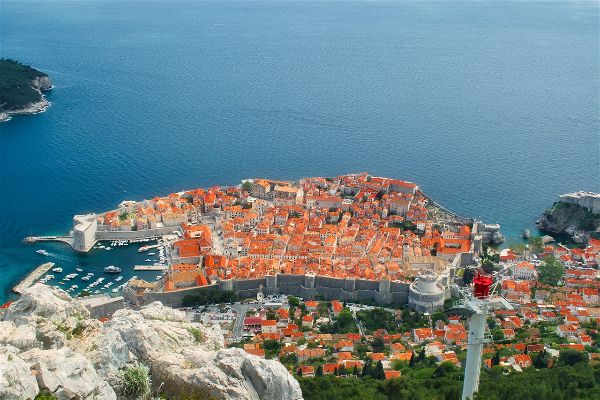
Endless nightlife options throughout Croatia offer partying high atop skyscrapers, in underground subterranean nightclubs nicknamed ‘catacombs,’ to islands that exist solely for nightlife and run until sunrise when they morph into normal beaches.
From its regal castle in Dubrovnik on the coast to modern marvels like The House of Croatian Parliament (Sabor) by architect Vjenceslav Richter, Croatia is filled with cultural riches that dance along pristine, unspoiled coastlines.
The Balkans are not only about wild mountains and alpine vistas – but they’re also home to some of Europe’s most spectacular coastline – the Dalmatian Coast of Croatia. The Dalmatian Coast, with its countless islands (think Hvar or Vis), packs in everything from laid-back fishing villages to cosmopolitan beach resorts. And did we mention the water? Well, it’s just turquoise, but it’s warm, clear, and everything you hope for in a riviera paradise.
No matter what kind of traveler you are, Croatia has something for you.
CROATIA ITINERARY
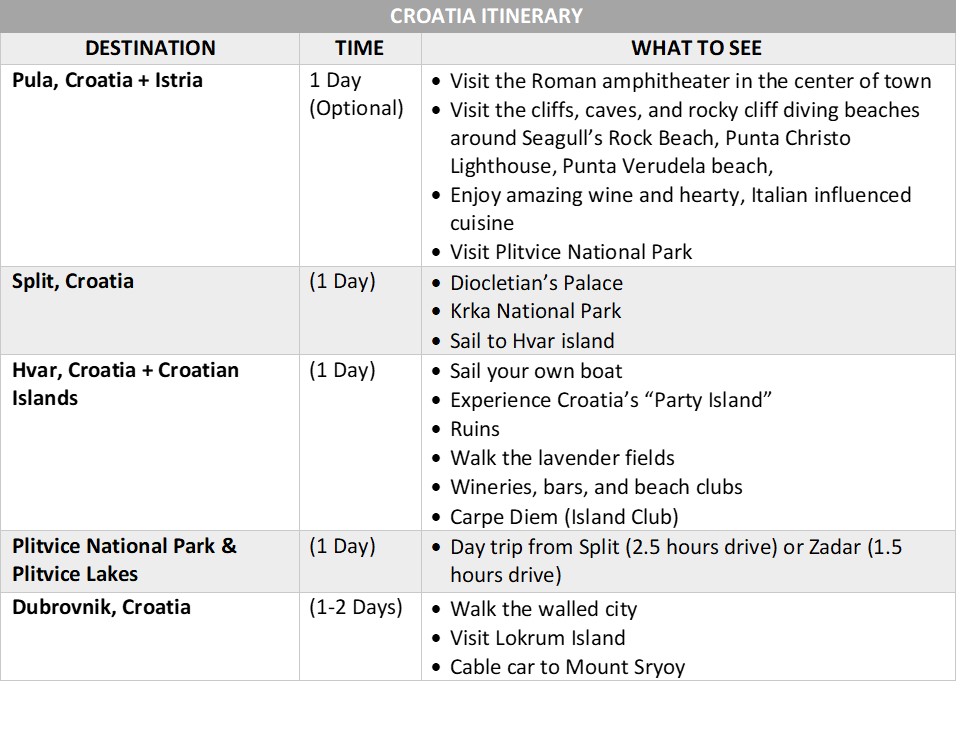
CROATIA TRAVEL INFO
HIGHLIGHTS OF CROATIA
- Cheap truffles
- Great wine in Istria inspired by the Italian style, and heavier, “Balkan style pasta.”
- Castles and medieval cities
- Rocky beaches with warm, clear water
- Never-ending nightlife
ESSENTIAL FOOD & DRINK ACROSS CROATIA
- Istrian cuisine
- Raznijci (meat skewers),
- Zagrebacki odrezak (veal stuffed with ham and cheese)
- Janjetina (lamb and herbs)
- Istrian wine
- Raznijci (meat skewers)
GETTING AROUND CROATIA:
Throughout Croatia, your travel mode of choice will be either by bus or rideshare. https://www.buscroatia.com/ is your best option for researching bus routes, and Rome2Rio.com is your second best option for researching routes, times, and prices. In both cases, book your ticket at the bus terminal as listed times can change and there are usually more routes and times listed than on these sites.
MOVING ON FROM CROATIA
From Croatia, I highly recommend going into Montenegro then Albania if you are on a shorter trip (less than two weeks). If you are traveling for longer (more than two weeks), travel by bus into Bosnia and Herzegovina (Mostar, then Sarajevo), up to Belgrade, Serbia, then back to Croatia, and continue south into Montenegro and Albania.
Leaving Croatia, you are perfectly situated in the Balkans to go anywhere – Slovenia, Bosnia, Montenegro, or a little further to Albania. If you travel to one of the adjacent, nearby countries (Bosnia, Montenegro, or Albania), traveling by bus is your best option, and you can research routes on Rome2Rio and book accordingly. Be sure to read the country sections in this guide to find out visa guidelines for each country.
For travel to Slovenia (Ljublana) and Serbia, a flight (~$90) is your best bet, as the bus to Ljubljana is 14 hours and the bus to Belgrade is 8 hours.
VISA: No visa is required for tourist visits less than 90 days – Croatia is not part of the Schengen zone
BUDGET/PRICES:
- €10-15 for a dorm bed in a hostel, ~25 per night for a private hostel room or budget hotel room
PULA, CROATIA
Pula is a low-key highlight of Croatia. Whereas the rest of Croatia boasts Game of thrones vibes and never-ending nightlife, Pula has a uniquely Istrian feel, heart food that combines Italian influence with Croatian traditions, fantastic wine (in the Italian tradition), low key beaches, and plenty of ruins.
Pula has been occupied by exactly 22 countries, and each has left its mark, although now the area feels very much like forgotten Italian countryside as the city was part of Italy up until 1942. Many of the residents do still speak Italian.
The colosseum that sits in the middle of town, a remnant of the Roman Empire’s occupation, is one of many ruins and archeological sites to explore. Last, there is a vast, still unmapped underground tunnel network beneath the city.
HIGHLIGHTS OF PULA, CROATIA
- Roman ruins and restored Roman empire era structures
- Rocky Beaches and cliff diving
- Food: Cheap truffles, great wine in Istria inspired by the Italian style, and heavier, “Balkan style pasta”
- Malvasia – The local white wine – normally the house wine
WHAT TO DO AND SITES TO SEE IN AND AROUND PULA
- See the Roman Coliseum (The Amphitheater), walking distance from downtown Pula.
- Pula – Built in the 1600s by the Venetians, designed by a French architect
- Roman Temple in Town
- The Triumph Arch
- Pula Daily Market from 7am to 3pm
- Archeological Museum of Istria
- Hop a bus and take the Nr1 line to Stone for 11 Kuna (1.5€) or take an Uber for 5€. Take the bus from the bus station is in front of Corso Kavana & Tapas Bar / Your Private Kingdom Cocktails.
- Go to the café in the campground behind the bus station in Stoja for decent Calamari (60 Kuna) and cocktails.
- Rt Kamenjak – rent a bike in the city at the last bus stop in the city of Premantura. Pick a bike shop at any place in that city.
WHERE TO EAT IN PULA
- Jupiter: Delicious, hearty, Istrian cuisine at an amazing price. Great wine selection too. The Local Wine (Malvasia), Istarski odrezak, and gnocci were the highlights
- Vodnjanka: Great seafood
- Parabuto: Call for reservations as it books up quickly each night
- Tappo: Next to the coliseum. Great for wine and tapas
- Hook & Cook: “Sea to table” restaurant
- Kod Kadre: Meat Restaurant. LOTS of meat
BEST CAFÉ’S IN PULA Have coffee in the main square, in view of a Roman Temple and Ruins. These were my favorite café’s
- Cjvajner Café
- Bistro Nonno
- Caffe Djana
GOING OUT AND NIGHTLIFE IN PULA If you’re planning to party, then you may want to skip Pula. This mellow town is wonderful, filled with great food and wine and plenty of rocky beaches, but the nightlife is scant compared to the rest of Croatia. However, if you plan to go out, these places are your best bet:
For the local scene, go out Thursdays. Start with drinking in the park until about 1 and then move to Uljanik, the local club that specializes in Electronica and Croatian Rock.
For more excitement, go out on the weekends. Pietras Julias – Pizzeria by day, club by night. The music can be a toss-up, depending on the DJ, but this is still the place to go during the weekend.
BARS AND NIGHTLIFE IN PULA
- The Shipyard
- Old City Pub
- Click (the James Joyce Bar)
- Enoteca Istriana – A bar near the Amphitheater that showcases regional wines
- Tapos – next to the amphitheater. Stylish and creative Tapas bar with a very cool/chill vibe
Drinking Tip: Check if the house wine is local; if it is, go for it. It’s usually delicious and always cheap.
PULA WALKING TOUR PATH
- Amphitheater
- Hercules Gate
- Arch of the Surgai (for a family that ruled for 1600 years, the family that won the battle that arose after the death of Julius Ceasar).
- Roman Mosaik – hidden underground House. Punishment of Darci
- Forum (City Center)
- Temple of Augustus
- Front wall from the Middle Ages
- Back Wall from The Temple of Dianna (Goddess of Hunting)
- Sidewall – 1970’s
WHERE TO SLEEP IN PULA
- Crazy House Hostel
- Antique hostel
OTHER TIPS ON PULA
- Summer is the best time to visit, and the most popular restaurants generally close between October and May.
SPLIT, CROATIA
Travelers should visit Split, Croatia, to explore Roman ruins, beautiful beaches, and amazing architecture.
Split is the second-largest city in Croatia, the main port on the Adriatic Sea coast of Dalmatia. The entire town is listed as a UNESCO World Heritage Site, and its most famous landmark is Diocletian’s Palace, a centuries-old historical site that was once one of the most important sites in the Roman Empire. Interesting fact – Roman Emperor Diocletian was the only Roman emperor to leave his station peacefully and avoid being murdered after. He did this by dividing the Roman Empire into fourths appointing a ruler over each so that they may quarrel with each other and leave him in peace. While Diocletian was executing this plan, he built the walled fortress of the palace in Split to retire peacefully and live out the remaining years of his life – as he did – and defend it if necessary. You will see when you arrive that this “palace” is the size of a small town and remained just as peaceful.
A guided tour will take you through its awe-inspiring corridors to some of the highlights, like its vast peristyle with an intricate mosaic floor and golden four-headed animal symbol of old imperial power.
Besides exploring this incredible palace, there are a number of other must-see sights in the area, like the ancient Titus’ Arch on its main promenade and Marjan Hill—a popular park that offers great views of the town.
Moderate to low-budget travelers can still enjoy Split by simply strolling along the seafront promenade where you will see all different kinds of cafes and shops, as well as many outdoor activities including volleyball, table tennis, star gazing or just hanging out on one of many sandy beaches. For those more interested in historical sites or some nightlife and partying, there are plenty of clubs where nightly events featuring both local DJs and international acts. The city’s Old Town is also jam-packed with restaurants offering some great Dalmatian cuisine; however, it can be for the more expensive side.
After soaking up the history and views of Split, hop a boat to the island Hvar to purely soak up the sun, party through the night, and captain your own boat…literally.
WHAT TO DO IN SPLIT, CROATIA
- Visit Diocletian’s Palace
- Enjoy a great, local lunch or dinner on the oceanfront boardwalk – aim for the north end for better prices.
- Specifically, eat at Konoba Matejuska or Hvar Harbor Restaurant
- Explore the city on foot and see all the sights of Split or with a free walking tour
- Visit Paskval Street in the old town for local jewelry and souvenirs.
- Visit the nearby Paklenica National Park for a little fun in nature (2 hours away)
- Take a boat to one of many Croatia islands like Korcula, Mljet and Vis for a day trip, or overnight to Hvar or Brac.
- Firstly, hop a ferry (1 hour, ~$8) to Hvar island to the sun and sip in a place that exists solely for pleasure. Hvar is a Croatian highlight not to be missed. After Hvar, continue by ferry (3.5 hrs, ~$30) from Hvar to Dubrovnik , or return back to Split and travel from Split to Dubrovnik by bus (~4 hours, ~$25)
HVAR, CROATIA
Hvar is a beautiful island in the Croatian Adriatic with amazing architecture, beaches, outdoor activities, and calm urban centers.
Hvar is a Croatian island located in the Adriatic Sea with some of Croatia’s most incredible scenery.
Hvar is also famous for its wines, handcrafted jewelry made out of volcanic stone & silver sea urchins. Tourists can visit different wineries to sample local wines by the glass. The island is very well known for its jewelry, made from the rare Lapis lazuli stone found in nearby mines all over the Balkans, which was highly prized by ancient societies as well as today’s fashion designers.
The vibrant nightlife scene is not necessarily as chaotic as other party islands, but it has its moments – especially if you make your way to the legendary “Carpe Diem.” There are plenty of bars and cafes that have live music every night of the week, and there is also an annual cultural event called “Cherry Night” held every July, during which Hvar celebrates the first sour cherries harvest every year. Local restaurants offer up amazing Mediterranean dishes that will make any foodie happy, including fresh fish and traditional Croatian cuisine like a filet of beef served with a delicious truffle sauce.
WHAT TO DO IN HVAR
- Visit the day bars, Hula Hula Hvar (bar) and Majerovica
- By night visit the never-ending party island of Carpe Diem
- Visit the beaches to the east and west of the main harbor. Beaches in the east rent kayaks for cheaper
- Rent a boat and motor you and your crew around the islands surrounding Hvar
WHERE TO STAY IN HVAR
- Villa Skansi
- The White Rabbit Hostel (Party centric)
MOVING ON FROM HVAR
After Hvar, continue by ferry (3.5 hrs, ~$30) from Hvar to Dubrovnik , or return back to Split and travel from Split to Dubrovnik by bus (~4 hours, ~$25)
DUBROVNIK CROATIA
Known as the Pearl of the Adriatic, Dubrovnik offers more sights and activities than any other city in Croatia. The “Game of Thrones” esque old town is a prime destination for anyone looking to explore some Croatian history and culture and enjoy some amazing views from up high. The city was nearly destroyed during the 1992 war. Since then, Dubrovnik was rebuilt impeccably, maintaining a look that conjures feelings of a “Slavic Venice” considering Dubrovnik (and much of Croatia) were once ruled by the Venetian Empire.
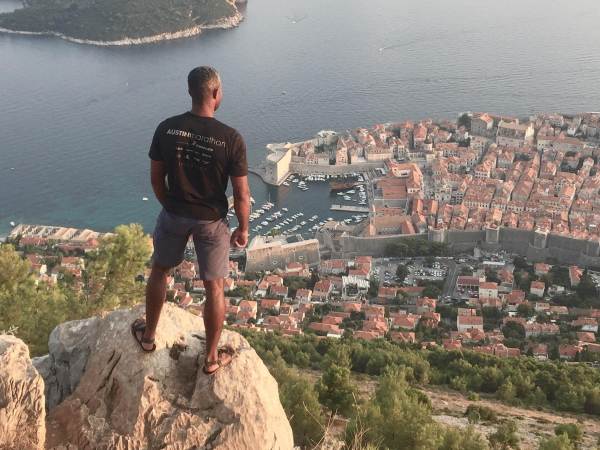
Along with walking along the old city’s high walls and exploring fortifications (complete with cannons), there are also plenty of beautifully secluded beaches not too far away by car or public transportation from Dubrovnik. Just minutes outside of Dubrovnik, you can take it easy lounging on a beach that feels worlds away from busy Old Town. There are smaller gems like Ston where you can see some beautiful medieval architecture, go diving off its limestone rocks nicknamed “The Rocks,” and peaceful Lokrum island, littered with tons of peacocks.
Top your Dubrovnik experience with a sunset towering over the city after a cable car ride up Mount Sryoy, and you cap an epic experience before moving on to even better Balkans destinations.
WHAT TO DO IN DUBROVNIK
- Walk Stradun street, the main street in the Old Town, flanked by Venetian style buildings and Game of Thrones backdrops, ending at the clock tower
- Walk the Old Town city walls
- Old Town sites to see: Rector’s Palace,
- Hop a boat to Lokrum Island for the view, the experience, and peacocks
- Cable car ride up to 412 meters tall Mount Srdj for a birds-eye view of Dubrovnik
- Do a Game of Thrones walking Tour
- Enjoy the beaches that flank the city
TIME NEEDED: 1 to 2 days
ISLANDS NEAR DUBROVNIK TO CONSIDER
- Korcula: Beautiful Venetian architecture and the childhood home of Marco Polo, Princeton Beach, and winemaking
- Elite archipelago of 14 small islands: orchards and fruit groves, white sands beaches, more beautiful architecture and each island has a character all its own
COOL NOTES ON DUBROVNIK:
- The Old Town was a set for Star Wars as well as Game of Thrones
GETTING AROUND DUBROVNIK: On foot is your best and easiest bet as the best parts of Dubrovnik are walkable
WHERE TO STAY: The Old Quarter is a highlight and a great place to stay but pricey. Budget travelers should aim for the surrounding neighborhoods of Pile, Ploce, and Lapad. I highly recommend Hostel Angelina , and there are plenty of options on Airbnb
After you’ve finished exploring Dubrovnik, you’ve likely reached the end of your adventures in Croatia if you are taking the “from north to south” route through the Balkans. If you are in the Balkans for less than two weeks, hop a bus from Dubrovnik to Kotor, Montenegro (~3.5 hours, $8), for insanely beautiful fjords, towering green mountains, and warm, deep blue waters.
If you are on the extended tour through the Balkans, hop a bus on to Mostar, Bosnia, to begin the tour through Bosnia & Herzegovina and Serbia.
BOSNIA & HERZEGOVINA
Ottoman food, culture, and heritage in the Balkans, with dense European history
Bosnia and Herzegovina deliver a unique experience in the Balkans thanks to heavy Ottoman influence in their culture, food, religion, and architecture, and due to the Bosnian history of war – from the assassination of Archduke Franz Ferdinand in Sarajevo, which started World War I, to the Bosnian War in the mid-1990s.
Bosnia used to be a small, medieval kingdom (and existed before Sarajevo); however, in the late 15th century, the Ottomans conquered the Bosnian kingdom, destroying much of the original history and leaving behind much of the culture and architecture we observe today.

Beyond the history-laden walking tours, Sarajevo delivers a rich experience of “Little Vienna meets Little Istanbul.”
Whereas other Balkan destinations deliver pure sunshine and pleasure, Bosnia and Herzegovina deliver culturally enriching and educational experiences in a way any travel will appreciate.
INTERESTING BOSNIAN FACTS: WHY THE BOSNIAN COASTLINE IS ONLY 17 KM LONG
Bosnia &Herzegovina have only 17km of coast: During the period of the Ottoman and Venetian empires, the Venetians controlled present-day northern Croatia. The Ottomans controlled Bosnia (without a coast at the time). Croatia (south of Bosnia) was the Dubrovnik republic. The Dubrovnik republic agreed to give the Ottomans the 17km of coastline to aid trade via access to the oceans, under the conditions that they would fight the Venetians if they ever attempted to invade. This is why present-day Bosnia has this coastline

BOSNIA AND HERZEGOVINA ITINERARY

BOSNIA & HERZEGOVINA TRAVEL INFO
- Mostar: Cliff diving and a small-town feel
- Sarajevo: Vienna meets Istanbul, intense history (Balkan wars, WW2), unique foods,
ESSENTIAL FOOD & DRINK OF BOSNIA & HERZEGOVINA
- Dolma: Served many ways, but stuffed in onion and stuffed in peppers are the most common ways.
- Bey’s Soup or Begova Corba – slow-cooked chicken or beef and vegetables make a thick, slightly creamy, but extremely (simply) delicious soup.
- Klepe: Bosnian meat dumplings served with a creamy yogurt-like cream infused with garlic
- Cevapi: Simple, grilled rounds of minced meat served with a traditional bread somewhat like pita. Simple, yet filling. Good for an uneventful but tasty lunch
- Burek: A savory pastry filled with cheeses, meats, spinach, and the like (comes from Turkey and was brought to the Balkans by the Ottomans). Try it for a quick breakfast.
- Baklava: A layered pastry of flaky bread covered in honey and sugary sweet sauce. Common in many Middle Eastern countries and Greece. Absolutely delicious! Similar to everywhere else in the Balkans and the Middle East, it’s no less enjoyable here. Perfect with a cup of coffee
VISA: Most nationalities can stay for 90 days free without a visa but need to have at least 6 months validity on their passport on arrival
BUDGET/PRICES: $45/ Day for hosteling backpackers and ~$75 for budget travelers staying in budget hotels
CONNECTIVITY: HT Eronet SIM cards for 3G coverage
MOSTAR, BOSNIA
The famous Old Bridge, built-in 1566 over the Neretva River, is one of Mostar’s most recognizable features. It was destroyed in 1993 when Croat forces bombed it in order to create a dividing line across the Balkans. Reconstruction began in 2002 and ended ten years later; today, it is again one of Bosnia and Herzegovina’s top tourist attractions.
But there isn’t just cultural significance here–this city also has plenty of natural beauty: nearby peaks can reach 3,000 meters high (10,000 feet). Take a hike through Medjugorje (30 minutes away) or its surrounding hillsides for some epic views that are rarely seen by anyone but locals–as well as perhaps sightings of wild animals like deer.
Also, check out Kravice waterfalls – some of the tallest in the Balkans at 80 feet tall – between Split, Croatia and Mostar, 45 minutes away from Mostar. There is a swimming pool at the foot of these falls, and you can take a walk along a path that goes behind them to see where it all comes from. Many day hikers picnic along the shores and enjoy the paradise.
If you need one more destination around Mostar and in Bosnia, consider experiencing some local cuisine on Pliva Lake’s shore, featuring plenty of fresh fish and other delicacies, but expect a 2+ hour drive to get there.
The Balkans are known for their hospitable locals–and this is no different in Mostar! Take the time to talk with some of the friendly people who help run shops and cafes. You’ll be able to get a taste of local life that you wouldn’t otherwise see as a tourist.
HIGHLIGHTS OF MOSTAR BOSNIA
- The Stari-Mos Bridge: The iconic bridge, the “stari most” (meaning “old bridge”), has existed since the 1400s. The bridge was used to connect the commerce and residential neighborhood sides of the river. Now, you can jump from the Stari Most after getting certified by the local coaches – or jump from the lower platform. During my time in Mostar, Red Bull was running a cliff diving competition from the Stari Most Bridge.
- Terrace café by Day and Ali Baba disco by night
- Central mosque
- Top of Franciscan Church
- Heavy Ottoman influence
- Fantastic rich food with strong Turkish notes
- Do the free Mostar walking tour
AROUND MOSTAR
- Kravca Waterfalls
- Roman Ruins
- Pocitjeli: A medieval fortress and walls surrounding a town that dates back to 1444. 30 minutes from Mostar.
TIME NEEDED: 1 Day for Mostar, an additional ½ day today for each day trip out of town
WHERE TO EAT
- Restaurant Sadrvan – a plethora of local, Bosnian cuisine at great prices despite the touristy location and feel. Perfectly situated next to the UNESCO heritage bridge ” Stari Mos.”
GETTING TO MOSTAR
- From Dubrovnik or Split, go to Mostar, then Sarajevo, then depart to Serbia (east) or Montenegro (South)
- Traveling by bus, booking on the GobyBus site is your bet
The capital city of Bosnia and Herzegovina is one of the most varied and historically significant cities in Europe. The heritage of the rule of the Ottoman empire remains clear in the cuisine, architecture, and half of the city’s downtown. Museums host the memories of the Yugoslav wars, a product of the splitting of Yugoslavia, as well as the assassination of Franz Ferdinand by student revolutionaries that kicked off World War 2.
The highlight of the Sarajevo is absolutely standing at the border of east meets west in the downtown border between little Vienna and little Istanbul.
HIGHLIGHTS OF WHAT TO DO IN SARAJEVO
- Monday night party at the “unofficial bar.”
- Walking tour (hopefully with Neno)
- A museum (there are so many)
- Crimes against Humanity Museum (I had no idea of the atrocities, genocide, and torture that took place in Bosnia & Herzegovina
- Sarajevo Tunnel
- Latin Bridge – site of the assassination of Franz Ferdinand and the start of WW2
- Walk the Main Street
- “The cultural meeting point” is the line between mini Istanbul and mini Vienna
BEST RESTAURANTS IN SARAJEVO AND WHAT TO EAT:
- Dalmatinska.
- Amazing Burgers
- Walnut Rakija Aperitif
- Stuff peppers and Zucchini
- Gastro Pub Vucko
- Sarajevo eating tip: Stick to the Old Town for cheap, authentic, and delicious food
GETTING AROUND
- Unofficial shuttles 8, 12, 5 for 25 Euros or 50 Marks
WHERE TO SLEEP
- Hostel Kucha
- Doctors Hostel – comfy private beds, clean facilities, and a relaxed yet welcoming atmosphere
- 6:00AM bus to Belgrade from the east bus station
A proud country with a very Eastern European feel, robust history, and intense nightlife.
Serbia is a Balkan country that, through the countless empires and booms of tourists, has been able to hold on to its history and culture more than its neighbors. At times Croatia feels consumed by summering Europeans and GoT tours, and other cities can feel more Ottoman than Balkan at times. Serbia, on the other hand, feels 100% Slavic and 100% Serbian in a unique way for the Balkans. Serbia offers travelers a chance to experience the Balkans untouched, so it is nearly impossible not to have an amazing time during a trip there.
A uniquely Serbian experience awaits in Belgrade and beyond – from Rakia bars to floating nightlife to college-style warehouse parties, then waking the next day to absorb and discuss culture; Serbia will surprise you with its variety and uniqueness.
Serbia, formerly part of Yugoslavia, has a long tradition of hospitality and welcoming people epitomized by the Balkan proverb: “Whoever visits Serbia in wintertime knows what hospitality is.”
If you’re looking to get away from the tourist traps that can sometimes make traveling feel less personal, Serbia is one of the best places to go.
SERBIA ITINERARY
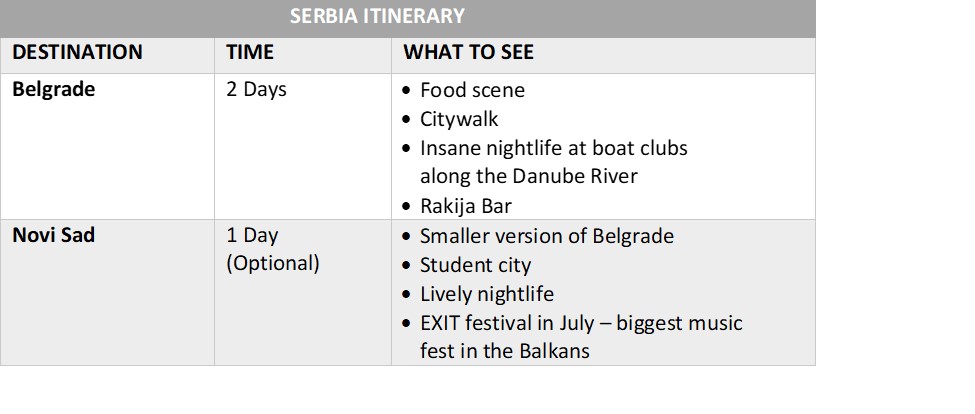
SERBIA TRAVEL INFO
- Insane Nightlife
- Deep History
- Experiencing a Slavic country that remains very true to its culture, unbent by tourism and other invaders
TIME NEEDED: 2 Days
- Ćevapi
- Karađorđeva šnicla
- Punjena Paprika
- Čvarci
VISA: Serbia is not part of the Schengen zone and offers a free 90-day visa for most visitors
- Hostel: $12/night
- Budget breakfast: $1
- Diner or Café Meal: $5
- Coffee: $1.50
- Beer: $1.50
- Inter-city Train: $4.50
- $60 for budget travelers staying in budget hotels
CONNECTIVITY: SIM Card from VIP, Telenor, or MTS for best 3G connectivity
BELGRADE, SERBIA
Belgrade has a rich history, ranging from Roman times to the Ottoman occupation and Serbian Christianization when Serbs converted to Orthodox Christianity in order to counter moves by Catholic clergymen coming from Rome. It was later captured by Turks in 1459, conquered briefly by Habsburgs in 1688, taken by Austrians in 1717–39 during the Great Turkish War, when it was known as “Belgrad” (Turkish: “Novo Brdo”), and liberated by the Serbian army in 1876 during the Serbian–Ottoman War of 1876–78.
Belgrade was also the capital of several Yugoslav states until the dissolution of the former Yugoslavia in 1992. Belgrade is still the capital and largest city of Serbia. It is the only major Serbian city with a population above one million.
- Do the free Belgrade walking tour, hosted by Hostel Hedonism
- Visit the Belgrade Fortress and hang out at the Park in front of it
- Visit old town (Zaman)
- Visit Sajmiste (remnants of a concentration camp)
- Walk Belgrade’s “Stari Grad” (Old Town), seeing the main walking
- The main pedestrian walk of Kneza Mihaila and plenty of places to eat, drink, and people watch
- Visit Republic Square, at the end of Kneza Mihaila
- The Belgrade Fortress, which has never been overtaken
- Kalemegdan Park surrounding the fortress, which includes the military museum and a zoo
- Walkthrough Skadarjila, Belgrade’s most stylish and bohemian neighborhood
- Enjoy the never-ending nightlife at the riverfront bars and clubs
- Visit Zeleni Vanac farmers market
- Visit the Nikola Tesla Museum
- Visit the neighbors of Zemun and Novi Beograd for a taste of what local life is like outside of the city center.
- Noteworthy landmarks to see: National Assembly, Church of St Mark, Church of St Sava
- Belgrade is the largest city in the Balkans
- The Belgrade fortress has never been captured by a rival
TIME NEEDED: 1-2 Days
ESSENTIAL FOOD, DRINK, AND WHERE TO EAT
- Fabrika (Restaurant)
- Leila Records (Radio-Televizija Beograd) – A café, bar, and record located a 10 minutes walk from the tourist strip but authentically (hipster) Serbian.
- Go to new Belgrade or Zamun for food
- Cafeteria (coffee bar in tourist center)
- Fabrika Restaurant
BARS AND NIGHTLIFE
- Go to Passenger Café (have a Kas beer) next to Hedonism Hostel
- Rakia Bar – The name says it all!
- Splavoli (floating clubs built into houseboats on the Rivershore)
- Drugstore (Warehouse District – Bus 16), Old factory clubs complex
GETTING AROUND: Most of the parts of Belgrade you’ll want to see are situated in the downtown and historic areas, so you’ll be able to explore the entire city on foot
- Bongo Hostel
- Hostel Hedonism
- Take the train (11 hours) or fly back to Podgorica, Montenegro and continue on the Balkans backpacking route.
Novi Sad is the second-largest city in Serbia. It’s known for its significant role at the end of World War I, when it was occupied by Serbian troops and became an important anti-Bolshevik base. This great deed earned it a reputation as a Christian bastion that turned out to be undefendable against merciless Ottoman forces.
The dynamic atmosphere attracts many visitors and workers from abroad, who come to experience this Mediterranean Balkans feel during their Balkans tours. Novi Sad is also famous for its thriving art scene as well as the annual jazz festival attracting celebrities and musicians from around the world every October.
As one of the youngest European capitals, Novi Sad’s restaurants, bars, galleries and concert halls all reflect its cultural diversity, which in turn gives the city an alluring nightlife that is often described as unique.
Novi Sad’s strategic position on the Danube River makes it a natural hub for inland waterway transport, and there are good road connections to all major cities around the Balkans.
- Smaller version of Belgrade
- Student city
- Lively nightlife
- EXIT festival in July – biggest music fest in the Balkans
WHAT TO DO IN NOVI SAD
- Visit the Petrovaradin Fortress
- Walk Dunavska pedestrian street
- Enjoy peace and quiet in green Danube park
- Visit the Museum of Vojvodina which documents 8,000 years of history in the region
- Enjoy the architecture: Name of Mary Church, Novi Sad Synagogue, Vladičanski Dvor (the Bishop’s Palace), St. George’s Cathedral
- Enjoy Strand, the sandy beach on the shore of the Danube
- Visit the Matica Srpska Gallery housing 7,000+ pieces of Serbian art from 1500 to present
- Visit Fruška Gora 30 minutes from town, a National Park of vineyards, pastures, and woodlands that was the shores of an island in the Pannonian Sea 90 million years ago
- Drive 35 minutes away to the vineyard laden small town of Sremski Karlovci
TIME NEEDED: 1 day
MONTENEGRO (HIGHLIGHT OF THE BALKANS)
The southernmost fjords in Europe tower above pristine, beautiful waterways and castles
Montenegro is a small yet intensely beautiful country dominated by the southernmost fjords in Europe, waterways, and towering mountains with centuries-old, medieval-style cities dotting in between. Montenegro’s views and stories feel unreal, whether walking a cobblestone road in the afternoon, taking a cheap boat tour through the waterways with the captain narrating the hidden history, or hiking to a monastery.
For many travelers, Montenegro is the highlight of their Balkan itinerary.
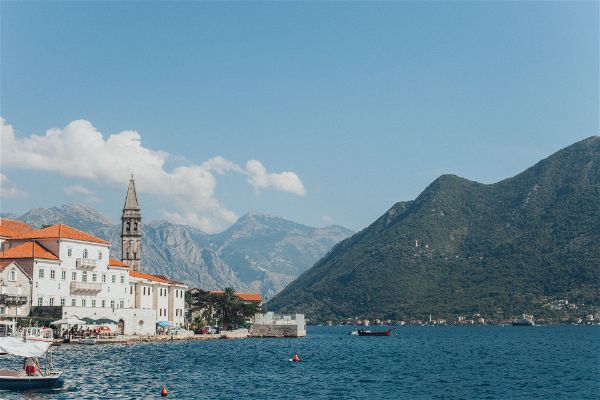
You’ll find the popular sites, Kotor and Budva, frequented by cruise ships and locals (Croatians and Serbians). Montenegro delivers all of the enjoyment of Croatia at about 1/3 the price.
MONTENEGRO ITINERARY
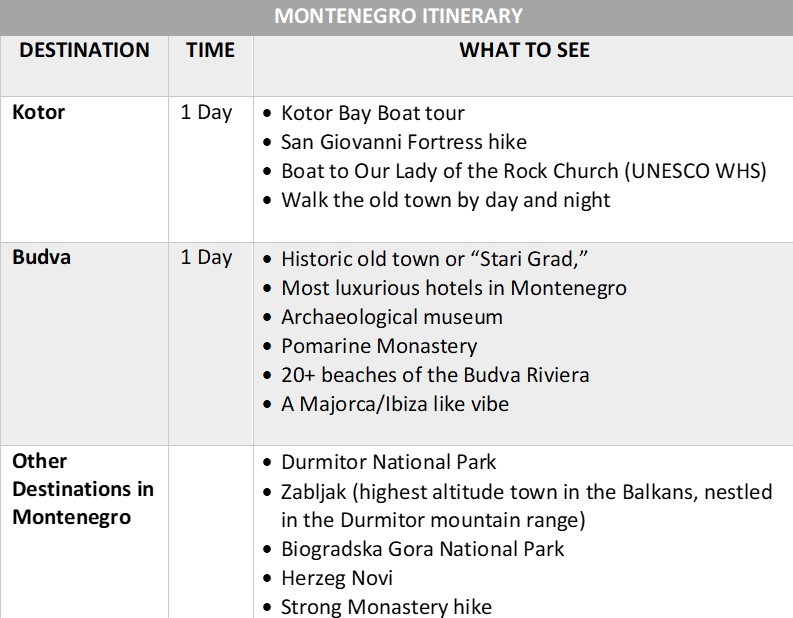
MONTENEGRO TRAVEL INFO
TIME NEEDED: 2 to 3 days for the essentials
- Moussaka (in general)
- Musaka od Ketola

GETTING TO MONTENEGRO
- International travelers coming from outside the Balkans will need to fly into Dubrovnik and then bus to their destination in Montenegro.
- No matter where you come to Montenegro from (within the Balkans), traveling by bus is your best bet.
- From Dubrovnik to Kotor, take a 3-hour bus ($10) .
- From Albania, bus from Skoder (3 hours) or Tirana (6 hours).
- From Mostar, Bosnia, or Sarajevo, taking the bus will be your best option.
- From Belgrade, take the train from Belgrade to Podgorica, and hop a bus from Podgorica to your next destination in Montenegro
VISA: Montenegro is not part of the Schengen zone, and a free 90-day visa is offered on arrival
CONNECTIVITY: Telenor SIM Card best for 3G access countrywide
- Hostel: $12/day
- Transportation: $7 between cities, most cities are walkable and need no transport
- Tours: $35 for Kotor Bay and Lady of the Rocks Tour
- $75/night for budget travelers option for hotels
KOTOR, MONTENEGRO
Kotor is one of the most picturesque cities in Montenegro and a popular destination to visit for people all over the Balkans and beyond!. It’s located on a dramatic bay where the Adriatic crashes into towering limestone walls, forming cliffs and caves. Kotor is home to UNESCO World Heritage Site Old Town, which begins at the foot of Stari Grad (Old Town) and ends at Lovrjenac Rock in the center of the bay, and is considered one of the most beautiful places along the Adriatic Coast. Nearby seaside villages include Tivat, Budva, and Sveti Stefan. With its beautiful beaches, magnificent fortresses and interesting history, Kotor is perfect for travelers of all ages.
Roman Emperor Augustus spent time in Kotor in the 3rd century BC and praised it as a “city defended by strong walls” back then.
If you are planning a Balkans itinerary, be sure to put Kotor on your list. The beauty of this coastal town, as well as its historical significance, will not disappoint.
HIGHLIGHTS (BLURB)
- Kotor Bay Boat Tour
- Visit Our Lady of the Rock Church (UNESCO Site)
- The Kotor Bay Boat tour (€35) is a must-do. 3 hours on a boat spent cruising the crystal clear, blue waters up to the border with Croatia, visiting some interesting sites in between (includes lady of the rock church, underwater tunnel)
- Beaches abound around Kotor , walking distance with water so warm and calm. I went for midnight, moonlit swims every night in Kotor.
- Two fishermen found a picture of the Virgin Mary on a rock in the middle of the water. It was gone the next day but reappeared a week later. The locals decided to build a church on the rock but needed to build an island first. For 100 years, sailors in the bay would drop small rocks from their boats each time they went out, and the town sank enemy ships over the rocks to build the island. Today, the church and the island are UNESCO world heritage sites.
- Old Town and the Castle: The old town is an ancient, walled complex and castle that crawls up the steep mountain behind the city. This complex houses most of the nightlife in Kotor and caters to partiers and backpacker life.
TIME NEEDED: 1 to 2 days for the essentials
GETTING THERE: The destinations in Montenegro are close together, so, anywhere in Montenegro you go, travel by bus. Rome2Rio will be your best tool for planning bus travel, but be smart and book at the train station beforehand.
GETTING AROUND: Kotor is a small and beautiful town that is tightly packed and very walkable. Plan on just walking to get anywhere you’d like to go.
WHERE TO SLEEP IN KOTOR
- Hostel 4 U Montenegro : A hostel on the beach and an anomaly. When I stayed, they had 2000+ reviews and a rating of 9.9 out of 10. On arrival, you won’t check-in. Instead, you’ll be handed a shot of homemade Rakia.
- Old Town Hostel
- Use www.getbybus.com to find your bus out
LOGISTICS VISA: Montenegro is not part of the Schengen zone, and a free 90-day visa is offered on arrival
BUDGET/PRICES: (1 NIGHT ACCOMMODATION, 1 MEAL, 1 BEER)
NOTES : Next to the old town is Kotor’s only shopping complex with a grocery store and anything else you’ll need
BUDVA, MONTENEGRO
Budva is a coastal town with great nightlife and vibrant atmosphere, long sandy beaches, beautiful residences, hotels and hostels. Its off-season city is charming as well – not too big yet numerous things to see and do. The city’s old town centers around its signature pedestrian street, which is the center of activity for visitors, lined with shops, restaurants, bars, and cafes. The Old Town is bordered by the site of a 14th-century Franciscan monastery on one side and a 17th-century Orthodox church on another. A walk through this picturesque area also gives a breathtaking view of mountainside villages and the shores leading up to the Adriatic Sea.
- Soak up the sun on the Budva Riviera
- Walk the Budva Old Town
- Visit the Cathedral of Saint Stephen
- Sail the bay and view Kotor fjord
GETTING AROUND: Just like Kotor, Budva is tightly packed and walkable, so plan out using your feet to get around for the best experience
Undiscovered and packed with experience: the Albanian Alps and the Albanian Riviera are Balkan highlights
Albania is one of the highlights of the Balkans – “young,” undiscovered, and filled with some of the best beaches (the same coastline as you’ll find on the Greek Riviera) and Alpine views in all of Europe, at a travel price that is easily the lowest in the Balkans and Europe.
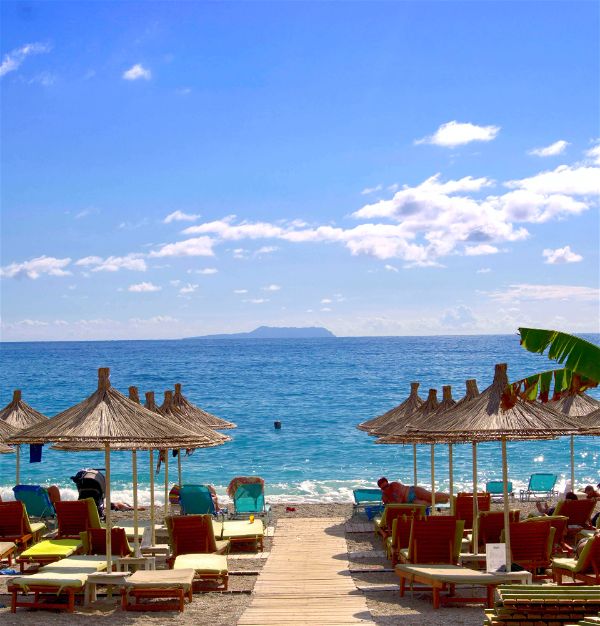
Albania opened up to the west and abandoned communism much later than its neighbors, leaving Albania with a very young and “new” and somewhat adventurous feel as a country. Though traveling through Albania can be slightly more difficult than its neighbors, the natural beauty you get in return makes Albania a highlight of the region thanks to two things – the Albanian Riviera and the Albanian Alps. As you travel through this country, you will experience the highs of travel and the calamity of “adventure travel.” Some parts will feel like the Greek isles and riviera or Alps of other countries, while other places will feel as chaotic as urban India – in all situations, though, the experience is exquisite and worth the trip.
The Albanian Riviera is the coastline shared with Croatia (to the north), but more interestingly, it is shared with Greece to the south. This is the same immaculate beaches and coastline that would cost 5x as much to travel in Greece, but (in Albania) you experience it with a more authentic, less touristy feel, and without the crowds.
The Albanian Alps are tucked just across the Albania-Montenegro border, near the Albanian towns of Theti, the Valbona River Valley and deliver sights as amazing as the Swiss Alps and Dolomites, surrounded by charming rural towns, yet just a few hours drive from warm beaches. All of this is still under traveled, undiscovered, and perfect for budget travels.

INTERESTING FACTS ABOUT ALBANIA
- Albania was the first atheist country in the world in 1967
- The clock tower in Tirana has been rebuilt several times because, at the start of wars, it was usually the first thing destroyed, and after wars, it was usually the first thing rebuilt
- Albania has over 170,000 bunkers strewn throughout the country
- Albania is the international name based on the first tribe that was found here.
ALBANIA ITINERARY
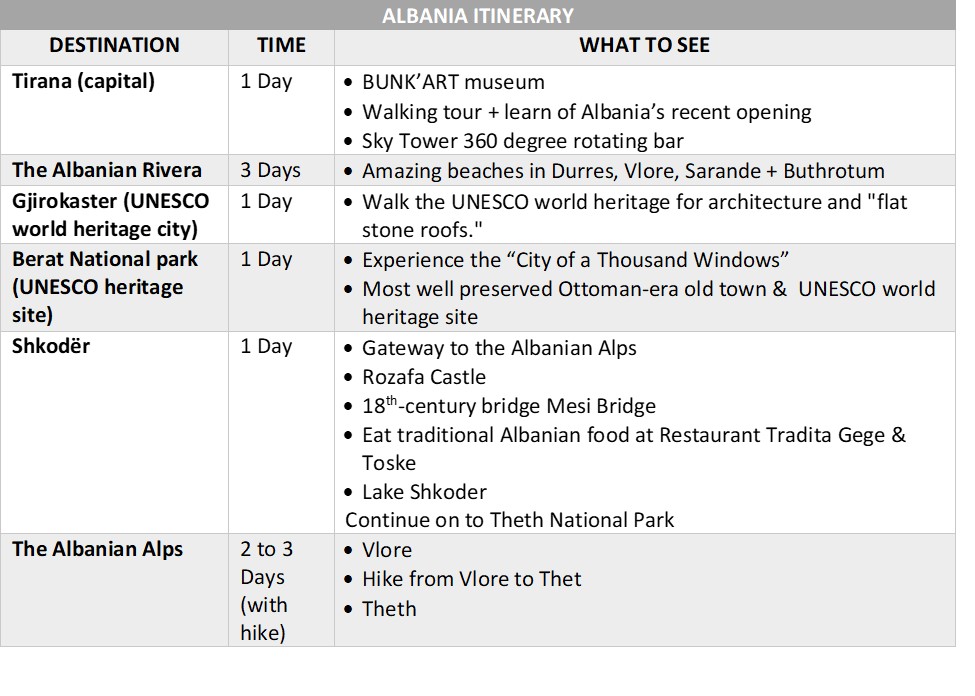
Consider Albania route –> Tirana –> Shkoder –> Albanian Alps –> Albanian Riviera (Vlore, Sarande, Himare) –> Berat –> Gjirokaster –> Tirana to do the adventurously strenuous experiences (trekking) first, and end the trip on the beachy riviera
Or reverse the route if you would prefer to get adventurous first and then end on the beach.
HIGHLIGHTS ALBANIA
- Tirana (capital) and learning of the country’s history
- The Albanian Riviera and exquisite beaches for insanely cheap
- Sarandë (Best coastal destination)
- Rough camping on the beaches of Albania
- Shkodër
- Berat and Berat National park (UNESCO heritage site)
ESSENTIAL FOOD & DRINK IN ALBANIA
- Byrek: Savory pastry
- The Mediterranean Staples: Olives, cheeses, fresh fruits, fresh vegetables, baklava, byrek
- Stuffed Peppers
- Fried Eggplant
WHEN TO VISIT: Shoulder seasons of April to June and September to October are best, with great temperatures and thin crowds. July and August are great, too but expect heavier crowds.
GETTING THERE: From within the Balkans, international busses connect to Tirana from Montenegro, Kosova, Greece, and Macedonia. From outside of those countries, expect to fly in. Momondo is your best bet for finding cheap flights.
GETTING AROUND: Albania is small and easy to get around. You can travel from north to south in a single day, all via public transport (no need to rent a car). Fulgoni and busses are your best options for travel.
Fulgoni are shuttle buses or minivans that run between cities in Albania. They’re accessible and cheap but often only leave when full. To find them, it is best to ask your hostel or hotel where to find the appropriate one for your next destination.
Long-distance busses are another great option, more reliable, easier to book, and my preferred option.
If you are pressed for time and don’t want to waste time sorting transport, consider a tour from G Adventures or Intrepid Travel.
MOVING ON: From Albania, take a cheap flight into Bulgaria (Sofia and Bansko) for great food adventures, a Bohemian café scene, low-key yet engaging nightlife, and some great day hikes.
VISA: 90 days free with no visa required for citizens of EU countries and 59 other countries, including the US, Australia, Canada, and the United Kingdom ( Source )
ALBANIAN BACKPACKING BUDGET/PRICES: Albania is the cheapest country to travel in the Balkans
- $35 per day total
- Hostel: $11/night
- Good meal: $5
- Transport: $75 to $100 for bussing the entire loop of Tirana to the Riviera to the Alps
WIFI AND CONNECTIVITY:
- Vodafone SIM for 3G is best, also Eagle Mobile, Telekom
- Larger, chain cafes will have wifi, don’t expect strong wifi in small cafes
RECOMMENDED TOURS: (G Adventures, Intrepid, Contiki)
TRAVEL INSURANCE: Albania is adventurous enough that I recommend travel insurance, and Safetywing and World Nomads both suffice
Tirana is the Albanian capital and full of history in Tirana, dating back to about 3000 BC. Tirana was once the crown jewel of the Balkans and was considered Europe’s newest and most modern city. But the Balkans lost a lot of its charm following World War 1 which destroyed major portions of the Balkans, including Tirana and many other cities in Albania.
After the war, a communist government was established, and Albania became a communist state, isolating itself from not but the west, but even China, the Soviet Union, and neighboring Yugoslavian countries.
In 1992, Albanians voted to end communism and instead embrace democracy. Since then, Albanian has been gradually reopening and recovering from decades of isolation.
Tirana is the perfect place to learn about, experience, and absorb this history from walk tours, wherein guides share the history that they lived through, museums, and daily life that has eery remnants of a time passed.
- The City Square: Has a plant from every region of Albania and has 100+ small fountains, so the square stays cool in summer.
- The National Museum located next to the square
- A Free Walking Tour for a firsthand account of Albania’s history
- Block Ware (former place of the elite – now a place to go out)
- Sky Bar – a bar that rotates completely every hour, giving a 360-degree view of the city
- The Bunker Museum
- Visit the Bunk’Art 2 museum: A nuclear bunker turned Albanian dictatorship history museum.
- Take a free walking tour to discover the history
- Visit the National Museum
- Visit Skanderberg Square
- View Et’hem Bej Mosque in the Square
- Cable car up to Dajti Mountain for sunset after bussing to Daytime National Park for a panoramic view of Tirana
- Visit Tiranas New Bazar for food and people watching.
RECOMMENDED RESTAURANTS IN TIRANA
- Oda Restaurant
- Sofra Beratase Restaurant
- Head to Himare, on the Albanian Riviera
- By bus from the south bus station (1000 Leke) at 5:45, 6:15, 1:00pm, 6:00pm
- From center to bus station ~700 Leke
RECOMMENDED TOURS
- Any free walking tour
- The Bunk’Art Tour
The gateway to the Albanian Alps and an ancient city that was home to Illyrian tribes that ruled Albania, Kosovo, Montenegro, Croatia, and Bosnia and Herzegovina. Later, this city was ruled by the Serbs, Romans, Byzantines and Ottomans, and the remnants of these cultures still remain today.
A prep town before heading into Theth and the Albanian Alps. One of the oldest cities in the Balkans.
When not prepping gear and planning transport for the Theth to Valbona hike, walk the city streets to absorb the vibe. The main street (G’juhadol), the shopping street (Kole Idromeno) are great places to walk through.
- Hike up to Rozafa Castle
- Prep for the Theth to Valbona hike (food and equipment are best gathered here)
TIME NEEDED: 1 Night
SHKODER LOGISTICS NOTES
- Plan on going to the SPAR Market in town to stock up on everything you’ll need for the hike
- Bring enough cash for your time in the Alps because there is no ATM in Shkodra.
- Transport to Theth will be best arranged through your hostel or hotel, including transport back from Valbona.
THE ALBANIAN ALPS
The Albanian Alps is a high-altitude mountain range in southern Albania, with the highest peak, Mount Korab towering at 2,764m above sea level. The range spans 100km from north to south and rivals the beauty of the alpine regions elsewhere in Europe, making for the same amazing outdoor experience at a fraction of the price and with a fraction of the crowds.
You already know Albania is already a country that has maintained its beauty with charming rural villages untouched natural landscapes. A relatively small Balkans country, to begin with, having an area of only 28,750 km2, the Albanian Alps continue to be an unexplored gem tucked in the northeast corner of Albania. The Albanian Alps stand as a national park immaculate and pristine trekking and hiking by summer and international ski resorts to explore by winter. Throughout your wanderings here, you’ll find scenic views of snowy peaks surrounded by green pine forests as backdrops to crystal blue watering holes and waterfalls. Tourists choosing to hike and make the most of their time in the region here, around Theth and Valbona, can choose from different levels of difficulty in treks, from easy to difficult, making the adventures here suitable for everyone.
The Albanian Alps offer many activities beyond just hiking, such as sightseeing, kayaking, horse trekking, and skiing. This destination is a perfect escape where you will get to travel throughout the Balkans but have the feeling that you are far away from civilization.
An Alpine Mountain town with hiking as its main draw, and that’s plenty.
- The Theth to Valbona hike through the Albanian Alps (7 hours)
- Hike the trail to Danielle (5 hours)
- Hike to the Blue Eye (7 hours) + Grunas Waterfall on the route
TIME NEEDED: 3 Days
The destination city of an amazing, 7-hour one-way hike from Theta to Valbona. You will complete the hike with a walk through the town with a beautiful view on both sides, ending with dinner at your guesthouse.
Be sure to go out after sunset and take in the night sky. Then rest up and prepare to go back to Shkodra the following day.
- Arrange transport back to Shkodra through your guesthouse for the following day.
- The travel back will require a furgon from Valbona to Fierce, a ferry across Loman Lake to Koman, and another Furlong from Koman to Shkodra.
A central town on the Albanian Riviera surrounded by beautiful beaches and a great base for comfortably exploring as many as your trip allows.
- Gjipe Beach (accessible by kayak)
- Jala Beach (accessible by kayak from Himara)
- Filikuri Beach (accessible by rented kayak)
- Rent a kayak and explore the coastline by day, visit the beaches and coves that dot the shoreline.
RECOMMENDED RESTAURANTS & ESSENTIAL FOOD & DRINK
- Sunset Restorat Bar (more for sunset than the food)
UNESCO World Heritage site and city of 1000 windows and home to Ottoman era homes and fortresses on the route to the Albanian beaches
- Berat Castle
- Holy Trinity church, and Byzantine church from the 13th century
- Walk the Mangalem Quarter (home to Muslims) and Gorica Quarter (home to Christians)
- Make the hour-long hike up the hill behind the Gorica quarter for sunset
- Walk Bulevardi Republika just after sunset to experience “xhiro hours” when friends and family come out to walk and socialize
- Two buses daily run from Berat to Gjirokaster from the Berat Bus Terminal, one at 8 am and the second at 2 pm for ~200 LEK. The ride will be ~3 hours.
GJIROKASTER
A UNESCO world heritage site known as the “Stone City of a Thousand Steps.” One of the Balkans’ oldest cities, Gjirokaster, is worth a visit for its architecture, ancient ruins, and abundant Ottoman-era houses.
WHAT TO DO AND SEE IN GJIROKASTER
- Gjirokaster Castle, a beautiful Ottoman-era fortress sitting atop a hill
- Gjirokaster Museum
- Explore the hundreds of bunkers in Gjirokaster
- Gjirokaster Old Bazar
- Do the Free Walking Tour hosted by Stone City Hostel if staying there
- Hike to the Ottoman era Ali Pasha Bridge
WHERE TO STAY
- Stone Coty Hostel
Calm, quiet, and potent for foodies and lovers of pub culture
Quaint, calm, and charming in a peaceful way, Bulgaria is a wonderfully relaxed destination in the Balkans that is less about natural beauty, architecture, and nightlife than its neighbors and more about food and absorbing culture by osmosis. Additionally, you will constantly be surprised by the history, culture, and cuisine of Bulgaria that you’d never even heard of. At night, the restaurants and nightlife make Sofia and Bansko places that a nomad could hang their hat.
Food in Sofia, Bulgaria is surprisingly amazing ; a strong locavore food scene encourages restaurants to commonly experiment with the foods of the region in a gourmet way. The yogurt you commonly eat started here. My favorite meal in Bulgaria was local wild boar that fed on a particular berry in the forest, served with greens and salad foraged from the same forest, paired with a wine made from the same plucked berry from that forest, and finished with ice cream made from the same berry – and this was a standard meal for my entire time in Sofia for cheaper than an average meal in a western European country.
Bulgaria’s history can be explored with day trips (to Plovdiv) and walking tours wherein you’ll discover ruins and remnants from the Ottoman Empire’s former footprint, as well as how the Bulgarians protested the deportation of Bulgaria’s Jews to concentration camps and came up with a scheme to save the Jews in Bulgaria.
Bulgaria’s pub and local bar is an adventure on its own. Whereas Croatia’s nightlife rivals Barcelona’s, Bulgaria’s dark pubs seem reminiscent of Game of Thrones pubs. As contrasted and low-key as the vibe is, the locals are welcoming, and a few beers on the town in Sofia can be a great time.
All in all, Bulgaria is a less exciting destination, but calmly pleasing in many ways and a great way to end a trip through the Balkans.
BULGARIA ITINERARY

- Shopska Salad
- Tarator Soup
- Shkembe Chorba
- Chushka Biurek (Stuffed Peppers)
- Madradjisko (Egg & Cheese in Clay Pot)
- Palačinka (Bulgarian Pancakes)
BULGARIAN VISA: You can travel in Bulgaria for up to 90 days every 180 days. Visits to Bulgaria do not count towards your 90-day visa-free limit in the Schengen area.
CONNECTIVITY and SIM Cards: Telenor, Vivacom, A1 Bulgaria
- Accommodation: $11/night
- Transportation: $10 between cities, $17 to taxi across the entire city
- Attractions: $10
- Accommodation: $25/night
- Food: $25/day
- Attractions: $10
Sofia, the capital and largest city of Bulgaria, is a fascinating blend of European and Slavic styles with architecture that encompasses many different periods. The Balkans itinerary would be incomplete without at least a short stopover in Sofia.
This city may seem dull on the surface, but it is actually cultured, entertaining, and has a heavy hipster influence beneath the surface.
A strong gourmet and locavore food scene at insanely low prices (as expected in the Balkans), a great pub and dive bar scene, tons of kitsch coffee shops, and more add up to a destination that doesn’t quite blow your mind but is a perfectly enjoyable and relaxing stopover for backpackers, digital nomads, and anyone who can appreciate artsy and “low key.”
WHAT TO DO IN SOFIA
- Food Tour with Balkan Bites
- Free walking tour with Sofia free tours
- Go on a graffiti tour or simply wander the town and admire the street art
- 10 pm pub crawl every night from Hostel Mostel
- Consider day use of the spa and sauna at Central Hotel Sofia if you’ve been running too hard.
- Wander and explore the countless cafes as there’s a strong bohemian scene in this city
- Hike up Vitosha Mountain, just outside the city
- Visit “ The Red Flat ” for a peek into what life was like under communism
- Do the Seven Rila Lakes Hike, glacial likes high in the surrounding mountains
- Day trip outside the city to the colorful Rila Monastery
- Landmarks and architecture to see: Alexander Nevsky Cathedral
TIME NEEDED : 1 day for Sofia proper, 2 days including hikes
GETTING THERE:
- Fly in as Sofia is one of Europe’s most affordable cities to fly into. I paid $32 for my flight in and $1.50 to get from the airport to my hostel.
WHERE TO STAY:
- Hostel Mostel: At $11, I got a dorm bed, made tons of friends, and all-you-can-eat breakfast and free dinner. The crowd here was the best part.
- Consider heading to Turkey as a train ticket to Istanbul is only $29.
- Balkan Bites Walking Tour
- Sofia Free Walking Tour
- Free Sofia Graffiti Tour (or just wander on your own)
Bansko is best known as a budget-friendly ski location and mountain town for digital nomads. If you’re traveling to Bulgaria in the winter, stop off for some snowboarding and skiing. Outside of winter, your trip to Bansko will be filled with hikes and day trips to nearby cities.
If you’re on the long trail, backpacking for months, Bansko is worth stopping at for some outdoorsy relaxation. If your schedule is tight, skip this destination and allocate more time for other Balkan cities.
WHAT TO DO IN BANSKO
- Ski-in the wintertime
- Hike to Vihren Peak
- Rila Monastery Day Trip
- Pirin National Park Day Trip
TIME NEEDED: 1 Day + 1 day for each of your chosen hikes/day trips
RESTAURANTS
- Hadjidragana Tavern
- Skaptoburger
- Salted Cafe
ALTERNATE DESTINATION: THE BULGARIAN BLACK COAST
City 1: Varna – The Marine Capital of Bulgaria (1 Day)
- The Retro Museum
- The Stone Forest
- Cathedral of the Assumption of the Virgin
- The Butterfly House
City2: Sunny Beach – A sunny vacation spot filled with nightlife (1 Day)
- Erma Turkish Bath
- Church of Saint Sophia
THE ADDITIONAL BALKANS DESTINATIONS
Kosovo (optional).
Honestly, many other countries in the Balkans have more to offer, but the act of visiting this formerly war-torn country will help you open your mind and shed stereotypes that will enhance your travels down the road. Though Kosovo lacks the sights to see that its neighbors do, Kosovo is very safe to travel to, and visiting can open your mind.
If you are traveling the region for less than three weeks, skip Kosovo and save the travel days for another highlight destination (Albania, Montenegro, or Croatia).
If you are backpacking in the Balkans and have plenty of time, stop through Pristina, Kosovo and walk the town, and be sure to read the history of Kosovo to truly appreciate how far this country has come.
KOSOVO ITINERARY
WHAT TO DO IN PRISTINA
- Take the cathedral elevator up for a good vantage point of the new city
- Check out the statue of Bill Clinton
- Walking tour – 11 AM daily from the steps of the National (Library)?
- Walk down the main drag (??name and Mother Theresa road) in the evening to see normal life.
- National Museum
VISA: For most nationalities, no visa is necessary for up to 90 days
MACEDONIA (OPTIONAL)
With all of the other amazing sights to see in the Balkans, it is difficult to justify detouring to Macedonia instead of spending extra days in one of the country’s neighbors.
Skopje’s Bazar, reminiscent of Turkey, is topped by Little Istanbul (and Little Vienna) in Sarajevo, Bosnia. The countless statues in Skopje’s downtown are interesting but more reminiscent of Las Vegas than a Balkan backpacking adventure and are one-upped by the old walled cities in Croatia and Montenegro.
At the same time, Lake Ohrid’s, and Ohrid’s, beauty are topped by that of Kotor Bay in Montenegro and Lake Shkoder/Shkodra on the Montenegro /Albania border.
Plus, all of these other options above are a shorter distance to other worthwhile sites.
If you are traveling or backpacking the Balkans for less than three weeks, skip Macedonia and spend more time in the other, highlight locations.
If you are traveling the Balkans for more than three weeks and want to include Macedonia, do a quick layover in Skopje and add Ohrid and Lake Ohrid if you are enchanted enough.
MACEDONIA ITINERARY
- Poletti Peperki
VISA: Visas are not required for tourist or business trips of less than 90 days within a six-month period.
VISA INFO FOR THE BALKANS
General: For most borders in the Balkans, you can show up to the border and easily get a 90-day visa or a 90-day entry, visa-free as long as you have 6 months validity on your passport. Slovenia is the only Schengen zone country in the Balkans, sharing its 90 visa with the entire Schengen zone.
Country by Country Balkans Visa Information:
- Slovenia: Schengen Zone country meaning 90 days in a 180 day period, shared with all of the Schengen zone / EU countries
- Croatia: No visa is required for tourist visits less than 90 days – Croatia is not part of the Schengen zone
- Montenegro: Montenegro is not part of the Schengen zone, and a free 90 day visa is offered on arrival
- Bosnia & Herzegovina: Most nationalities can stay for 90 days free without a visa but need to have at least 6 months validity on their passport on arrival
- Serbia: Not part of the Schengen zone and offers a free 90-day visa for most visitors
- Albania: 90 days free with no visa required for citizens of EU countries and 59 other countries, including the US, Australia, Canada, and the United Kingdom
- Bulgaria: You can travel to Bulgaria for up to 90 days every 180 days. Visits to Bulgaria do not count towards your 90-day visa-free limit in the Schengen area. Bulgaria is an EU country but is not in the Schengen zone.
- Macedonia: Visas are not required for tourist or business trips of less than 90 days within a six-month period.
- Kosovo: For most nationalities, no visa is necessary for up to 90 days
CROSSING BORDERS IN THE BALKANS
Border crossings in the Balkans are fairly easy, for the most part. Just be sure to have at least 6 months validity on your passport.
The only border crossing difficult will happening attempting to travel from Kosovo into Serbia. You will have no issues traveling from Serbia into Kosovo, however, traveling from Kosovo to Serbia is forbidden and you will not be allowed through the border.
MONEY AND CURRENCIES ACROSS THE BALKANS
With the exception of Slovenia, Kosovo, Montenegro, and Greece, each country in the Balkans uses its own currency, so be sure to limit the amount of cash you convert to avoid losing too much on the exchange when you exit.
Better yet, aim to keep the bulk of your cash in Euros or US dollars and only exchange as necessary.
The respective currencies for each country in the Balkans are:
- Euros are the standard currency in Slovenia, Greece, Kosovo, Montenegro
- Croatia – Kunas/HRK
- Bosnia and Herzegovina – Bosnia Herzegovina convertible mark/KM –
- Serbia – Serbian Dinar
- Bulgaria – Bulgarian Lev
- România – Romanian Leu
- North Macedonia – Macedonian Denar
- Albania – Albanian Lek
You will receive the best exchange rate at ATMs, so avoid exchanging at money changers if all possible.
TRAVEL INSURANCE: DO YOU NEED IT IN THE BALKANS?
If you can’t afford travel insurance, you can’t afford to travel.
As often as this saying is repeated, it doesn’t make it any less true.
Despite the fact that most of the travel in the Balkans is slow-paced and far from danger, it is wise to pick up travel insurance just in case you get a stomach bug, have an unexpected accident, or fall victim to something related to the recent pandemic.
I normally recommend World Nomads for adventurous travel and high-risk travelers, thanks to World Nomads’ robust coverage.
However, the Balkans is low-risk enough that I recommend inexpensive (yet still reliable) Safetywing travel insurance, as that is the insurance I currently use and have had for the past two years. At ~$40 a month, you can’t afford not to.
GETTING TO THE BALKANS
Budapest Ferenc Liszt International Airport and Dubrovnik’s Čilipi Airport are the cheapest airports in the region with the most flight options per day.
If you are flying into the Balkans, where you should fly into depends on whether you plan to travel from south to north or north to south through the Balkans.
If you plan to travel from the north (Slovenia, northern Croatia) to the south, I recommend flying into Budapest’s international airport. Budapest will have the cheapest inbound international flights in the region.
If you plan to travel south to north, beginning in Albania, fly into Dubrovnik’s international airport (this will be the cheapest airport for inbound international flights in the south), then travel south into Albania, looping back up to Dubrovnik and Montenegro and continue your tour of the Balkans.
WHEN TO VISIT THE BALKANS
Anytime is a great time to visit the Balkans, but the shoulder season is by far the best season to visit the Balkans. Spring and fall, between April to June and September to October, are the shoulder seasons and the best times to visit the Balkans. If you can visit in either window, you’ll have warm waters and sunny skies, yet not too hot, while exploring mostly empty streets. Additionally, prices will ½ the normal tourist season (summertime) prices.
During the Balkans summer of July to September, you’ll have perfect beach weather with amazingly warm waters but plan on sharing the views and beaches with throngs of travelers. Plan on Dubrovnik, Hvar, and Budva to be exceptionally crowded. Also, plan on any of the old town destinations at sea level, such as Split, Dubrovnik, and Hvar, to be scorching hot on the pedestrian streets.
For more open-minded travelers, winter has appeal as well. Winter brings a cold and eerie calm to the Balkans with an equal amount of beauty. If you can brave the cold, you’ll have the cities to yourself. However, plan on the guesthouses, hostels, and hotels closing shortly after tourist/summer and being closed for the winter. You should book accommodation well in advance to avoid booking issues.
WHERE TO STAY IN THE BALKANS
Based on my experiences booking accommodations in the Balkans, both good and bad, I recommend the following booking guidelines
- Hostels & Boutique Hotels for Backpackers and Budget Couples
- Booking.Com for Stays 3 Days or Shorter
- Airbnb for Stays Longer Than 4 Days Or Longer
SOLO TRAVELERS, BACKPACKERS, AND BUDGET COUPLES: OPT FOR THE GREAT HOSTELS IN THE BALKANS
The Balkans are extremely developed, just as well developed as Western Europe, so you will have plenty of accommodation options to fit your tastes or budget.
For solo travelers and backpackers (especially if on a budget), I highly recommend hostels. The hostel standard in the Balkans, especially in Croatia and Montenegro, is very good while being very cheap. For instance, Hostel 4U in Kotor Montenegro is about $12 per night, has maintained a well-deserved 9.8 or 9.9 rating for the last 5 years, and is literally situated on a beach. The beds are comfy, the dorms are clean, and the building seems more similar to a chalet from Game of Thrones than a hostel. Best of all, this is the general standard throughout the Balkans – with the exception of Albania and Kosovo.
For couples and more private budget travelers who still want to be social, private rooms in hostels throughout the Balkans deliver a great balance between the social and the isolated feel of hotels while being friendlier on the pocket.
Bottom Line: For solo travelers, backpackers, and budget travelers, hostels are a great bet. I recommend booking on Hostelword as the site has most of the hostels (or at least the good ones) available on the site.
TRAVELERS STAYING FOR 3 DAYS OR LESS: BOOK VIA BOOKING.COM
If you’re staying less than four days and not interested in hostels, you’ll find the best value for your money and selection on Booking.com. Simple as that.
TRAVELERS STAYING FOR 4 DAYS OR LONGER: AIRBNB
If you’re staying for four days or longer, I recommend booking via AirBnB for a more cost-efficient experience and to better experience what life is truly like off the tourist circuit. While hotels (on Booking.com) tend to be in touristy areas, AirBnB’s and hostels are more often in real neighborhoods where people actually live. As a result, you’ll naturally be exposed to the restaurants, bars, and experiences that locals frequent in their daily lives – which adds a whole new layer to your travels.
BALKANS TRAVEL BUDGET
The Balkans are the cheapest place in Europe to travel and one of the best places in the world in terms of “bang for buck”.

10 TIPS FOR TRAVELING THE BALKANS ON A BUDGET
- Book hostels . Hostels for your Balkans accommodations instead of booking hotels. Hostels in the Balkans can be as cheap as $10 to $15/night and often offer free breakfast too.
- Spend more time in fewer places. The longer you stay in a destination, the cheaper it gets, as room accommodation is cheaper by the week or month than by the day, you learn the great “local” restaurants with cheaper and better food, and you spend less money per week traveling between towns.
- Go in the shoulder season between April to May and September to October when the tourists are fewer, and everything (sites, accommodation, food) is as much as ½ high season prices.
- Sleep, eat and drink off the main street . Sleeping, eating, and drinking on the tourist thoroughfare, a couple of streets over, will cost you 25% to 50% more than walking an extra 5 minutes.
- Use “Trip Advisor Cheap Eats” to find the best food that fits your budget
- Pick destinations wisely – according to your budget and tastes. Croatia is amazing, but the most expensive in the Balkans. Albania delivers amazing beaches and outdoors for 25% of the Croatia coast.
- Bus everywhere as your primary mode of transportation. Flights are extremely inconvenient in the Balkans, and taxis are expensive and unnecessary. Checkout out the best list of Balkans bus and travel booking sites here .
- Travel carry-on only to save fees on flights traveling in and make life easier when transiting by bus – so you can keep your bags with you.
- Grab a beer and quick food to go, make friends, and eat in the park or on the water for a cheap night out or pregame, instead of burning money at a bar. The Balkans has a great tradition of gathering in parks and green spaces around sunset and some great parks to take advantage of.
ESSENTIALS FOR YOUR BALKANS PACKING LIST
You can get by with very little in terms of packing while you travel the Balkans. However there are a few items that are essential for a good experience and making the most of your opportunities in the Balkans.
- Sport sandals: Walkable, adventure-ready sports sandals such as Chacos or minimalist Xero Trails are perfect for the Balkans because so many experiences involve walking and hiking but are equally close to beaches. Whether you are walking Hvar to get to a beach or on a boat tour in Montenegro, you’ll appreciate having comfy sandals that are ready to get wet. Any of these seven great travel sandals will work as well.
- Walkable shoes: Many of the experiences in the Balkans will involve walking, whether on tour, looking at the architecture, or walking to catch a bus. Make sure you have comfortable shoes for walking to make it a 100% enjoyable experience. This mega list of travel shoes has plenty of options if you don’t have a solid pair of travel shoes.
- If you come in December or January or between April and June, be sure to bring a rain shell as those are the rainiest months in the Balkans. Outside of those months, it’s still smart to keep a waterproof layer in your backpack
- If you max out your Balkans experience, you will spend A LOT of time in swim trunks and shorts. Especially if you visit during summer or just outside of the window, you’ll be so hot that pants will be unbearable. Make the most of it by bringing at least 2 pairs of swim trunks, ideally that double as walk shorts too. I highly recommend the Outlier New Way shorts , as they’re as stylish as they are swim-ready and functional, but check out these 6 other shorts that are perfect for travel .
- In Croatia, Montenegro, and Albania, the best adventures are aquatic, whether on relaxing beaches, at waterfalls, or cliff diving. Do yourself a favor and bring a simple roll-top waterproof bag like this to keep your phone, passport, and headphones safe while you swim between boats. The bag takes up minimal space and pays HUGE dividends in function.
HOW TO GET AROUND THE BALKANS
Best options for transport through the Balkans (in order).
- SHORT FLIGHTS
Though there are international airports in Dubrovnik and the neighboring countries, flights between Balkan countries are fairly expensive – so don’t expect the budget airline deals of western Europe. Additionally, when you account for time and hassle spent checking bags, processing through security, and getting to and from the airport from in town, it takes just as long as a bus trip from anywhere to anywhere in the Balkans, but it’s 10x the price. To save time and money in the Balkans, don’t fly; just take the bus.
Best booking platforms for booking buses in the Balkans.
- General Buses in Balkans: Flixbus
- Montenegro – https://busticket4.me/EN
- Croatia – https://www.buscroatia.com/
- General Planning: Rome2Rio
For more info on transport in the Balkans, check out the Balkans section of this article How to Get Around while Traveling .
BALKANS TRAVEL FAQ
- Which Balkan country is cheapest?
- What countries are in “The Balkans”
- Will language be a problem in the Balkans
- How do you get around the Balkans?
- What is the best time to visit the Balkans?
- Where to start when backpacking the Balkans?
- What is it like crossing borders in the Balkans?
WHICH BALKAN COUNTRY IS CHEAPEST?
The cheapest country in the Balkans by far is Albania. Considering the country shares the same riviera as Greece and Croatia and accommodations and food are ¼ the price of the other two countries if you want a budget travel experience Albania is a no brainer.
At the same time, Montenegro is as expensive as Serbia and Bosnia; however, the value of the experience surpasses the cost. Montenegro has the southernmost fjords in Europe make the nature comparable to what you would see around Bergen, Norway, but at a fraction of Scandinavian prices. This makes Montenegro a high “value to money” option as well.
WHO IS BACKPACKING THE BALKANS BEST FOR
- Budget backpackers looking for a cheaper alternative to Europe
- Adventurous travelers, aiming to get off the beaten path to truly new destinations, like Albania, Kosovo, and changing destinations like Bosnia.
- Nature lovers that could spend days on end exploring beautiful lakes, alpine mountains, endless coastlines
- Partiers that find the all-night music and dance of Belgrade’s riverfront clubs and Hvars club island unusually alluring
- History lovers desiring to see old Roman cities and castles in pristine condition (like Diocletian’s palace in Split) or learn the “interesting” histories of the Balkans’ past struggles, like Albania, and Bosnia & Serbia
Note that though you can find food, parties, history, and peace & quiet in the Balkans, you can very easily fill a trip with one type of experience (i.e., quiet, nature) and fill a multiple months-long itinerary. If any of the above.
WHAT ARE THE BALKANS? WHAT COUNTRIES ARE IN “THE BALKANS”
The “Balkans” is the cluster of 11 countries situated in the Balkan peninsula, the name for the Balkan mountain range situated in Bulgaria.
The following 11 countries are regarded as the “Balkan states” that are mostly situated within the Balkan Peninsula.
- Bosnia and Herzegovina
- North Macedonia
Turkey is also partly situated in the Balkan peninsula. Though some people may not regard Turkey as a Balkan country from a cultural standpoint, Turkey is so amazing and so close that it should absolutely be part of your Balkan itinerary.
As you travel through the Balkans, you’ll notice that, with the exception of Greece, the countries and cultures are strikingly familiar while also being drastically different – especially Albania and Bosnia.
During your Balkan tour, I highly recommend adding Turkey to your itinerary because it’s so close, it’s so cheap, and offers such a fantastic travel experience.
WILL LANGUAGE BE A PROBLEM IN THE BALKANS
No, language will not be a problem in the Balkans. For every single destination on this itinerary, you will be able to easily navigate the experience in English.
WHERE TO START WHEN BACKPACKING THE BALKANS?
Ljublana, Slovenia or Dubrovnik, Croatia are your best options for starting your Balkans itinerary.
Ljublana as a start point offers you a very straight forward top to bottom itinerary. If you start in Slovenia, consider flying into Budapest and taking the train into Ljublana.
If you don’t want to start in the peace and calm of Slovenia, Dubrovnik is the other best option for starting. Dubrovnik has a large international airport and is central to every location in the Balkans, allowing you to do one large loop.
OTHER GREAT ARTICLES ABOUT BACKPACKING THE WORLD
- The 9 Best South America Backpacking Routes for 2 Weeks to 6 Months of Travel
- 5 Essential Routes for Backpacking the World and Visiting Every Continent
- The Balkan Walk: The Perfect Backpacking Itinerary for the Balkans
- 3 Months in Southeast Asia: A Perfect Plan for the the “Banana Pancake Trail”
- The Mini Backpacking Trails: 15 Itineraries Aroudn the World for 2 Weeks or Less
ABOUT THE AUTHOR
Carlos is a nomad, slow traveler, and writer dedicated to helping others live abroad and travel better by using his 7+ years of experience living abroad and background as a management consultant and financial advisor to help other nomad and expats plot better paths for an international lifestyle. Click here to learn more about Carlos's story.

Balkans Travel Guide: Plan Your Visit to the Balkans

The Balkans are one of the best places to travel in the whole of Europe. Strategically located, each country in the Balkans possesses a rich history spanning centuries — from ancient time to present day. The Balkan Peninsula lies in Southeastern Europe and is home to the countries comprising former Yugoslavia, Albania, Greece and Bulgaria. Culturally, ethnically, and geographically diverse, this Balkans travel guide can help you have an incredibly fun and fulfilling experience travelling in this dynamic region.
Travelling in the Balkans can pose challenges that much of the Schengen area countries have managed to eliminate. There are many things to take into account when travelling to this lesser-visited area of Europe — including border crossings, transportation, language, and religion — so we have created this comprehensive guide in order to make sure your trip to this incredible region is as enjoyable and hassle-free as possible!
Disclaimer: This guide contains affiliate links. That means if you click a link and make a purchase, we make a small commission at no extra cost to you. For more information, see our privacy policy.
Table of Contents
Balkan Countries
For the purposes of this guide, we will be concentrating on travel in the following Balkan countries: Albania, Bosnia & Herzegovina, Bulgaria, Croatia, Kosovo, Montenegro, North Macedonia, Serbia and Slovenia.
While parts of Greece , Romania and Turkey can also be considered part of the Balkans, they are not included in this guide.
If you already know where you want to visit in this incredible region, then make sure to browse our country-specific articles and guides.

Planning a Balkans Route
Planning a route through the Balkans can be complicated and slightly overwhelming. There are so many things to consider that you don’t necessarily have to when travelling elsewhere in Europe – things like border crossings, sporadic transit and even different currencies make travelling in the Balkans a bit of a challenge.
If you’re trying to map out the perfect route — whether you’re looking to visit a number of countries in the region or want to spend longer exploring one or two countries, then we have you covered.
Browse through the itineraries below to help plan out a logical and dynamic route through the Balkans and ensure that your trip is as seamless as possible.

The Ultimate 7-Day Croatia Itinerary: 3 Perfect Routes

7-Day Slovenia Itinerary: 3 Perfect Routes

The Perfect Bulgaria Itinerary: 5 to 10 Days (or More!)

The Ultimate 2-Week Balkans Itinerary: 3 Perfect Routes

The Perfect 5 to 7 Days in Albania Itinerary

Kotor or Budva: Where to Stay in Montenegro
Places to Visit in the Balkans
Comprising nine countries and countless different cities and climate zones, there are numerous places to visit in the Balkans that can pique anyone’s interest. Because of the diversity and history of the region, the vibrant cities and towns are as distinct as they come.
You don’t have to travel far to feel as if you’re in a completely different world in the Balkans and if you’re wondering where to visit in the Balkans (and what to do while you’re there), then make sure to browse through the articles below to kick start your Balkan trip planning.
Albania & North Macedonia

The Perfect 1, 2 or 3 Days in Tirana Itinerary

10 Best Things To Do in Ohrid: A One-Day Itinerary

The Perfect 1 to 2 Days in Skopje Itinerary
Bosnia and Herzegovina & Serbia

The Ultimate 1 to 2 Days in Sarajevo Itinerary

The Perfect 1 to 2 Day Mostar Itinerary

13 Things To Do In Novi Sad, Serbia: A One Day Itinerary

The Perfect 1, 2 or 3 Days in Belgrade Itinerary

12 Things to Do in Veliko Tarnovo: A One-Day Itinerary

The Perfect 1, 2, or 3 Days in Sofia Itinerary

What To Do in Plovdiv: A 1 or 2 Day Itinerary
Croatia & Montenegro

The Perfect 1, 2 or 3 Days in Kotor Itinerary

The Perfect 2, 3 or 4 Days in Hvar Itinerary

The Perfect 1, 2 or 3 Days in Split Itinerary

The Ultimate One Day in Zagreb Itinerary

How to Do A Plitvice Lakes Day Trip from Split or Zagreb

The Ultimate 2, 3 or 4 Days in Dubrovnik Itinerary

11 Things To Do In Piran, Slovenia: A One-Day Itinerary

Best Things to Do in Bohinj: A One-Day Itinerary

10 Best Things to Do in Maribor, Slovenia: A One-Day Itinerary

The Perfect 1, 2 or 3 Days in Ljubljana Itinerary

The Perfect Lake Bled Day Trip from Ljubljana

Bled or Bohinj: Which Slovenian Lake to Visit?
Best Time to Visit the Balkans
Figuring out when to visit the Balkans can be just as difficult as planning out your route. A diverse region that encompasses numerous different climate zones and very much experiences all four seasons, it can be tricky to determine went the best time of year to visit the Balkans is.
In our opinion, the best time to travel to the Balkans is in the shoulder seasons of April to June and September to November. However, there are advantages to travelling to the Balkans any time of year! During the shoulder seasons, the weather tends to be mild, more popular cities aren’t as packed, and you can still enjoy some of the coastal destinations in the region.
In the summer months from July to August, beaches are packed with Europeans on holiday, however, this is a good time to visit if you want to experience one of the many festivals that take place during the season. Be ready for high temperatures, however, as many of the inland cities can get unbearably warm in the summer months.
If travelling between December to March, this is a good opportunity to experience world-class skiing in the Balkans at a fraction of the cost of Western European countries. A number of cities across the region also fully embrace the holiday season and you can also experience some of Europe’s best Christmas markets, like the world-famous one in Croatia’s capital of Zagreb.
Because the Balkans are a geographically diverse region, it is impossible to generalise average weather patterns throughout all of these countries. However, it is fair to expect a continental climate with hot summers and cold winters.
Coastal regions in Croatia, Montenegro, and Albania are going to have significantly warmer winters than anywhere in the central Balkans, but don’t go expecting 20+ degree sunshine anywhere in the Balkans in the middle of January.
That being said, if you want to take a gamble and get the best all-around weather while avoiding the crowds that come in the summer, then your best bet is to visit the Balkans in the months of March-May and September-November.

Cost of Travelling to the Balkans
Compared to most Western European countries, the Balkans is refreshingly affordable. Most everywhere, daily costs — including public transportation, accommodation, and food — were largely discounted when compared to other European countries.
While you can pinch pennies and spend very little in the Balkans, if you have a slightly higher daily budget, you can get quite a lot of bang for your buck. Because food and accommodation prices are quite affordable in the Balkans, your money can go a lot further in this region than in many areas in Western Europe.
Something worth noting, however, is that countries that have seen a large increase in foreign visitors tend to have prices that mirror those of Western Europe. Croatia and Slovenia, for instance, are the most expensive countries in the Balkans in which to travel, due largely to the fact that they are members of the European Union.
Cities like Ljubljana, Slovenia and Dubrovnik, Croatia are notoriously pricey and it can prove more challenging to maintain a tight budget while travelling there.
If you’re looking for a more detailed breakdown of prices in the Balkans, please make sure to browse the articles below to ensure that you can adequately budget your trip!
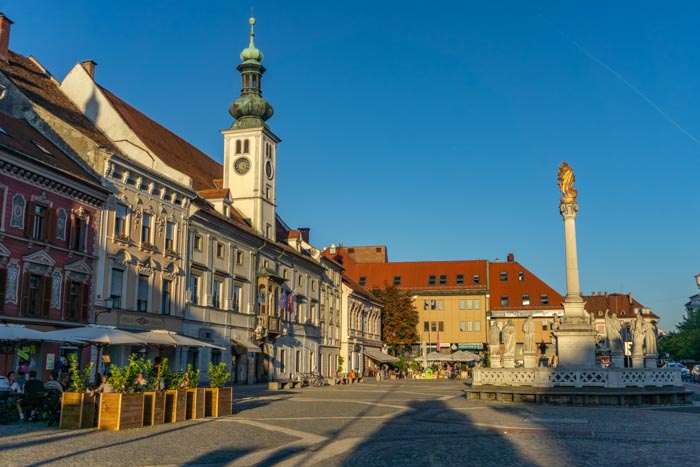
Is Slovenia Expensive? A Guide to Prices in Slovenia

Is Dubrovnik Expensive? A Guide to Prices in Dubrovnik

Is Croatia Expensive? Croatia Trip Cost Guide in 2024
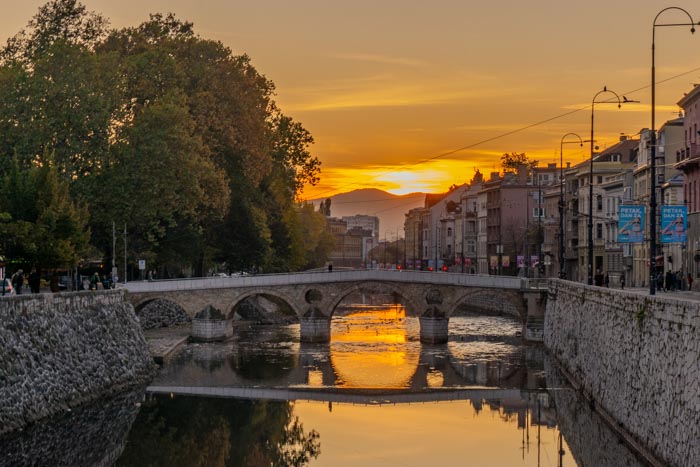
How Much Will a Balkans Trip Cost?
Currency in the Balkans
Unlike Western and Central Europe , where the vast majority of countries use the Euro as a common currency, a key point to keep in mind when it comes to Balkan travel is that many countries use their own unique currency.
Only Slovenia, Croatia, Montenegro and Kosovo currently use the Euro, while every other Balkan country has its own currency — Albanian Lek, Bosnian Mark, Bulgarian Lev, North Macedonian Denar and Serbian Dinar.
One of the most important tips when travelling the Balkans is that it can be difficult to exchange local currency when you leave the country, so try to not withdraw large amounts of cash at one time. This is particularly an issue for Albanian, North Macedonian, Bosnian and Serbian currencies. If you do end up with a handful of unwanted banknotes, try and exchange it with other travellers that are headed there.
ATMs and cash machines are prevalent throughout the Balkans, so it is not a worry to withdraw cash frequently. We would just suggest finding a debit card that has low or no foreign transaction fees so you don’t need to worry about that.
If you’re going on a multi-country Balkan trip, it can also be difficult to keep track of all of the exchange rates. To ensure that you are aware of what you’re spending, I recommend downloading an app like XE so you can be aware of how much things cost and the current exchange rate.

Balkan Cuisine
Sampling the local food and drink is one of the best things about travelling anywhere. While the nuances of regional cuisine can vary from country to country, there are many dishes and one specific drink that are rampant throughout the Balkans.
Something to keep in mind when travelling in the Balkans is that it is a very meat-heavy culture and it can be extremely hard to maintain a vegetarian diet while still trying to eat like a local.
Despite their love of animal flesh, Balkan cuisine is flavourful and diverse. Food in coastal Croatia and Montenegro, for instance, relies largely on their resources from the Adriatic sea and therefore can seem more akin to Italian food rather than that traditionally associated with Eastern Europe.
Food in the central Balkans, however, tends to be where the meat-loving stereotype reigns supreme. Ćevapi , the national dish of Serbia, is a kind of caseless sausage — small cylinders of grilled, ground meat — typically served with a pita-like bread, kajmak (a fermented clotted cream), onions, and sometimes yoghurt and salads. Pljeskavica is another prime example of the Balkan meat fetish and is essentially a regional take on a hamburger.
The most likely constant you will encounter in Balkan cuisine, however, would have to be rakija . A local take on a fruit brandy — oftentimes made at home with anything from plums, peaches, and grapes — it is customary to offer a small glass to visitors. If you stay at locally run guesthouses or hostels, you will almost certainly be offered this intoxicating liquid and it’s important to know how to drink rakija like a local!
If you want to learn more about the food in the Balkans or how to drink rakija properly – make sure to have a look through the articles below.

Balkan Cuisine Guide: Must-Try Food in the Balkans

How to Drink Rakija like a Local
Transportation in the Balkans
Getting to and around the Balkans can be a whole other kettle of fish, particularly when you are travelling outside of the European Union and Schengen Area, which is why covering all of the nuances of transportation is incredibly important. There are a number of considerations ranging from everything to more complicated border crossings to the best way to get from point A to B.
Getting to the Balkans
First things first, you’re likely wondering how best to get to the Balkans. If you’re arriving from further afield, you will be happy to know that most major Balkan cities have decently sized international airports and serve a number of major and budget airlines such as Ryanair, Wizzair and Easyjet. Some airports in the Balkans are better connected than others, however, so do make sure to check before you go if your intended destination has a convenient flight route.
Arriving in the Balkans from neighbouring countries can be another great way to get there. Whether you’re combining a trip to the Balkans with a route through Central Europe or and excited to hop on a ferry from Italy to Croatia, there are actually countless ways to reach the Balkans overland.
And finally, another thing that you may need to consider before travelling to the Balkans is your visa allowance. If you’re fortunate enough to boast an EU passport or to be a citizen of countries like the USA, Australia, New Zealand or Canada, then you don’t need to worry about applying for visas for any of the Balkan nations in advance.
In fact, if you’re travelling around Europe for an extended period of time, then heading to the Balkans can be a great way to extend your time as the vast majority of countries (excluding Slovenia & Croatia) are not a part of the Schengen area. Generally speaking, visitors are allowed to stay in any single nation for a total of 90 days out of every 180 days.
Though there are some nationalities that do not require any special visas for tourist entry into them, it is always best to check with the embassy beforehand to ensure that you can possibly and legally travel to these incredible nations.
Getting Around the Balkans
One of the most important things to remember during your Balkan travel is that unlike the rest of Europe where trains tend to be more efficient than buses; in the Balkans buses are nearly always the best way to get around.
This is particularly true for Albania, Bosnia, Croatia, Serbia, Kosovo and North Macedonia where the train network is practically non-existent. While there are some trains in Bulgaria, buses tend to be cheaper, more comfortable, and often times faster — particularly in the summer months when air conditioning can be a welcome relief from the Balkan heat.
When travelling across countries in the Balkans, it is worth considering taking a private shuttle bus which can be slightly more expensive than a public bus, but often have fewer hassles as they drop you off door-to-door and have fewer people that need to get across the border.
Renting a car can also be a really good idea if you want a bit more flexibility or want to get to some hard-to-reach areas. If you are planning on going on a multi-country road trip, however, do make sure that you have adequate insurance coverage for each country that you visit — the rental company should provide this.
The other thing that needs to be considered are border crossings. Because these are mostly non-EU countries, borders can be a bit more complex — especially when Kosovo is involved. Generally speaking, border crossings tend to be fairly quick and self-explanatory, but it is always something that you should be aware of.
And if you’re wondering about some of the most popular inter-city routes or how to deal with the complicated matter of entering Kosovo, please make sure to look through the articles below.

12 Best Stops on the Zagreb to Split to Dubrovnik Drive

How To Plan a Split to Mostar Day Trip
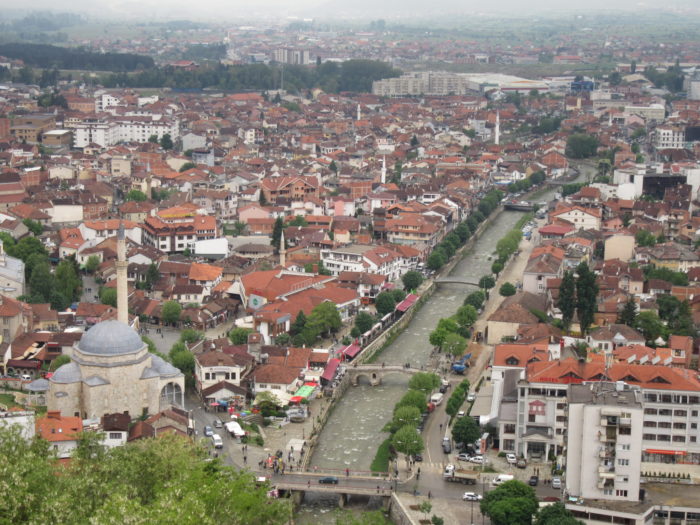
How to Enter Kosovo Legally
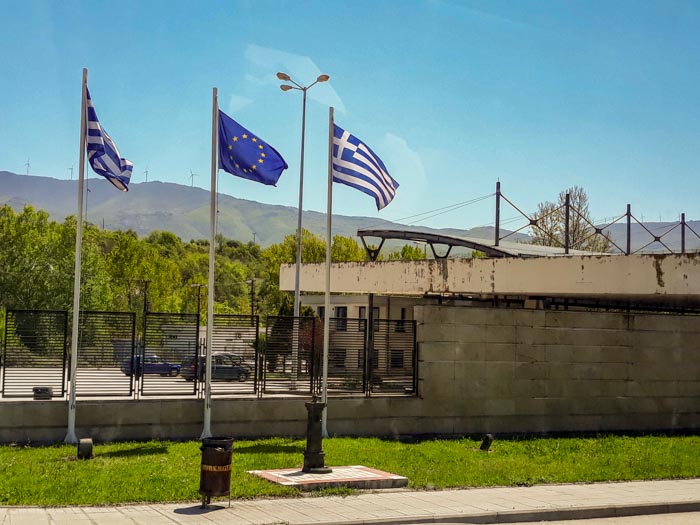
How to Get From Sofia to Thessaloniki by Bus, Train or Car
Accommodation in the Balkans
Accommodation in the Balkans, especially in the bigger cities, is rampant. For instance, there are a myriad of Balkan hostels to choose from and they’re especially great if you’re travelling solo or on a tight budget.
One of the best things about accommodation in the Balkans is that many places are often run by local staff who have a wealth of knowledge of their respective regions. Speaking to staff is a great way to get a lot of insider knowledge about your destination and find the best local spots!
We’ve opted for Airbnb for the majority of our recent trips to the region and have nothing but good things to say about using the platform in the Balkans. Entire apartments are quite affordable and it can be a great option for those who want to travel on a budget while not sacrificing privacy or a good night’s sleep.
Family-run guesthouses are also a great, budget-friendly choice for those looking for a unique local experience in the Balkans and you can find countless great options on sites like Booking.com . And if your budget allows for it, you will also be spoilt for choice when it comes to finding a nicer mid-range to a high-end hotel, if that’s what you’re after.

Language in the Balkans
Theoretically, every country in the Balkans has its own separate language. In practice, however, many of the languages are quite similar. Serbian, Croatian, Bosnian and Montenegrin all stem from Serbo-Croatian, which is a Slavic language that was spoken when these countries were united as Yugoslavia and are essentially the same language. Slovene, the language spoken in Slovenia, is slightly different from the Serbo-Croatian languages, however, it also shares some similarities.
Bulgarian and Macedonian are also both Slavic languages that use the Cyrillic alphabet and are very similar to each other, whilst Albanian is a completely separate language that shares no similarity to other Balkan countries.
When travelling through the Balkans, English is widely spoken in tourist areas and most younger locals will have learned English as a second language in school. Older people from Bulgaria and former Yugoslavia might speak some Russian whilst in Albania, Italian is common as a second language.
While you can get away without speaking much of the local language, you will be greeted warmly by locals if you learn some basic words! It’s always good practice to learn a simple “hello” and “thank you” before travelling anywhere in the world and it is especially welcome in the Balkans.

Religion in the Balkans
Religion in the Balkans is a touchy subject and whilst each country has a major religious group, there are often also significant religious minorities. In Bulgaria, Macedonia, Montenegro and Serbia, the predominant religion is Eastern Orthodox. In Croatia and Slovenia, the predominant religion is Roman Catholicism. In Albania, Bosnia and Kosovo the dominant religion is Islam.
These days, violence between religious groups is rare, however, there are undoubtedly still tensions and scars from the Yugoslav wars of the 1990s. It’s best to avoid getting into in-depth conversations about religion if you’re unsure how the person might react.
It is also worth noting that the vast majority of Balkan nations and citizens are largely secular and religion is more of an identity rather than a core, fundamental belief system.

Visiting the Balkans can be one of the most rewarding and challenging places to visit in all of Europe. Through all of its nuance and diversity, the Balkans is an incredibly engaging region that is an absolute joy to travel through and it is sure to leave you longing to return .
The Ultimate Beginner's Guide to Travelling the Balkans

Did you know that he word ‘balkan’ means ‘mountains’ in Turkish? Well, the exact definition in Ottoman Turkish is ‘a chain of wooden mountains’, which refers to the regional Balkan, Rhodope, Diarnic Alps and the Carpathian Mountains. The area evolved very differently from Western Europe, giving adventurous travellers a different, and a somewhat less explored, experience. Here’s a short guide on the essentials for visiting the Balkans.
Where are the balkans.
Geographically, the Balkans refers to Europe’s large eastern peninsula, including Yugoslavia, Albania, Bulgaria, Romania, Moldova and parts of Greece and European Turkey. But not everyone agrees with this definition. Some identify based on historical and cultural terms , which tends just to include Bulgaria and the Former Yugoslavian nations. If you hear the name, it may refer to some or all of the countries mentioned above.

Where to Go:
There’s a rich history here too with Roman, Byzantine, Ottoman and Yugoslavian influences as well as one or two Kingdoms. Take the time to understand the complicated story to appreciate the complex Balkan past.

Become a Culture Tripper!
Sign up to our newsletter to save up to 500$ on our unique trips..
See privacy policy .

On a broader Balkan trip, consider Bulgaria, Macedonia, Serbia , Kosovo , Bosnia , Montenegro and Croatia. Albania is worth visiting too. Favourites include Macedonia’s Skopje and Lake Ohrid, Montenegro’s Bay of Kotor, Serbia’s Nis and, of course, Belgrade, Bosnia’s Sarajevo and Mostar, and Croatia’s Dubrovnik.
If you want to get a more off-the-beaten-path experience, check out Plovdiv in Bulgaria, Kosovo’s Pristina and Prizren, Banja Luka in Bosnia and Albania’s Tirana, Duress and Berat.

How to Travel:
The best way to get into the Balkans is by flying. European budget airlines, in particular Wizz Air, connects to many destinations. You shouldn’t have any difficulties finding an inexpensive flight to Sofia (Bulgaria), Skopje (Macedonia) and Tuzla (Bosnia).
The best way to travel within the Balkans is by either the bus or train. Getting around is quite easy, but for someone without experience, it can be frustrating and challenging. Prices aren’t as low as you may think; expect to pay at least US $10 or more for a one-way ticket.
If you’re travelling over a land border, you may or may not get an entrance or exit stamp, but this rarely causes problems.

Typical Travel Difficulties:
One of the biggest difficulties for Balkan travel is finding reliable information on timetables, costs and points of departure. Information online is hard to come by and even then, can’t be trusted. Schedules at the station may or may not be up to date.
You usually need to buy tickets from the station on either day of departure or in advance and give them to the drivers. Be aware some routes also charge to store luggage.
For the Balkan novice, this can all be daunting. But there’s a simple solution that works every time. And the majority of tourists, from my experience, fail to do it and end up frustrated. All you need to do is write the destination in either Latin or Cyrillic, the date, a time you want to depart, a price with a question mark and show them the day before. For example: ‘Sarajevo, 01/01/18, 11:00? 10KM?’
Give them the paper and a pen. If the time and price are wrong, they’ll change it, and you have your answer. Ask if they speak English, if yes, be as direct as possible. If not, rely on your paper.
Safety Tips:
Is it safe to travel to the Balkans? The answer is yes. Despite the negative connotations the region has for violence and conflict, the Balkans aren’t at war anymore. Whereas ethnic tensions remain, especially in the Former Yugoslavia, and protests are common, you’ll rarely face difficulties.
Regarding safety, watch out for gypsies, who often beg and follow foreigners around. Also, be wary of scams in touristy areas.
But don’t let this deter you, the Balkans are safe. The kind of attacks that are becoming more common in Western Europe have not reached this area. And you’ll find warmth and hospitality from the people you meet.

A Balkan Experience:
The Balkan experience is different from Western Europe, but travelling in the region is rewarding because of the history, culture and relatively affordable travel costs. You’ll quickly fall in love with the region.

KEEN TO EXPLORE THE WORLD?
Connect with like-minded people on our premium trips curated by local insiders and with care for the world
Since you are here, we would like to share our vision for the future of travel - and the direction Culture Trip is moving in.
Culture Trip launched in 2011 with a simple yet passionate mission: to inspire people to go beyond their boundaries and experience what makes a place, its people and its culture special and meaningful — and this is still in our DNA today. We are proud that, for more than a decade, millions like you have trusted our award-winning recommendations by people who deeply understand what makes certain places and communities so special.
Increasingly we believe the world needs more meaningful, real-life connections between curious travellers keen to explore the world in a more responsible way. That is why we have intensively curated a collection of premium small-group trips as an invitation to meet and connect with new, like-minded people for once-in-a-lifetime experiences in three categories: Culture Trips, Rail Trips and Private Trips. Our Trips are suitable for both solo travelers, couples and friends who want to explore the world together.
Culture Trips are deeply immersive 5 to 16 days itineraries, that combine authentic local experiences, exciting activities and 4-5* accommodation to look forward to at the end of each day. Our Rail Trips are our most planet-friendly itineraries that invite you to take the scenic route, relax whilst getting under the skin of a destination. Our Private Trips are fully tailored itineraries, curated by our Travel Experts specifically for you, your friends or your family.
We know that many of you worry about the environmental impact of travel and are looking for ways of expanding horizons in ways that do minimal harm - and may even bring benefits. We are committed to go as far as possible in curating our trips with care for the planet. That is why all of our trips are flightless in destination, fully carbon offset - and we have ambitious plans to be net zero in the very near future.

Places to Stay
The best hotels to book in jahorina, bosnia and herzegovina.

The Best Hotels to Book in Medjugorje, Bosnia and Herzegovina

See & Do
7 great trips to take in the balkan peninsula.

Guides & Tips
21 essential phrases you'll need in bosnia.

Food & Drink
The 21 best dishes to eat in bosnia and herzegovina.

How to Spend Two Weeks in Bosnia

How to Spend One Week in Bosnia

Srebrenica: How to Visit the Site of Bosnia's Biggest Genocide

Travnik: Exploring Bosnia's Oriental Hidden Village

Top Things to See and Do in Travnik, Bosnia

Meet Bosnians Who Lived Through the Siege of Sarajevo

Top Things to See and Do in Brcko, Bosnia
Culture trip spring sale, save up to $1,100 on our unique small-group trips limited spots..

- Post ID: 1625205
- Sponsored? No
- View Payload
- International edition
- Australia edition
- Europe edition
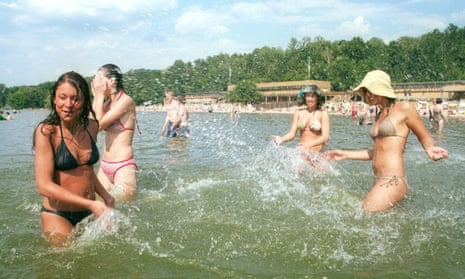
‘Everyone I met was lovely’: readers’ favourite student trips
Our winning tipster splashes out in Berlin, while road trips in the Balkans and Canada provide great student travel memories
Winning tip: Berlin’s lakes and cakes
It has to be Berlin. During a month-long summer trip in the late noughties, I fell in love with Kreuzberg’s €2 kebabs, cheap pilsner and vibrant street art. I strolled through leafy Prenzlauer Berg, home to endless coffee, cake and culture. This city has whatever food you could possibly want (currywurst is a must – meat, veggie or otherwise, big and budget-friendly). But the highlight was taking a train out to the stunning lake Wannsee. We packed a picnic, stripped off, sank our toes in the sand and swam, swam, swam until the canalside clubs began calling our name. Jessica Cole
Binge on the Balkans
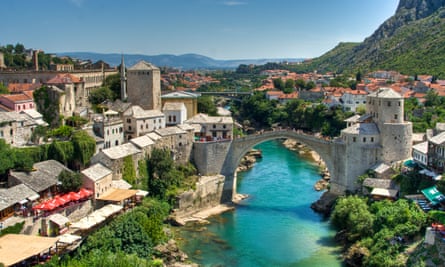
My three-week trip through the Balkans aimed to combine culture with stunning views. I stopped in Split, Zagreb, Sarajevo, Mostar, Kotor, Tirana, Skopje, Sofia and Plovdiv before flying back from Istanbul. The buses between each city cost around €20 each. Hostels were really affordable, and living costs were a great respite from English prices. The cool museums, galleries and themed bars and cafes made it a really educational experience. Everyone I met was lovely and hospitable, and the food was gorgeous (and vegetarian-friendly). Get used to fog-topped mountains looming over exciting urban visions, panoramic views and an array of interesting, varied tongues. Antonia Langford
Budapest, the perfect student capital
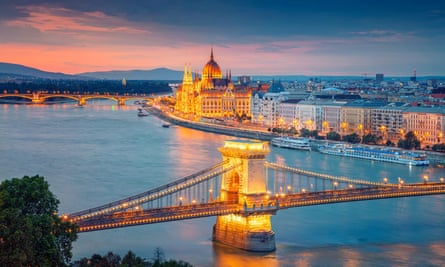
Why follow the crowds to Paris, Berlin or Rome when you can visit the perfect student capital, Budapest ? Walk by the Danube, visit the fairytale Fisherman’s Bastion, soak up art and culture in Buda castle and fill your nights with great music and the best craft beers. Travel, food and drink are inexpensive, especially with student discounts. By night you walk cobbled streets in the footsteps of vampires and drink in the famous ruin pubs. By day you must visit the thermal baths, then head to the Buda hills to explore the fabulous underground caves. Susanna C
A month in mind-blowing Mexico

As I was a female solo traveller, most people told me not to go to Mexico, warning of scam artists, violence, kidnapping and more stereotypes. However, thanks to a travel grant from the University of Manchester I got to spend a month travelling from the Atlantic to Pacific coasts then up to Mexico City. The culture, nature and food were mind-blowing, but what really took me aback was the hospitality everywhere I went. People looked out for me, from sharing rides to inviting me to stay in their home; I felt so welcome and safe. My top tip off the beaten track is Mazunte on the Pacific coast. A fishing village and turtle sanctuary, with stunning sunsets and community atmosphere. Sarah Collings
Readers' tips: send a tip for a chance to win a £200 voucher for a Coolstays break
Guardian Travel readers' tips
Every week we ask our readers for recommendations from their travels. A selection of tips will be featured online and may appear in print. To enter the latest competition visit the readers' tips homepage
Montpellier, France
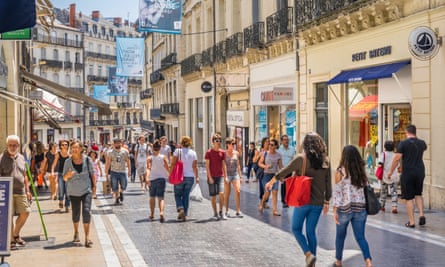
On a school/uni gap year I took my guitar and rucksack to the Montpellier Guitar Festival, held every year in September. The lively, cosmopolitan city in the south of France has the youngest population in France and 75,000 students, giving it a cool tolerant arty vibe. I stayed the whole year. Some medical students were so impressed with my strumming and my English accent they offered me a room in their flat in return for some tunes to help them study and some rather dodgy English lessons. Lovely architecture, student priced happy hours at open air cafes, pink flamingos, the nearby Med plus my first love interest with a beautiful French girl gave me a great start to my student life. Nigel
after newsletter promotion
A Greyhound through the Canadian Rockies
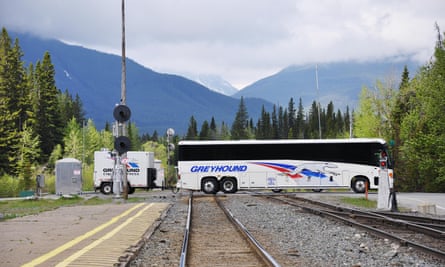
Greyhound buses may be more associated with the US, but they used to be a great way to travel across Canada. As a student I spent a couple of weeks travelling from Vancouver to Montreal by Greyhound (some 2,800 miles), staying in youth hostels along the way. It was a great way to see Canada on a budget – the highlight was the journey through the Canadian Rockies, from Banff to Lake Louise, with stunning scenery, and relaxing in the hot springs. As a lone traveller, I met so many friendly people on the way, both Canadians and other international tourists. Rachel
A speedboat to Malaysia’s enchanted islands
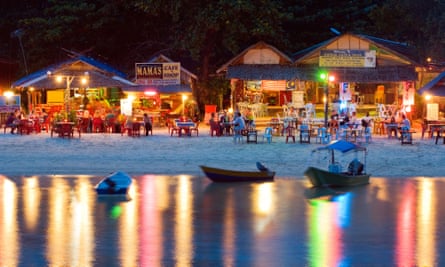
Experience a first-class lesson in the three Rs – reading, relaxing and reefing – by jumping on a speedboat from Kuala Besut as the sun rises over the South China Sea. Dock at the Perhentian islands, swapping library stacks for jungle paths and the chatter of bag-stealing macaques. Snorkel with clownfish, turtles and barracudas in morpho butterfly-blue waters. And dive deeper with Padi tours of sunken police patrols, the Sugar Wreck and famous Temple of the Sea Pinnacle. A full moon during the first week of uni break next Easter is the cherry on the paradise cake. Lisa
This article was amended on 30 June 2023. Greyhound buses no longer operate cross-country services in Canada but they still have cross-border services between the US and Canada.

- Europe holidays
- Readers' travel tips
- City breaks
- North and Central America holidays
Most viewed

- Living In Croatia
- Croatian Recipes
- Balkan Recipes

Home > Balkans Travel Guide: 12 Balkan Countries Tips & Information
Balkans Travel Guide: 12 Balkan Countries Tips & Information
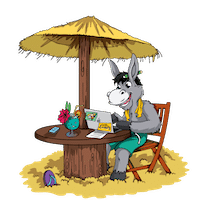
Written by our local expert Bram
Bram was born and raised in Belgium and has traveled the Balkans & beyond. He is a professional freelance travel writer and photographer specializing in outdoor travel with an emphasis on national parks, nature, and wildlife.
The Balkans, a vast and vibrant region in southeastern Europe, is a hotspot for travelers seeking a mix of culture, history, and natural beauty. If you’re planning a trip to the Balkans, this article about the Balkans is your ultimate guide, covering everything from safety tips and the best places to stay to must-visit spots throughout the Balkans.
Whether you’re interested in exploring the stunning landscapes, delving into the rich history, or just soaking up the local culture, our detailed guides offer all the info you need for a memorable journey.
From accommodations that cater to every traveler’s need to safety advice ensuring a hassle-free experience, we’ve got you covered. Get ready to discover the best places within the Balkans, making your travel experience truly unforgettable.
Skip Ahead To My Advice Here!
Travel The Balkans Map

The exact list of Balkan countries can spark debate, but for a comprehensive understanding, at Chasing the Donkey, we consider Slovenia, Croatia, Bosnia-Herzegovina, Montenegro, Türkiye, Bulgaria, North Macedonia, Serbia, Romania, Kosovo, Greece, and Albania.
This ultimate Balkan guide aims to give you a quick yet thorough insight into the Balkan Peninsula, ensuring you grasp the essence of this culturally rich and historically profound region.
Travel Around The Balkans – Tourist Expectations Vs. Local Customs
This is a relatively undiscovered part of Europe . Much less visited (and the cheapest) than, for instance, the Iberian Peninsula, Italy, the British Isles, and France, the Balkan countries are somewhat of a blank spot on the map for many Western European and North American travelers.
Travelers from the West may encounter cultural differences. Don’t expect the 24-hour convenience or quick service you’re used to. The pace of life here is slower, which can be a shift for some. Shops might close for afternoon breaks, and locals in tourist areas might not always greet visitors with open arms.
This slower pace isn’t a drawback but a difference to embrace. Once you engage with them, the locals are welcoming and friendly.
The local life in the Balkan countries is virtually unaffected by mass tourism—with some exceptions in the popular coastal cities on the Adriatic Sea—and the locals are among the most welcoming and friendliest people you’ll ever meet.
Understanding that the Balkans offer a unique cultural experience distinct from Western Europe can significantly enhance your visit to the Balkans. Embrace the local way of life, stay informed about customs, and enjoy the diverse beauty and hospitality the Balkans have to offer.
Is The Balkans Safe?
Many people’s perceptions of the Balkans are still colored by the wars of the 1990s (at the very end, I cover those), leading to questions about the region’s safety today.
Let’s set the record straight: the Balkans are safe. The conflicts have long ended, and the region has transformed remarkably over the past two decades.
Balkan Countries List
We’ll continue this article about what to expect when traveling in the Balkans with a list of Balkan countries featured on this website, as backpacking through the Balkans is popular and will likely include these fantastic destinations.
This is where you’ll find precisely what the Balkan countries are, again in the widest sense of the word, including the entire region.
Here’s the list of the Balkans nations:
- Bosnia and Herzegovina
- North Macedonia
Further below, our Balkans guide introduces each country’s culture, characteristics, and highlights. First, we will cover food, visas, money, and safety.
Balkan Food
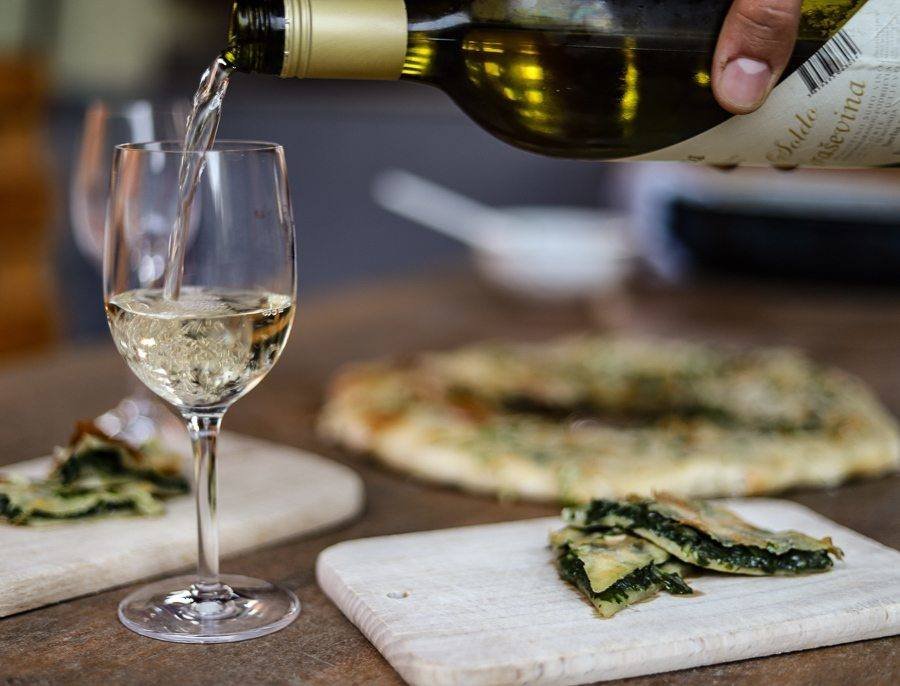
The list of typical Balkan dishes is much longer than the list of Balkan countries. Each country has several national specialties.
It must be said, however, that the people in the Balkans love their meat. Meat—beef, lamb, pork, chicken, and fish—is a prominent feature on any menu. So, vegans might face a challenge when traveling part of the Balkans (but if Croatia is your destination, we have a handy vegan guide for you! ).
- What To Eat In Bulgaria
- What To Eat In Croatia
- What To Eat In Slovenia
- What To Eat In Serbia
- What To Eat In Romania
- What To Eat In Albania
- What To Eat In Macedonia
- What To Eat In Kosovo
- What To Eat In Turkey
- What To Eat In Greece
- What To Eat In Bosnia-Herzegovina
- What To Eat In The Balkans
- Desserts In Bosnia-Herzegovina
- Desserts In Croatia
- Desserts in Türkiye
- Desserts in Greece
Balkan Currency
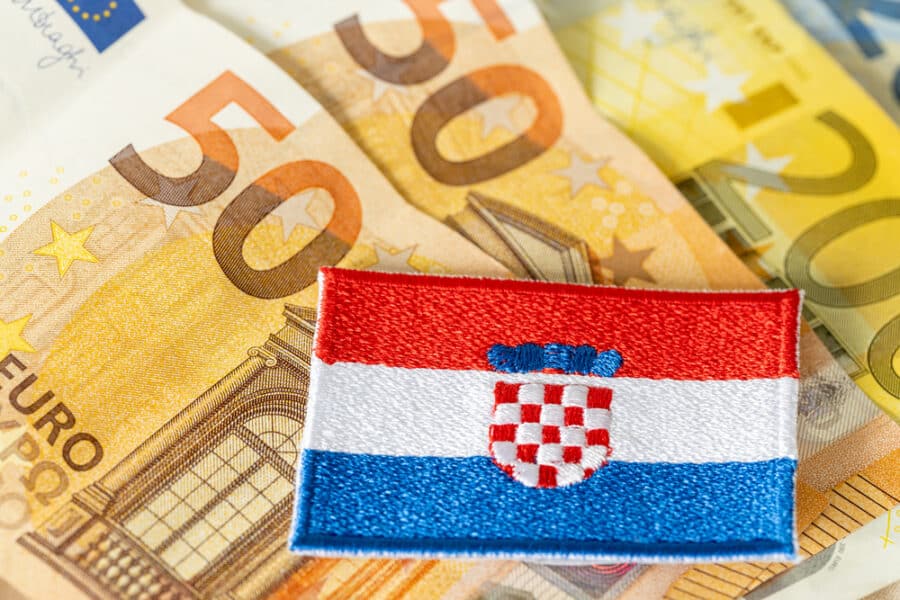
Navigating the currencies of the Balkans can feel a bit like a mini-adventure in itself, given the diversity across the region. Here’s a quick rundown to keep you in the loop:
- Albania uses the Lek.
- Bosnia and Herzegovina trades in Convertible Marks
- Bulgaria operates with the Lev. Though part of the EU, it hasn’t adopted the Euro yet
- Croatia has switched to the euro, making transactions smoother for many travelers
- Greece , as part of the Eurozone, also uses the Euro
- Kosovo unofficially uses the euro despite not being an EU member
- North Macedonia has the Denar as its currency
- Montenegro uses the Euro, even though it’s not a member of the EU
- Romania is in the EU but pays with the Leu; it’s on the path to adopting the euro
- Serbia deals in Serbian Dinars
- Slovenia is another Eurozone country using the euro
- Turkey stands out with the Turkish Lira, reflecting its unique position straddling Europe and Asia
Each country’s currency reflects its unique path and status, from EU members to those with special agreements or independent policies.
At every border crossing, you’ll find places to exchange currency. Those places tend to be major rip-offs, taking advantage of unwary tourists. You should try to exchange currencies at local exchange offices away from the border if you can.
- Croatian Currency Guide
- Greek Currency Guide
- Turkish Currency Guide
Visas Needed When You Visit The Balkans

When planning a trip across the diverse tapestry of the Balkans, understanding the visa requirements for each country is crucial. For starters, countries like Slovenia, Croatia, and Greece, being part of the EU and Schengen Area, generally offer visa-free access for short stays to many travelers, especially those from EU countries, the USA, Canada, and Australia.
Bulgaria and Romania, while EU members, are not yet part of Schengen but have similar access rules. Non-EU countries like Serbia, Montenegro, North Macedonia, Albania, and Bosnia and Herzegovina often provide visa-free entry for short-term visits to many nationalities, aiming to encourage tourism.
Kosovo, with its unique international status, also offers visa-free access to many, but it’s always wise to check ahead for any specific stipulations. Turkey’s visa policy includes an e-Visa option for many nationalities, simplifying the process of entering this transcontinental country.
Lastly, each of these countries may have specific requirements or exceptions based on your passport, so it’s paramount to look into the individual entry rules of each Balkan nation in relation to your nationality. A bit of research beforehand can ensure a smooth journey across this fascinating region.
And Big News For Travelers Headed To Bulgaria And Romania
From March 31st, 2024, get ready for a smoother journey to Bulgaria and Romania, as these gems join the Schengen zone in a big way. If you’ve roamed the E.U. before, you know the drill: showing passports and waiting in lines. But here’s the good news – that’s about to get a whole lot easier, at least partially.
Bulgaria and Romania, E.U. members since 2007, are opening their air and maritime borders to Schengen’s hassle-free travel vibe. Land travel? It’s in the pipeline, so stay tuned. This change is all about easing your way into these countries, letting you dive into their wonders with less fuss at the borders.
And there’s a cherry on top for the avid explorers. Are you venturing into Turkey, Bosnia-Herzegovina, or Montenegro? Your Schengen clock pauses, giving you more wiggle room to explore without eating into your 90-day limit.
Just remember, if you’re planning a lengthy stay, double-check the details with your embassy. Travel smart, travel easy, and soak up every moment in these beautiful corners of the Balkans.
- Guide To Who Needs A Visa To Enter Croatia
- Digital Nomad Visa Requirements In Croatia
- Digital Nomad Visa Requirements In Romania
- Digital Nomad Visa Requirements In Greece
- Getting A Turkish Visa On Arrival
- The Turkish Visa Process
Just be sure to check with your local embassy before your trip – these things constantly change.
Where To Travel In The Balkans – Country Guides
Let’s get you ready for your Balkans trip; with so many countries to choose from, we have broken it down into 12 countries and have given you links to dozens of detailed travel guides we have written for each country in the Balkans region.
An Independent Country Since: 1991

The first Balkan country we will start with is Croatia, as it is one of the most popular beach destinations in southern Europe, boasting one of Europe’s most magnificent coastlines.
The Dalmatian coast attracts millions of tourists yearly with its dazzling beaches, clear water, scenic islands, and historic towns. Croatia also features exceptional natural attractions, from gorges and mountains to thick forests, rivers, and lakes.
Croatia is a varied country. There’s the Italian-feeling Istrian peninsula in the north, the rural inland areas, the Dinaric Mountains just inland from the Adriatic Sea coast, the capital Zagreb , and the Dalmatian islands. Scattered within these regions, world-renowned UNESCO Heritage sites are not to be missed.
There are numerous attractions all over this stunning country. Still, you should focus on Plitvice National Park , Dubrovnik, Split , Zagreb, Krka National Park , Rovinj , and the islands of Hvar , Brač , and Korčula .
Best Accommodations In Croatia
- Where To Stay In Zagreb
- Where To Stay In Dubrovnik
- Where To Stay In Split
- Where To Stay In Korcula
- Best Luxury Hotels In Croatia
- Best All-Inclusive Resorts In Croatia
Best Activities In Croatia
- Explore Zagreb better via this City Walking Guided Tour
- Experience the best of Dubrovnik on this Old Town & City Walls Guided Tour
- Discover the largest coastal town in Croatia on this Old Town and Diocletian Palace 1.5 Hour Walking Tour with a local guide
Population: 4,058,165 (2020)
Flag of croatia croatia’s top destinations.
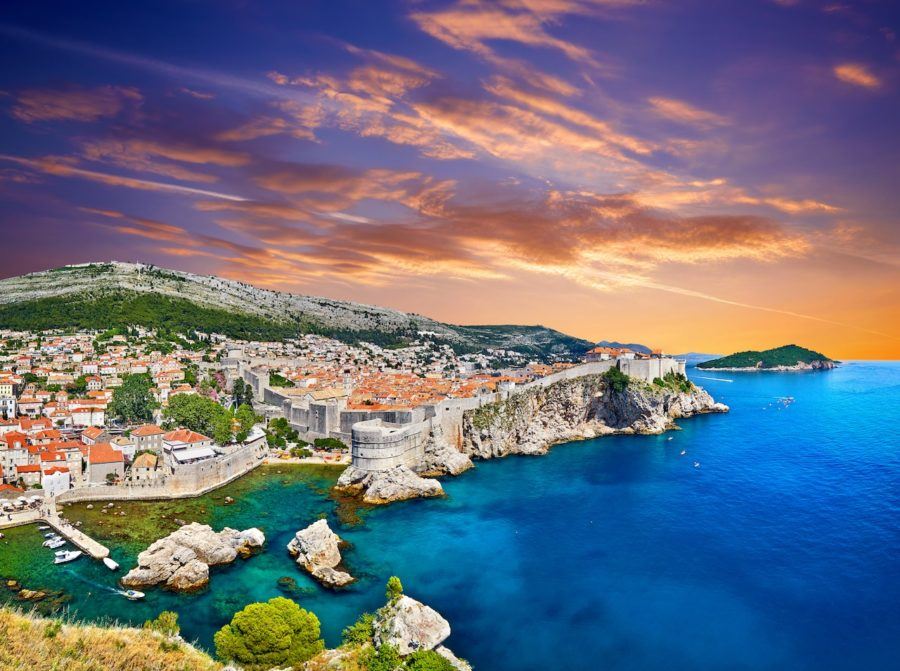
Croatia, a gem in the Balkans, really stands out with its stunning coastline along the Adriatic Sea, ancient walled towns, and a unique blend of Mediterranean and Eastern European culture.
It’s not just the sun-soaked beaches that draw visitors from around the world; it’s also the rich history, delicious cuisine, and vibrant local life that make Croatia a must-visit.
Whether you’re sailing around its idyllic islands, exploring the ruins of Roman palaces, or enjoying the nightlife in its historic cities, Croatia offers a diverse experience that’s hard to match in the Balkans.
- Krka National Park
- Dalmatian Islands
- Plitvice Lakes National Park
- How To Island Hop In Croatia
- Fascinating Museums In Croatia
- Unique Things To Do In Croatia
- Award-Winning Restaurants Throughout Croatia
- Top Diving And Snorkeling Locations In Croatia
- Guide To The Stunning Caves In Croatia
- GoT Filming Locations And Tours
- Wine Regions And Wineries In Croatia
- Honeymoon Hotels For Romance In Croatia
- Best Beaches To Visit In Croatia
- How To Travel Croatia On A Budget
- 4 Day Itinerary Ideas In Croatia
- Water Parks In Croatia You’ll Love
An Independent Country Since 1830
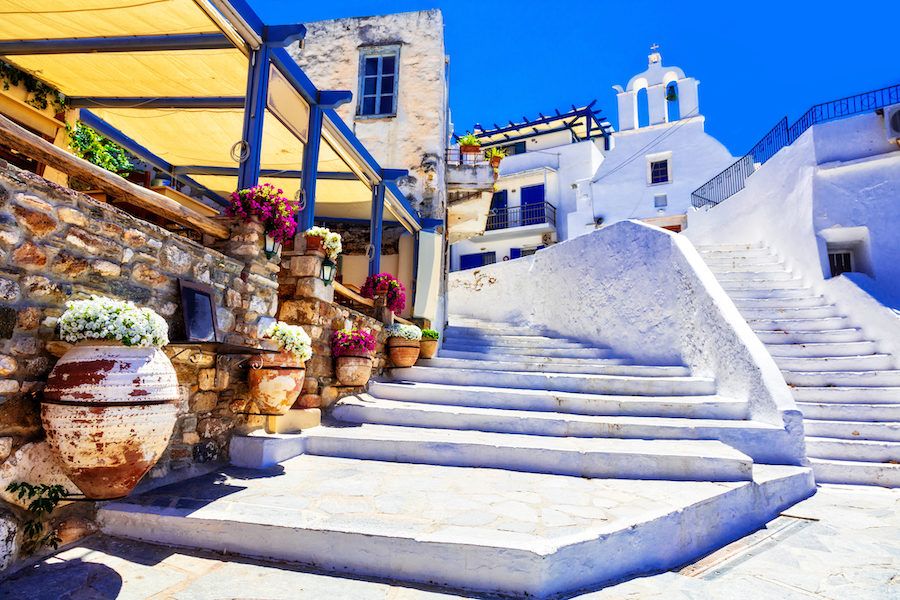
Occupying the southern tip of the Balkan Peninsula, Greece is arguably the most historical country in the world. It was one of the most influential regions in ancient times, showcased to this day by lots of remaining structures and ruins.
This is, after all, where modern democracy originated, the very “cradle of Western civilization.”
The capital of Greece, Athens , is home to important landmarks dating as far back as the 5th century B.C. Its most iconic ancient attraction is, without question, the Acropolis, topped by the Parthenon .
Other ancient locations in Greece worth visiting include the Palace of Knossos in Crete, the Temple of Apollo in Delphi, the Olympic Games birthplace in Olympia, and the island of Rhodes.
Thessaloniki is Greece’s second-largest city and a former commercial hub in the Byzantine Empire, which deserves a visit.
Additionally, Greece is also famous worldwide for its thousands of islands that dot the Ionian Sea and Aegean Sea. It’s a super-popular beach vacation destination , thanks to iconic places like Santorini and Mykonos .
Best Accommodations In Greece
- Best Resorts In Santorini
- Best Corfu Hotels
- Where To Stay In Athens
- Where To Stay In Crete
- Where To Stay In Thessaloniki
- Where To Stay In Mykonos
Best Activities In Greece
- See the top sights of Santorini on this Private Guided Highlights Tour by Minibus .
- Discover the wonders of Chania’s history with this Old Town Highlights Private Tour with Street Food .
- Explore Mykonos, take this tour: Highlights of Mykonos: Half-Day Tour
Population: 10,724,599 (2019)
Flag of greece.
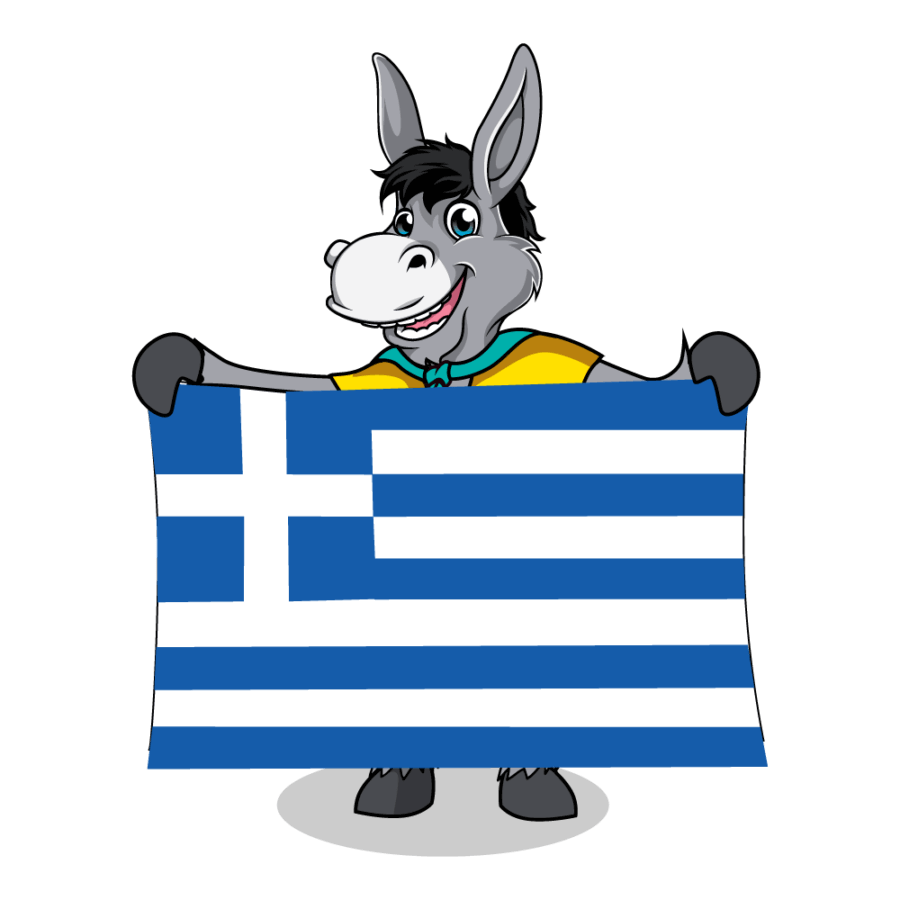
Top Destinations In Greece
Greece is a jewel in Europe, setting itself apart with a legacy that intertwines ancient history with azure seas and a vibrant contemporary culture.
It’s where mythology breathes life into landscapes, from the Acropolis watching over Athens to the idyllic islands dotting the Aegean and Ionian Seas. Greece’s standout features include its archaeological sites that tell tales of gods and heroes, the warm hospitality of its people, and a culinary tradition rich in flavors.
Here, the past and present merge seamlessly, offering a travel experience filled with discovery, relaxation, and adventure. Whether you’re exploring ruins, basking on beaches, or savoring gastronomic delights, Greece promises a journey through time and a feast for the senses.
- Thessaloniki
- Car Rental & Driving Tips In Greece
- Greece On A Budget Travel Tips
- Best Time To Visit Greece
- 5 Lesser-Known Greek Islands To Explore
- Family Holidays In Crete – Take The Kids
- Best Greek Islands For Couples
- What To Do In Greece In Winter
- How To Island Hop In Greece
- Guide To Aegina, Greece
- Cave Hotels In Greece You’ve Got To See
- Things To Do On Hydra Island
- Everything To Know About Naxos Island
- Where To Enjoy Nightlife In Mykonos
- 10-Day Greece Itinerary Guide
3. Bulgaria
An independent country since 1908.
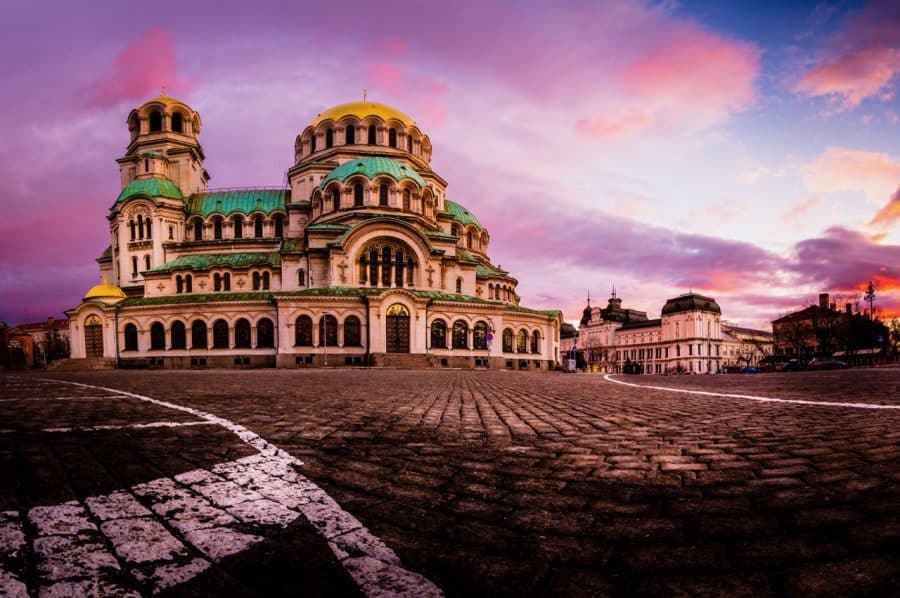
Bulgaria is more or less the region where our ancient ancestors arrived in Europe. It is, therefore, one of the oldest inhabited regions on the continent, featuring several significant archaeological sites from the Neolithic period.
Throughout its history, Bulgaria has been the home of the Thracians , Greeks, Persians, Romans, Goths, Huns, and the Ottoman Empire.
The mix of Balkan culture, architectural, and artistic styles is sensational. This extraordinary heritage is reflected in the country’s ten different UNESCO World Heritage Sites , including several unique ancient sites and a few breathtaking natural areas.
There’s plenty to see and do in Bulgaria . Major attractions include Sofia, the Ancient City of Nessebar , Central Balkan National Park, the Rock-Hewn Churches of Ivanovo, Pirin National Park, the Seven Rila Lakes , the Rila Monastery , and the Madara Rider.
Best Accommodations In Bulgaria
- Bansko Ski Resort Accommodations
- Where To Stay In Sofia
- Best All-Inclusive Resorts In Bulgaria
- Where To Stay In Veliko Tarnovo
- Where To Stay In Nessebar
- Where To Stay In Plovdiv
- Best Hot Springs Hotels In Bulgaria
Population: 6,951,482 (2019)
Flag of bulgaria, top destinations in bulgaria.
Bulgaria might be the Balkans’ best-kept secret, standing out with its wild mix of gorgeous landscapes, rich history, and vibrant culture. It’s where you can hit the ski slopes in the morning and soak up the sun on sandy beaches by the afternoon. Bulgaria’s authentic charm? Its laid-back vibe, ancient towns that feel like stepping back in time, and surprisingly lively nightlife.
Plus, let’s not forget the food – a hearty blend of Eastern European and Mediterranean flavors that’ll have you asking for seconds. Whether you’re exploring the buzzing streets of Sofia, marveling at the Rila Monastery’s frescoes, or hiking through untouched natural parks, Bulgaria offers an authentic slice of Balkan life that’s hard to find elsewhere.
- Rila Monastery
- Veliko Tarnovo
- Rhodope Mountains
- Seven Rila Lakes
- Tasty Bulgarian Breakfast Ideas
- Things To Do In Bulgaria
- Best Day Trips From Sofia
- Where To Eat In Sofia
- Best Bulgarian Beach Resorts
- Bulgarian Festivals
- Rent A Car Bulgaria
- Guide To Winter In Bulgaria
- Discovering Bulgaria With Kids
- Guide To Sunny Beach
- Reasons Why You Should Travel To Bulgaria
An Independent Country Since 1923
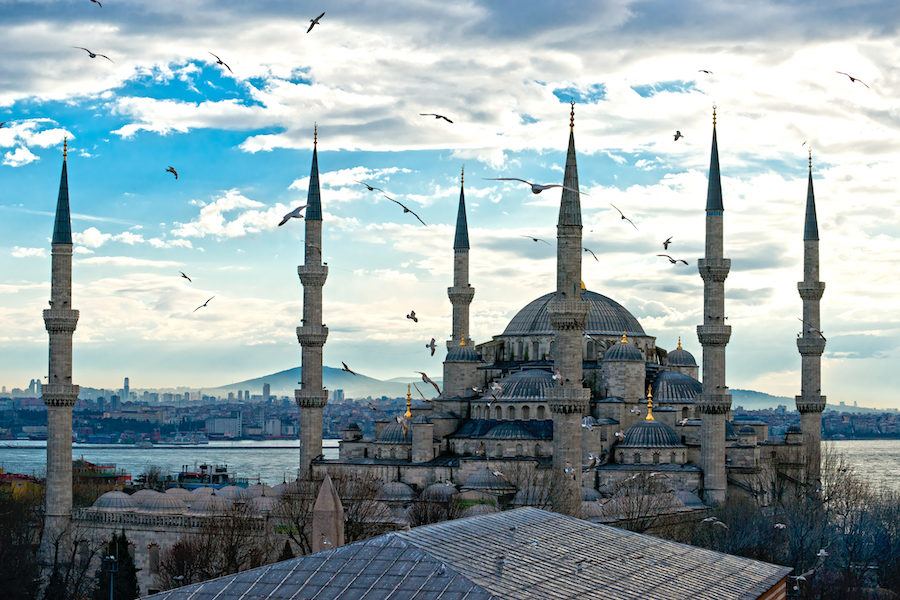
Visitors can find fascinating historic buildings, ancient ruins, and centuries-old heritage throughout the country.
Although not the capital of Turkey (that’s Ankara) , the country’s largest city by far is Istanbul, formerly known as Constantinople and Byzantium; this massive metropolis is home to some of the world’s greatest buildings. In the city’s historic center, a UNESCO World Heritage Site , you can visit iconic landmarks like the Hagia Sophia, the Blue Mosque, the Grand Bazaar, and the Topkapi Palace.
Elsewhere in Turkey, other major tourist destinations include the “fairy chimneys” in Cappadocia, the underground towns of Kaymakli and Derinkuyu, the ancient ruins of Ephesus , and the remains of Troy.
Natural highlights range from Pamukkale’s phenomenal travertine hot springs to the Turquoise Coast’s gorgeous beaches and Turkish Riviera.
Best Accommodations In Turkey
- Best Hotels In Taksim Square
- Best Hotels In Cappadocia
- Best Hotels In Istanbul
- Best Hotels In Antalya
- Beach Resorts & All-Inclusive Hotels In Bodrum
- Closest Hotels To Istanbul Airport
- Hotels With A Bosphorus View
Best Activities In Turkey
- Explore Turkey’s UNESCO World Heritage Sites: Ephesus & Pamukkale 2-Day Trip with Flights From Istanbul
- Discover the Best of Istanbul in 1 Day
- Glide above the unique rock formations of Cappadocia with this tour: Goreme Sunrise Balloon Official Flight
Population: 10,620,739 (2021)
Flag of turkey.

Top Destinations In Turkey
Turkey is a fascinating crossroads between Europe and Asia, offering a unique blend of cultures, history, and landscapes that truly sets it apart in the Balkans and beyond. This country is a melting pot where ancient ruins stand shoulder to shoulder with bustling modern cities, where the call to prayer mixes with the sounds of bustling bazaars, and where you can enjoy some of the world’s most unforgettable culinary experiences .
Turkey’s hospitality is legendary; locals welcome visitors with open arms and an eagerness to share their rich heritage. From the awe-inspiring Hagia Sophia in Istanbul to the lunar landscapes of Cappadocia , Turkey is a place where every corner holds a new surprise.
Whether you’re soaking in a Pamukkale hot spring , exploring the ruins of Ephesus , or sailing the turquoise waters of the Aegean, Turkey offers an endless adventure that’s hard to match.
- The Do’s And Don’ts Of Visiting Turkey
- Guide To The Turkish Riviera
- The Best Things To Do In Istanbul
- Hidden Gems In Istanbul – Local’s Favorite Spots
- Best Places To Visit In Turkey For Every Type Of Traveler
- Places To Stay In Sultanahmet
- Day Trips To Take From Istanbul
- Things To Do In Oludeniz
- What To Wear In Turkey
- Best Beaches In Turkey To Kick Back
- How To Get From Pamukkale To Cappadocia
- Istanbul Tourist Scams To Avoid
- Turkey Museum Pass Options
- Visiting Turkey During Ramadan
- Turkey 10-Day Itineraries
An Independent Country Since 1912

A relatively unknown and unexplored country in the heart of the Balkans , Albania oozes culture and history. This is one of the oldest regions in Europe—if not the world—sharing the same history as Greece and Italy.
Albania lies between Macedonia , Kosovo, Greece, and Montenegro in a quiet corner of Europe. However, although it gets only a fraction of the crowds that visit Croatia, Greece, or Italy, those who go there often find themselves surprised by its wealth of ancient sites , beautiful architecture, and vibrant culture.
This is as off-the-beaten-path as you can get in southern Europe, making it great for budget travel ( especially regarding accommodation ). Albania boasts striking landscapes, incredible national parks, glorious beaches, and handfuls of historic towns and villages.
Don’t miss Berat and Gjirokastra, the capital of Tirana , Theth National Park, Shkoder, and the Albanian Riviera.
Best Accommodations In Albania
- Where To Stay In Tirana
- Where To Stay In Berat
- Where To Stay In Saranda
- Top Albanian Riviera Hotels
Best Activities In Albania
- Discover the history, traditions, local food, and scenery of Albania: Kruja & Durres: Historical Tour with Lunch
- Explore Berat from Tirana with this Full-Day Trip
- Immerse into the atmosphere of Tirana: Tirana Walking Tour
Population: 2,845,955 (2020)
Flag of albania, top destinations in albania.

Albania stands out in the Balkans with its unique blend of natural beauty, historical depth, and cultural richness. This hidden gem is more laid-back than some of its more famous neighbors, offering pristine beaches along the Ionian Sea, rugged mountains, and charming, time-forgotten villages.
What sets Albania apart is its authenticity; it’s a place where tourism hasn’t overshadowed the local way of life. Here, you can explore ancient ruins without the crowds, enjoy the hospitality of locals over a cup of mountain tea, and discover a coastline that rivals the Mediterranean’s best – all at a fraction of the cost.
Albania’s recent history has kept it under the radar for many travelers. Still, those who venture here find a country eager to share its treasures, from the bustling streets of Tirana to the serene shores of Ksamil. Albania is the Balkans’ unpolished diamond, offering an adventure for those willing to look beyond the usual tourist spots.
- Gjirokaster
- Butrint National Park
- Rent A Car In Albania
- Ultimate Guide To What To Do In Albania
- Albania Museums Worth A Visit
- Best Places To Visit In Albania On A Weekend
- 25 Ideas On Where To Go In Albania
- How To Spend 7 Days In Albania
- Where To Go Hiking In Albania
- Albanian Riviera Guide
- Albania Packing List
6. Bosnia And Herzegovina
An independent country since: 1992.
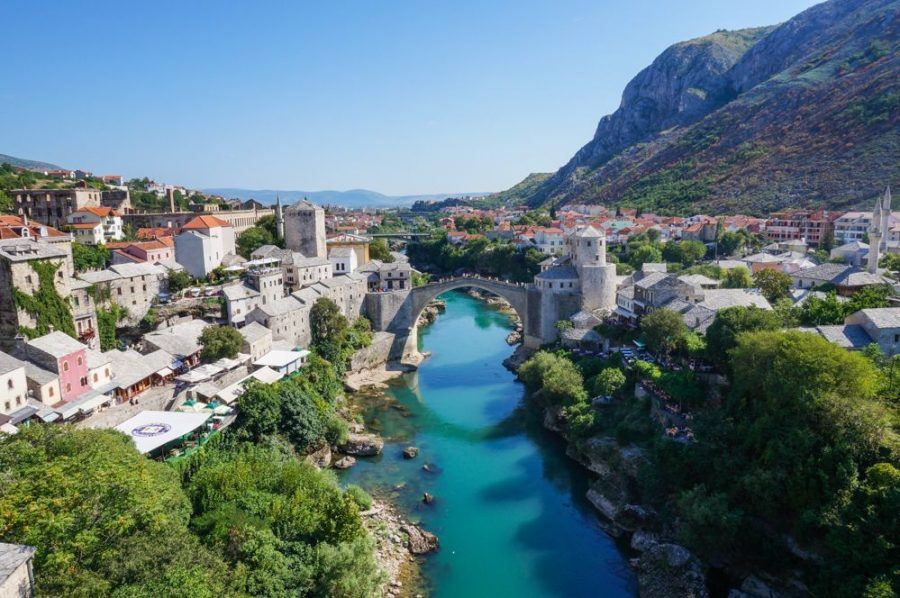
Bosnia-Herzegovina is the most culturally and religiously diverse country in the Balkans. This is as close as you can get to the Middle East and Muslim culture without leaving Europe. This is a true crossroads country home to several ethnic minorities, such as the Bosniaks, Croats, and Serbs.
In Bosnia-Herzegovina, cityscapes are dotted with both church spires and minarets . It’s one of the few countries within Europe with a Muslim majority, making this a fascinating place to visit.
Combining a rich cultural heritage with beautiful nature, Bosnia-Herzegovina has a variety of attractions. Make sure you visit Mostar and Sarajevo and allow time to go whitewater rafting in Bihać , Banja Luka, or Foča and explore little towns such as Trebinje.
Best Accommodations In Bosnia-Herzegovina
- Where To Stay In Mostar
- Best Hotels In Medjugorje
- Where To Stay In Sarajevo
Best Activities In Bosnia-Herzegovina
- Learn more about Sarajevo’s history with this Grand Walking Tour
- Explore Herzegovina from Sarajevo via this Day Trip to Mostar, Blagaj, Počitelj & Kravice Falls
- You may also discover Herzegovina from Mostar; take this Herzegovina Full-Day Tour
Population: 3,301,000 (2019)
Flag of bosnia-herzegovina, top destinations in bosnia-herzegovina.
Bosnia-Herzegovina, nestled in the heart of the Balkans, is a country where East meets West in the most literal and figurative sense. What makes it stand out is its remarkable blend of cultural and religious diversity, breathtaking natural landscapes, and a tumultuous history that’s both heart-wrenching and inspiring.
From the cobblestone streets of Sarajevo , where you can hear the call to prayer mingling with church bells, to the iconic Stari Most bridge in Mostar , Bosnia-Herzegovina offers a unique tapestry of human experience. It’s the perfect place where you can explore medieval castles, raft down vibrant rivers, and hike through untouched national parks—all within a day’s journey.
Despite its past, Bosnia-Herzegovina is incredibly welcoming, with locals ready to share stories over a strong coffee or homemade rakija. It’s this raw, unfiltered connection to its history and culture that sets Bosnia-Herzegovina apart, making it a must-visit for those seeking depth and authenticity in their travels.
- Kravice Waterfalls
- Blagaj Dervish Monastery
- Guide To The Kravice Waterfalls
- How To Spend A Day In Mostar
- The Best Restaurants In Mostar
- How To Tip In Bosnia-Herzegovina
- How To Rent A Car In Bosnia-Herzegovina
- Hidden Gems To See In Bosnia-Herzegovina
- Guide To Una National Park
- Guide To Medjugorje
- The Best Restaurants In Sarajevo
- Best Day Trips From Sarajevo
- Museums You’ve Got To Visit When In Sarajevo
- Souvenirs To Bring Home From Bosnia-Herzegovina
7. Montenegro
An independent country since: 2006.
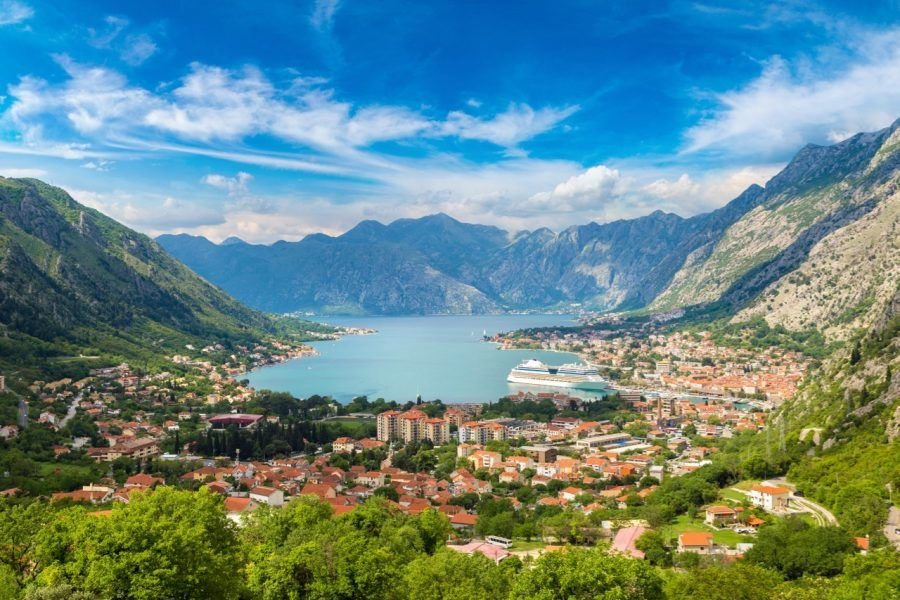
In terms of landscapes, Montenegro is one of the world’s most spectacular countries. Its name literally means “Black Mountain.” This is a place of magnificent coastal hills, sandy beaches , rugged inland mountain ranges, deep canyons, and shimmering lakes.
Additionally, Montenegro also has vibrant coastal towns. The most well-known one is Budva , one of the Adriatic epicenters of luxury and beach travel, with loads of excellent hotels . Its hospitable people make this one of the most enjoyable places to visit in southern Europe, especially if you’re after an off-the-beaten-track outdoor adventure.
You shouldn’t miss the Bay of Kotor , Durmitor National Park , Budva, Sveti Stefan , and Lake Skadar.
Best Accommodations In Montenegro
- Where To Stay In Budva
- Where To Stay In Kotor
- Where To Stay In Tivat
Population: 622,359 (2018)
Flag of montenegro, top destinations in montenegro.

Montenegro, a gem of the Balkans, strikes a perfect balance between the grandeur of its natural landscapes and the charm of its historic towns. What sets it apart is its compact size packed with diversity: from the stunning Adriatic coastline with its crystal-clear waters to the rugged mountains and serene lakes inland.
Montenegro offers the allure of luxury in Budva and the tranquility of ancient forests in its national parks, all within a short drive. The Bay of Kotor , resembling a fjord, with its medieval towns and dramatic scenery, is a UNESCO World Heritage site that exemplifies Montenegro’s unique appeal.
This country is a paradise for adventure lovers, offering everything from hiking and rafting to sunbathing and sailing. Montenegro’s relaxed vibe, coupled with its rich history of Venetian palazzos, Ottoman forts, and Roman mosaics, invites travelers to dive deep into its culture. It’s a place where you can enjoy the high life or go off the beaten path, making every visit uniquely memorable.
- Herceg Novi
- Durmitor National Park
- Ostrog Monastery
- Guide To The National Parks In Montenegro
- Fun Things To Do In Podgorica, Montenegro
- Villages And Towns Along The Coast
- 27 Places & Towns To Check Out In Montenegro
- Places To Visit With Kids In Montenegro
- Best Places To Visit In Montenegro
- Best Beaches In Montenegro
- How To Enjoy Winter In Montenegro
- Visiting Sveti Stefan Montenegro
- How To Rent A Car In Montenegro
8. North Macedonia
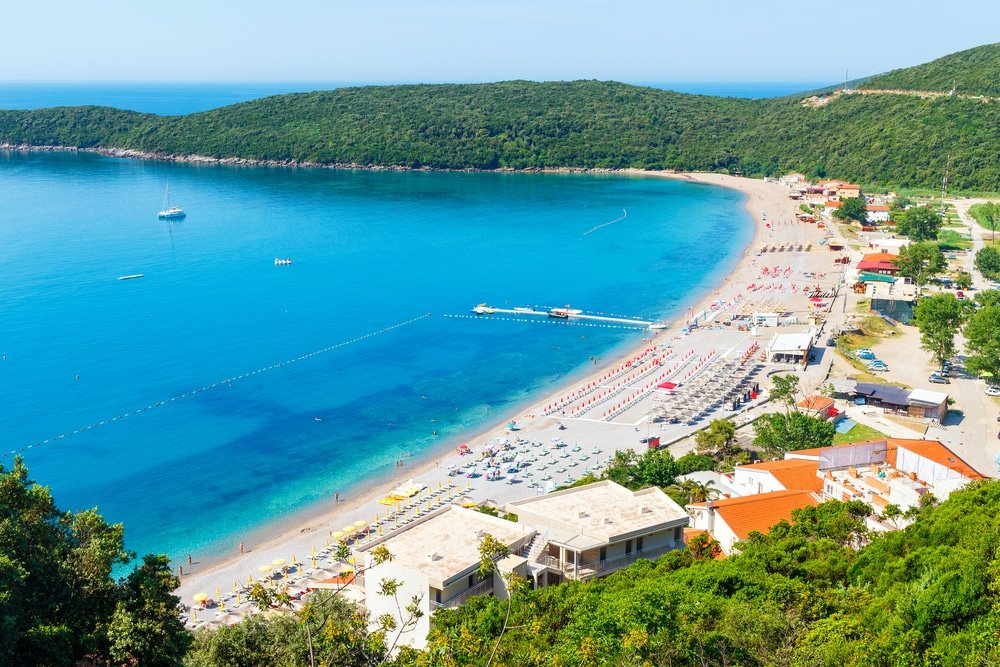
Just like its western neighbor Albania, North Macedonia can trace its origins back to even before antiquity. The oldest settlements date from as far back as 7,000 BC, but it was not until the 4th century B.C. that it became the Kingdom of Macedon.
Note that the Republic of North Macedonia, as the country is officially known, is not the same as the historical region of Macedonia, which is much larger and spread across three neighboring countries. (After years of dispute with Greece, the country changed its name from “Macedonia” to “North Macedonia,” while a northern Greek province officially became “Macedonia”)
North Macedonian culture and heritage are a mix of local and foreign influences, much like most other countries in the Balkans.
A landlocked country, North Macedonia is a relatively mountainous place . Its landscapes are rugged and wild, characterized by mountain ranges, valleys, and large lakes.
As you can imagine, its cities and cultural attractions are old—if not ancient.
Any North Macedonia itinerary should contain, at the very least, Lake Ohrid , Matka Canyon, Mavrovo National Park, and Skopje .
Best Accommodations In North Macedonia
- Luxury Hotels In North Macedonia
- Where To Stay In Skopje
Best Activities In North Macedonia
- Explore Skopje with this Best of Skopje City Tour
- Visit Matka Canyon: Half-Day Tour from Skopje to Matka Canyon
- Discover Ohrid via this Ohrid Half-Day City Tour
Population: 2,077,132 (2019)
Flag of north macedonia, top destinations in north macedonia.

North Macedonia stands out in the Balkans with its profound mix of cultural heritage, breathtaking natural landscapes, and a rich history that weaves through its cities and countryside. It’s the blending of civilizations over centuries that gives North Macedonia its unique charm, from ancient Roman sites to Ottoman bazaars.
Skopje, the capital, showcases this blend with its modernist buildings and ancient stone bridge. Lake Ohrid, one of the world’s oldest and deepest lakes, offers not just natural beauty but also a treasure trove of historic churches and a serene, timeless vibe. What truly sets North Macedonia apart is its ability to offer visitors an authentic experience; it’s a place where traditional music fills the air, culinary delights surprise the palate, and natural beauty invites exploration.
Whether you’re hiking in the national parks, wandering through the old bazaars, or enjoying the laid-back atmosphere of the lake, North Macedonia offers a unique journey through the heart of the Balkans.
- Sar Mountains
- What You Need To Know About North Macedonia
- Beautiful Beaches In North Macedonia
- Rent A Car In North Macedonia
- Ohrid, North Macedonia’s UNESCO Listed Lake
- How To Tip In Macedonia
- All You Need To Know About Macedonian Wine
- Small Towns In North Macedonia For A Weekend Getaway
- Fun & Easy Day Trips From Skopje
- Most Interesting Museums In Skopje
- Best Souvenirs To Buy
- Best Authentic Restaurants In Ohrid
- Famous Archaeological Sites In Macedonia
- Best Winter Destinations In North Macedonia

One of the largest Balkan States, Serbia is the only country in Europe that uses Latin and Cyrillic alphabets.
Its capital city, Belgrade , is a part of the Southeastern part of the European continent and is one of the largest and oldest cities, home to striking Communist-era buildings and Belgrade Fortress, to name a few highlights. Belgrade’s Stari Grad is where you’ll find mansions dating from the 1800s and the iconic National Theater.
Outside the capital, numerous historic towns and archaeological sites dot the countryside , which is made up of mountain ranges, plateaus, and rivers. While there’s a wealth of culture and history to be soaked up in Serbia , people who like being outdoors won’t be disappointed.
Absolute highlights include Fruška Gora National Park, the attractive Drina River, the Nikola Tesla Museum, the Stari Ras and Sopoćani complex, Derdap National Park, Belgrade Fortress, and the Studenica Monastery. Besides these, there are many other nature parks , ancient monasteries, fortresses, and old towns to visit and explore.
Best Accommodations In Serbia
- Where To Stay In Novi Sad
- Where To Stay In Nis
- Where To Stay In Belgrade
Best Activities In Serbia
- Discover Belgrade from water: Belgrade: 2-Hour City Boat Cruise
- Explore Novi Sad & Sremski Karlovci with this Full-Day Tour From Belgrade
- Enjoy the Key Sites of Serbia via this 1-Day Tour From Belgrade
Population: 6,963,764 (2019)
Flag of serbia, top destinations in serbia.
Serbia, a gem in the heart of the Balkans, distinguishes itself with a vibrant cultural scene, historical depth, and an unpretentious, lively spirit. Unlike its coastal neighbors, Serbia offers a journey through time with its well-preserved medieval fortresses, monasteries that have stood the test of centuries, and lively urban centers where history meets modernity.
Belgrade, the capital, buzzes with energy, offering a nightlife that rivals Europe’s best alongside museums and parks that tell stories of a tumultuous past. Outside the city, the serene beauty of the countryside, with the Danube River winding through towns and past ancient sites, invites exploration.
Serbia’s appeal lies in its warm hospitality, delicious cuisine that’s a testament to its crossroads of cultures, and the blend of tradition and contemporary life. It’s a country where every corner has a story, offering experiences that range from the serene beauty of the Fruška Gora National Park to the lively streets of Novi Sad, the cultural heartbeat of the nation.
- Tara National Park
- Vrnjačka Banja
- Fruska Gora
- Cool Day Trips From Belgrade
- Guide To Skadarlija Belgrade
- What To Buy In Serbia
- Renting A Car In Serbia
- How To Tip In Serbia
- Best Ski Resorts In Serbia
- Things To Do In Serbia In Winter
- UNESCO World Heritage Sites In Serbia
- Serbian Countryside – Lesser Known Weekend Getaways
10. Romania
An independent country since 1877.
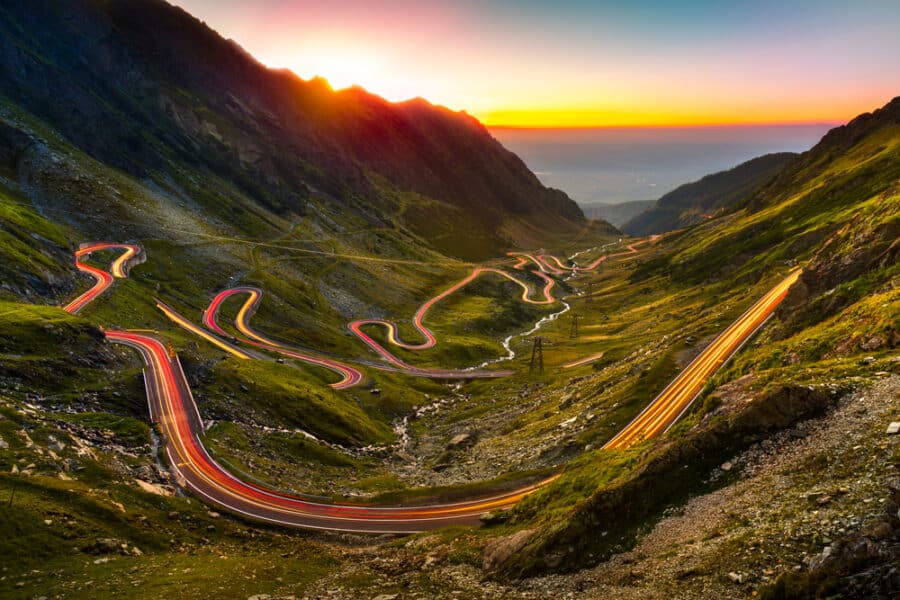
A large country in the northwestern corner of the Balkan Peninsula, Romania is known mainly for its numerous spectacular castles , epic landscapes, and beautiful towns.
Arguably, its most popular destination is Transylvania , a forested region with various hills and fortresses. Its most notable landmark is Bran Castle , associated with the legend of Dracula.
The well-preserved medieval town of Sighisoara is absolutely worth visiting as well.
For more urban attractions, Bucharest’s capital city has several of those, most notably the enormous Communist-era Palace of Parliament.
The towering Carpathian Mountains flank Transylvania , a wild landscape home to wolves and brown bears that attract adventure seekers like hikers, campers, winter sports enthusiasts, rock climbers, and photographers alike.
Yet another remarkable natural feature in Romania is the Danube River, which flows into the Black Sea in Romania. The Danube Delta Biosphere Reserve is a prime location for wildlife watching, scenic bike rides, drives, and boat excursions.
Best Accommodations In Romania
- Best Hotels In Sibiu
- Best Hotels in Sighisoara
- Where To Stay In Bucharest
- Where To Stay In Brasov
- Glamping In Romania
Best Activities In Romania
- Discover Transylvania with this Dracula Castle, Peles & Brasov Full-Day Trip from Bucharest
- Explore Bucharest by bike: Bucharest: Half Day Bike Guided Tour
- Check this Tour of Castles and Surrounding Area From Brasov
Population: 19,317,984 (2020)
Flag of romania.
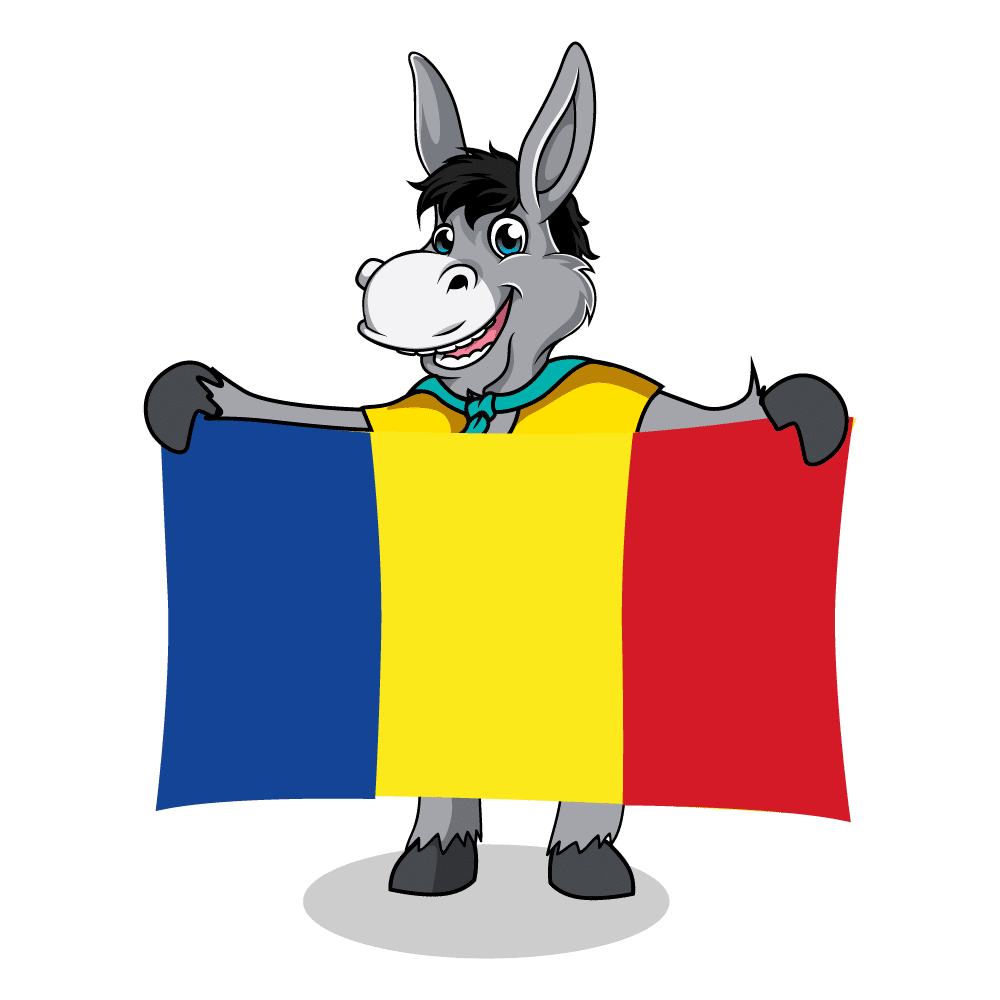
Romania’s Top Destinations
Romania stands out in the Balkans with its captivating blend of natural wonders, medieval charm, and vibrant urban life. It’s a country where the legends of Dracula are intertwined with the reality of castles perched in breathtaking landscapes and cities bustling with culture and history.
Romania’s diverse terrain, from the rugged beauty of the Carpathian Mountains to the serene expanses of the Danube Delta, offers a playground for nature lovers and adventurers alike. Bucharest, the capital, is a hub of energy and innovation, showcasing a mix of architectural styles that tell the nation’s story.
Beyond the urban, the Transylvanian countryside unfolds with Saxon villages and Gothic fortresses, offering a step back in time. Romania’s rich folklore, traditional crafts, and hearty cuisine add layers to the travel experience, making it distinctively memorable in the Balkan context. It’s a place where the past and present coexist, inviting visitors to explore its many layers.
- Cluj-Napoca
- Danube Delta
- Transylvania
- Bran Castle
- Guide To The Real Transylvania
- Sights You Just Can’t-Miss In Romania
- Impressive Castles To Visit In Romania
- Massive List Of Things To Do In Romania
- When Is The Best Time To Visit Romania
- Amazing Places To Visit In Romania
- Unwind In Romania At These Beaches
- Romania In The Fall
- Romania In The Winter
- How To Tip In Romania
- 7 UNESCO Villages With Fortified Churches
- What To Buy In Romania
11. Republic of Kosovo
An independent country since 2008 (not recognized by serbia).
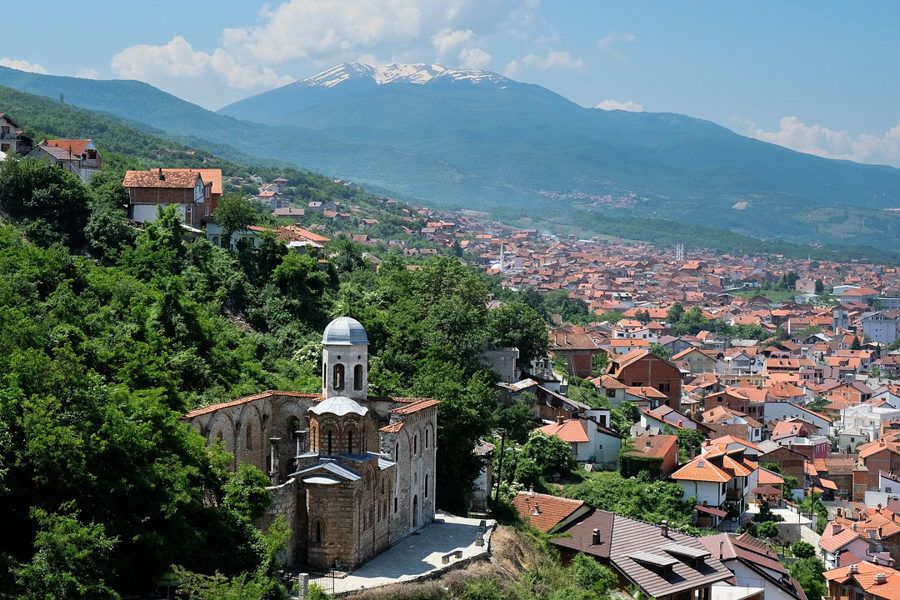
A landlocked country surrounded by Macedonia, Albania , Montenegro, and Serbia, the Republic of Kosovo is a partially recognized country in the Balkans. Although some nations still don’t recognize Kosovo’s independence, it is a separate, although small, region in southeastern Europe with a distinct culture.
This fascinating new country has much going for it, including its obscurity. Because many travelers don’t know much about it, it has the unique potential to surprise and overwhelm unsuspecting visitors completely. Kosovo, after all, is gorgeous.
It’s home to beautiful domed Serbian monasteries dating from the 1200s, picturesque mountain towns, and world-class hiking trails .
Despite its turbulent past, Kosovo is perfectly safe to visit now . Yet, it does remain one of the last off-the-beaten-track destinations in Europe.
Like its neighbor Serbia, from which it declared independence in 2008, Kosovo is somewhat of a cultural crossroads in southern Europe, with Christian and Muslim influences.
Its spectacular natural scenery is Kosovo’s most significant touristic resource. Home to towering mountains dotted with canyons and lakes and crisscrossed by rivers; this small country is an outdoor lover’s paradise. You can go hiking, cycling, whitewater rafting , fishing, boating, skiing, and snowboarding.
Best Accommodations In Kosovo
- Best Hotels In Kosovo
- Where To Stay In Pristina
Population: 1,873,160 (2020)
Flag of kosovo, top destinations in kosovo.
Kosovo might be one of the lesser-known gems in the Balkans, but it packs a punch with its rich history, vibrant culture, and warm hospitality. Standing out for its youthful energy and resilience, Kosovo is a place where ancient traditions blend seamlessly with a keen sense of progress.
The capital, Pristina, buzzes with cafes, street art, and museums that tell the story of its past and its aspirations for the future. Beyond the city, the country’s landscape offers stunning natural beauty, from the rugged peaks of the Accursed Mountains to the serene beauty of the Mirusha Waterfalls.
Kosovo’s rich cultural tapestry is evident in its diverse festivals, traditional music, and crafts. This is a country where every conversation with locals enriches your understanding of their journey towards self-identity and independence. Kosovo invites the curious traveler to delve into its stories, enjoy its welcoming spirit, and discover its unique place in the Balkans.
- Bjeshkët e Nemuna National Park
- Rent A Car In Kosovo
- How To Leave & Enter Kosovo Legally
- Top Things To Do In Kosovo
- Places & Cities In Kosovo To Visit
- How To Tip In Kosovo
12. Slovenia
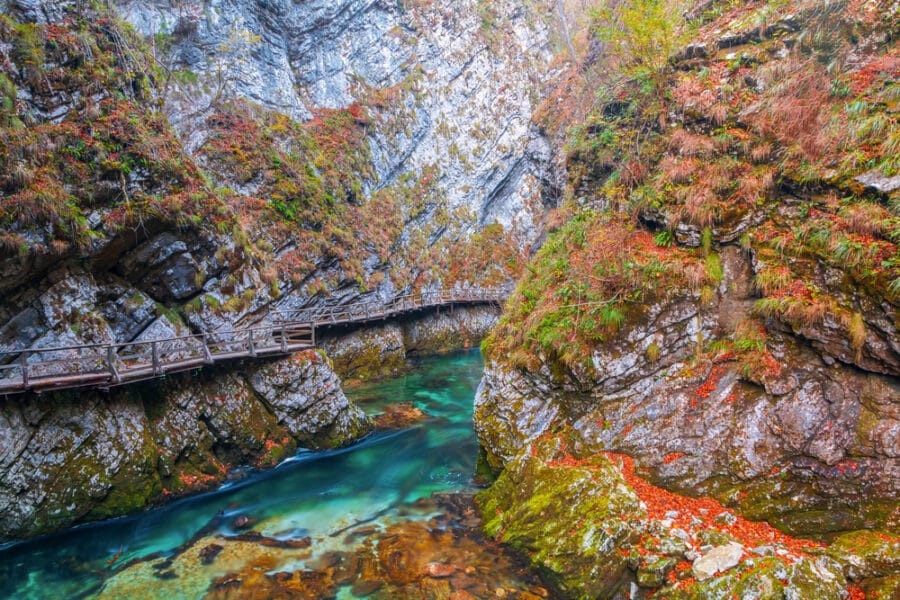
Slovenia may be tiny, but it’s packed with attractions. You can drive across in just a couple of hours, yet there’s everything from towering mountain peaks to historic cities, UNESCO-listed caves , and a spectacular coastline.
Often considered a part of Central Europe rather than a Balkan country, Slovenia has more in common with Austria and Italy than Croatia and Bosnia-Herzegovina. This is a place dotted with onion-domed churches, where geraniums adorn wood-beamed houses and are characterized by a disciplined mindset.
Its major attractions include the Adriatic coast town of Piran , the Škocjan Caves , Ljubljana , Lake Bled , and Triglav National Park.
Best Accommodations In Slovenia
- Where To Stay In Lake Bohinj
- Where To Stay In Kranjska Gora
- Where To Stay In Lake Bled
- Where To Stay In Ljubljana
- Where To Stay In Piran
Best Activities In Slovenia
- Explore the old Ljubljana and learn more about local and national cuisine with this 3.5-hour Guided Ljubljana Food & Wine Tour
- Discover the beauty of the Postojna Cave and the mysterious Predjama castle via this Guided Tour From Ljubljana or Bled
- Immerse into the atmosphere of Piran with this Private Walking Tour with a Local
Population: 2,095,861 (2020)
Flag of slovenia.

Top Destinations In Slovenia
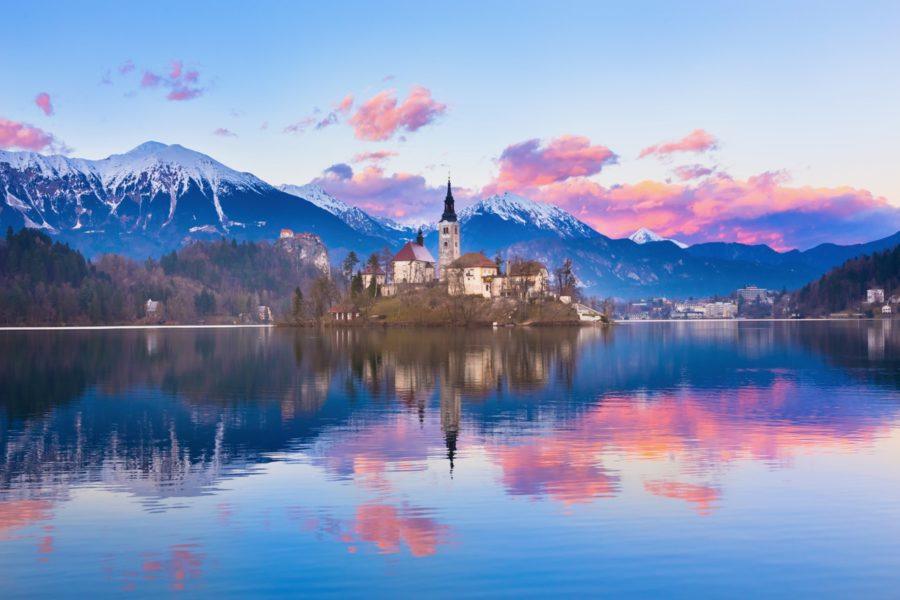
Slovenia might be small, but it packs a punch in the diversity and richness of its landscapes and cultural offerings, distinguishing it from its Balkan neighbors.
Nestled between the Alps and the Mediterranean, Slovenia is a green oasis with an abundance of natural beauty, including pristine lakes, dense forests, and rugged mountains.
The country is a paradise for outdoor enthusiasts, offering everything from skiing in winter to hiking and cycling in the summer season. Ljubljana, the charming capital , is known for its vibrant cultural scene, pedestrian-friendly streets , and a mix of classical and modern architecture.
Slovenia also stands out for its commitment to sustainability, being one of the greenest countries in the world. The culinary scene is another highlight, blending Mediterranean, Alpine, and Balkan flavors. Slovenia’s unique blend of natural beauty, sustainable living, and rich cultural life makes it a standout destination in the Balkans.
- Škofja Loka
- Triglav National Park
- Lake Bohinj
- Postojna Cave
- Best Castles In Slovenia
- Top Beaches In Slovenia
- Where To Go Glamping In Slovenia
- Ultimate List Of Spas In Slovenia
- Guide To Renting And Driving A Car In Slovenia
- Ski Resorts You Can’t-Miss In Slovenia
- Things To Do With Kids In Slovenia
- Best Day Trips From Lake Bled
- Best Day Trips From Ljubljana
- How To Spend 3 Days In Slovenia
- What To Do With Kids In Slovenia
Move This Adventure To Your Inbox & Get An Instant Freebie

No spam. Unsubscribe at any time.
Brands We Use And Trust
Balkans accommodation ideas.
The Balkans offers tourists an amazingly wide variety of choices to pick from. This list mentions only a few of the best places to stay and explore in the Balkans .
If you plan your next holiday , consider the Balkans, and you will realize that it is indeed one of the most diverse parts of the world.
- Our Favorite Balkans Hotels
- Best Beach Resorts In Croatia
- Best Hotels In Albania
- Best Winter Hotels In Greece
- Cool Cave Hotels In Greece
- Top Hotels In Bulgaria
- Fun Turkish Family Resorts
- Luxury Beach Resorts In Turkey
- Best Albania Hotels
- Luxury Hotels In Montenegro
- Luxury Hotels In Romania
- Best Hotels In Slovenia
Balkan Itinerary Ideas
Here are some of our ideas for how to plan your trip across the Balkans.
- Ultimate 5 Day Balkans Itinerary
- Two Week Balkans Road Trip
- Places That Must Be On Your Balkan Itinerary
- Southwestern Balkans Road Trip Itinerary
- 14 Day Turkey & Greece Itinerary
- Guide To Backpacking The Balkans
- How To Spend One Month In The Balkans
The Balkan War
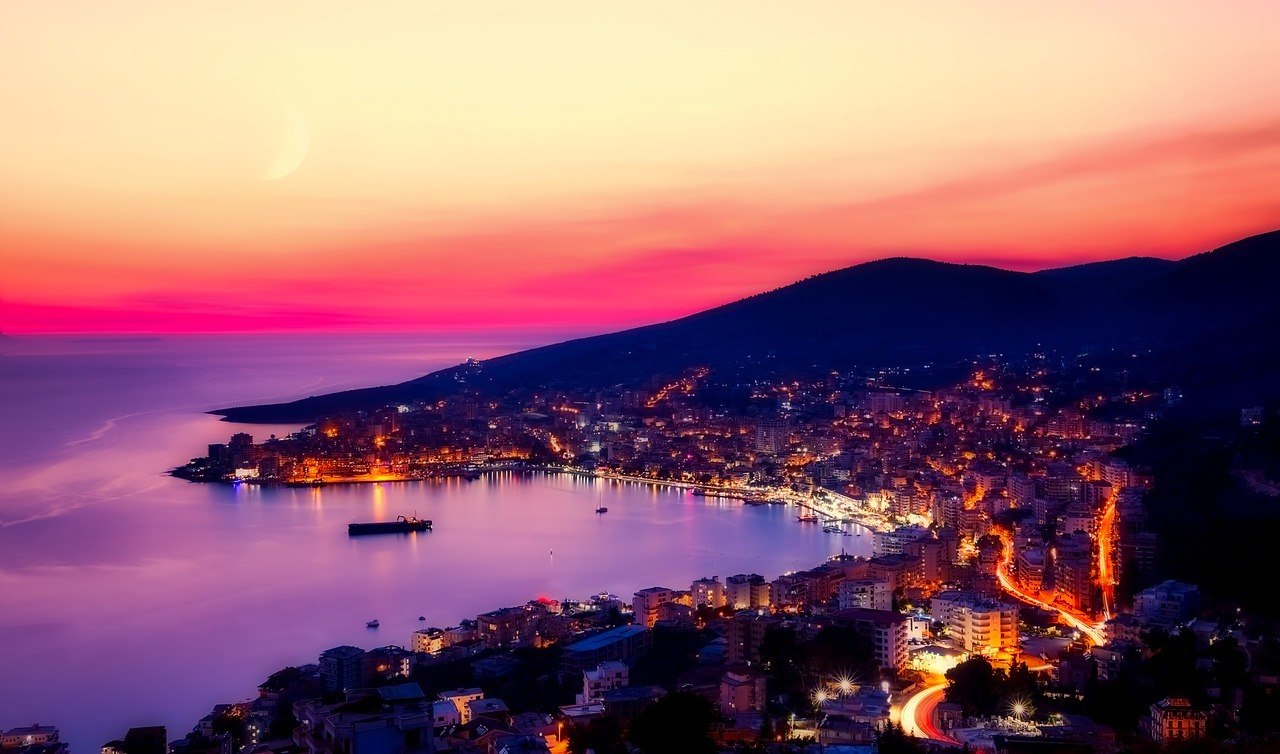
The Balkan War was an incredibly complicated conflict. Sparked by the collapse of the Soviet Union in the late 1980s, this war was the only exception to the peaceful transition from communism to capitalism in Eastern Europe.
The war between Yugoslavian countries was initiated by free elections held in 1991 in Croatia and Slovenia to become independent nations. The Yugoslavian army tried to suppress these newly emerging opinions of freedom.
The two countries declared independence anyway, followed by the Ten-Day War in Slovenia and the Croatian War of Independence that would last until 1995.
In the following years, Yugoslavia’s other countries gradually became independent. The conflict profoundly affected Bosnia-Herzegovina, a nation with large populations of Catholic Croats, Bosnian Muslims, and Orthodox Serbs.
The war eventually resulted in U.N. and NATO interventions. The Croatian and Bosnian wars ended in 1995, while the conflict in Kosovo lasted until 1999.
Nowadays, travel is safe in the Balkans. The region is war-free. Croatia is leading the way with a booming tourist industry.
Balkan Travel Tips Wrap Up
Wrapping up your plans to travel to the Balkans – you’re in for an adventure across some of Europe’s most diverse landscapes and cultures.
Each of the countries in the Balkans offers a unique experience, from ancient ruins to buzzing modern cities. When you’re planning to visit, consider what you want to see and do to choose the best time to visit the Balkans.
Hiring a car can give you the freedom to explore hidden gems, but don’t underestimate the efficiency of public transport here—it’s a budget-friendly way to hop between cities.
Keep an eye out for cheap flights, especially if you’re hopping across countries.
Our travel tips for traveling the Balkans are all about making your trip as smooth and enjoyable as possible, no matter which ones you want to visit. Get ready for an unforgettable journey!
- Best Beaches In The Balkans
- Top Places To Go Hiking In The Balkans
- Balkan Cruises – Where You Can Cruise To In The Balkans
- Best Of The Balkans – Hidden Gems
Comments (42)
Where Will you be going? I’ am currently visiting Serbia, Croatia and Montenegro
I never had any issues travelling with my kids. Montegro isn’t too far from you, but you would love the drive from mostar to sarajevo, i am from australia and a croat, but would love to buy a property in sarajevo.
Dubrovnik is my Favorite, maybe someday will be able to visit!
Yes – it’s a truly great place to visit,as its a UNESCO World Heritage site,but be careful,as it’s very much of a tourist rap,as rgards expenses – also the taxi drivers are somewhat like the mafia – they seem to make up their own prices as they go along ! The old city is really worth seeing – it is worth going to & i walked along the tops of the walls – it takes some time to get around & is a bit punishing on the legs & feet,especially if you might happen to be a slightly older person. Overall a good experience !
ONE DAY I will visit the Balkans. LOVE Eastern Europe!
Is Croatia in the Balkans? I hate that word associated with us!
By some maps and accounts yes. Others no. Depends on your views.
Always consider us gateway of the civilised West
Sorry but I don’t consider us Eastern European!
What do you consider it Slavko
I have road-tripped with a newborn and an older child, and my big piece of advice would be to not all cram into one small hotel room, if you can help it. If you can, splurge on 2 rooms or find houses/apts to stay in so that everyone can hopefully sleep better.
Ohh yeah, long gone are hotel days with kids. They make too much noice ahhahaha. You are so right.
Good tip! Thanks
Did you purposely leave out Kosovo ? They also use the euro. It is not just two countries . I bet the people in Kosovo would also like to be included in this travel lost. It is a nice country to visit .
Yes, it was intentional. I have not been, nor anyone I know has been there – so how can I advise people on a place I have no clue about? I bet the people in Kosovo would love you to write a travel blog about them – so go ahead – good luck.
This is a really informative article about the Balkans! Thank you. I’ve always been interested in traveling there, but did not know the history as you explained it. I did not know where to start; however, after your article the western Balkans may be my next destination!
Leave a Reply Cancel reply
Your email address will not be published. Required fields are marked *
Save my name, email, and website in this browser for the next time I comment.
This site uses Akismet to reduce spam. Learn how your comment data is processed .
Subscribe To Unlock Your FREE Customizable Travel Packing List & All Our Best Tips!
Unlock Your FREE Customizable Travel Packing List!
Subscribe Now For Instant Access To Stress-Free Packing

Balkans Road Trip 10 Day Itinerary & Ultimate Travel Guide
Planning a European vacation and wondering where to go? This Balkans road trip 10 day itinerary is for you.
My best friend is one of the only people I know who probably travels more than I do. While we’ve been on big group trips together, we’d never done a 1:1 trip.
Last year, we decided to remedy this and began researching where to go. To narrow down on a destination, we flipped through a National Geographic book, Destinations of a Lifetime .
The destination that immediately jumped out was the Balkans region of Europe. While I’d previously cruised to Dubrovnik and Kotor, I had never given this region much exploration.
Between the natural beauty, rich culture, and relatively inexpensive prices, this area was a clear choice for our vacation.
Fast forward to now, we just got back from the trip. It went better than I could have ever imagined, and I am obsessed with this area.
This Balkans Road Trip 10-day itinerary will explain in detail how to plan a visit to this region, destination guides, and general travel tips .
If you are planning or considering a vacation to the Balkans region of Europe, keep reading for a ten-day itinerary and complete travel guide.
Some links on this blog are affiliate links, meaning I may earn a commission at no extra cost to you if you make a purchase through them. All opinions are my own, and I only recommend products and services I personally use and believe in. Thanks for your support!

Overview of a Balkans Road Trip 10 Day Itinerary
You could easily spend weeks exploring all of the Balkans. There are many great countries with plenty of places worth visiting.
However, 10 days is a great amount of time to see the highlights of the area. Below is an easy ten-day Balkans itinerary.
This itinerary has a mix of one and two-night stays in different cities. While this is quick-paced travel, some of these towns are quite small and can be seen in a day.
At the end of the guide, I will share some potential trip extensions if you are seeking a longer trip.
- 2 nights Tirana Albania
- 2 nights Dubrovnik Croatia
- 2 nights Split Croatia
- 1 night Mostar Bosnia and Herzegovina
- 1 night Kotor Montenegro
Keep reading for detailed destination guides for each of these places as well as general travel tips for a Balkans road trip.
Tirana Albania – 2 Nights
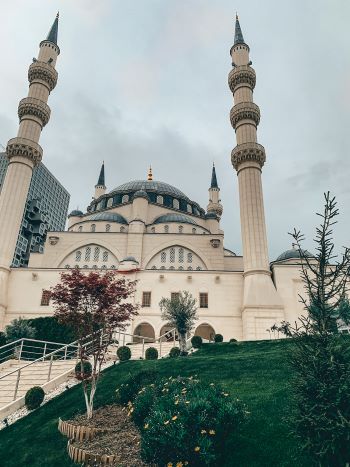
When I discussed this trip with people, I often got weird looks when I said I was visiting Albania. Many people have a skewed view of the country based on the communist regime that existed until the early 90’s.
Since then, the country has been rebuilding and expanding tourism, but is still an unusual destination to some.
However, Albania is actually a fantastic vacation destination and I encourage you to visit before everyone else get’s in on the secret.
With only two days in Albania on this Balkan’s itinerary, I suggest spending all your time in the capital of Tirana . On a longer trip, I’ve also heard great things about the Riviera.
Where to Stay
Tirana Intercontinental – The location of this new Intercontinental hotel cannot be beat. It overlooks the city square which is the center of all tourist destinations in Tirana.
Tirana Marriott – The Tirana Marriott is also brand new and is easily one of the nicest hotels in the city. The rooms are large, modern, and nicely decorated. In addition, the hotel is walking distance to all of the tourist sites in the city center.
Tirana Free Walking Tour – Free walking tours are very common in Europe. The concept is that a local guide will put on a tour for “free” in exchange for tips. The typical tipping amount is between $10 and $30 per person, so this is a very low-cost activity.
The Tirana free walking tour is one of the best I’ve done. It visits the top attractions in the city such as Skanderberg square, Blloku, Totani Street, Tirana castle, and bunkers.
The tour is the perfect mix of entertainment and educational. It covers the majority of the city in only a couple hours.
I recommend starting your trip with this tour to get a lay-of-the-land to prioritize what you may want to see more of afterwards.
Bunkart Museum – Museum dedicated to the communist era of Albania. It’s a bit challenging emotionally but provides a good understanding of life in Albania during that time period.
Spy Museum – If you’re interested in the communist regime, this museum deep dives on the spies that were very active at that time.
Dajti Mountain Cable Car – For great views of the city, take a taxi to this cable car just outside of the city for mountaintop views overlooking Tirana.
Where to Eat
Era Blloku – Casual, local cuisine. Great lunch option!
Artigiano – Tasty Italian pizza and pasta
Oda – One of the most recommended restaurants. They serve traditional food, but the menu is a bit adventurous so be sure to preview it before you dine
Mullixhiu – Fine dining local cuisine, with a tasting menu available for around $30 per person. Be sure to get a reservation for this popular spot.
La Gioia – Fun restaurant located within the remains of the Tirana castle
Dubrovnik Croatia – 2 Nights
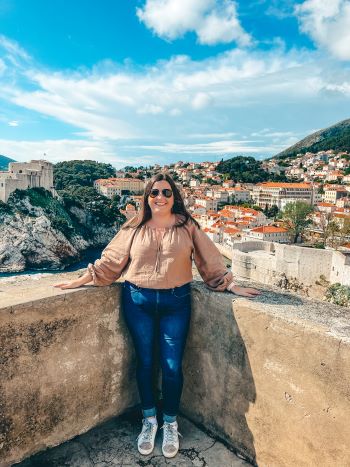
The drive from Tirana to Dubrovnik is around 6 hours, making it one of the longer drives of the trip. However, it’s a beautiful drive and well-worth it for time in this beautiful city.
I visited Dubrovnik for the first time in 2017 on a Mediterranean cruise. I love cruising because it allows you to see a bunch of destinations, then decide where to go back and spend more time.
Dubrovnik was one of those places I discovered that I immediately knew I wanted to come back to for more time.
After visiting for the second time, I can confidently say that Dubrovnik is one of my favorite cities in the world.
It’s absolutely beautiful with the Adriatic Sea, historic old town, and the iconic orange roofs. There’s also a lot to do, see, and eat in the area.
Hotel Bellevue – This is one of the prettiest hotels in Dubrovnik. The grounds and amenities are amazing with water views from every window. This is a great place to stay if you are planning some pool or beach time during your vacation.
Hilton Imperial – If your trip is focused on sightseeing around Old Town, the Hilton Imperial is the best option. This beautiful historic hotel is located across the street from the city gates, for super easy access.
Vacation Rental – The best way to stay within the city walls is in a vacation rental such as this three-bedroom home or this duplex apartment .
Dubrovnik walking tour – This free walking tour gives a great overview of the history of the city. It also visits the major areas of the old town such as the port, government buildings, and church.
Taking this tour will give you a better understanding and appreciation of Dubrovnik.
Walk Dubrovnik Old Town walls – For 35 euros per person, you can walk the city walls around the entire town.
Although it’s a bit expensive, the views from the wall cannot be beaten. There are also bars and cafés along the walk to stop for a drink with a view.
Banje Beach – If the weather is nice, Banje beach is a great place for a day of relaxing next to the water.
Kayak Tour – To get the full Dubrovnik experience and see it from the water, I highly recommend a kayak tour. You will be able to explore the waters and get great photos.
This sunset kayaking tour is the best option because it comes with wine, bruschetta, and some of the best sunset views in the city.
Mount Srd – Visit this mountain peak with a hike or gondola ride for panoramic views of the city and water.
Buza Bar – The entrance to this bar is through a hole in the city walls. The bar is perched on the outside of the walls over the water, giving it amazing views.
In the summer, there are cliff jumping platforms you can jump off of into the ocean. Even if you don’t want to swim, this bar is a great place to visit for the views alone.
Lady Pi-Pi – Local cuisine with some of the best views in the city. Arrive early for lunch or dinner to get one of the best tables in the restaurant.
Taj Majal – Michelin star Bosnian restaurant that was my favorite meal of the entire trip. The food is incredible, and not overly fancy or expensive as some Michelin restaurants are.
Pizzeria Oliva – Casual pizzeria in the heart of old town.
Peppinos Gelato – Known as the best gelato in Dubrovnik, with unique flavors full of mix ins such as nougat, nuts, and caramel.
aRoma Gelato – My favorite Gelato in Dubrovnik. This is actually a Croatian chain, so you will probably see a few on your trip. Their flavors are so good! Be sure to try the chocolate with orange flavor.
Split Croatia – 2 Nights
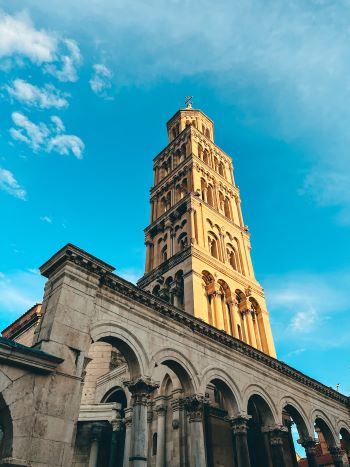
The second driving leg of this road trip is much shorter, and very scenic. It should only take around two hours and will follow the coast for most of the drive.
After falling in love with Dubrovnik, I was so excited to see Split . I’ll be honest, it didn’t live up to my super high expectations.
However, I still recommend visiting Split on your Balkan’s Road trip because it is the perfect home-base for day trips in the area.
Also, the old town is built directly into the ruins of Diocletian’s palace which is definitely worth exploring.
Juditha Palace Heritage Hotel – The key to choosing a hotel in Split is the location. The city is very large and spread out, so be sure to stay in the Old Town near Diocletian’s Palace. The Juditha Palace Heritage Hotel is in a great location, walkable to most of the sights. It’s also nicely decorated with a historic style.
Piazza Heritage Hotel – The Piazza Heritage Hotel is a comparable option to the above hotel with a similar location, style, and price point. You can’t go wrong with either of these options for your Split vacation.
Blue Cave Tour – This boat tour was one of the highlights of my trip and a cant-miss activity from Split. The tour visits the blue cave, which is a natural phenomenon where a cave is lit up bright blue.
In addition to seeing this cave, the tour visits the Croatian islands of Vis and Hvar. In the summer, there is time for swimming and in the cooler months, you can go sightseeing.
Blue Lagoon Tour – The above option is my top recommendation for a boat tour from Split. However, if you want a half-day trip (versus the above full day option), this tour to the nearby blue lagoon is also great.
You will visit the city of Trogir and the blue lagoon, where you can take a swim in the bright blue waters.
Diocletian’s Palace – As mentioned above, the old city is built into and around the Diocletian’s palace. You can wander the ruins on your own or take a guided tour .
Krka National Park – Krka national park is a great day trip from Split. This national park has a variety of sites, but the most popular is the Skradinski Buk waterfalls.
You can visit the park on your own by driving to the town of Skradin, purchasing entrance tickets, then taking the provided boat to the falls. Alternatively, you can take a guided tour from Split to have everything done for you.
Konoba Korta – Tasty restaurant in the heart of the Old City with a variety of options such as pasta, steak, and local dishes.
Mr Pozzetti Ice Cream – A fun novelty dessert where you can get gelato served in a warm chimney cone with a variety of flavors such as cinnamon sugar or sprinkles.
Mostar Bosnia Herzegovina – 1 Night
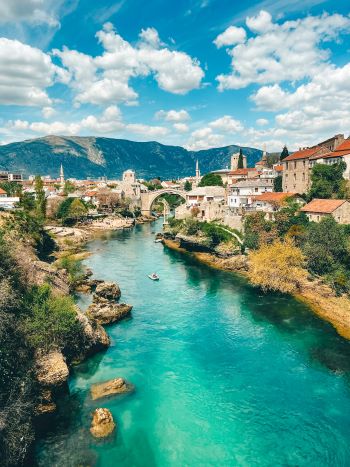
Mostar was the most pleasant surprise of the trip. If you take one thing away from this guide, it should be that Bosnia Herzegovina is worth a visit.
The town of Mostar is only a two-hour drive from Split, with the drive winding through the countryside to get there.
Mostar is set on a river and looks straight out of a fairytale. There are cobblestone streets, restaurants overlooking the river, and an iconic historic bridge.
Beneath the fairytale facade is a less-romantic history of war. There are still ruins and a lot of destruction from the war 1990’s war.
This history is very interesting to learn about as the country is still working to recover.
Mostar Marriott – This Marriott is the clear best choice for a hotel in Mostar. It’s only a five-minute walk from the iconic Mostar bridge, which is the center of the tourist area. The hotel is also new, with a trendy design, spacious common areas, and a pool.
Vacation Rental – Since there aren’t many hotels in Mostar, a vacation rental is a great option. There are a variety of houses and apartments near the old town, depending on your group’s size.
Mostar walking tour – As with most places on this guide, the Mostar free city tour is a great first activity.
You will learn about the war, history, and significance of Mostar. You will also walk around the town and learn about the important neighborhoods and buildings.
Koskin-Mehmed Mosque – For four Euros, you can climb to the top of this Mosque for great views of the town
Stari Most – This is the iconic bridge that you will see in most photos of Mostar. At the top of the bridge, will see locals asking for money.
Once they raise around 50 euros, they will jump off into the water. If you want to see someone jump, be prepared to wait because it can take up to an hour for them to raise the funds.
Old Town Market – On the Muslim side of the river, there is a small market where you can buy handcrafted gifts and souvenirs.
The most authentic item to buy in Mostar is any copper goods. I got a cute copper bracelet for only 3 euros.
Hindin Han – Super cute restaurant with two level deck that overlooks the river. The mixed grill plate is also delicious!
Lagero – Arguably the best view in the city and the food is great too! Get here early to secure and outdoor table with views of Stari Most.
Tima Irma – This was the most recommended restaurant in Mostar, but was unfortunately closed during my visit.
Café de Alma – Experience traditional Bosnian and Turkish coffee
Kotor Montenegro – 1 Night
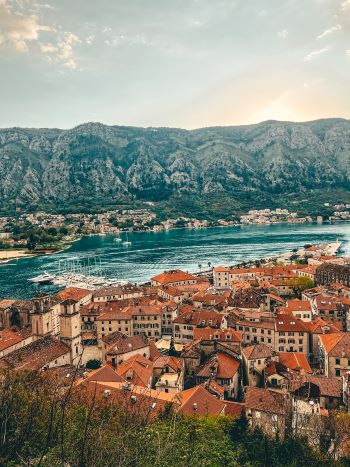
Head back to the coast for the final stop of this trip in Kotor. The drive from Mostar to Kotor is approximately three hours.
Kotor is an old walled town that is situated deep in a fjord. It’s a popular cruise ship destination, so it can get busy in the day but will calm down when the ships leave for the day.
Kotor reminds me a lot of Croatia with the historic town, orange roofs, and Adriatic roofs. Like Dubrovnik, Kotor is a UNESCO world heritage site.
However, it’s less crowded and less than expensive than Croatian cities such as Dubrovnik. Some of the top things to do in Kotor include exploring the town or spending time on the water.
If you’re tired by this point on the Balkans vacation, Kotor is a great place to relax on the water or take a relaxing boat trip.
Historic Boutique Hotel Cattaro – This historic hotel is built directly into the city walls of the Kotor old town. While the décor is a bit outdated, you cannot beat the location of this hotel.
Vacation Rental – Similar to Mostar, a vacation rental is a great option since there are limited hotels. This penthouse with a pool or this waterfront house are both great places to stay near the Kotor Old Town.
Kotor Walking Tour – To no surprise, the walking tour of Kotor is great. The tour visits the entirety of the small walled city.
Learn about the history and learn about the different squares, such as cat square, cathedral square, or salad square.
Hike to San Giovanni Fortress – For eight euros per person, you can hike to the San Giovanni Fortress that overlooks the bay.
The hike takes around 40 minutes to get up to the top. Alternatively, you can stop halfway at the church for (almost) equally great views.
Boat Tour – Explore Kotor from the water with this boat tour that visits a blue cave, a floating island church, and a couple swimming spots.
Restaurant Tanjga – One of the best meals of the trip. Choose from a selection of meats at the butcher counter and have them grilled by the chef. This place looks like a bit of a dive but trust me it is a must-visit.
Cattarissimo – Bakery and gelato. Try the local dessert – layered puff pastry with vanilla cream
Frequently Asked Questions about Balkans Travel
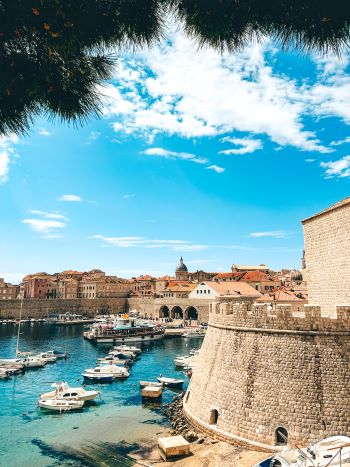
If you aren’t super familiar with the Balkans, here are some answers to the most common questions you may be wondering about.
Where are the Balkans?
The “Balkans” are a mountain range in Eastern Europe. In fact, the word “Balkan” means mountain in Turkish. The Balkans region refers to the countries that are located around the mountain range.
The countries that make up the Balkans are Romania, Moldova, Bulgaria, Greece, Albania, Serbia, Croatia, Slovenia North Macedonia, Bosnia and Herzegovina, and Montenegro.
There is some debate as to which specific countries make up the Balkans, but this list is fairly agreed upon.
Why Visit the Balkans
When people are considering a European vacation, they typically think of the most popular countries such as England, Italy, France, Germany, and Spain.
However, there are plenty of amazing reasons to branch out to other areas such as the Balkans.
For one, this area is absolutely beautiful. There are countries that border the Adriatic Sea and the mountains, making scenic views plentiful.
In addition, there is a ton of recent history in this area. With communist occupations, the rise and fall of Yugoslavia, and other unrest, there is a lot to learn about in these countries.
Finally, the Balkans region is significantly less expensive than other areas of Europe. A nice hotel is typically around $100 per night and meals (including alcohol) are below $30 for two.
Note – Areas of Croatia, such as Dubrovnik, are much more expensive than other areas in the Balkans with prices comparable to the United States.
The Best Time to Visit the Balkans
The best time to visit the Balkans is April/May and September/October. While the summer is a popular time to visit, there will be very large crowds and more expensive prices.
In addition, some Balkans countries get very hot in the summer (over 110 degrees Fahrenheit.)
Alternatively, a lot of the popular tourist destinations shut down in the winter, so it will be very challenging to find activities and restaurants.
For these reasons, late spring and early fall are the best times to visit.
Tips for Driving in the Balkans Region of Europe
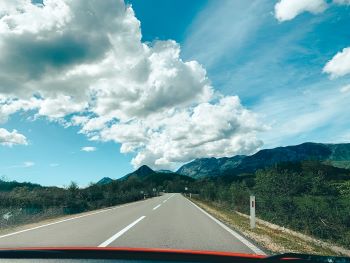
My biggest concern planning this Balkans road trip was the rental car. I’ll be honest, it’s not the simplest process. However, driving is the best and most cost-effective way to get around the area.
International Drivers Permit
A few Balkans countries such as Bosnia and Herzegovina and Albania require all drivers to have an international drivers permit.
This can be purchased at your local AAA office, even if you aren’t a member. You will just need your driver’s license, passport-sized photos, and the request form.
My international permit was only $40, including the photos.
Crossing Borders
When booking your rental car, confirm that it is permissible to cross into every country you plan to visit.
Surprisingly, a lot of rental car companies have bans on visiting certain countries in the area. If you are following this itinerary, Enterprise allows you to visit all four countries.
The second item to check before booking is the one-way fees of picking up and dropping the car in different countries.
In my case, it was five times more expensive to do a one-way drop off, so we opted to drive a loop instead to start and end in Albania.
Green Card Insurance
Finally, once you have a car, be sure to have all the necessary documentation to cross the border. The first item you may need is a written authorization from the rental car company.
The second item is called a green card. A green card is a document that is proof of car insurance for each country.
If you are coming from Albania, a green card for Montenegro, Croatia, and Bosnia can be purchased immediately before the border. The comprehensive pass costs 40 euros.
The other option is paying the insurance fee at each border crossing. However, I don’t recommend this as it’s much more expensive and will waste time in the long run.
Extending this 10 Day Balkan Itinerary
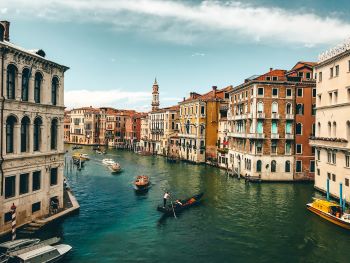
If you have more time to extend your trip, it’s easy to head North, South, or West to other great destinations.
If I had more time, I would have extended north into Slovenia to visit Lake Bled or Ljubljana. I haven’t visited Slovenia before, but I’ve seen amazing things and it remains high on my bucket list.
Another trip extension option would be to start further south in Greece. The island of Corfu is directly across the border from Albania.
In the other direction, you could continue northwest following split to head into Northern Italy, to destinations such as Venice .
The great thing about Europe is that the countries are very close together and easy to get between. It’s simple to add onto this itinerary and make it your own.
Summary of this Balkans Road Trip 10 Day Itinerary
All in all, this ten-day Balkans Road trip itinerary will allow you to see five towns and four countries. While its fast paced, this itinerary will allow you to see the highlights of Albania, Croatia, Bosnia and Herzegovina, and Montenegro. Afterwards, you can decide which places you want to revisit for a longer time.
Related Posts:
- Best European Countries to Visit in November: 28 Trip Ideas
- The Best Things To Do In Tirana Albania – Two Day Itinerary And Travel Guide
- The Top Things To Do In Mostar Bosnia Herzegovina – Travel Guide And One Day Itinerary
- Travel Guide & Itinerary For One Day In Dubrovnik Croatia
- 2 Days In Split – The Top Things To Do And See In Split Croatia
- Day Trips From Dubrovnik – The Top Places To Visit Near Dubrovnik Croatia In The Summer
- One Day In Kotor – The Best Things To Do And One Day Itinerary
- Europe Trip Itinerary: Planning The Perfect 3 Weeks In Europe
Pin for Later:
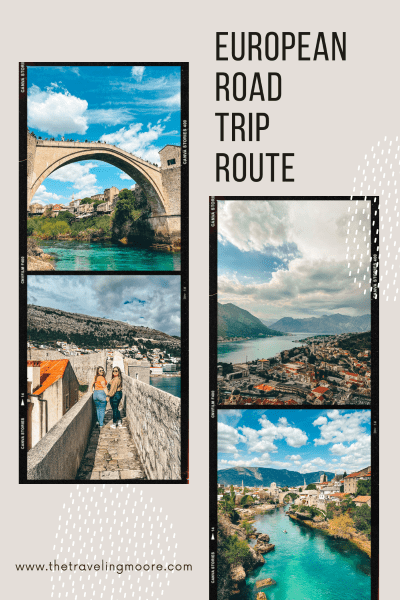
- The 9 Best Things to Do in Chelan Washington (From a Local)
- Road to Hana Guide- 10 Best Stops and 1-Day Itinerary (2024)
- Joshua Tree National Park in the Summer
- Planning a Trip to Uganda: Complete Uganda Travel Blog
Lauren is the creator of The Traveling Moore blog. She's travel obsessed, having been to nearly 50 countries and all 7 continents. She has a full time corporate job, and loves showing others that it's still possible to travel the world with limited PTO hours. Lauren is also travel hacking obsessed, finding every way to travel more often and more luxuriously.
Similar Posts
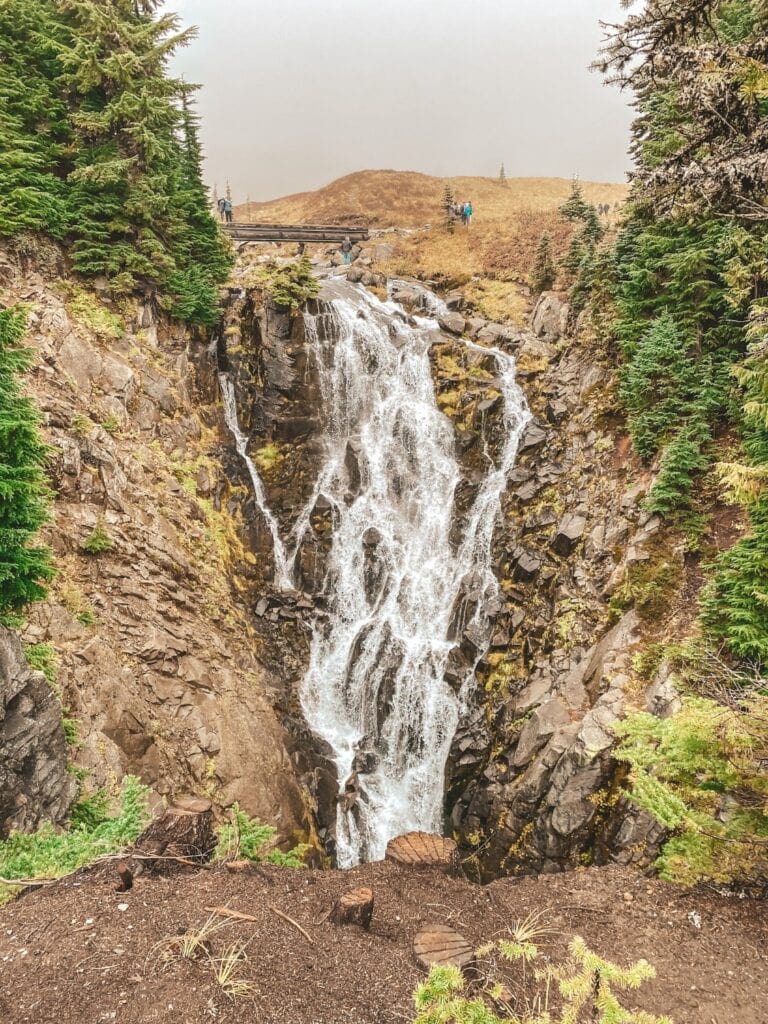
Planning a Trip to Washington State: Insider Tips from a Local
Share via: Facebook Twitter LinkedIn Copy Link More Washington State is a beautiful destination in the pacific northwest United…
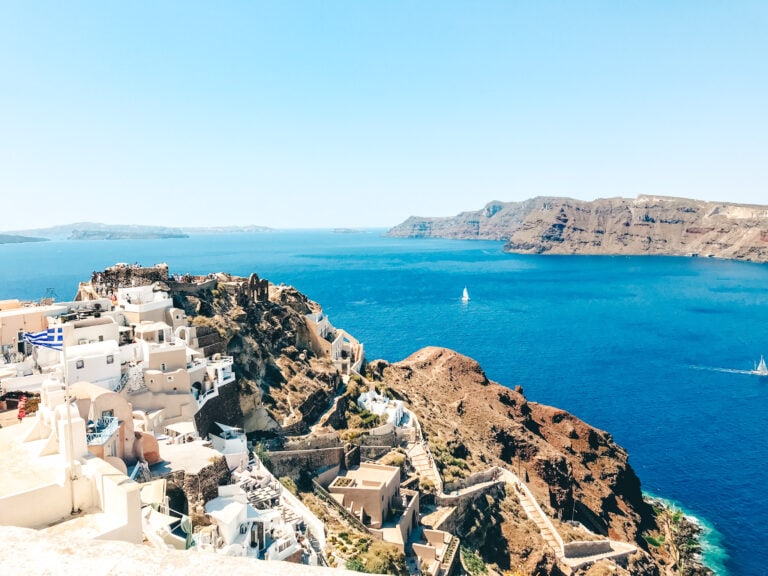
One Day in Santorini Itinerary for Cruisers: Travel Guide
Share via: Facebook Twitter LinkedIn Copy Link More Santorini Greece is probably one of the most popular and picturesque…
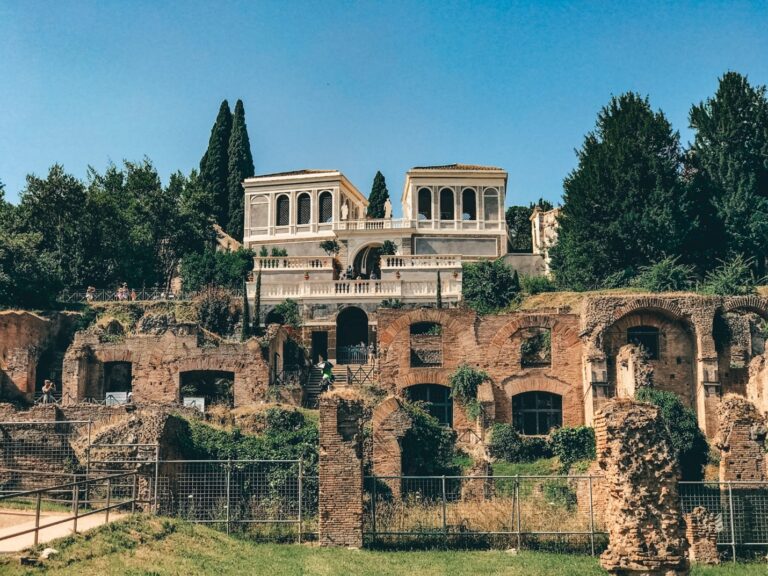
Epic 4 Day Rome Itinerary For First Time Visitors
Share via: Facebook Twitter LinkedIn Copy Link More This 4-day Rome itinerary will allow you to see all the…
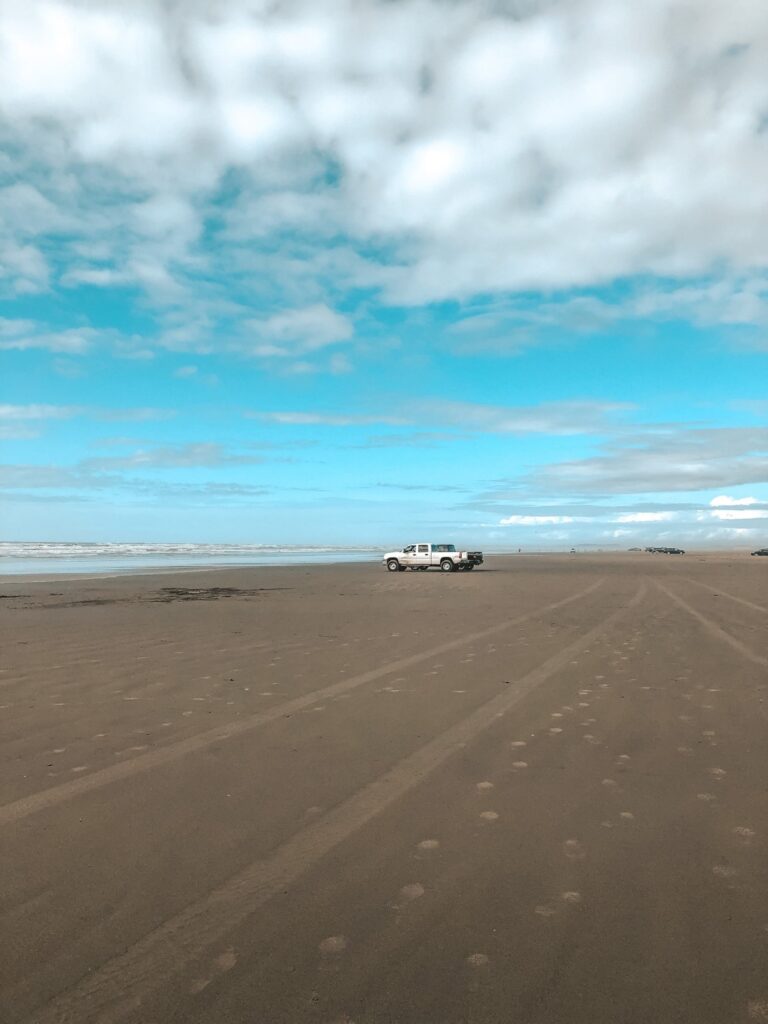
5 Top Things to Do in Ocean Shores Washington (2024)
Share via: Facebook Twitter LinkedIn Copy Link More If you’re planning a weekend getaway to the Washington State coast,…
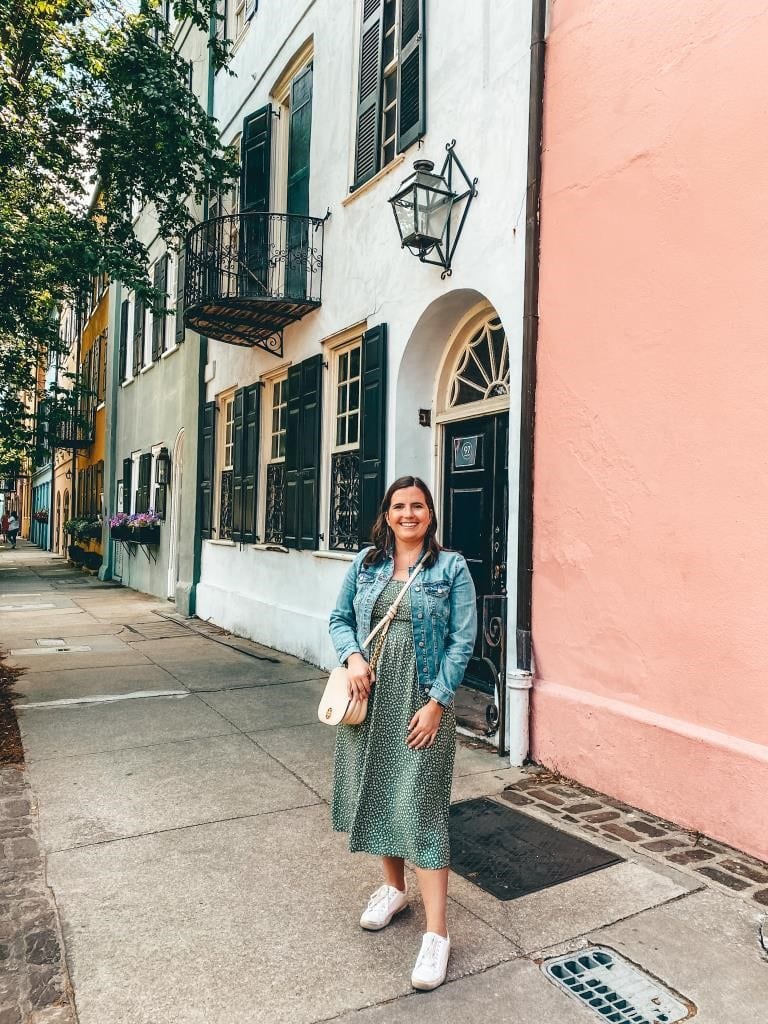
24 Hours in Charleston: Perfect One Day Itinerary
Share via: Facebook Twitter LinkedIn Copy Link More Charleston South Carolina is one of my favorite cities in the…
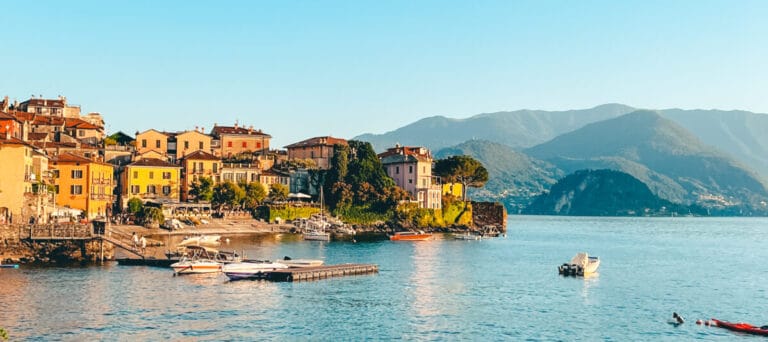
Luxury Lake Como 2 Day Itinerary and Summer Travel Guide
Share via: Facebook Twitter LinkedIn Copy Link More This Lake Como 2-day itinerary explains the top things to do…

Traveling the Balkans by Train: An Unforgettable Adventure
Embarking on a Balkan train journey offers a unique opportunity to immerse in the rich blend of cultures, stunning landscapes, and historical treasures that this region is renowned for This guide aims to illuminate the most scenic and efficient train routes, providing essential tips for planning an unforgettable train adventure in the Balkans. The Allure of the Balkans The Balkans, a region steeped in history and cultural diversity, is a mosaic of picturesque towns, ancient ruins, and diverse landscapes. From the azure coasts of Croatia to the rugged mountains of Albania, the Balkans offer a unique blend of natural beauty and historical intrigue.
Planning Your Train Journey When planning a train trip through the Balkans, consider the key destinations you wish to explore. Major cities like Belgrade, Sofia, and Sarajevo are well-connected by rail, offering a glimpse into the region’s rich history and vibrant culture.
Choosing the Right Train Routes Selecting the right train routes is crucial for an efficient and enjoyable journey. The Balkan train network connects various countries, offering routes such as the Belgrade-Bar line, known for its stunning vistas. Researching Balkan train routes is essential to find the best options for your itinerary.
Tips for a Smooth Train Travel Experience
Book in Advance: Train tickets in the Balkans can often be booked online, ensuring you have a reserved seat. Travel Light: With varying train sizes and storage options, it’s advisable to pack light for ease of travel. Stay Informed: Keep updated on train schedules and any potential delays or changes. Experiencing the Local Culture Train travel in the Balkans isn’t just about the destinations; it’s also about the journey. Engage with locals, try regional delicacies, and immerse yourself in the unique atmosphere of each country.
Safety and Comfort While the Balkans are generally safe for travelers, it’s important to stay aware of your surroundings and keep your belongings secure. Comfort on trains can vary, so bring essentials like a travel pillow and snacks.
Discovering the Hidden Gems of the Balkans by Train
As you continue your train journey through the Balkans, it’s essential to explore the lesser-known yet equally enchanting destinations that this region offers. Each stop presents an opportunity to discover something new and extraordinary.
Embracing the Scenic Routes The beauty of train travel in the Balkans lies in the scenic routes that meander through mountains, rivers, and historic towns. Routes like the journey from Sofia to Thessaloniki take you through rolling landscapes and offer glimpses of rural life, untouched by the hustle of modern cities.
Cultural Insights on the Rails Each train ride in the Balkans is a cultural experience in itself. From the traditional music played by fellow passengers to the stories shared by locals, these journeys provide a deep dive into the soul of the Balkans.
Eco-Friendly Travel Opting for train travel is not only a unique way to see the Balkans but also an eco-friendly choice. Trains in this region are becoming more sustainable, offering a greener way to explore.
Budget-Friendly Tips Train travel in the Balkans can be surprisingly affordable. Look for regional passes or special discounts for students and seniors. Eating at local bakeries and markets also helps to keep the travel costs down while offering authentic culinary experiences.
Connecting with Nature Many train routes in the Balkans offer access to natural wonders, from national parks to serene lakes. Take advantage of these stops to connect with the natural beauty of the region.
End Your Journey with a Story to Tell As your train adventure in the Balkans comes to a close, you’ll have not only seen some of Europe’s most stunning landscapes and historic sites but also experienced the warmth and hospitality of its people. This journey is more than just a trip; it’s a narrative of discovery, culture, and natural beauty.
Top Balkan Train Journeys and Their Prices
Here’s a list of notable train journeys in the Balkans, along with approximate prices:
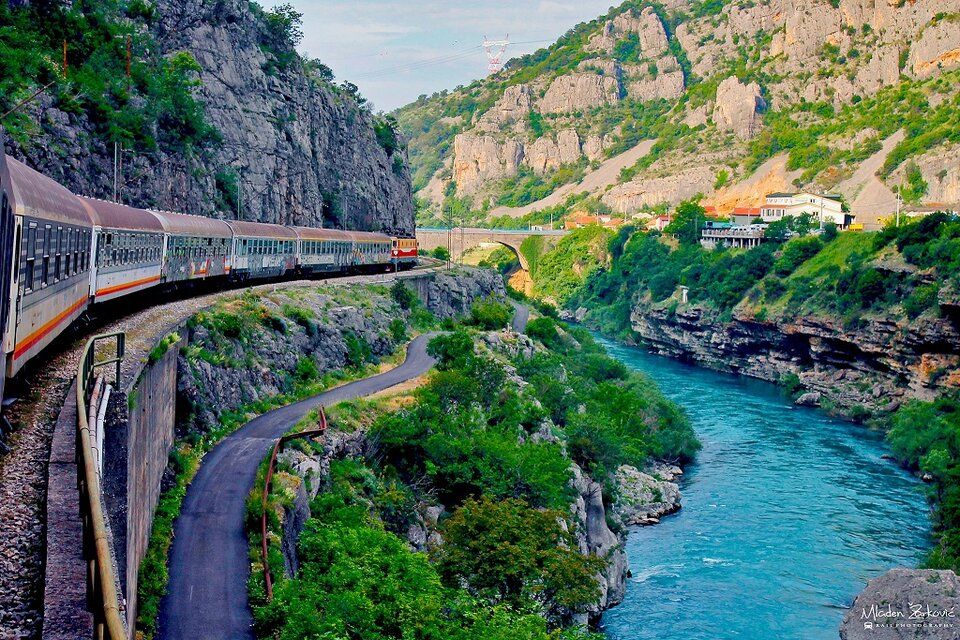
Belgrade to Bar: Is one of the most scenic and captivating rail routes in Europe, offering a unique glimpse into the diverse landscapes and rich history of the Balkans. This iconic route stretches approximately 476 kilometers, connecting Serbia’s vibrant capital, Belgrade, with the picturesque coastal town of Bar in Montenegro. As the train meanders through the rugged terrain, passengers are treated to a visual feast: from the lush valleys and rolling hills of the Serbian countryside to the dramatic mountain landscapes and deep gorges of Montenegro. The journey includes crossing the Mala Rijeka Viaduct, one of the highest railway viaducts in the world, providing breathtaking views. This route is not just a means of travel but a memorable adventure, offering insights into the cultural and natural beauty of the Balkans. Whether you’re a train enthusiast, a lover of nature, or a curious traveler, the Belgrade to Bar train journey promises an unforgettable experience. Approximate price: €21-€40.
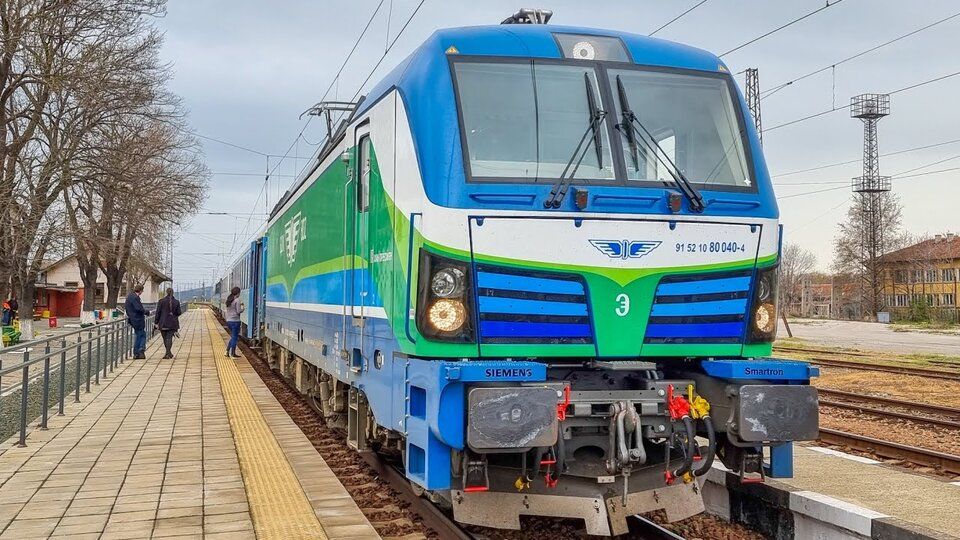
Sofia to Plovdiv, Bulgaria: The rail journey from Sofia to Plovdiv is a quintessential experience for anyone exploring Bulgaria by train. This route, a key part of any Balkan train journey, offers a delightful glimpse into the heart of Bulgaria’s scenic landscapes. As the train rolls out of Sofia, the capital’s urban vistas give way to the tranquil beauty of the Bulgarian countryside, with views of rolling hills and quaint villages dotting the landscape. The journey, covering around 150 kilometers, is not only a feast for the eyes but also remarkably affordable, with prices typically ranging from €5 to €10. Arriving in Plovdiv, you’re greeted by a city steeped in history, boasting a rich tapestry of Roman, Byzantine, and Ottoman influences. This train trip combines the allure of Bulgarian culture and natural beauty, making it a must-do for those seeking an authentic Balkan rail experience. Approximate price: €5-€10.
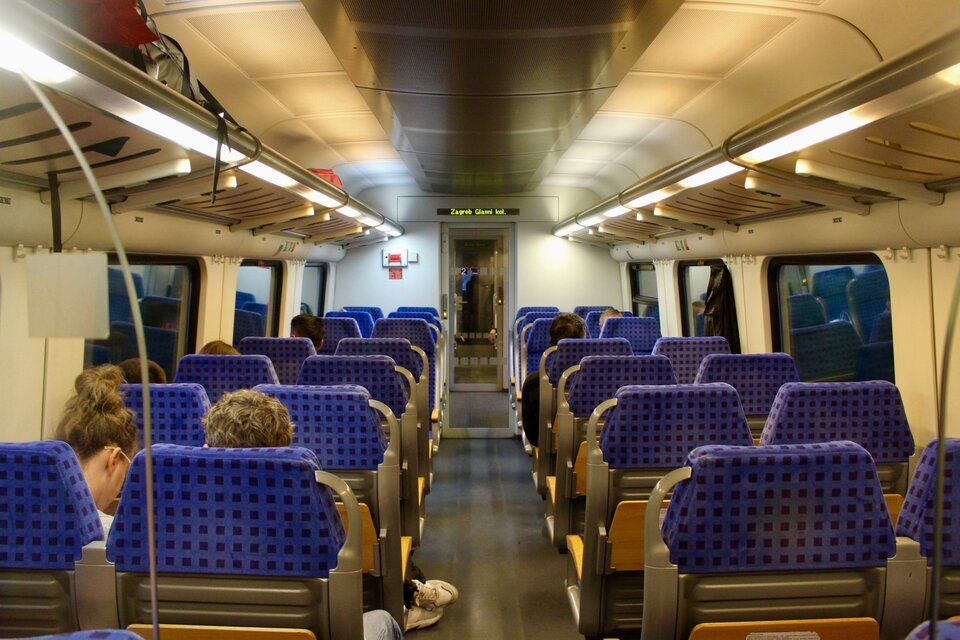
Zagreb to Split, Croatia: The train journey from Zagreb to Split is a captivating experience, showcasing the diverse beauty of Croatia. As you embark on this rail adventure, the urban landscape of Zagreb, Croatia’s lively capital, gradually transitions into the stunning natural scenery that defines the country. The route, stretching over 400 kilometers, offers a panoramic view of Croatia’s varied landscapes, from lush green hills and fertile plains to rugged mountainous regions. This journey, typically lasting around six hours, is not just a travel necessity but a scenic voyage, allowing passengers to witness the breathtaking beauty of Croatia’s interior before reaching the coastal splendor of Split. Known for its historic charm and picturesque waterfront, Split awaits as a splendid culmination to this memorable Balkan train journey. With reasonable prices and comfortable services, this train trip from Zagreb to Split stands out as a must-experience route for those exploring Croatia by rail. Approximate price: €16-€30.
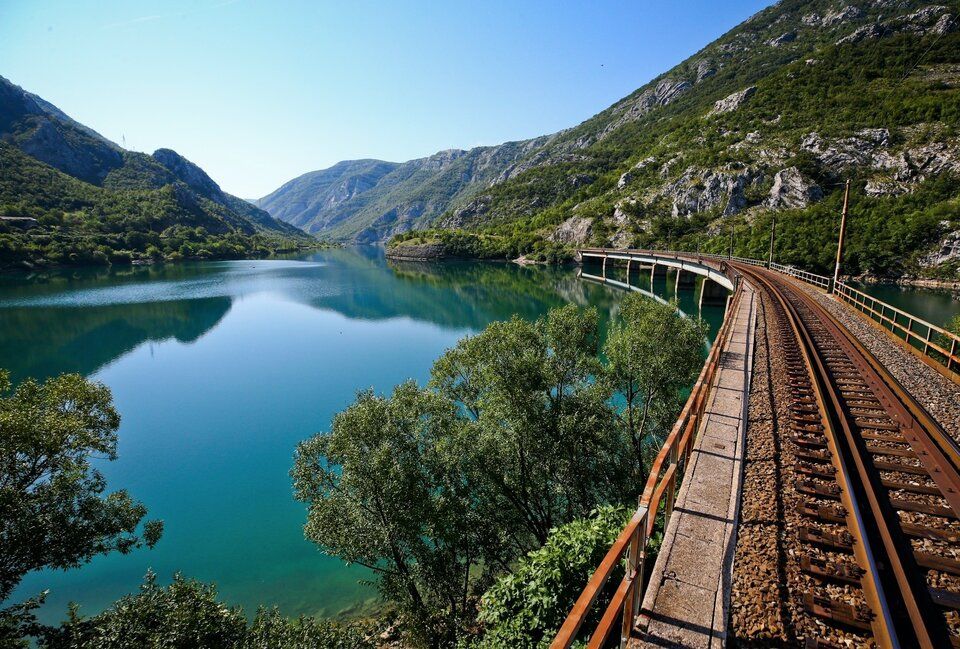
Sarajevo to Mostar, Bosnia and Herzegovina: Embarking on the train journey from Sarajevo to Mostar in Bosnia and Herzegovina is like traveling through a living museum, rich in history and natural beauty. This rail route, a highlight of any Balkan train journey, offers some of the most picturesque landscapes in the region. As the train snakes its way out of Sarajevo, the capital known for its unique blend of Eastern and Western cultures, it enters a realm of awe-inspiring natural beauty. The approximately two-hour journey to Mostar is a visual feast, featuring dramatic canyons, serene rivers, and the rugged, emerald landscapes of the Herzegovinian mountains. Upon arrival in Mostar, travelers are greeted by the iconic Stari Most (Old Bridge), a symbol of resilience and architectural marvel. This train trip, beyond its scenic appeal, is a journey through the poignant history and rich cultural tapestry of Bosnia and Herzegovina, making it an essential experience for those seeking to deeply understand the Balkans. Approximate price: €5-€10.
Thessaloniki to Skopje, Greece to North Macedonia: The rail journey from Thessaloniki, Greece, to Skopje, North Macedonia, is a fascinating voyage that bridges two distinct cultures and landscapes in the heart of the Balkans. This train route, integral to the Balkan train journey experience, unfolds over approximately 250 kilometers, offering a unique blend of Greek and Macedonian vistas. As the train departs from the coastal city of Thessaloniki, known for its rich history and vibrant culture, it traverses through the lush, rolling countryside before crossing into the diverse and picturesque landscapes of North Macedonia. The journey, taking around five hours, is not just a means of crossing borders; it’s a cultural and scenic exploration, culminating in the arrival at Skopje, a city where modern and classical elements coexist harmoniously. This train trip is a testament to the rich tapestry of the Balkans, offering travelers an affordable and enriching way to experience the region’s diverse beauty and heritage. Approximate price: €15-€25.
Bucharest to Brasov, Romania: The train journey from Bucharest to Brașov in Romania is a captivating experience, offering a glimpse into the heart of the country’s scenic landscapes and rich history. This route, a key part of any Balkan train adventure, stretches approximately 166 kilometers, revealing the diverse beauty of Romania. As the train leaves the bustling streets of Bucharest, the landscape transforms into a picturesque tapestry of rolling hills, rural farmlands, and quaint villages. The journey, typically lasting around 2.5 to 3 hours, is a serene escape from the urban rush, leading you towards the historic charm of Brașov. Nestled in the Carpathian Mountains, Brașov greets travelers with its medieval ambiance, Gothic-style Black Church, and stunning mountain backdrop. This train trip not only connects two of Romania’s most vibrant cities but also offers an affordable and comfortable way to witness the country’s natural splendor and cultural richness, making it a must-experience journey for those exploring the Balkans by rail. Approximate price: €10-€20.
Ljubljana to Lake Bled, Slovenia : The train journey from Ljubljana to Lake Bled in Slovenia is a mesmerizing short trip that showcases the pristine beauty of Slovenian landscapes. This route, an essential part of any Balkan train journey, offers a tranquil escape from the urban charm of Ljubljana, Slovenia’s capital, into the heart of the country’s natural wonders. Covering around 55 kilometers, the journey takes approximately an hour and a half, during which travelers are treated to views of lush greenery, rolling hills, and the serene countryside that define Slovenia’s topography. As you approach Lake Bled, the anticipation builds until you’re greeted by the sight of the emerald lake, with the picturesque Bled Island and its iconic church in the center. This train trip is not just a travel convenience but a scenic delight, providing an affordable and comfortable way to experience one of Slovenia’s most iconic destinations, making it a highly recommended experience for those seeking the tranquility and beauty of the Balkans. Approximate price: €10-€15.
Podgorica to Nikšić, Montenegro: The train journey from Podgorica to Nikšić in Montenegro is a lesser-known yet incredibly scenic route that offers a unique perspective on Montenegro’s diverse landscapes. This rail trip, a hidden gem in Balkan train travel, stretches over approximately 56 kilometers, taking travelers from the Montenegrin capital into the heart of the country’s stunning natural scenery. The journey, lasting around two hours, winds through lush valleys, past tranquil rivers, and over historic bridges, showcasing the unspoiled beauty of Montenegro’s countryside. As you arrive in Nikšić, known for its cultural heritage and natural surroundings, you’re welcomed into a world where tradition and nature blend seamlessly. This train ride is not only a journey between two Montenegrin cities but an affordable and enriching travel experience, offering a glimpse into the serene and picturesque landscapes that make Montenegro a captivating destination in the Balkans. Approximate price: €2-€5.
Belgrade to Budapest: The rail journey from Belgrade, Serbia , to Budapest, Hungary, is a remarkable experience that beautifully encapsulates the diversity and historical richness of the Balkans and Central Europe. This key Balkan train route extends approximately 350 kilometers, offering travelers a unique opportunity to witness the changing landscapes and cultural shifts between these two iconic cities. As the train departs from Belgrade, known for its vibrant mix of architectural styles and lively atmosphere, it traverses through the scenic plains of Vojvodina, crossing the Danube River, and then enters the heart of Hungary. The journey, taking around 8 hours, is a blend of comfort and scenic exploration, culminating in the arrival at Budapest, Hungary’s stunning capital, renowned for its architectural elegance and historical depth. This train trip is not just a transit between two major cities; it’s an affordable, comfortable, and enriching travel experience, bridging the charm of the Balkans with the allure of Central Europe, making it an essential journey for rail enthusiasts and explorers alike. Approximate price: €15-€35.
Belgrade to Sofia: The train journey from Belgrade, Serbia, to Sofia, Bulgaria, is a captivating rail experience that offers a deep dive into the heart of the Balkans. This important Balkan train route, spanning approximately 330 kilometers, provides a unique opportunity to witness the diverse landscapes and cultural nuances of the region. As the train leaves the dynamic and historically rich city of Belgrade, it meanders through the serene Serbian countryside, characterized by rolling hills and rural landscapes, before crossing into Bulgaria. The journey, which takes around 9 to 10 hours, is a testament to the slower pace of travel, allowing passengers to soak in the changing scenery and reflect on the rich history that envelopes this region. Upon arriving in Sofia, travelers are greeted by a city that blends ancient history with modern vibrancy. This train trip is not just a means of travel but an enriching experience, offering affordability, comfort, and a unique perspective on the Balkans’ cultural and natural beauty. Approximate price: €20-€35.
Remember, these prices are approximate and subject to change. It’s always best to check the latest prices and schedules on the respective railway websites or through a trusted travel agent.
FAQ: Balkan Train Adventure Tips
What is the best time of year to travel by train in the Balkans? Traveling in the late spring (May to June) or early autumn (September to October) is ideal. During these months, you’ll enjoy pleasant weather and fewer crowds. Summer offers longer days but can be quite busy and hot, especially in coastal areas.
Do I need to book train tickets in advance for a Balkan train trip? It’s advisable to book your main intercity train tickets in advance, especially during peak tourist seasons or for popular routes. For local trains, you can often purchase tickets on the day of travel.
Are there any rail passes available for traveling across multiple Balkan countries? While there isn’t a specific Balkan rail pass, the Eurail Global Pass covers some Balkan countries and can be a cost-effective option for extensive travel. Always check the pass’s coverage as not all Balkan countries are included.
What should I pack for a train journey in the Balkans? Pack light and bring versatile clothing suitable for varied weather conditions. Essentials include comfortable walking shoes, a daypack, a reusable water bottle, and any personal medications. Don’t forget a camera to capture the scenic landscapes too a power bank to keep your devices charged.
Can I expect modern amenities on Balkan trains? Train amenities in the Balkans vary. While some routes offer modern trains with air conditioning and dining cars, others might have older carriages with basic facilities. Researching your specific route beforehand can help set the right expectations.
Embracing the Unique Charm of Balkan Train Adventures
Traveling the Balkans by train is an adventure that will leave you with lasting memories and stories to share. It’s a journey that combines the comfort and charm of rail travel with the rich, diverse tapestry of Balkan culture and history.
As we reach the end of our exploration into the enchanting world of Balkan train travel, it’s clear that this journey offers more than just a means of transportation; it’s a gateway to a rich, cultural tapestry and breathtaking landscapes unique to this corner of Europe. The Balkan train routes weave through the heart of this diverse region, offering a window into its soul.
The allure of traveling the Balkans by train lies in its ability to connect us not only to majestic sights but also to the essence of each destination. From the serenity of the Adriatic coast to the rugged beauty of the Dinaric Alps, these train journeys provide an intimate look at the natural wonders of the Balkans. The rhythmic clatter of the train blends with the backdrop of changing scenery, from ancient fortresses to tranquil villages, creating a symphony of experiences that resonate deep within the traveler’s heart.
Moreover, the practicality and affordability of these journeys make them accessible to a wide range of travelers. Whether it’s the budget-friendly aspect of Balkan train routes or the convenience of how to get around the Balkans, the region’s rail system caters to the needs of modern adventurers. The Balkans, with their rich history and vibrant culture, are not just a destination but a journey in themselves, best experienced through the rhythmic pace of train travel.
A train adventure in the Balkans is not merely a trip; it’s an immersion into a world where every turn reveals a new story, every journey uncovers a hidden gem, and every moment spent on these historic railroads deepens our connection to this remarkable region. As you embark on your Balkan train adventure, remember that you’re not just a passenger on a train; you’re a traveler in time, a seeker of beauty, and a discoverer of the untold tales that lie in the heart of the Balkan
About Balkans
Comments are closed.
Balkan Countries
- Balkan Countries Information
- Travel to Balkans countries
- Balkans Countries Privacy and Cookies Policy
- Tourist Services in Albania
- Places in Albania
- Visit Albania
- Travel to Albania
- Albania Information
- Albanian history
- Albanian map
- Albanian Girls
- Albanian phrases and Words for traveling to Albania
- Tourist Services in Bosnia and Herzegovina
- Places in Bosnia and Herzegovina
- Visit Bosnia and Herzegovina
- Travel to Bosnia and Herzegovina
- Bosnia and Herzegovina Information
- Bosnia and Herzegovina History
- Bosnia and Herzegovina Map
- Bosnian Girls and Bosnia Women
- Bosnian Phrases and Words to Travel
- Tourist Services Bulgaria Rental cars Restaurants Hotels in Bulgaria
- Places in Bulgaria
- Visit Bulgaria
- Travel to Bulgaria
- Bulgaria Information
- Bulgarian History
- Bulgarian Map
- Bulgarian Girls and Bulgarian Women
- Bulgarian Phrases and Words to Travel
- Tourist Services in Croatia
- Places in Croatia
- Visit Croatia
- Travel to Croatia
- Croatia Information
- Croatian History
- Croatian Map of Croatia
- Croatian Girls and Croatian Women
- Croatian Phrases and Words to Travel
- Tourist Services in Greece
- Wedding in Greece
- Places in Greece
- Visit Greece
- Travel to Greece
- Greece Information
- Greek History
- Greek Map of Greece
- Greek Girls
- Greek Phrases and Words to Travel
- Tourist Services in Kosovo
- Places in Kosovo
- Visit Kosovo
- Travel to Kosovo
- Kosovo Information
- Kosovan History
- Kosovan Map
- Kosovo Girls and Kosovo Women
- Kosovan Phrases and Love Words to Travel
- Tourist Service in Macedonia
- Places in Macedonia
- Visit Macedonia
- Travel to Macedonia
- Macedonia Information
- Macedonian History
- Macedonian Map
- Macedonian Girls and the Girls from Macedonia
- Macedonian Phrases and Words to Travel
- Moldova Tourist Service
- Places in Moldova
- Visit Moldova
- Travel to Moldova
- Moldova Information
- Moldovan History
- Moldovan Map
- Moldova Girls Moldovan Women
- Moldovan Phrases and Words of Love traveling to Moldova
- Tourist Services in Montenegro
- Cities in Montenegro
- Travel to Montenegro
- Visit Montenegro
- Montenegro Information
- Montenegro History
- Montenegro Map
- Montenegro Girls Montenegro Women
- Montenegrin Phrases and Words to Travel
- Tourist Services in Romania
- Places in Romania
- Visit Romania
- Travel to Romania
- Romania Information
- Romanian History
- Romanian Map
- Romanian Girls
- Romanian Phrases and Words to Travel
- Tourist Services in Serbia
- Places in Serbia
- Visit Serbia
- Serbia Information
- Serbian History
- Serbian Map
- Serbian Girls Serbian Women
- Serbian Phrases and Words to Travel to Serbia
- Tourist Services in Slovenia
- Places in Slovenia
- Visit Slovenia
- Travel to Slovenia
- Slovenia Information
- Slovenian History
- Slovenian Map
- Slovenian girls and slovenian women How are the girls from Slovenia
- Slovenian Phrases and Love Words
- Advertise with us
Follow Balkans Countries

Balkans Countries Travel
- Ultimate 3-Day Adventure in Cappadocia, Türkiye Cappadocia, a region in the heart of Turkey, is famous for its lunar landscape, underground cities and fairy chimneys.With a history dating back millennia and geology that defies imagination, it offers an unparalleled adventure for travelers.In this article, we will … Continue reading → The post Ultimate 3-Day Adventure in Cappadocia, Türkiye appeared first on […]
- Elafonisi Greece: A Complete Guide to Visiting the Pink Beach Traveling to Elafonisi: A Paradise in Crete Located in southwestern Crete, Greece, Elafonisi presents itself as a captivating destination that attracts visitors from all over the world. This place is distinguished by its exceptional natural beauty, characterized by sand that, … Continue reading → The post Elafonisi Greece: A Complete Guide to Visiting the Pink […]

Balkan Road Trip + Travel Itinerary with Coasts, Parks, & More
Posted on Last updated: November 28, 2021
So this Balkan road trip itinerary is one that I carefully planned out and actually did myself along with some close friends, so not only do I think is it reliable and doable – I KNOW!
I expertly crafted this Balkan road trip itinerary according to my group’s pace and needs, using my four years worth of knowledge from the Balkans and a wee bit of research. It was at least my second (or 30th – no joke!) time in most of these places, and I know them well enough to lead an actual tour around them, let alone a virtual one.
This road trip around the Balkans includes Croatian islands at the beginning, after which you will rent a car (because you don’t need one for the islands, and who wants to waste money?! Not us!) and drive for the rest. You’ll then visit some Croatian National parks, Istria (northern Croatia), Slovenia, Bosnia + Herzegovina, and Montenegro.
These countries comprise the Western Balkans – one day I’ll make a longer itinerary including all the other incredible Balkan countries as well.
Specifically, this Balkans Itinerary Includes:
Dubrovnik – Elaphite Islands – Korcula – Hvar – Split – Zadar – Plitvice Lakes National Park – Pula – Motovun (Istria) – Ljubljana – Lake Bled/Lake Bohinj (Slovenia) – Makarska – Mostar – Blagaj Spring – Kravice Waterfalls – Pocitelj Castle (Bosnia + Herzegovina) – Kotor – Montenegro Road Trip (Ostrog Monastery, Podgorica, Lovcen National Park, Skadar Lake National Park, Sveti Stefan) – Budva – Dubrovnik.
I‘ll let you know where there are options to visit other places if you have more time. This Balkans itinerary as it is written lasts just under 3 weeks , but it’s designed so you can go at your own pace using the route I have outlined. There are only 18 specific days below, so pick your favorite place(s) and add extra days in here and there to suit your needs (or go super fast like we did and do it in 17-18). Choose your own adventure!
As with most of my itineraries, this Balkans road trip is for those of you who like a bit of adventure and aren’t afraid to move at a fast pace to allow you to experience more. You can always add more days wherever you like; I recommend to take this itinerary as a guide and go at a slower pace if you aren’t a fast travel type person (even a month or more if you like).

But First, If You Want More Info in Specific Places…
Did you know I used to be a tour guide in Croatia? When I had that job I was able to familiarize myself a LOT with the country and those that surround it. You can read my Super Guide to All of Croatia or my specific guides linked in each section below (most of which are outlined again in this EXTREMELY comprehensive itinerary).
When is the Best Time to Visit the Balkans?
This is a tough question depending on where you want to go, but I will almost ALWAYS tell you May/June or September/October. July and August (and late June really) are ‘peak season’ in the Balkans (especially coastal Croatia) and some places are so overrun with people you’ll wish you just stayed home.
Places like Dubrovnik are especially crowded, with cruise ship passengers taking over the entire old town when they descend upon the poor unsuspecting thing like a cheetah pouncing on its prey.

Renting a Car for your Balkan Road Trip
As I mentioned, the easiest way to get around is by renting a car (which you will see on day 6). You can also take busses, but some of the destinations on this Balkan road trip are a bit farther off the beaten track.
If you are on a bit of a budget or looking for adventure, you can also travel this region amazingly well with a camper van. You can rent one from Balkan Campers to combine cooking, sleeping, and driving all in one package! They have 13 awesome old school VW buses and 6 newer ones to rent. They are based in Slovenia but deliver the vans to Croatia as well, which would fit in with this itinerary!

Dubrovnik from up on the mountain
Balkan Road Trip Day 0: Arrive in Dubrovnik
Your Balkans itinerary conveniently begins and ends in Dubrovnik – you’re welcome 😉 Dubrovnik is one of the most famous cities in Europe and pretty much like a fairytale in real life. It’s a walled medieval town right on the Adriatic, with tons of beautiful streets and alleyways to explore, places to swim, and history to learn.
Getting to Dubrovnik
I can assume for the sake of this itinerary that you will be flying into Dubrovnik. I always use Skyscanner to compare fares from all flight providers to find the best deals. The busses in Croatia are also very reliable.
Make sure you read my in-depth Things to Do in Dubrovnik Travel Guide for all the nitty-gritty on this awesome place. But for now, planning the day!
Where to Stay in Dubrovnik
I would always recommend to stay inside the old town walls in Dubrovnik, so you don’t have to worry about traveling to get in on the action. There are also some really nice resorts that are quite removed. If you’re doing Airbnb, definitely get one inside the walls. Here are my best options for all budgets:
- Airbnb – There are TONS of awesome airbnb’s in Dubrovnik. We stayed in this one and loved it (there were 5 of us). There are tons of options, small and large, often overlooking the old town. Just make sure to book early.
- Hostels – Villa Angelina is a great on in old town (I stayed there years ago). City Walls Hostel is right near the cliff jumping bar.
- Hotels – Some amazing Dubrovnik resorts are Rixos Libertas (a few coves over from the main town but really lovely), and The Hilton (just outside the main gate of old town and really nice, gym and pool etc).
What to Do in Dubrovnik
Today you will fly in and get yourself situated; that’s pretty much it! Depending on what time your flight gets in you may have more or less time to explore. We got in quite late, and spent the evening wandering through the beautifully lit streets and eating a delicious meal at Veritas , one of my favorite restaurants I’ve been to dozens of times.
It’s in a main square of old town, and has some great options of classic Croatian food to introduce you to the cuisine. Try the ‘kiss of Dubrovnik,’ the Gunduluc Steak, the seafood platter, or the chicken a la bocar. 🙂
If you are in Dubrovnik on a weekend (which we were for the first night), make sure to check out the famous club Revelin . It’s inside the fortress walls of old town and is really incredible, decked out with amazing (loud) speakers, dancers, aerialists, and more. Just know that it gets good around 2am (but you can get free entry before about midnight with a voucher people give out all night in old town). You’re in Europe now – things go quite late!
Where to Eat in Dubrovnik:
- Veritas – classic Croatian Food
- Bona Fide – a Mexican/Italian restaurant for something different
- Lady Pipi – classic Croatian food with a view
- Alleyway Restaurants – there are tons of restaurants with tables in the narrow streets of old town. Many of these will serve classic Croatian food and seafood in a lovely atmosphere.

View from walking the city walls
Balkan Itinerary Day 1: Dubrovnik – Old Town
Rise and shine, it’s time for your first full day! Today you’ll do all the best things to do in Dubrovnik old town and surrounding areas – best done in order. There are loads of spots to check out so make sure you give yourself time to do it all (aka get going in the morning)!
Overlooking the City
- Tours: You can book the cable car with a buggy safari (which are quite popular) or together with a Dubrovnik walking tour.
- Museum of the Croatian War for Independence – At the top of the cable car hill, you’ll find a museum dedicated to the Croatian War for Independence, which happened a mere 26-27 years ago in 1991-2. You will come upon lots of recent history in this Balkans itinerary, so it will be good to familiarize yourself with the turbulent history right off the bat. Tickets are about 30kn and the experience is eye-opening.
- Panorama Bar/Restaurant – Grab a coffee, meal, or cocktail at the Panorama bar overlooking the cable car and city before you go back down. It might be one of the best views ever!
Dubrovnik Museums
- Rector’s Palace Museums – ethnographic, maritime, and archeological museums in the same building
- Sponza Palace – Art exhibits and Memorial Room for the defenders of Dubrovnik
- War Photo Museum – photos from the Croatian and other wars
- Marin Drzic house – home of a famous Croatian poet
- Or, just grab a 5 Euro street mojito on the main street 😉
Final Old Town Adventures
- Swim at the Buza (cliff) Bars – If it gets quite hot mid-day, it would be silly not to have a dip in the crystal blue Adriatic waters. The best place to do this is right off the walls of the town. There are two cliff bars (called buza bars) that you can find on the western edge of the old town. The entrances may be a bit hard to find, but it will be so worth it! One of the bars has steps into the water and the other is popular for jumping from high cliffs into the deep water.
- Walk the Walls of Old Town – When it gets a bit later (maybe a few hours before sunset, just make sure to check the opening times) it’ll be time to walk the old town walls of Dubrovnik. You can get tickets to the walls just inside the main Pile gate (see my Dubrovnik post for more preliminary info) and there are two entrances to the walls. People walk them in a counter clockwise direction. Make sure to give yourself at least an hour (preferably two) and to bring your camera!

At Night: Since you tried Veritas last night, you can now check out one of my other favorites: Bona Fide Mexican cafe . If you’re from California/Mexico you may not enjoy this Mexican food as much, but if you have been traveling and could use a Mexican fix, this food is really good. If you’d like something local again, head to Lady Pipi (go early because there may be a line!) or sit down to a romantic alleyway meal anywhere in old town.

Balkan Itinerary Day 2: Dubrovnik – Day Tours
After checking out the city yesterday, today it’s time to see why people from all over the world flock to swim in the waters of the Adriatic. Today jump on a boat tour of the Elaphite islands, which are gorgeous islands just outside the city’s port. You will be able to explore tiny island towns, swim in crystal clear waters, and maybe explore even more beaches and caves. If you have time, you can also go sea kayaking, Game of Thrones’ing, or more.
Note: You’ll want to buy online/ pick up ferry tickets to get Korcula tomorrow, today. You can purchase them in advance online or get them from a store called Travel Corner in port Gruž. Today, it’s a good idea to get them if/when you leave for your Elaphite islands tour from port Gruž, which is where the ferries leave from.
Elaphite Islands Tours
There are two different kinds of Elaphite islands tours, choose which sounds best to you:
- Big Boat Tour – The ‘galleon’ tour will take you to the three islands ( Šipan , Koločep, Lopud) and will drop you in the towns on each island. You’ll have free time in each little town to eat, swim, or explore.
- Speedboat Tour – The speedboat tour is an adventurous Elaphite islands tour, and will take you swimming through a blue cave, exploring and swimming through other island caves, swimming to a sandy beach, and more. Choose which one is best for you and click the bold letters to book.
When You get Back:
- Sea Kayaking: This is one of the most popular things to do in Dubrovnik. Sea Kayaking Tours go from the old town, to a cave/beach down the coast, around some spots on Lokrum island, and back. It’s hard but beautiful and it includes lunch.
- Game of Thrones Tour: Dubrovnik was one of the main filming locations for Game of Thrones, and you can see lots of filming sites like King’s Landing and the Shame Steps on a GoT tour. You can also see some filming sites from the recent Star Wars movie.
Dinner: Today grab some takeaway after a long dayor choose from the recommended restaurants above.
If you aren’t too tired, there’s a lovely town called Cavtat about 30 mins south of Dubrovnik. They call it ‘Dubrovnik’s Monaco’ and it has some fancy resorts, nice restaurants, and beautiful shopping. You can get there by bus route 10 or by ferry boat from the old port in town.

Balkan Itinerary Day 3: Dubrovnik to Korčula
Before you leave Dubrovnik: Get ready to check out, and spend your morning in Dubrovnik catching up on any activities you missed, exploring Lokrum Island, or relaxing on Banje Beach.
Getting from Dubrovnik to Korčula
You’ll take the ferry from Dubrovnik to Korčula (korch-uh-luh). Grab ferry tickets online or the day before you go while in port Gruz. We took the 4pm ferry which worked well. There’s also a very early one and a late one, maybe more dependent on the time of year.
Where to Stay in Korčula
I would recommend staying in or close to the old town since you won’t have much time here.
Airbnb – There aren’t as many airbnb’s in Korčula, especially for bigger groups, but there are options if you book early. We stayed in this one and had a great experience (with 5 of us).
Hostel – Hostel Korčula is the most well-rated and central
Hotel – Hotel Korčula is central with a great view
What to Do in Korcula
Korčula is called a ‘mini Dubrovnik’ because it is similarly an old walled town on the water. It’s quite small, so this afternoon and tomorrow morning should be enough to explore.
They say that Korcula is the birth place of Marco Polo, and you can visit the Marco Polo house (where he is rumored to have been born), a Marco Polo museum, and tons of Marco Polo gift shops. If you’d like more back story and info about Korcula and a complete guide, check my Tour Guide’s Super Guide to Korcula linked below.
[irp posts=”4326″ name=”A Tour Guide’s Travel Guide to Korčula Island, Croatia”]
- Once you arrive, drop your bags and get ready to explore! I recommend today that you check out a cocktail bar called Massimo’s , which is a repurposed 14th century fortress where you climb up a ladder to get to the roof. It usually opens at 5.
- For sunset, climb the Bell tower in the main square of St Marko . It costs about 30kn, and is a one-way spiral staircase up the tower that has traffic lights to dictate when to go up and when to wait for people to come down! It’s the best view of the city and a great sunset spot.
- At some point, make sure to check out the hilariously interesting Marco Polo museum . It’s right outside the old town walls, and is comprised of a few different rooms with elaborate scenes/mannequins laid out to tell the story of a different part of Marco’s life/adventure. It usually closes late (9pm) so going after dinner today is not out of the question (that’s what we did).
Where to Eat in Korčula
Dinner in Korčula will fall sometime between the visiting the bell tower and the museum, or any time you get hungry! There are a few options:
Kavana No. 1 : This is probably the best place to eat in the city, and has an amazing view whether it is light out or not. It’s a bit of a climb to get to, but this restaurant is up on a hill overlooking the old town. If you want to try something authentic, order the meat peka (meat slow-cooked on hot coals under a bell). It’s absolutely delish. You might have to pre-order it if you have a few people though, since it takes a few hours of preparation. Just call in the afternoon. Tramonto : This is also another amazing sunset view, with a terrace facing west. You can grab cocktails here if you have time before dinner (it’s the second best sunset view), or they have some amazing dishes (the beefsteak Tramonto is one of my favorites).
Optional: If You Have More Time:
Stay another/a few more days and spend some time wind surfing, relaxing on the shore, or exploring other places around the island such as Lumbarda.
Check if there is a ‘Moreška’ dance during your stay. This is a traditional sword dance that reenacts a battle that the Korculans had with the Ottoman turks in the medieval times. It’s a huge part of Korcula culture and a spectacle to see.

Balkan Itinerary Day 4: Korčula to Hvar
Before you leave: Korčula: Today you’ll wake up in Korčula and take the time to go have breakfast on the eastern shore of town, where there are loads of restaurants in the shade of trees overlooking the water. Next, walk up the (western -the direction of the sunset last night!) coast away from town – this is the best place to swim.
You’ll pass by some rickety wooded docks shaded by palm trees along the road. Eventually you’ll come upon a pebbly beach where you can lay out and have a swim in the crystal clear water while gazing at a perfect view of the old walled town.
Getting from Korcula to Hvar
You’ll take another ferry today, from the same place, to Hvar. I recommend the 1pm ferry so you have a morning in Korcula to swim. The ferry takes about an hour.
Where to Stay in Hvar
Airbnb: We stayed in this one (6 guests) but I recommend this one for smaller groups/central.
Hostel: White Rabbit Hostel
Hotel: Hotel Adriana or Hotel Amfora
What to Do in Hvar
Hvar is another stunning island known for its nightlife. There will be options for both history and partying today, and enjoying Hvar’s great food. I also have a super-guide to Hvar, so if you’d like more in-depth info click below.
[irp posts=”4692″ name=”A Tour Guide’s Guide to Hvar Travel – All You Need to Know”]
- Spanjola Fortress – Once you enjoy the scenic ferry ride, arrive in Hvar, and drop your bags (might also be a good idea to grab your Split ferry tickets if you don’t have them already), it’s time to check out another fortress. The walk to Spanjola is about 15 mins from the town, and is one of the best views in Croatia. Pay about 30-40kn to enter the fortress and revel in the views and interesting information to learn about this site, which was built in the 1550’s.
- Adriana Rooftop Bar – Ok guys, this is my secret spot that I would never tell my tour groups about. Don’t tell! There’s a lovely bar on the top story of hotel Adriana, right in the port. It’s a great place to relax and have a coffee or cocktail before heading to Hula Hula.
- Shopping + Markets – There are also lots of markets in town that sell souvenirs, jewelry, and lots of lavender, which is grown on the island. Get yourself some lavender oil/scent/soap for an authentic souvenir.
- Hula Hula Beach Cocktail Bar – Hula Hula is one of the best bars in Croatia. It’s the perfect place to go a few hours before sunset, and will get crazier as the sun nears the horizon. It’s a cocktail bar that you can swim at, right on the water. They have blended strawberry daiquiris, pina coladas, and peach margaritas on tap, so enjoy a few of these (or cut right to the chase and get the 1L version!) before jumping into the sea and enjoying the music.
Where to Eat in Hvar
After Hula Hula, choose from one of my recommendations below/in my Hvar Super Guide for dinner. Hvar has AMAZING food so it would be good to choose wisely or spend a few more days.
Spice Thai Food/Burgers in the Main Square: If you want something a bit different, there’s a fantastic burger place right next to a Thai restaurant in the main square of Hvar town. They’re both owned by the same person and are both very reliable.
Black Pepper: Black Pepper is a beautiful restaurant in an alleyway of Hvar that focuses on modern and creative twists on classic Croatian dishes. You can’t go wrong here!
Dalmatino : Dalmatino is also right in the stone alleys of the town and is known for being one of the bet restaurants in town, with more traditional dishes and also different flavors of Croatian rakija to sample with your meal.
At Night: Hvar is known for having the best nightlife in southern Croatia. If there’s a place to have a night out, this would be it (along with Dubrovnik). After dinner I recommend getting ready and hitting up a few bars around 8-9pm, if that’s your thing. If not, relax with a drink in the square or along the harbor and watch the night come to life!
- Kiva Bar is infamous in Hvar. It gets really crowded around 9 so make sure to get in early! Expect delicious cocktails in some small crowded rooms in an alley, ‘tequila boom boom’s’ going around (thank me later), and all the possible singalong songs.
- Sidro Bar – home of the best espresso martini I’ve ever had. No joke. Also some fun singalongs and other great cocktails, but outdoors on a patio.
- Carpe Diem: this is a famous club on an island. There are free water taxis that go back and forth to an island off Hvar’s coast all night every night, and it’s one of the most unique clubs in Europe.
If You Have More Time:
Rent a car/vespa scooters and explore the island, rent a boat to explore the surrounding Pakleni islands, have a beach day, or take a 30 minute bus to explore to oldest town in Croatia, Stari Grad, and taste some Hvar wine.

Balkan Itinerary Day 5: Hvar to Split
Before you go: Today you’ll wake up and spend a morning in Hvar before heading to Split. Either relax before your ferry (I recommend the 1pm) or head down to one of a few small beaches to have a morning dip. Leisurely get your stuff together, have lunch if you desire (Vita Health Food Bar has good coffees), and head to the early afternoon ferry.
Getting from Hvar to Split
You’ll take your last ferry today, from the same place the previous one dropped you off. I recommend the 1pm Split ferry to have a last swim in Hvar before you go. The ferry takes about an hour.
Where to Stay in Split
Airbnb – Main Square Apartment (we stayed here)/ Silver Luxury Apartment for smaller groups
Hostel – Booze & Snooze (for central + party) Hotel – Palace Judita Heritage Hotel
What to Do in Split
Split is the capital of the Croatian coast. Although a large city, Split’s center is quite small, relaxed, and full of history. I also have a specific guide to Split if you are interested about reading about things to do in Split in more depth.
[irp posts=”7775″ name=”A Tour Guide’s Guide to Split, Croatia: Adventures, Food, + Nightlife”]
- Cellars: These are the cellars underneath the palace which still retain their original form from a few thousand years ago. You can explore them and learn about their history.
- Peristyle: The main square, where the emperor used to address his people.
- Bell Tower: Built much later in the 1700’s, but with an amazing view over town (climb up for 30ish kuna).
- Vestibule: Often has an acapella group singing inside because of amazing acoustics
- Museums: Split City Museum, Ethnographic Museum, Museum of Fine Art
- Gelato: there are lots of good places in town
- Takeaway pizza/pastry: Croatia and especially Split is known for its cheap takeaway food
- Marjan Hill/Bell Tower – After exploring around old town, walk up Marjan Hill for a great view overlooking the city. If you still have time before sunset, climb the bell tower too!
Where to Eat in Split:
Visit my Split guide for more in-depth info. For sit-down places, I recommend Fife (cheap, quick, traditional food), Bokeria (fancy food and wine), or Diocletian’s Wine House (lovely atmosphere and wine selection).
Another option would be to get takeaway food/drinks and sit in the peristyle, which has live music most nights. You can get takeaway snacks from bakeries like Bobis for very cheap, or Toto Burger has great burgers, Mama Burger has burgers and wraps, and M Cafe has lots of takeaway meals. There are a few grocery stores in town where you can get a bottle of wine and cups to drink on the steps of the square as you eat.
At Night : I assume you’re very tired, so you might want to spend this night in! If not, Gaga Bar has great cocktails, and Charlie’s Bar is a great backpacker bar. Clubs include Bacvice Beach Club, Vanilla, Inbox, and Centar. I highly prefer a night out in Hvar though!
If you want to stay longer in Split, you can spend time either doing day trips from Split or relaxing on the beach. You can visit the blue cave of Vis, visit Krka National Park, or more as day trips from Split below that are not included in this Balkans Itinerary.
[irp posts=”7795″ name=”12 Must-See Day Trips from Split, Croatia”]
Balkan Itinerary Day 6: Split to Zadar
Today you’ll be soaking up your last moments in Split. In the morning, I recommend my favorite breakfast at Braserie on 7, which is an outdoor restaurant on the main Riva. They have an absolutely delicious special iced coffee, and a two tier sweet+savory breakfast that comes with a savory omelette and sweet french toast.
Pick up your rental car around 11am-noon, and head north to begin the true Balkans road trip. Check out some tips for driving in the Balkans if you like.
Getting to Zadar from Split:
You’ll need to figure out in advance which day you’ll be leaving from Split, and reserve a rental car. Make sure that the company you rent from allows border crossing.We found that the cheapest Balkans car rental is from Sixt , which has an office near the Old Town in Split (and allows your to cross country borders). Set your destination in Zadar and get on the road!
Quick Tips for Driving in the Balkans
Traffic laws in the Balkans are not too difficult too grasp. They drive on the right side of the road and have similar streets and freeways to the rest of Europe. Some roads may be narrow. Make sure you have a navigation system (even if offline Google Maps) to guide you on your way, as signs will obviously be in Croatian.
Where to Stay in Zadar:
Airbnb: We stayed at Apartment Blue Sun Aurora – right in the middle of town.
Hostel: Downtown Boutique Hostel
Hotel: Bastion Heritage Hotel
What to Do in Zadar
The first stop is Zadar, a historical ancient Roman town a few hours up the coast.
- Old Town – Zadar has another incredible old town centered around some ancient Roman ruins – they aren’t as well-preserved as Split, however! You can check out the Roman Forum (in the center) and learn a bit about it, wander through many shops and alleyways, walk on the old town walls, and try some delicious takeaway food and pastry.
- Museums – After exploring the Old Town, there are a few museums that may be of interest. We visited the Museum of Illusions , which was light hearted, trippy, and fun. It’s also next to a Museum of Ancient Glass if you’re into that kind of thing.
- Sea Organ – After walking around and visiting the museums, grab a drink from a market and head to Zadar’s most famous attraction, the Sea Organ . Located on the brim of the old town, the sea organ was constructed so that whenever the waves from the sea hit different sized openings in a platform over the water, they play different notes. Find a place to sit near the sound, crack open a drink (you can have alcohol in public here), and enjoy a perfect view of the sunset over distant islands.
- Waterfront/Markets – After the sunset, meander along the waterfront towards the restaurant of your choice. Take your time and stop to check out artisans selling goods along the path, food vendors, and also lost of small market stalls in town.
Where to Eat in Zadar
For a sit-down meal, try Bruschetta (delicious higher-end restaurant) or Restaurant Kastel . Or, grab takeaway and sit in the lively main square near the forum. There are tons of great gelato places as well, which will be begging you to buy them and eat in the square also.
At Night: There are lots of cocktail bars and an outdoor club or two in Zadar. Check out Ledana for an outdoor patio club if you like. You have an early morning tomorrow, so choose wisely!
If you have more time:
There are some really cool full-day tours to do in/around Zadar if you have another day. Check out this kayaking through caves tour to Dugi Otok, or this popular river canoeing tour.

Plitvice Lakes National Park + Pula Arena
Balkans Road Trip Day 7: Zadar to Plitvice Lakes to Istria
Before you leave: Today is a big day! You’ll want to have breakfast in the accommodation and head back to the car quite early – by 8 or 9am. It will take 1.5 to 2 hours to drive to Croatia’s most famous National Park, Plitvice Lakes, from which you will drive to Istria.
Plitvice Lakes is a beautiful green national park full of emerald lakes and prolific waterfalls. There are tons of trails surrounding it. Don’t underestimate it’s size, though – it’s very big and you’ll have to move fast to see it all!
Getting to/What to Do in Plitvice Lakes
Have your navigation direct you to one of the two main entrances to Plitvice Lakes National Park. Now, you will spend the next few hours exploring one of Croatia’s most beautiful and famous national parks, spotting fish in clear blue water, and marveling at waterfalls.
One part of the park has larger lakes and taller waterfalls, whereas the other part has tons of smaller waterfalls above each other. Once you enter, the best advice I can give is to walk counter-clockwise, which is going to be the opposite way as most people. Check out these tips for visiting Plitvice lakes for an in-depth look!
I recommend taking the long ferry boat that connects two sides of the park to each other (see map). The line may be long, but it’ll save you lots of energy! Follow the map route for the best self-guided views in Plitvice Lakes National Park, bring your camera, and prepare for a bit of walking!

Getting to/What to Do in Pula
You’ll want to shoot to be back at the car by about 4pm or earlier, to make the 3 hour drive to Istria. Rather than drive straight to Motovun, which is where you’ll be spending the night, I recommend driving the the capital of Istria, Pula, first. Pula is home to the second best preserved ancient Roman Colosseum in the world (after the actual colosseum) and is an extremely lively and historic port town.
In the summer months, it will be bustling even if you arrive around 7pm. First, visit the Pula Arena (ancient colosseum), which will be l it up even at night. Have a wander around the old town – the shops will still all be open – and then choose somewhere to grab food (sit down or takeaway).
Getting to Motovun
Finally, after dinner, make the hour drive to Motovun. Make sure you confirm a late arrival with your accommodation – around 10-11pm. Find your bed and crash – it’s been a LONG day!
Where to Stay in Motovun
Airbnb: We stayed in this gorgeous villa – outside of town next to the Fakin winery (it’s okay to be out of town now you have a car!) or Galerija Motovun
Hostel: None, sorry!
Hotel: Hotel Kastel
If You Have More Time
Stay a night in Pula and explore it more fully! You can try to Pula Hop on Hop Off bus for a relaxed tour, or a Pula caves + kayaking tour as well.

Balkans Road Trip Day 8: Motovun/Istria
You might want to sleep in today, adventurers, you’ve done well and moved fast thus far if you’ve followed this Balkans road trip Itinerary exactly. But today we have our first scheduled two-night stay so far… PHEW!
When you wake up and look outside, surely you’ll be stunned by the new daytime view of the beautiful countryside you arrived in late last night. Istria is often compared to Tuscany, and showcases a truly different side to Croatia than the southern coast.
To learn about Motovun more in-depth, red my guide below:
[irp posts=”11807″ name=”Things to do in Motovun Croatia: A Truffle-tastic Medieval Hilltop Town”]
What to do in Motovun
Today you will be exploring Motovun, a scenic medieval hilltop town known for its truffles, wine, and gastronomy.
- Truffle Hunting Tour – One of the most unique things to do in Motovun is take part in a truffle hunting and tasting tour put on by some famous family-owned truffle companies. On these you can taste local food and hunt with truffle-hunting dogs through dense forest as they sniff out one of the world’s delicacies: truffles. Check this site or my guide linked above for tours.
- Photos and Tastings in Old Town – Next, you’ll want to explore the hilltop town. Motovun is the foodie capital of Croatia, and has tons of small shops that give tastings of olive oil, truffle paste/oil, wine, rakija, and more. Pop into as many as you can and maybe you’ll find something you just can’t resist!
- Walk the Walls – Like many medieval towns, you can walk the walls of Motovun for 25kn. Enjoy views of the rolling green hills and understand why many people call Istria “the Tuscany of Croatia!”
- Wine Tasting – If you have time, there are a few wineries in the area. Fakin Winery was right next to our airbnb and offered tastings through the day.
Where to Eat in Motovun:
I recommend a truffle-tactic sit-down meal here. Each restaurant has many dishes based upon the white and black truffles of the area, and this is truly the time to indulge! Fakin Restaurant overlooks the sunset and serves their own truffle and wine – you can’t go wrong!
After Dinner: Grab your favorite bottle of wine, take it back to your accommodation, and relax!

Predjama Castle + Ljubljana, Slovenia
Balkans Road Trip Day 9: Motovun to Predjama Castle to Ljubljana
Before you leave: Enjoy a lazy morning in Motovun; I recommend having breakfast in your accommodation and getting ready to go to Slovenia at your earliest convenience – maybe 8 or 9.
Getting to Slovenia/Driving in Slovenia:
You’ll drive past some lovely little hilltop towns on your way into Slovenia. As your rental car company will have hopefully told you, you’ll need to purchase a tourist tax sticker at your earliest convenience once you enter the country. Driving here should be no different than Croatia; just make sure you have your passports to cross the border and purchase the blue tourist tax emblem once you are in at the nearest service station.
Currency Change: They use the euro in Slovenia. You’ll want to exchange euro or get some out before the trip. Montenegro also uses euro.
Predjama Castle
The first stop in Slovenia will be an incredible castle built into the side of a cliff face – Predjama Castle. Driving here from Motovun should take about 1.5 hours, assuming the line at the border isn’t too long. You can either admire Predjama from outside, or pay a bit extra to go inside. You can visit Postojna caves and Predjama castle together as they are right next to each other, if you’d like a bit of extra adventure before getting to Ljubljana.
What to do in Ljubljana
After visiting the castle/caves, you should arrive in Ljubljana in less than an hour. If you time it well, you can arrive into Slovenia’s capital by 1-2pm, giving you a free afternoon to explore. Once you check into your accommodation, get out into the city!
- Walk around the city: marvel at the old streets + town, visit the three bridges , the main square, and more
- Try some coffee at a local cafe – I recommend Cafe Cokl
- Walk through the large + grassy Tivoli park
- Visit the National Gallery + Art Museum (near Tivoli Park)
- Walk up to the Ljubljana Castle for sunset.
Surprise! I also have a guide to Ljubljana, Bled, and Bohinj which will go farther in depth than this Balkans Itinerary. Read it below.
[irp posts=”4396″ name=”Slovenia Travel Guide: Make the Most of Ljubljana, Bled, and Bohinj”]
Where to Eat in Ljubljana
- Restaurants along the river – these have a great view
- Ljubljana Castle – has a restaurant inside
- Try a Horseburger – an original Slovenian creation, the ‘Horseburger’ is lean and healthy and can be obtained from the fast food restaurant Hot Horse.
Where to Stay in Ljubljana
- Airbnb: We stayed at Martys Place in a Villa – lovely + just a short walk from town. Or, stay in Loft Above the Main Square for extra-central.
- Hostel: Hostel Tresor
- Hotel: Grand Hotel Union

Lake Bohinj from Mt. Vogel Cable Car

Balkans Road Trip Day 10: Ljubljana to Lake Bled/Lake Bohinj
Today you will do a day trip from Ljubljana to some GORGEOUS lakes in the Slovenian countryside. Most people know about Lake Bled, which is quite famous, but not Lake Bohinj, which is just 30 minutes away. The true adventurers can squeeze highlights of both into one day by following the itinerary below.
Getting From Ljubljana to Lake Bohinj
You’ll start off by driving to the far end of Lake Bohinj, which is about 1:15 hours away from the city. Set your navigation to Ukanc, or the Mt. Vogel Cable Car.
What to Do in Lake Bohinj
Once you arrive at the Mt. Vogel cable car, buy a ticket (they depart every 30 mins) and ride it to the top of the mountain. This will give you an idea of the extent of the Slovenian Alps right away. You’re in a MASSIVE mountain range known for climbing, snow sports, and more!
Mt Vogel is a ski resort in the winter, but a fantastic view in summer. You don’t need too long here unless you want to hike (for which you’d need extra days). Simply take some photos of the lake below and marvel at the view of the Julian alps, which will be a big scenery change from the coasts.
Next, drive to the other end of Lake Bohinj (Ribcev Laz) and park. Now, you can either have a leisurely walk around part of the lake, lay in the sun if it’s warm enough, or (my personal favorite) rent some kayaks . Many agencies rent kayaks near the water. Rent some for about an hour, which is just enough time to paddle to the nearest side of the lake and have a swim.
Where to Eat In Bohinj
After some exploring and kayaking, surely you’ll be hungry… and why not try some authentic Slovenian food?! Gostilnica Strudl is as authentic as it gets, and is just in the main town outside of Lake Bohinj. I can’t remember the specific dish names, but make sure to get the Strudl tasting platter with the sour milk to dip bread into (trust me), and the noodles with brown sugar and jam for afterwards.
What to Do in Lake Bled
Next, drive 30 mins to Lake Bled. First, hike to the Ojstrica Viewpoint , giving you sweeping views of Lake Bled (about 20-25 minutes). Next, walk along the water and consider having one last swim near the pebbly beach there.
Lastly, drive up to Bled Castle for sunset (we’ve done enough physical activity today!) and enjoy the surroundings. If you like, make a reservation at the restaurant for a 5 course dinner menu with a view. If not, grab some takeaway food either in Bled, or when you get back to Ljubljana! The drive will be about an hour.
Slovenia would be a great place to extend your trip for a few days. Spend an extra day exploring Ljubljana more fully, and then book accommodation near Bled OR Bohinj. You can do a 12k hike around one side of Lake Bohinj, go river rafting in Bled , do an organized tour + boat ride to Bled Lake/Castle, or go canyoning in the Bohinj Valley .
Balkans Road Trip Day 11: Slovenia to Mostar (+ Makarska!)
Today is our first big driving day! There is an option to stop in my one of favorite places in Croatia: Makarska. The drive would be 6.5 hours to Mostar without stopping, or 7.5 hours with it (plus however long you want to spend there – I recommend 2 hours).
Getting from Ljubljana to Makarska
Leave by 10ish, or earlier if you can. Drive straight to Makarska, which is my favorite Croatian coastal town at the base of Croatia’s tallest rocky mountains. Stop off for a swim, lunch, and maybe a bit of shopping!
- Swimming/Cliff Jumping – the best place to swim would be directly across from Deep Cave Bar , which is actually also a really cool cave bar. You can jump off the cliffs a few minutes down the coast from there as well.
- Wander Along the 2km Pebbly Beach + Markets – Makarska has a very long beach lined with restaurants along the water and tons of markets. Grab a bite to eat, a takeaway crepe or slushie, wander through the markets, or have another swim along the (often crowded) beach.
- Water Sports – you can also rent a jet ski or go parasailing in Makarska. If you have time I strongly recommend it!
Getting from Makarska to Mostar
When you’ve had your fill, the drive to Mostar from Makarska is less than 2 hours. Have your passports out to cross into the third country of your trip!
Once you arrive at your accommodation, have your first look around the Old Town, which completely lights up at night. If you haven’t already shopped till you drop, check out the markets of this old Turkish town, and marvel at the difference in feel between the Croatian Coast less than two hours ago, and now.
I have a complete travel guide to Mostar, too! Click below for more in-depth info.
[irp posts=”11690″ name=”Things to Do in Mostar Bosnia and Herzegovina: A Mostar Travel Guide “]
Tonight, grab a bit to eat at The Food House – a more casual and affordable yet authentic food option right outside the old town.
Where to Stay in Mostar
Airbnb – The Villa Secret Gardens for bigger groups (I stayed here and loved it) or Downtown Vintage Room for central/smaller
Hostel – Hostel Nina
Hotel – Muslibegovic House (historic + upscale) or Shangri La Mansion (central)

Balkans Road Trip Day 12: Mostar Sights + Surrounds
Now you have a full day to explore Mostar! Get going whenever, and head to some of the sights of the city. Below are the sights I recommend for today; don’t forget to check out my Mostar Travel Guide for more in-depth information about each.
- Kajtaz House – a historical authentic Turkish house
- Old Town and Old Bridge – obviously! See if you can catch anyone jumping from it.
- Mosques – Climb to the top of the Koski Mehmed Pasha Mosque, and revel at the historic Nesuh-Aga Vučjaković Mosque.
- War + Genocide Museum – Learn about the atrocities of the Yugoslav War in Bosnia
- Bosnian Coffee – Try one from Cafe de Alma
At some point, get a takeaway lunch (try the cevapi!) and go down to the square below the old bridge and see if you catch anyone jumping. Head back to the car around 4-5pm for a slight road trip to Blagaj Springs 15 minutes away.
- Blagaj Springs – Blagaj is the source of the Buna River and the deepest spring in Europe. It’s home to a historic Dervish house, which is a branch of Islam. First, go to the ‘Vrelo Bune’ viewpoint across from Dervish House for some great photos. Then head inside the house! You’ll have to cover up to go inside this traditional place of worship, but they have scarves for you.
When you’ve had your fill of views and more markets, head back to Mostar. This evening it’s time to shop at the markets for any final souvenirs, and have a fancier and bona fide Bosnian dinner at Šadrvan . This restaurant is one of the best known, and has great tasting platters where you can try a variety of cuisine.
At Night: Check out the Black Dog Pub – see if they have live music on (they usually do) and try some local beers or different flavors of rakija. If you want to keeo going into the night, Ali Baba club is the way to go – located inside a cave next to the Old Bridge!
You could definitely spend longer in Bosnia + Herzegovina. We touch on the main sights of Mostar in this Balkans road trip itinerary, but if you have more time, you could spend a couple days in Bosnia’s capital, Sarajevo . Sarajevo is even more heavily Turkish than Mostar, with a heavier war history, too.
Mosques ring out through the hills in a call to prayer throughout the city every few hours, putting the soukhs in a brief pause from their usual activity. There are great viewpoints looking over the city, fascinating ruins, and rich history.

Balkans Road Trip Day 13: Bosnian Highlights to Kotor, Montenegro
Before You Leave Mostar: Have a leisurely morning – no need to leave before 10/11 today. Put on your swim suit for a brief stop at some gorgeous waterfalls (and a castle) on the way out of the country and into Montenegro.
Mostar to Kravice Waterfalls and Počitelj Castle
It will take you less than an hour to drive from Mostar to the region of two more famous viewpoints of the region: Kravice Waterfalls and Počitelj Castle. Stop first at Kravice Falls. Spend an hour or two swimming in the chilly water and exploring the gorgeous waterfall systems and rock pools. Read my guide to visiting Kravice waterfalls below for more info:
[irp posts=”11744″ name=”Visiting Kravice Waterfalls, Bosnia and Herzegovina: All You Need to Know”]
After your swim, get changed and drive 10 minutes to the impressive hillside fortress of Počitelj . This was a Hungarian fort before the area was under Ottoman rule, and now it’s an old walled town up a hill with a few great lookout points.
One side is all done up and preserved with glass, but the rest are more authentic ruins crumbling at the edges. You can climb some old winding stairs in one of the fortresses to see an amazing view of the river and countryside.
You’ll notice millions of pomegranate trees in the town – this area is known for them! Old ladies will be selling homemade juices of pomegranate, elderflower, and rose, and little cones full of fresh nuts and dried fruit. You can buy lots of fresh fruit here also – it’s very cheap and delicious!
Počitelj to Kotor, Montenegro
After Pocitelj, it’s time to head into Montenegro. This border sometimes takes a little while, and you must make sure you have your car registration (and passports of course) ready to show at the border.
It should be about 3 hours from Pocitelj to Kotor, not counting any waiting time at the border. You will probably end up arriving in the late afternoon/evening, giving you time to check into your accommodation and wander into town for dinner.
Where to Stay in Kotor
Airbnb: We stayed in this one – about a 10 minute walk from town. Try Apartment Karampana for smaller/more central.
Hostel: Old Town Hostel West Wing – one of my favorites
Hotel: Boutique Hotel Astoria
What to Do in Kotor
It might be late when you get in today, so simply walk into the old walled town (are you tired of them yet?! 😛 ) and have a bit of an explore and dinner before retiring for the night.

Balkans Road Trip Day 14: Explore Kotor
Today you have a full day to explore Kotor!
- Explore Old Town: Marvel at the old Venetian gates, get lost in the impossible streets of old town, explore the shops, enter old churches, walk the walls, drink coffee in the alleyways, etc.
- Cat Museum + Cat Gift Shop (and all the actual cats!) – Kotor is known for having TONS of stray cats – so much that they have created an entire cat gift shops and museum!
- Swimming – There is a small beach to swim outside of town (although it’s not the nicest of this balkans road trip itinerary)
A few hours before sunset, hike up to the fortress! You’ll notice that the walls of the old town actually zigzag all the way up the rocky cliffside and connect to the fortress to make one continuous walled town. It’s pretty impressive, and the view from the top is even more so. The Bay of Kotor is truly a sight to behold, with the distant boats and dramatic mountains jutting out from the water.
There’s an option to hike even higher, to farther mountaintops that present an even better (if that’s even possible) view. I did this once a few years back. If you want to hike higher, I recommend doing the hike in the morning and exploring the town in the evening.
Where to Eat in Kotor
After the hike, it’s time to get your tired self some food. Some top rated restaurants are Galion and Tanjga. We went to Restaurant city (on google maps as ‘grad’) on my most recent trip, and it was fairly good and very central.
You can do bigger hikes or sailing trips around the mountains and Bay of Kotor. However, I recommend spending more time exploring the rest of Montenegro… so keep reading!

Lovcen National Park
Balkans Road Trip Day 15: Montenegro Road Trip to Budva
For this part of the Balkans road trip, I’m going to give you a couple options. If you have more time, you can follow my comprehensive Montenegro road trip route linked below (will take 2+ days).
[irp posts=”11752″ name=”The Best Things to Do in Montenegro in a Montenegro Road Trip Itinerary”]
If you only have one day, you can follow the stops below. Either way, your road trip will start in Kotor and end in Budva, so bring your stuff and get started early! Budva is another (you guessed it) walled coastal town. It is larger and more lively than Kotor, and you’ll have a full day here after your road trip to relax and take in the epicness of your Balkans travel.
One-Day Shorter Montenegro Road Trip Route (See post above for timings + more info)
- Slansko Lakes – stop for a photo as you drive
- Ostrog Monastery (+ mountains views along the way) – this is a famous monastery built into the side of a tall mountain. It’s a picturesque Montenegrin icon, and the views on the way there are equally stunning as well.
- Podgorica/Niksic – These are two main Montenegrin cities/capital that you can drive through on your way through the countryside.
- Pavlova Strana Viewpoint in Skadar Lake National Park – This is a famous 180 degree river bend on the outskirts of Lake Skadar National Park, on the border or Albania. The roads will be a bit sketchy, but the view is worth it!
- Lovcen National Park – weave your way to a mountaintop mausoleum in the stunning rocky Lovcen National Park. Prepare for picturesque views and a creepy yet fascinating mausoleum for an old leader.
- Sveti Stefan – After making your way back to the coast, make one final detour to a famous island. Sveti Stefan is connected to the coast by a thin bridge, and is home to a VERY fancy hotel. Don’t get any ideas about walking onto the island itself (unless you’re very rich), but it’s a fantastic photo op and swimming spot.
Now – head to the final stop of your Balkans road trip – Budva, Montenegro!
Where t0 Stay in Budva
- Airbnb: Sea View Studio for a view/removed, or Old Town Budva Authentic Apartment for central
- Hostel: Freedom Hostel Budva
- Hotel: Apartment Alex Viewpoint
Where to Eat in Budva
- Konoba Portun – a quaint alleyway restaurant with great food
- Kafana Rivijera – classic montenegrin food + atmosphere
Spend up to an entire week on you the Montenegro Road Trip. Click here to read my post about canyoning, river rafting, zip lining, hiking, alpine lakes, scenic overpasses, and more amazing things you can do in Montenegro when you stray from the coast.

Balkans Road Trip Day 16: Budva
Budva is easily worth a few days time – it’s a much bigger city than Kotor and is the place young and old come at night time to wander the busy old town streets, listen to live music, and go clubbing.
What to Do in Budva
Hopefully you aren’t tired of exploring old towns, because you have one last one to explore! Today, you can:
- Wander through old town – get lost in the alleyways, browse through shops, find out what makes Montenegro different than the other countries you’ve seen
- Museums – Check out the Maritime Museum, City Museum, and a few art galleries
- Statua Ballerina – look at the ballerina statue up the coast from the town
- Sveti Stefan – You can also do Sveti Stefan today (rather than yesterday) to spend more time there. You could even relax on the beach all day! It’s great for a morning or sunset swim.
- Old Town Beach – if you’re just exhausted and can’t do anything else – plop down onto a beach chair on the beach outside old town, and don’t move ALL day. That’s fine too!
After the sun sets, choose a spot from the list above to have a last meal from your Balkans road trip. I’d suggest checking out what’s on in the town, too. It’s always bustling at night in the summer months with street fairs, open air clubs, and more. Soak in the final moments of an incredible trip – you’ve earned it!
Balkans Road Trip Day 17: Back to Dubrovnik
Well, now it’s time to drive to Dubrovnik and return your rental car… sad face. BUT FIRST – we can squeeze in one final stop, depending on the time of your flight (or if you are spending your final night in Dubrovnik like we did). If you missed out on Cavtat during your first bout in Dubrovnik… you can visit on the way back today!
Even if just for a coffee and a break from driving, pull a few minutes off the main road to soak up the last few moments of Croatian sun.
Next, return your rental car at Sixt. They have a location near Hotel Rexos and at the airport. If you’re staying the night, return it near the hotel. Ideally, stay there or nearby. If you’re flying out, return it at the airport and be on your way!
If you have a night, spend your last afternoon relaxing and having one more swim at Bellevue beach , and have a last dinner in port Gruz. Catch a taxi to the airport in the morning, and there you are done and dusted!

Made it all the way to the end?! Don’t forget to PIN me!
Thursday 20th of June 2019
Great tips. Shame to miss Serbia, Kosovo and Albania and the less touristy parts of Montenegro though. :)
Monday 24th of June 2019
Thank you! :) In three weeks it would be pretty much impossible to include it all, so I had to prioritize due to the schedule I had and the needs of my group. One day I'll make a separate itinerary for those countries as well! Also, my Montenegro road trip post that I linked to quite clearly a few times in the Montenegro section includes many more parts of Montenegro that I mentioned it would be great to go to if you had more time. It covers pretty much the whole country - check it out! :)
Things to Do in Mostar Bosnia and Herzegovina: A Mostar Travel Guide
[…] and the surrounding countryside – it’s a sight to behold. I went to Mostar as part of my Balkans Road trip one summer, and will never get […]
15 Must-See Day Trips from Dubrovnik, Croatia
[…] sailing tours for three summers, and a private hire guide through four Balkan countries on the ultimate Balkans road trip for one. This means that I have had the chance to get to know both Croatia and all the surrounding […]
Privacy Overview
Deals of the Week European Long Weekends Up to 50% OFF
Balkans Tours for Solo / Single Travelers
Filters applied, 250+ balkans tours for singles / solo travelers with 8,233 reviews.
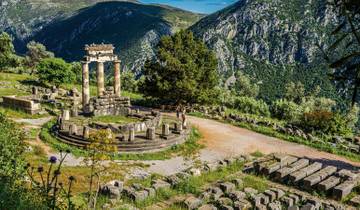
- In-depth Cultural
- Christmas & New Year
Tour from Athens to Dubrovnik or Split: 7 Balkan countries in 14 days
We had an excellent experience. Everything was well organized. The tour company was very receptive to any questions. The guide was very knowledgeable. A couple of the hotels were just OK, but in general, they were just up to our standards. I will say that having an electric car was somehow stressful as our guide could not always find a place to recharge the car at night. He had to go back several times and wait for hours. It made his days very long as it had already been our driver and our guide all day.
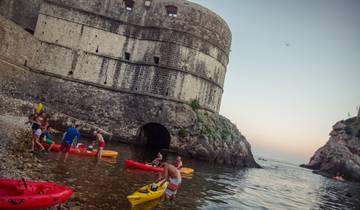
- Coach / Bus
Croatia and the Balkans
A really interesting trip; beautiful countries with interesting histories. Sarajevo a highlight for most as so surprisingly attractive and enjoyable. Several good tours and activities included. Nice range of fellow travellers from 30-80 including couples and singles.
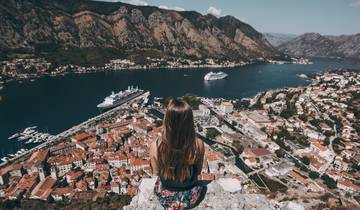
Dubrovnik to Athens
I enjoyed much of the tour but was disappointed at the pace and itinerary after leaving Albania. This is a very slow moving tour with lots of individual time. I am self reliant would have appreciated this if we were in places where there were cultural and/or social places to do. However, we spent several days in areas I would not rank as a top site. We spent two days traveling to Skopje and two days in Skopje. This may have been a good afternoon stop but it was not a 36 hour justification. It was depressing with poor accommodations, little to see and everything was closed on the days we were there. This was definitely the consensus of our group and I see that the same feedback has been given in earlier reviews for the trip. Our leader just said, 'Well, I can just show you the city, I can't make you like it.' It feels like feedback on the itinerary is not sought or appreciated. We also spent lots of time at a lake town in Northern Greece that had little to offer culturally and could not be used for swimming given all the downtime. This is a good tour for those who have already visited the more prominent sites in Greece and are seeking a relaxed time to read (my partner read three large books over the tour). If this is your 'one big trip' and you are seeking to see places such as Thessaloniki, have time in Athens, and see coastal areas, you might consider a different tour. A frustration on our tour seemed to be that the entire schedule was driven by when we would be sitting down at a restaurant (usually a place that our tour guide seemed to have deals with where he seemed to eat for free or get a deal). I did enjoy many of the accommodations, the home visit and having transportation arranged. I simply would shorten or cut out about four days of the itinerary and refocus it on Greece and/or other areas. The current Greece itinerary consisted of a day at the lake, two days at Mt. Olympus and then a long drive, ending in Athens with no activities or activities planned here. There is much that could be added (understanding that this would raise the price as it is more expensive in Greece than North Macedonia)
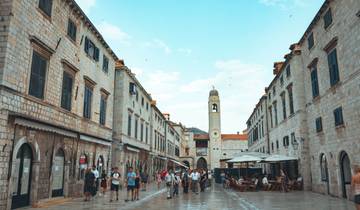
Balkan Explorer
Tour Leader: Filip Filip is an outstanding tour guide and a really great guy. Over our 16 day tour, I found him to be kind, funny, tremendously helpful, and incredibly knowledgeable. Coming into this tour, I knew very little about the Balkans beyond the general idea that bad things had happened there in the 90's. I learned a tremendous amount from Filip about the rich and complex history, culture, and geopolitics of the region. His knowledge is really something, and goes far beyond the sort of "dates and factoids" that I came into the tour expecting, and his delivery is funny, engaging, and shows a deep level of understanding. Filip was always there for everyone on the tour, be it a helping hand getting off the bus, tracking down cold medication (on a national holiday when every single pharmacy in the entire country was closed), or running back to the hotel to sort out a passengers luggage issue. To say nothing of his ability to wrangle and organize 48 different people through 70+ stops in 10 different countries over 16 days without any incidents, which in-and-of-itself is quite a feat. He was kind, courteous, and kept everything running smoothly. On a personal note, beyond his duties as the tour leader, my wife and I immensely enjoyed getting to know Filip, he already feels very much like an old friend. TLDR - Filip is an amazing tour guide, a really cool guy, and I hope to travel with him again. Driver: Kleanthis Kleanthis is a man of few words, but the interactions I did have with him were warm and genuine. Mostly, I think, he was focused on getting us where we were going safely and on time, which was quit an accomplishment. I'd say about half of the driving on the trip took place on narrow one and two lane roads that switchback high up into the mountains, with nothing but a low guardrail the bus and sheer drop offs, and some of the countries visited on this tour (heres looking at you Albania) seem to have little to no rules governing traffic. Kleanthis navigated all of those streets with a skilled ease that made for a very smooth journey. Tour: Balkan Explorer by Expat Explorer This was my first tour with Expat, and it was an amazing look at one of the grungier sides of the European continent, which is exactly what I was looking for. I feel like in this day and age so many places have become over-touristed, to the point where they are Disneyland versions of themselves. On this tour we got to visit places that that have been inhabited for thousands of years, cities built on history, we ate at restaurants among Greek, Roman, and Ottoman ruins, sipped drinks on sidewalks surrounded by locals. These places had the historicity of museums, but (for the most part) haven't yet become over-touristed and lost the feeling of being places where real people live. That isn't to say that there aren't other tourists, cities like Budapest and Dubrovnik are very popular destinations, but my wife and i really fell in love with some of the off-the-beaten track places we visited on the tour. I couldn't help but read some of the negative reviews on this site, and it seems like a lot of people feel this tour is rushed. You certainly do cover a lot of ground, there are long hours of driving and a fair amount of walking to do, but I feel like that's a good thing. On a tour like this, you get to experience a lot of different places and cultures in a fairly short amount of time, giving you a preview of places you might want to return to. My wife and I absolutely fell in love with the small city of Ohrid in North Macedonia, and very much look forward to visiting there again for a longer stay. Overall, I'd say if you're looking for a relaxed, sterilized, and/or handicap accessible vacation this probably isn't the tour for you, but if you want to experience a really cool part of the world, I'd highly recommend it.
- 10% deposit on some dates Some departure dates offer you the chance to book this tour with a lower deposit.

Balkan Kaleidoscope
Excellent . My Balkan trip experiences I only can summarise in one word, and that is excellent. The places are full of long histories, vey beautiful sceneries, people are friendly. Our tour leader was very knowledgeable and helpful. The bus driver has best ever driving skills. The local guides also tried their best to show us round and told us the history within the very short time available. Hotels are good and breakfast had ample choices. Our travel companions are also .very friendly and free of prejudices. I shall recommend this trip to all my friends and relatives. I should look forward to another trip like this.

Croatia Sailing Adventure
Ivan is incredibly knowledgeable and welcoming. I felt very safe at all times and he was very accommodating. Ivan made sure that everyone was super comfortable and happy, it was great to be apart of such a trip! He was even able to change the trip on the fly as there was bad weather that would have precluded a lesser guide from being able to keep everyone happy and comfortable. However, Ivan accommodated everything with grace and courtesy.

- Sightseeing
Western Balkans Uncovered
I did not know what to expect and was pleased to find it all very interesting and different from our North American standards. The kindness of the people toward tourists was wonderful to experience especially given the difficult history all of the countries visited had gone through. Food and drink were very good.

Tour from Athens to Belgrade: 7 Balkan countries in 14 days
I would reccomend this tour 100% for someone who is considering it.

Budapest to Istanbul
I would have wanted the Rila Monastery included in the itinerary. Our tour leader, Vlad, was everything (and more) that one can ask for in a guide.It was evident that he was well-read about the history of the places we saw. He even included images to show in his talks. On a personal note, he made every effort to address each group member's questions and concerns in a friendly yet professional manner and go out of the way, if necessary, to attend to them. The local guides, Peter and Ibrahim, were likewise very knowledgeable in their particular areas.
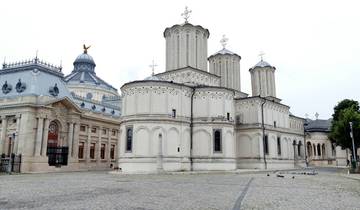
Balkan Adventure (14 Days)
An excellent trip with an outstanding tour director (Sarah Rossi) and highly skilled bus driver (Bruno). Plenty of option excursion choices along with very good included tours with knowledgeable local guides. The only down side were two of the hotels - Hotel Marinela, Sofia Bulgaria, and Mercure Belgrade Excelsior - that were in desperate need of refurbishment not to mention functioning air conditioning and bathroom cleaning. Otherwise, great trip.
- €100 deposit on some dates Some departure dates offer you the chance to book this tour with a lower deposit.

The Balkan Adventure Tour -12 days/11 nights from Skopje
We loved the hikes; only wished they could have been longer. We wish we didn't have to spend so much time driving, but we understand that there is no other way to see so many things in so few days. We would have liked to spend more time in Sarajevo. Don't schedule Nis for a Monday since the best sites are closed on Monday. Overall, it was a great introduction to the history and natural beauty of the Balkans, but be prepared for a lot of driving.
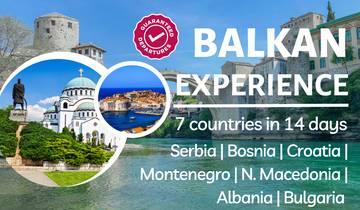
Balkan Experience – seven countries in two weeks - SMALL GROUP
I am Dr. Girija Shanker from Pune India. Visiting Balkans had been a long treasured dream. My wife and I are well travelled, but Balkans was held in abeyance for Lack of Confidence. Fortunately we connected with Victor tours. Mr. Aleksandar from Bucharest Serbia, he not only provided us confidence and Assurance but also a worthy solution to Visit Six Countries, starting from Romania, Serbia, Croatia, Montenegro, Albania and Macedonia from Romania and completing the tour in Skopje Macedonia. It was a 23 days tour by car from Airport to Airport in total comfort. Victor Tours team members Mr. Milos and Mr. Ivan were extremely well informed Gentlemen they drove the car perfectly and shared their treasure trove of information while visiting places of Interest en route. Mr. Aleksandar and Mr. Ivan deserve a special mention and commendation for planning and executing this MOST memorable trip. Today we have reached home with FOND MEMORIES, Trust Mr. Aleksander of Victor tours, he is indeed a wonderful person and their custom made six countries tour planned and executed flawlessly by him, has been and amazing experience for us.
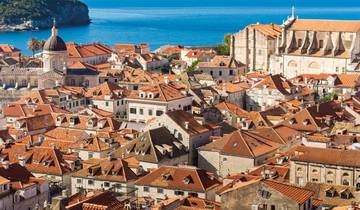
Treasures of the Balkans (Classic, 16 Days)
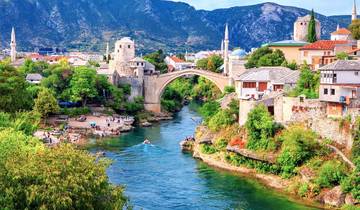
Tour from Split to Athens or Corfu: 7 Balkan countries in 14 days
Hiked from Valbona to Theth during an ongoing pandemic. Alban was very helpful to plan my trip, and also appreciate his promptly responds to all my queries. Ervin was a brilliant guide, highly experienced, and friendly. I will trek with you guys again. Best of luck entire Team.
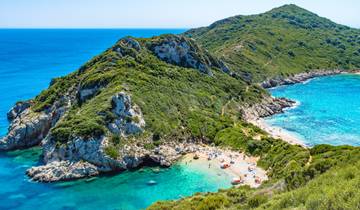
Corfu to Dubrovnik or Split: Tour of 7 Balkan countries in 14 days
Me and my wife had such a great time on this tour. We had the chance to visit such an interesting country as Albania and learn a lot about its history. We especially loved Voskopoja. It was a small village but very peaceful and the food was delicious. Choose Balkans services were excellent. The staff was very professional and kind. Thank you very much for the beautiful memories!
What people love about Balkans Solo Tours
Excellent! Very well organised, extremely interesting and informative. The most famous ancient sites in Greece mixed with lots of cultural activities and a variety of geographical areas. Our tour director, Nikos Kontogiannis, was superb. Nikos has a great sense of humour, is extremely knowledgable and an excellent organiser. We were very impressed!
I loved the Croatia and Balkans tour. It was the perfect mix of structured activities and free time. Our G Adventures CEO Adin was amazing. I would’ve liked one more day in Split, though.
Amazing!!! Best thing I’ve ever done
More Tours in Balkans for Singles and Solo Travellers
- Greece tours (792)
- Croatia tours (352)
- Romania tours (164)
- Albania tours (100)
- Slovenia tours (79)
- Bosnia tours (79)
- Bulgaria tours (46)
- Montenegro tours (24)
- Serbia tours (23)
- Macedonia tours (11)
- Seniors tours (970)
- Young Adults tours (82)
Travel Styles
- Budget (335)
- Luxury (191)
- Singles and Solo (1996)
- For Couples (595)
- Young Adults (82)
- Seniors (970)

21 Insanely Useful Balkan Tips to Travel the Region Hassle-Free
The Balkans

The Balkans are quickly becoming one of the most sought after regions in Europe.
As overtourism peaks in many Western European cities, much of the Balkans is still relatively under-touristed (shy of a few destinations in Croatia and Greece).
With Instagram, travel blogs, and travel magazines are finally showing off the beauty of this formerly underappreciated region, tourists are arriving in the Balkans in droves – but not all of them are prepared for some of the, shall we say, quirks of traveling the region.
Stephanie and I have been living in the Balkans for the last 3+ years and running this blog for nearly 2 — and today, we’ll share with you all of our essential Balkan tips so you can plan a hassle-free trip to the region.
Our Top 21 Balkan Tips
Buses are the name of the game here.

We have a lot of readers ask us about trains in the Balkans, to which we say: proceed with caution. Outside of Slovenia, trains in the Balkans are pretty unreliable.
While some countries have a decently developed rail system, like Bulgaria, Romania, Croatia, they are often beset with delays. Other countries, like North Macedonia, have very little in the way of rail connections (usually just linking them to other capitals in the region).
In the summer, trains can be a decent choice if you really don’t like buses. However, outside of that peak season, timetables can get really crazy. For example, a train ride from Sofia to Belgrade was about 14 hours with two transfers, whereas a bus ride was about 7 hours with no transfers and one lunch break.
In general, we suggest buses over trains, though you may want to make some exceptions to this, such as when going from Bucharest to Brasov to visit Bran Castle.
You’ll want to have local currency on hand if taking buses

It’s important to always have some small coins in the local currency on hand if you’re planning to bus around the country.
Most bathrooms in buses and train stations are pay-per-use, and nearly every roadside bathroom stop a bus will make will have a bathroom fee as well. This is usually about the equivalent of 25-50 cents in the local currency.
Generally, only local currency is accepted, so euros won’t help you here. The exception is at bathrooms near borders, where they will usually take currencies from both sides of the border, and sometimes even euros.
Lastly, some countries charge a baggage fee when taking buses: I remember this to be true for Bosnia & Herzegovina as well as Montenegro. Generally, the fee is about the equivalent of 1 euro per bag. Nothing to break the budget, but be aware of it so you don’t think you’re getting scammed: it’s a perfectly legitimate fee.
However… beware of taxis!

One of our biggest tips for traveling the Balkans is to be cautious with taxis. Unfortunately, Balkan taxi drivers have an unsavory reputation that’s rather well-deserved. While it’s likely that your trip to the Balkans will go smoothly, it’s also almost certain that at some point during your trip, you will overpay for a taxi ride or two.
Most taxi drivers are kind people working hard, but there are enough scam artists (and sometimes even entire scam taxi companies, like in Sofia), that you should be careful.
To prevent this, we try to use whatever taxi app is most commonly used in the city. In Bucharest, we use Uber; in Sofia, we use TaxiMe; in Belgrade, we use CarGo; in Athens, we use Beat. Other cities have different apps, which you should research before arrival, as unfortunately, Uber isn’t universally available in the Balkans.
When taxi apps aren’t possible, here are three tips to avoid scams.
- Register your ride with the taxi company by calling and ordering the taxi. Alternately, if language barriers are an issue, have someone at your accommodations or restaurant call on your behalf. We did this when arriving in Belgrade without WiFi – we stopped in a local hotel by the bus station and they were happy to call us a taxi.
- When it’s not possible to register a ride, keep your eye on the meter to make sure it starts, stops, and doesn’t jump rates at an alarming rate along the way. Have a set amount in mind where you know you’re overpaying and you can refuse to go further if you notice the meter is rigged.
- Carry small cash bills so you can pay without having to worry about getting the correct change back from your driver — they can sometimes act as if they don’t have change. It’s rare for taxis to take cards.
Another tip is to generally avoid taxi drivers outside of major landmarks and transit points unless you know that the lines are monitored (for example, it’s safe to take a taxi from Sofia Airport or Sofia Bus Station, but not from Sofia Train Station).
Research visas if necessary

There are twelve countries in the Balkans and each has different visa policies which the exception of Slovenia and Greece which are part of the Schengen zone. There are also three EU countries which are non-Schengen: Bulgaria, Romania, and Croatia.
Depending on your nationality, you may need to acquire visas. For people with generally ‘strong’ passports (US, UK, EU, Australian) you likely won’t need a visa for anywhere in the Balkans with the exception of Turkey.
For people with less passport privilege, you can usually leverage a valid multi-entry visa from the US, Schengen, or UK in order to allow you into non-Schengen countries without needing a separate visa.
We can’t hope to cover every country and nationality of traveler in this article, so we urge you to do your own research… I know of a handful of seasoned travelers who got totally caught off-guard by needing a Turkish visa, so don’t let this be you! (And if you do need a Turkish e-visa, be sure to print it!).
Don’t try to cover too much on your Balkan trip

Being active in many Balkans travel groups, we often see people post questions online that look like this: I have ten days to travel the Balkans and I want to see twelve cities in five countries. What’s the best itinerary for this?
To which my answer is always: Please don’t do this. You’ll hate your trip. You’ll spend half the time on buses, and you won’t see anything. Slow down.
My #1 Balkans tip is that it’s always better to go deeper into a single place than try to spread yourself too thin. Here are my recommendations for the maximum number of times you want to switch cities or countries for the amount of time you have.
One Week Trip: Best off with two cities plus a day trip. Stick to one or two countries. One city is better than two if you want to get to know the place.
Two Week Trip: Put a cap at four cities plus one or two individual day trips. Stick to three countries or less.
Three Week Trip: A maximum of five cities plus day trips. By week three you will be exhausted and ready to slow down. Stick to a maximum of four countries, but less is better!
Four Weeks or More: Keep your itinerary loose and give yourself the option to slow down. You may fall in love with a city and want to spend more time there. Don’t expect to cover the entire peninsula in a month.
Not every bus timetable online is accurate

It’s really common for bus routes online to be wrong, especially when it comes to seasonal information or local schedules between cities. While sites like Rome2Rio, Omio, and BalkanViator can be useful, they’re not always up-to-date.
Don’t rely solely on bus times you see online. We suggest you go to the bus station yourself, call and ask, or ask a local. Unless you can physically purchase your tickets online (which is rarely the case!), there’s a chance that the online schedule posted isn’t up to date.
Yes, you should tip in the Balkans

If you’re from a country without a tipping culture, that’s cool, but please be sure to tip when you visit the Balkans!
Many locals in the tourism industry basically survive off tips, as the wages don’t really match the increasing cost of living, especially in major cities and places impacted by tourism. Factor in paying tips into your trip budget. If the service is truly awful, you are not compelled to tip, but we generally advise planning to tip when sitting down to eat, taking a taxi, or staying in a hotel. Here is roughly what to tip around the Balkans:
Restaurants & Bars: Tip 10% for good service
Taxis: Round up to the nearest amount that makes sense. i.e. Pay 400 dinar for a 350 dinar cab fare ($4 USD vs. $3.50 USD for a tip of 50 cents) or Pay 5 leva for a 4.20 leva cab ride (2.50 euros for a 2.10 euros cab ride)
Massages, Salons, etc.: 10% for good service or more for excellent service
Housekeeping: $1-3 USD per day
Tour Guides: Approximately 10% of the tour price. For free tours, start around $5 USD per person.
You can’t always use credit cards, so be prepared with cash

You will be able to use credit cards at many restaurants, hotels, and other spots in major cities that cater to tourists. However, credit card usage is not universal. Generally, I’ve found that credit card usage is increasing, especially in major capitals around the Balkans, but in smaller cities it’s rarer.
As with the rest of the Balkans, a good rule of thumb is to always ask ahead of time. Between places that don’t take cards, the occasional card reader issue or malfunction, and needing to leave a tip in cash, you’ll always need to have some cash on you.
Note that American Express is not accepted in most of the Balkans, so if you only have AmEx, you’ll definitely want to make sure you have extra cash on you.
WiFi in the Balkans is generally good, but there are exceptions

Overall, traveling the Balkans for the last few years, I’ve found the WiFi is generally pretty excellent. Especially in Bulgaria and Romania, where you’ll find lightning-fast connections are basically the norm.
However, I’ve found that Greece consistently has some of the worst WiFi in all of the Balkans and all of Europe, to be honest.
Turkey as well has some WiFi issues, and there are some political issues that prevent access to several sites you’re probably used to accessing, such as Wikipedia and Booking.com.
Be sensitive to regional issues and politics
It may be one region, but there are millions of different political opinions here.
Thousands of years of conquering, rebellion, oppression, occupation, and wars created a tinderbox that literally led to the start of World War I, with the assassination of Archduke Franz Ferdinand (it’s not often mentioned that Austro-Hungary was occupying Bosnia & Herzegovina, as well as much of the Balkans, at the time).
Between the different feelings about the fall of communism, Kosovo independence, the Balkan wars, the Macedonia name debate, and how Yugoslavia came apart, we find that it’s better to listen and learn than to interject with your own limited understanding as an outsider.
If you pay attention, you may find things are always more complicated than they appear on the surface.
The Balkans, generally, are great for solo female travelers
Personally, I’ve never been hassled in the Balkans for being a woman traveling alone. Unlike Morocco, Belize, Nicaragua, parts of America, etc., I don’t get harassed here. I’ve never experienced catcalling or even hassling to try to get me into their shop (except in the Grand Bazaar in Istanbul, and even then, it was very light-hearted and friendly).
Being a woman traveling alone anywhere can be challenging at times, but I’d recommend the Balkans as one of my favorite places to solo travel. Of course, Steph and I are both white cis-gendered women, and we speak from a place of privilege.
We cannot speak to personal experiences traveling as a woman of color or LGBT traveler, but having friends of color both male and female who have traveled or lived in the region, we know their experiences differ from ours. Unfortunately, racism and homophobia exist in the Balkans, and from our experience in Bulgaria, we feel it is heightened compared to other countries in Europe.
We don’t say this to dissuade people of color or LGBT people from visiting the region, but to encourage you to seek out resources written by people from your community to see if traveling the Balkans is safe for the intersections of your identity and what you personally feel comfortable with.
Don’t only visit capitals
If you just do the Balkan capitals, you’ll miss out on some of the best cities in the Balkans! Some of my favorite places are the smaller towns and villages. We suggest pairing them with visits to the capitals to see a bit of each side.
For example, add Subotica to Belgrade when in Serbia, or add Bansko to Sofia when in Bulgaria. Trebinje makes a delightful add-on to Mostar and Sarajevo, and Ohrid is a must-see when visiting Skopje.
Squat toilets are not entirely uncommon

If you thought squat toilets were only for Asia… think again.
You’ll often find squat toilets at bus stops and at small off the beaten path sights that aren’t super prepared for tourists, such as at Saeva Dupka cave in Bulgaria.
Even in big cities like Istanbul, many public toilets are squat toilets. It’s not the end of the world, even if they’re not our favorite, but be prepared to use one (and that’s why we always include some toilet paper and wet wipes on our Balkan packing lists!).
English is relatively widely spoken, but a little local language goes a long way

The rule of thumb for most of the Balkans is that until the fall of Communism, Russian was the most common foreign language taught in schools. After the fall of Communism, most schools switched to teaching English.
Thus if someone is under 30, it’s likely they at least studied English at some point. People in large cities who work in the service and tourism industries tend to speak good to great English since they use it so often.
However, for the rest of the population, they may or may not use much English so it may be rusty. Be patient and learn a few words of the local language as a courtesy. We recommend learning at least hello, goodbye, thank you, and please in the local languages.
However, be aware that the more off the beaten path you get, the less English you’ll find. We recommend having a local SIM card or having the Google translation of the country you’re visiting already downloaded in your phone.
Learn a bit of Cyrillic if visiting countries which use this alphabet

If you plan to spend a lot of time in countries with a Cyrillic alphabet, such as Bulgaria, North Macedonia, and Serbia, learning Cyrillic could be quite useful (and it’s not nearly as hard as you think).
If you get off the beaten path, you’ll often find menus in only the local language…. which is difficult enough until you realize that it’s also in another alphabet. Being able to read Cyrillic means you’ll be able to identify common food words across languages – ajvar, kartofi, cevapi, etc. – and it’ll also help you at bus stations in the above-mentioned countries, where often the only signage is in Cyrillic.
If you’ll visit Kosovo and Serbia back to back, start with Serbia
So many people have this one backward, so let’s clear it up.
It’s actually quite simple. If you want to visit Serbia and Kosovo on the same trip back-to-back, you must start with Serbia. You’ll get a Serbia entry stamp on your passport. Then you can cross the border into Kosovo.
If you start with Kosovo, you won’t get a Serbian entry stamp and Serbia will consider you to have crossed into their country illegally.
Regardless of your political beliefs about Kosovo, you don’t want to get on the wrong side of the Serbian border control (or any border control, for that matter).
I have heard that if you can enter Serbia with an identity card instead of a passport (like many EU citizens can), it is OK to enter Kosovo first because there is no stamp. However, having an American passport and not being able to test this out firsthand, it’s still something I would generally advise against
If you want to visit Kosovo first and then Serbia, we suggest you leave via Kosovo back to Montenegro or North Macedonia, and then visit Serbia. I have done this twice and had no issues with Serbian border control either time I visited after visiting Kosovo a few weeks before with Kosovo stamps in my passport.
If you choose to visit Serbia, then Kosovo, and then head to another country without crossing back into Serbia, this is technically OK; however, you risk Serbia considering you to have overstayed your visa and not letting you back into the country down the road, so we’d suggest visiting Serbia, visiting Kosovo, entering back into Serbia, and then leaving via a Serbia-controlled border.
Complicated? Yes. But that’s traveling in a post-conflict region for you!
SIM cards do not work between non-EU countries
If you’ll only be spending time in the EU countries that make up the Balkans, you don’t have to worry: Croatia, Slovenia, Greece, Romania, and Bulgaria all are part of the EU and as a result, if you have an EU phone plan with roaming enabled, you can use your EU SIM with no extra charges.
I used my Bulgarian SIM in Greece without an issue recently. You just need to check a setting to allow roaming, which varies by carrier.
However, since most of the Balkans aren’t in the European Union, you’ll need to get different SIM cards when traveling between them. Each experience has been pretty painless, but each country has its own quirks. For example, I had to list my father’s name to get a sim card in Athens, despite the fact that I am over thirty years old!
Since data is so cheap, we recommend getting new cards rather than roaming in non-EU countries, unless you have a generous international plan.
For example, we paid 300 RSD (about $3 USD) for Serbian sim cards with 3 GB of data. If you don’t have an unlocked phone and use international roaming from the US or Canada, the plans will work fine in the Balkans, but it’ll be pricy — usually about $10 USD a day. Just note that it may cost you significantly more than getting your company to unlock your phone ahead of time, so think ahead of time before deciding what to do!
You’ll be changing money frequently
It’s Europe, right? Shouldn’t they all take Euros? Nope, not necessarily. You can only use your Euros in Slovenia, Greece, Montenegro, and Kosovo. Romania, Bulgaria, and Croatia, while EU countries, all have their own independent currencies.
Always make sure to have the right Balkan currency on me and leave currency from other places back in your hotel, unless you plan on exchanging.
Money in the Balkans can get tricky. I once had an ATM in Mitrovica, Kosovo spit out Serbian dinars, which no one in the rest of Kosovo would take (which uses the euro). I left Macedonia with extra denar and couldn’t find an exchange in Albania who would make the trade. I once exchanged money with a hostel employee who gave me Serbian dinars for my Bosnian marks at a fair rate, since she was going home to Bosnia for the weekend.
Throughout the Balkans, you’ll find the Romanian Lei, Bulgarian Lev, Croatian Kuna, Bosnian Convertible Marks, Albanian Lek, Turkish Lira, plus the four places which use Euros. It’s a lot to keep track of, and you’ll have a lot of opportunities to run into bad exchange rates or to pull out the wrong cash.
Confused? We don’t blame you. Read our Balkan money guide (below) before you go!
Read: Balkan Currency Guide: What You Need to Know about Balkan Money
If you plan to rent a car, be sure you can make border crossings with it
The idea of a Balkan road trip is a popular bucket list item… but people don’t realize that it’s a bit more complicated than just hopping in a rental car and going!
If you plan on renting a car in the Balkans and driving across a border, you have to call ahead and check with your rental company to make sure you A) can actually cross the border with the car and B) you have the correct insurance set-up to cover you in case of an issues.
One summer, Stephanie booked a rental car for three weeks with the intention of taking it from Sofia to Ohrid to Sarande to Kotor to Prishtina and back. Oh, how naive she was!
When she called ahead to check, they told her they only allowed border crossings into Serbia, Romania, and Greece. Luckily she was able to cancel and did the trip by bus instead, but it was a last-minute change she had to make.
Now we know that it’s easier to get permission to take a rental wherever you want if you start in Skopje, that taking a rental into Kosovo is a nightmare regardless of where you start or end your trip, and while driving in Serbia is delightful the gas prices there can blow a hole in your budget.
While road tripping the Balkans is always worthwhile, do be aware that it gets infinitely more complicated if you’re not bringing your own car, and prepare to dedicate a few hours to researching rental cars (we have our best Balkan tips for renting a car here, including multi-country-friendly car rental companies) rather than just booking the cheapest one and going.
Smoking indoors is hit and miss in the Balkans
We personally don’t care whether or not you smoke. Both Stephanie and I at one point in our lives were smokers, and we’re not the type to judge. However, one thing that troubles us and many other travelers to the Balkans is the prevalence of indoor smoking.
We know that many people travel with different health needs. Some are allergic to nicotine, some are pregnant (like Stephanie at the moment), some are traveling with small kids, some get migraines around smoke (like me), some have asthma, and some just don’t plain like the smell. If smoking indoors doesn’t bother you, great! You’ll have a fantastic time basically anywhere in the Balkans.
If you’re sensitive to indoor smoke, take extra caution in the countries where smoking indoors is more prevalent: Greece (although someone living in Greece recently told me they are cracking down on this), North Macedonia, and Serbia, where I find the indoor smoking the worst. Parts of Croatia have this problem as well, I’ve heard. I was in Albania and Kosovo recently and had no issues with smoking inside, but it was summer, so I’m aware this could change in the colder months.
Smoking is quite common in other Balkan countries like Romania and Bulgaria, but generally speaking, smokers are seated outdoors or in a specific, separate smoking section like a heated terrace in the winter. We don’t mind smoking at all — to each their own! — but indoors, it can get overwhelming. It’s something you should note if you are planning to spend a significant amount of time in the Balkans, especially if you are visiting as a digital nomad who needs to spend a lot of time in coffee shops.
While traveling the Balkans is very safe, travel insurance is still key

Travel insurance is a must-have for traveling around the Balkans. While we’ve been lucky enough not to need to make a claim while traveling abroad, there are horror stories of people who didn’t have travel insurance getting into an accident and having insane bills as a result.
Travel insurance covers a variety of situations, from small inconveniences like petty theft like pickpocketing to trip cancellation to lost luggage to catastrophic coverage such as medical evacuations, repatriation, and medical emergencies. Make sure you have a policy that covers both.
We both have used World Nomads, paying out of pocket for our coverage, for three years and it’s the only company we recommend to other travelers. We’re satisfied with their extensive coverage, ease of renewing on the road, and clear explanations of what is and isn’t covered.
Get a travel insurance quote for your trip here.

Originally from California, Allison has been living in Bulgaria for the last two years and is obsessed with traveling around the Balkans. She has been published in National Geographic, CNN Arabic, Matador Network, and the Huffington Post. She loves befriending dogs, drinking coffee, geeking out about wine, and cooking food from around the world.
Related posts
Submit a comment cancel reply.
Your email address will not be published. Required fields are marked *

New on Sofia Adventures:
- How to Spend a Magical One Day in Istanbul: Mini Itinerary
- 30 Insanely Delicious Greek Street Foods You Need to Try
- 13 Things That EXIT Music Festival Visitors Should Know
Undergraduate students learn about folk medicine in the Balkans
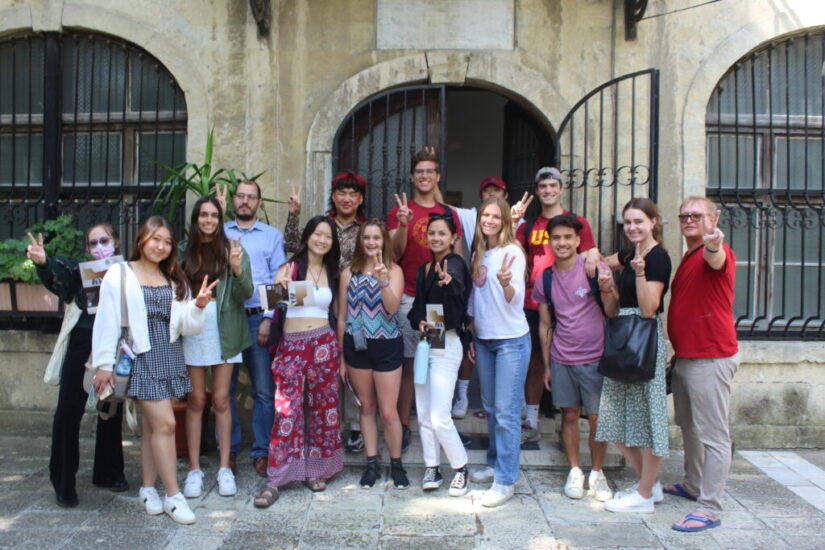
As many of their peers prepared for summer vacation, 13 USC School of Pharmacy undergraduates traveled throughout southeastern Europe for the Maymester class Balkan History, Geography and Folk Medicine. The 20-day trip was led by course instructor Terry David Church, assistant director of undergraduate education and a faculty member in the school’s Department of Regulatory and Quality Sciences.
The itinerary took students through parts of Bulgaria, Greece, Romania and Turkey to explore folk medicine’s evolutions, benefits and consequences as well as sustainability. “We also learn about the cultures, histories and experiences of the people in these countries,” Church says of the course.
Stone & Compass—a nonprofit educational and cultural organization that partnered with USC in offering the trip—hosted the students at its 2,000-acre property in the Balkan Mountains and helped coordinate excursions.
Among the trip’s highlights were a botanical and bee farm tour that detailed the healing properties of honey and local herbs, as well as a trip to a hot spring in Greece to learn about hydrothermal medicines. In addition, the students met with professors at the Istanbul University Faculty of Pharmacy in Turkey, Carol Davila University of Medicine and Pharmacy in Romania, and Medical University of Sofia Faculty of Pharmacy in Bulgaria. During these visits, the travelers learned about the medicinal properties of regional plants and toured medicinal gardens.

“This trip really opened my eyes to the endless possibilities and applications of plants in the world of medicine,” Pharmacology and Drug Development (PDD) student Jack Saville says. “Every professor at the universities we visited stressed how important it was for their pharmacy students to be able to identify plants that could be used to help treat patients.”
Recent PDD graduate Samantha Skinner adds that she was fascinated to learn about the terms “pharmacognosy” and “phytopharmacology,” both of which relate to the study of medicine from plant sources. “Pharmacists in other parts of the world take botany classes and familiarize themselves with the therapeutic properties of plants—something pharmacists in the U.S. don’t have much knowledge about,” she notes.
Students also attended planning meetings for a new clinic being built in the Bulgarian village of Stolat by Stone & Compass, which is committed to building global partnerships and projects that help those in need. Second-year PDD student Mikey Null called the meetings his favorite part of the Maymester class. He appreciated the perspectives he gained into the challenges arising from how the region’s natives view traditional western medicine.

While the trip compressed a great deal of education and action into 20 days, Church still found time to help his students enjoy such activities as learning Bulgarian folk dancing, stargazing at night and touring landmarks.
“Running a small healthcare clinic is much more complex than I had initially thought,” Null says. “With roughly an even split of native Bulgarians and Roma who are reluctant to accept westernized medicine, we had to learn how to cater to both western and folk medicine, without excluding one or the other in meeting health needs.”
“I was hoping that the Maymester trip would push my students to experience new things and spark new ideas,” Church says. “Travel is a phenomenal way of learning new things. It builds creativity and makes for a more dynamic thinker.”
BY USC School of Pharmacy
Latest News
- [EVENT] Mireya Solis – Japan’s Quiet Leadership: Reshaping the Indo-Pacific – April 18
- USC Hosts Interdisciplinary Conference to Combat Global Health Issues
- Animated Maps Reveal Shocking Level of Devastation in Ukraine
- USC Viterbi Accelerates Strong Partnership With India
- USC Marshall Hosts Annual International Case Competition
- USC Named Top Producer of U.S. Fulbright Scholars, Students
- USC-India Innovation Summit Strengthens Ties
- ‘USC-India: Partner the Future’ Trip Deepens Decades-Long Professional Relationship
- ‘Stronger Than Hate’: USC Student-Athletes Reflect on Trips to Auschwitz, Selma
- USC Kaufman’s Visit to South Korea Transcends Language Barriers

- Zaloguj się
- Zarejestruj
- Polecaj i zarabiaj

Marzy Ci się wyjazd, z którego nie chcesz wracać? Jesteśmy ekspertami w organizowaniu takich wypadów, a to dlatego że stawiamy na ludzi. Umiemy rozkręcić najlepsze imprezy, odpalamy gry i animacje, które wciągają każdego! Na wyjeździe panuje powszechny zakaz nudy, a Ty wracasz z całą masą niezwykłych wspomnień i grupą znajomych, z którymi nie chcesz się rozstać. Ale wiesz co? Tak naprawdę nie musisz - do zobaczenia na wyjeździe!

Studenci mają -100zł zniżki na każdy wyjazd!

Pilot ST to nie wychowawca kolonijny, ale zaufany przyjaciel

Program "skarbonka"pozwala jeździć na wyjazdy po taniości!

Sami jesteśmy w wieku 18-35 lat i wiemy jak zorganizować wyjazd, którego nigdy nie zapomnisz
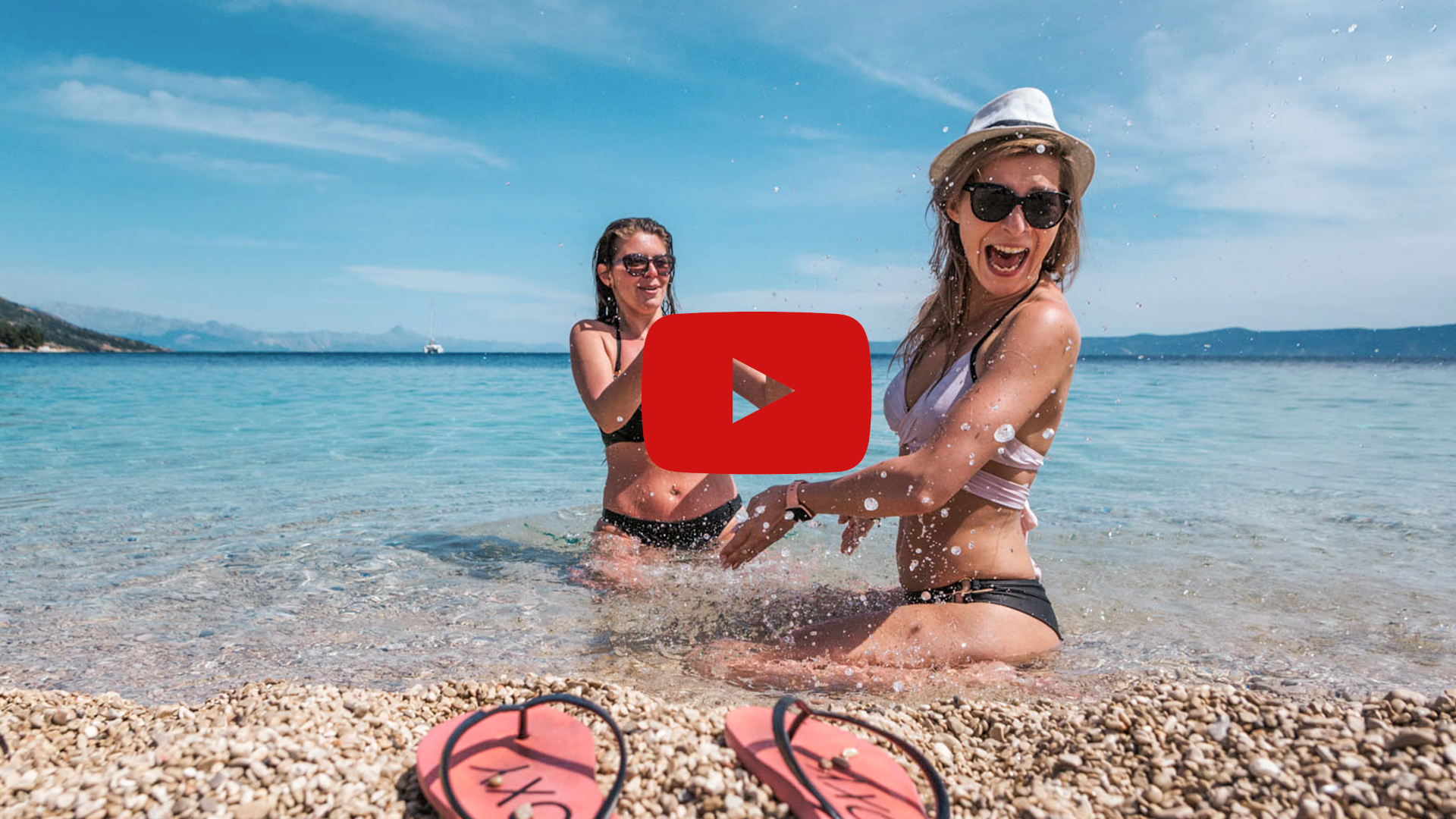
Dlaczego my?
+ 18 lat na rynku + 100 destynacji + 2 000 zorganizowanych wycieczek + 100 000 zadowolonych uczestników + 600 000 PLN gwarancji ubezpieczeniowej + 5 mln przejechanych kilometrów
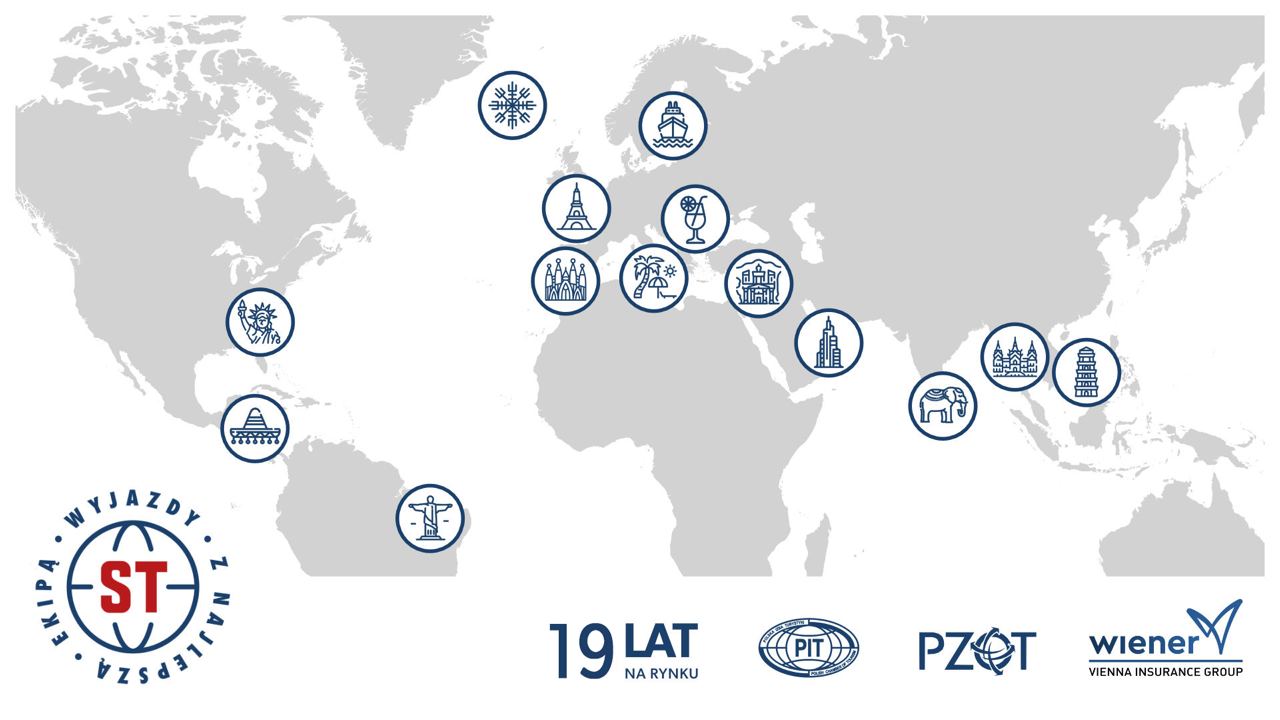
Kiedyś Student Travel - teraz ST!
Przez wiele lat byliśmy kojarzeniu jako największe biuro podróży organizujące najlepsze wyjazdy dla studentów. Wielu z Was skończyło już studia i nadal chce z nami jeździć mimo braku legitymacji studenckiej. Dlaczego zmiany?
Zmiany podyktowaliście Wy - nasi obecni i przyszli uczestnicy wyjazdów. Często dostawaliśmy pytania, czy można jechać z nami nawet jeśli nie jest się studentem lub mylono nas z biurem pośrednictwa pracy dla studentów. Uważnie słuchamy Waszych potrzeb i czujemy, że to właściwy czas na zmiany. Ale tylko takie, które sprawią, że Wasz komfort, przeżycia i satysfakcja będą WIĘKSZE!
Kim jesteśmy? - jeśli jeszcze nie znasz ST.
Zapomnij o nudnych wakacjach , podczas których myślisz wyłącznie o powrocie do domu. Zamiast tego wyobraź sobie najlepszą przygodę w swoim życiu. W otoczeniu wspaniałych ludzi, w miejscu, w którym naprawdę chcesz być. Przygodę, po której zostaną Ci wspomnienia do końca życia. Tak właśnie wyglądają podróże z ST.
Jesteśmy największym biurem podróży dla osób w wieku 18 - 35 lat w Polsce . Działamy od 2005 roku, zorganizowaliśmy już kilka tysięcy wyjazdów. Przez ten czas dowiedzieliśmy się o studentach naprawdę wiele! Wiemy, co lubicie w podróżach, co Was nakręca, co nudzi, czego nie możecie znieść i co daje Wam największą moc.
Bogata oferta podróży przez cały rok
Wiemy też, że każdy z Was jest inny! Dlatego nasza oferta wyjazdów za granicę jest naprawdę zróżnicowana i niezwykle bogata. Tak naprawdę, nie ma miejsca w Europie, do którego nie docieramy. Na nasze obozy wybieramy tylko najlepsze europejskie kurorty, w których liczy się dobra zabawa, a słońce jest gwarantowane.
Jakie wyjazdy wakacyjne znajdziesz w ofercie ST?
Naszą ofertę wakacyjnych wyjazdów możemy podzielić na kilka grup, są to oferty:
- Party - dla osób nastawionych na imprezowe wyjazdy. Do takich kierunków na pewno zalicza się Bułgaria Złote Piaski czy Grecja Kavos.
- Chill - dla tych studentów, którzy lubią odpocząć na pięknej plaży, czy pozwiedzać, ale dobra zabawa też jest dla nich ważna. Tutaj z naszych ofert możemy wyróżnić Chorwację Makarską czy Włochy Rimini.
- Zwiedzanie - to oferta dla tych, dla których poznanie nowych krajów jest na pierwszym miejscu! Kultowy Eurotrip, ze zwiedzaniem kilku europejskich stolic po drodze? Odkrywanie Bałkanów, na BałkanTripie? Czy rejs statkiem po Bałtyku - BałticTrip? Każdy znajdzie coś dla siebie.
- Camp - to nasze największe imprezowe wyjazdy. Kilkaset osób w jednym miejscu i koncerty na żywo największych polskich muzycznych gwiazd.
- City Break - jeśli lubisz, krótkie weekendowe wycieczki za granicę. Jeśli masz tylko 3-4 dni, a chcesz spędzić fantastyczny czas w grupie rówieśników i poznać nowych ludzi, sprawdź oferty city breaków.
- Rejsy po Bałtyku - to oferta dla tych, którzy lubią zwiedzać, a wieczorem lubią dobrą zabawę. W ciągu kilku dni zobaczysz kilka europejskich stolic, a wieczorem odpoczniesz i pobawisz się na luksusowym statku wycieczkowym
Nasza oferta już od kilku lat nie zatrzymuje się tylko na Europie. Podbijamy kolejne kontynenty. Dzięki nam w studenckiej grupie możesz polecieć na wakacje do Tajlandii, odpocząć na plażach Meksyku czy odkrywać Islandię. Z ST wyjazdy egzotyczne są też na wyciągnięcie ręki.
Wszystko to składa się na to, że u nas wakacje trwają od początku czerwca do końca września. Tak abyście mogli zdążyć na uczelnie!
Wyjazdy na ferie zimowy
U nas wyjazdy to nie tylko wakacje! U nas znajdziesz również oferty wyjazdów sylwestrowych i w czasie ferii studenckich. W sylwestra znajdziesz wiele wycieczek tych znanych z wakacji takich jak Eurotrip, sylwester we Włoszech czy impreza sylwestrowa na statku podczas naszego rejsu po Bałtyku. Tym razem możesz zobaczyć miasta, czy kraje w innej zimowej odsłonie. A wszystko to w prawdziwej studenckiej atmosferze witając Nowy 2024 Rok. Jeżeli jesteś fanem zimowych sportów, też znajdziesz coś dla siebie.
W czasie ferii studenckich organizujemy wiele wyjazdów w Alpy. Wolisz narty czy snowboard? Dla nas nie ma znaczenia, na naszych obozach zimowych trafisz na jednych i drugich! W czasie ferii zimowych wybieramy najlepsze kurorty narciarskie - włoskie Val di Sole czy Livigno, francuskie Risoul czy Chopok na Słowacji.
Wyjazdy na majówkę - jeszcze nam mało!
Zazwyczaj zimą i na początku wiosny pogoda w Polsce nas nie rozpieszcza. A jeśli jeszcze chcesz odpocząć przed zbliżającą się sesją w czerwcu, wybierz się z nami na majówkę . Krótki wypad do Paryża i Amsterdamu, zwiedzanie Rumunii czy Słowenii, a może chill w Czarnogórze lub Albanii? Jak co roku możesz również wybrać się na autokarową wycieczkę do Portugalii, czyli znany i lubiany wszystkim Eurotrip w majowym wydaniu. W związku ze zmianą ze Student Travel na ST w ofercie majówek mamy też wyjazdy poza Europę, możesz polecieć do Tajlandii, Gruzji.
Dlaczego wybrać ST - wyjazdy z najlepszą ekipą?
Gwarantujemy Wam świetnie przygotowany i dopracowany w każdym calu plan podróży, sprawdzone noclegi, komfortową podróż, opiekę najlepszych pilotów wycieczek i ekipę, która sprawi, że organizowane przez nas wyjazdy już nie tylko "studenckie" będą magiczne. Z nami zawsze jest spoko!
Nie siedź w domu w wakacje, ferie czy majówkę!. Nie spędzaj kolejnego takiego samego Sylwestra. Spędź ten czas z nami - zwiedzaj, odpoczywaj, poznawaj nowych ludzi, odkrywaj nowe kultury, smaki i zapachy. Studia to nie tylko nauka. To przygoda, którą możemy wspólnie przeżyć! Pamiętaj nasze hasło “ Nie ważne gdzie! Ważne z kim! ”
Modal Header
Some text in the modal.

10+ Popular Quotes About Greece
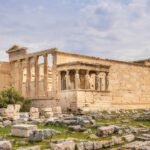
18 UNESCO World Heritage Sites in Greece
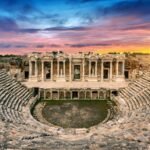
19 UNESCO World Heritage Sites in Turkey
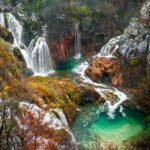
Top 10 UNESCO World Heritage Sites in the Balkans
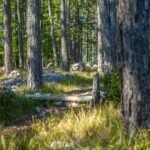
5 UNESCO World Heritage Sites in Slovenia

- Tips & Budget
14 Best Budget Tips on How to Travel the Balkans Cheaply
Skin care is like dieting. you have to invest time and effort. there is no instant miracle cure..
Traveling to the Balkans can be a great adventure, but it doesn’t have to break the bank! If you’re looking for a unique and affordable travel experience, here are some of the best budget tips on exploring the Balkan countries without breaking your budget.
Jet lag is for amateurs. Dick Clark
Whether you’re an experienced traveler or taking your first trip, knowing what items you should bring is always helpful. This is especially true when it comes to collecting souvenirs. While every destination is different, there are some general things you should always try to collect when traveling. This list includes items that are unique to the place you’re visiting and will help you remember your trip for years to come.
If you’re looking to explore the Balkans on a tight budget, plenty of options are available. The region is widely known for its affordable and breathtakingly beautiful destinations. With careful planning, it’s possible to experience the best of what the Balkans offer without breaking the bank.
Best Budget Tips on How to Travel the Balkans Cheaply
The Balkans is a region of Europe that covers Albania, Bosnia and Herzegovina, Bulgaria, Croatia, Kosovo, Montenegro, North Macedonia, Greece, Romania, Serbia and Slovenia, and part of Turkey.
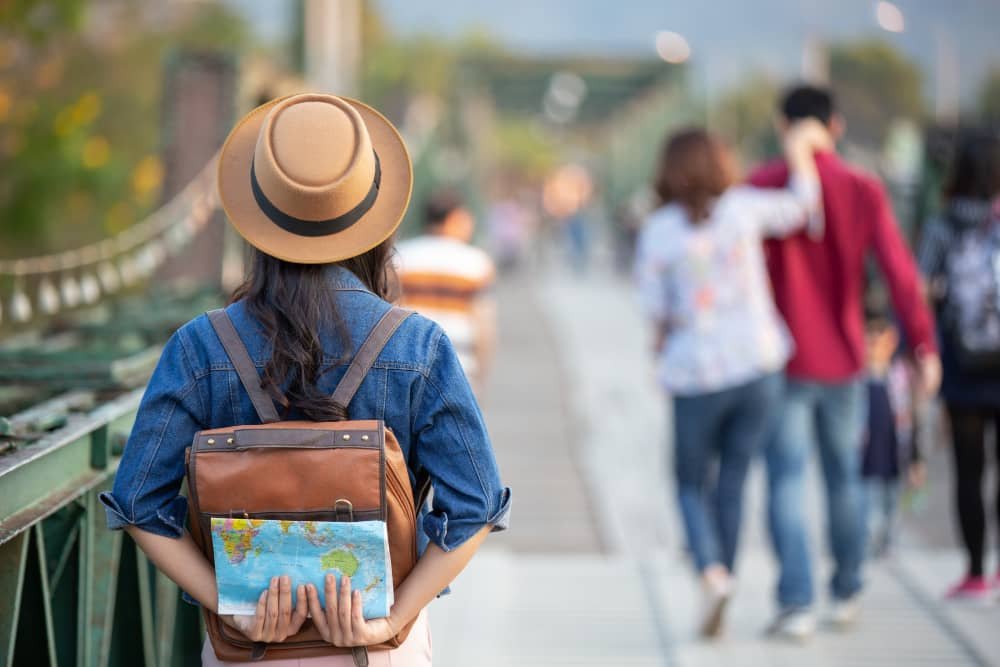
If you’re looking to travel the Balkans on a budget, there are plenty of ways to do it. Here are 16 of the best budget tips for traveling the Balkans cheaply:

11 Things You Should Look for When Picking out Postcards
Are you planning a trip to the Balkans? If so, you’re in for a treat. The Balkan region has natural beauty, historical sites, and friendly people.
But while the Balkans are affordable, it’s still possible to overspend if you’re not careful.
In this article, we’ll share 14 of the best budget travel tips for the Balkans. These tips will help you save money on accommodation, transportation, food, and more.
So, whether you’re planning a trip to the Balkans, read this article before you go. With these budget travel tips in mind, you’ll have a great time in the Balkans without breaking the bank.
Choose Your Destination Wisely
The first step to traveling the Balkans cheaply is to choose your destination wisely. There are many beautiful and affordable countries in the Balkans, but some are more expensive than others. If you want to travel on a budget, consider countries like Albania, Bosnia and Herzegovina, Bulgaria, Kosovo, Montenegro, North Macedonia, Greece, and Serbia. These countries are relatively cheap to visit and offer much value for your money.
Albania is an excellent choice for budget travelers, as it is one of the most affordable countries in the Balkans. Bosnia and Herzegovina is another affordable option well-known for its stunning scenery and friendly people. Bulgaria is an excellent choice for budget-conscious travelers, as it offers much value for your money.
Kosovo is also an excellent option for those on a tight budget, as it is one of the most affordable countries in the Balkans. Montenegro is an excellent choice for budget travelers, offering stunning scenery and beautiful beaches. Finally, Serbia is an excellent choice for budget travelers, as it offers a wide range of activities and attractions at an affordable price.
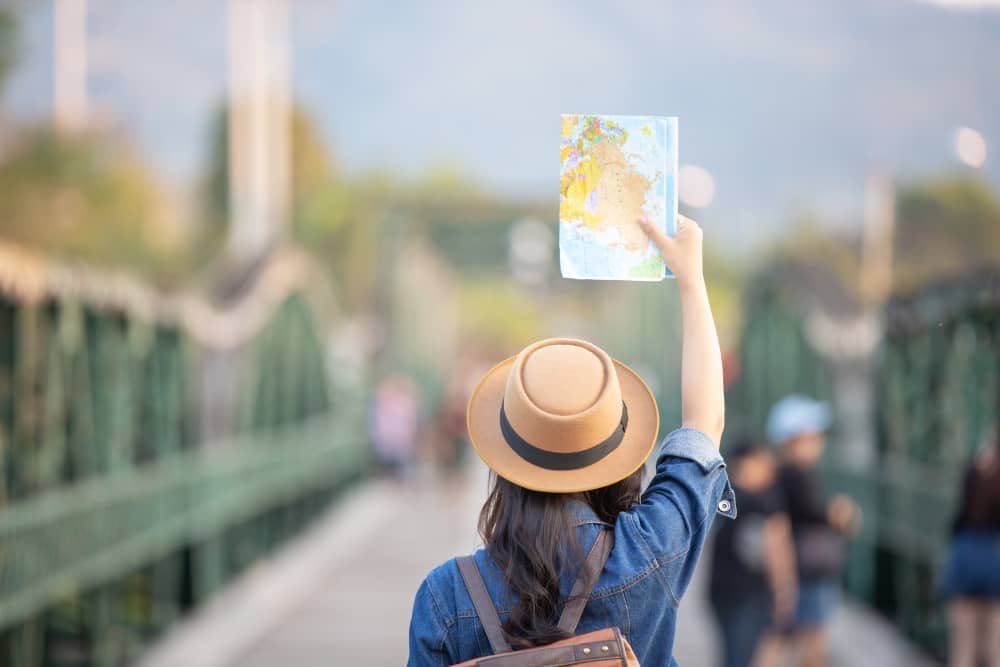
Travel During the Shoulder Season
Traveling to the Balkans is a great way to explore history and culture, but it can be expensive. To keep your trip within budget, traveling during the shoulder season is one of the best budget tips for visitors. The shoulder season typically falls between peak times, such as summer or winter holidays, and offers travelers many advantages.
One of these advantages is lower prices for accommodations and flights. During this time of year, you may be able to stay in luxurious hotels at more affordable rates than during peak seasons. You won’t have to fight crowds at significant attractions or wait in long lines at restaurants and cafes. This gives you plenty of opportunities to wander around and explore on your timetable without spending too much on tourist traps or overpriced experiences.
Consider Flying into a Cheaper Airport
If you’re looking to travel the Balkans on a budget, flying into a cheaper airport is one of the best ways to do so. Several smaller regional airports located throughout the region can offer significant savings on airfare, especially when flying into a larger international airport. When searching for flights, check prices for both your origin city and any nearby larger cities with airports.
For example, if you’re coming from London, you may find flying into Sofia in Bulgaria or Skopje in Macedonia cheaper than directly into Belgrade in Serbia. Another option is to take advantage of low-cost airlines that fly to airports in the Balkans. Several airlines, such as Wizz Air and Ryanair, offer flights from major European cities at very reasonable prices.
So if you’re flexible with your travel dates and destination, you could save a lot of money by flying with one of these carriers. Whatever airport you end up flying into, just be sure to factor in the cost of ground transportation to your final destination. In some cases, it may be cheaper to fly into a more expensive airport closer to your destination than it would be to fly into a cheaper airport farther away.
The best dreams happen when you’re awake. Cherie Gilderbloom
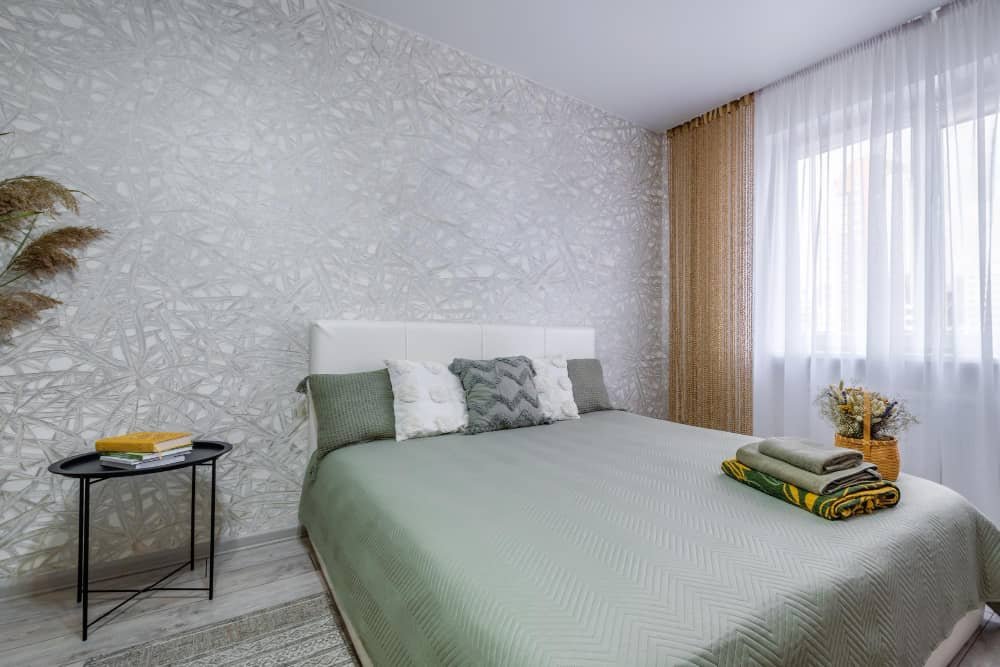
Stay in Hostels and Guesthouses
The Balkans is a region that is becoming increasingly popular with budget travelers. There are several ways to travel the Balkans cheaply, and one of the best ways to do so is by staying in hostels and guesthouses .
Hostels are an excellent option for budget travelers as they typically offer dormitory-style accommodation at a fraction of the cost of a hotel room. Guesthouses are another type of budget accommodation that is becoming increasingly popular in the Balkans. These are typically family-run businesses that offer a more homely atmosphere than a hostel or hotel.
When traveling on a tight budget, it is essential to research the various accommodation options in each city or town that you will be visiting. This will help you to find the most affordable option that meets your needs.
Couchsurf or Camp
Couchsurfing or camping are both great ways to travel the Balkans cheaply. Couchsurfing is a great way to meet locals and save on accommodation costs, while camping can be a great way to save on accommodation costs and explore the great outdoors.
If you’re looking to explore the stunning landscapes, diverse cultures, and friendly people of the Balkans without breaking the bank, then Couchsurfing or camping is your best bet. These two budget-friendly options for accommodation can help you save money when traveling through the region.
Couchsurfing is a great way to get to know locals and share stories while enjoying a free place to stay. With more than 12 million members worldwide, it has become one of the most popular ways to travel cheaply in recent years. You can find hosts almost everywhere in Balkan countries, such as Serbia, Croatia, Bosnia and Herzegovina, Montenegro, and Albania – all offering breathtaking nature experiences worth exploring on a budget.
Camping is another great option to save money and experience nature up close.
Eat like a Local
Eat at local restaurants: Eating there is a great way to save money while traveling. Not only will you be able to find cheaper meals, but you’ll also get a chance to try the local cuisine.
Shop at local markets: Shopping at local markets is a great way to find fresh, local food at a fraction of the cost of eating out.
Cook your meals: Cooking meals is a great way to save money while traveling. It’s also a great way to taste the local cuisine.
Avoid tourist traps: Tourist traps are typically overpriced and offer subpar food. Avoid them if you’re looking to save money.
Stick to simple meals: Simple meals are cheaper than elaborate ones. Stick to simple dishes to save money on food while traveling.
Avoid Tourist Traps
Traveling to the Balkans on a budget can be tricky, but you can stretch your travel dollars farther with a few simple tips. Regarding budget travel in the Balkans, avoiding tourist traps is one of the best budget tips. Tourist traps are places marketed heavily to tourists and are often overpriced.
When visiting the Balkans, focus on experiences rather than souvenirs and stick to local restaurants for meals instead of expensive eateries targeted at tourists. If sightseeing is a priority for your trip, look for free cultural events or take advantage of student discounts when visiting museums and other attractions.
Research your destination ahead of time to find activities that fit your budget. Consider staying in hostels or Airbnb locations as an affordable alternative to hotels. Proper planning and creative thinking allow you to enjoy a memorable vacation without spending too much money!
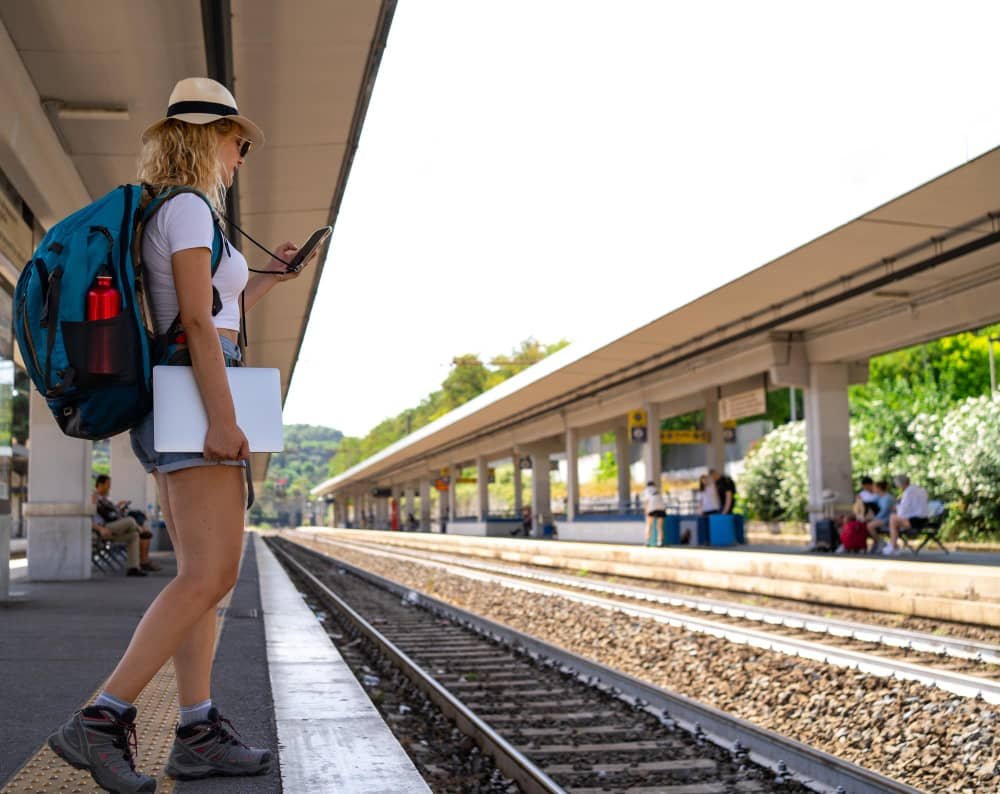
Use Public Transportation
There is no doubt that the Balkans is a beautiful region. From the towering mountains to the pristine beaches, there is much to see and do in this part of the world. However, traveling to the Balkans can be expensive, especially if you are not careful with your spending.
By relying on public transport like buses, trains, trams, and ferries instead of other modes of transport such as rental cars or taxis, you can drastically reduce your travel costs while still having access to all the Balkan region offers. Not only is using public transportation often much cheaper than renting a car or taking taxis, but it also allows you to experience life more authentically by connecting with local residents and getting a feel for the area’s culture.
Take Advantage of Free Activities
The Balkans is a region of Europe that is home to some of the world’s most beautiful and exciting countries. If you are planning a trip to the Balkans, there are a few things you can do to save money and make the most of your trip.
One of the best ways to save money when traveling is to take advantage of free activities. The Balkans have many beautiful parks, museums , and other attractions that can be enjoyed without spending money. Do some research before your trip to find out which attractions are free and visit them during your trip.
Another great way to save money is to book your accommodation in advance. Many hotels and hostels in the Balkans offer discounts for early bookings, so it pays to plan. You can also often find great deals on accommodation by booking last minute, but be aware that this may not always be possible during peak season.
Finally, one of the best ways to enjoy the Balkans on a budget is to travel slowly and take your time to explore all that the region has to offer. Public transportation in the Balkans is very affordable, so take advantage of it and spend a few days in each place you visit. This will allow you to experience the local culture and see everything the Balkans offer without blowing your budget.
Visit Fewer Places
You don’t need to travel to all of the countries in the Balkans to have a great time – in fact, you might have a more enjoyable and authentic experience if you focus on visiting just a few. This will also save you money, as travelling around can be expensive. Choose your destinations based on your interests, and leave time to explore each one. You’ll find that the Balkans have a lot to offer, and you’ll be able to create unforgettable memories without breaking the bank.
Slow Down and Stay Longer in Each Place
Slow down and stay longer in each place. It’s cheaper to stay in one place for a more extended period, rather than moving around constantly. This way, you’ll save on accommodation and transportation costs.
One of the best budget tips for exploring the Balkans is to slow down and stay longer in each place. With so much to see, it can be tempting to try and fit everything into one trip – but taking it easy will ensure you have time to enjoy all of what each place offers without breaking the bank.
Try staying in one area for a few days instead of constantly moving from place to place; this will save on transportation costs and give you more time to explore without feeling rushed or overwhelmed.
Find Discounts and Deals
There are often discounts available for students, seniors, families, etc. Ask around or research to find out what’s available in each city or town.
The best way to travel the Balkans cheaply is to find discounts and deals. There are a few ways to do this:
- Check out websites like Groupon and Living Social . They often have great deals on travel packages.
- Search for promo codes online before booking your trip. You might be able to find a discount on airfare or hotels.
- See if you can find package deals when booking your flights and hotel together. This can sometimes save you money.
- Fly into smaller airports. They usually have cheaper flight options than the major airports.
- Take advantage of local transportation options like buses and trains instead of car renting. This can save you money on gas and car rental fees.
- Stay in hostels or Airbnb’s instead of hotels. This can be a great way to save money on accommodations.
- Eat at local restaurants instead of tourist traps. This is usually cheaper, and you’ll experience the local cuisine.
- Visit during the off-season. This is typically cheaper than traveling during the peak season.
- Do some research before you go and plan your trip accordingly. This will help you save money and make the most of your time in the Balkans.
Use Student Discounts
There are plenty of ways to travel the Balkans cheaply, but one of the best ways is to use student discounts . Students can often get discounts on accommodation, food, and transport, so it’s worth taking advantage of if you’re eligible.
Here are some tips on how to do it:
1. Check out websites like StudentUniverse and STA Travel , which offer exclusive deals and discounts for students.
2. If you plan to travel by bus or train, check for any student discounts available. For example, in Croatia, students can get up to 50% off train tickets with a valid ISIC card.
3. Regarding accommodation, hostels are often an excellent option for students as they are much cheaper than hotels. However, some hostels offer special student rates, so it’s always worth checking in advance.
4. Another way to save on accommodation is to Couchsurf – where you stay with a local for free in return for them to stay with you when they visit your home country. Not only is this a great way to meet new people and learn about local cultures, but it can also help you save a lot of money on accommodation costs.
5. Regarding food, cooking meals will always be the cheapest option. However, if you want to eat out, look for restaurants that offer student discounts – most large cities will have at least a few options. Additionally, many cafes and bakeries offer special student prices – so keep your eyes peeled!
Go with a Group Tour
Few things in life are more rewarding than exploring the world on a tight budget. While some might balk at the idea of traveling cheaply, the truth is that it’s often the best way to see everything a destination has to offer without breaking the bank. And when it comes to budget travel, few places in the world offer more bang for your buck than the Balkans.
This region of Europe is home to some of the world’s most beautiful scenery and fascinating cultures, all at a fraction of the cost of more popular tourist destinations. If you’re looking for ways to travel the Balkans on a budget, one of the best options is to go with a group tour.
Not only will you save money on accommodation and transportation costs, but you’ll also have a knowledgeable guide to show you around and help you make the most of your trip. With a group tour, you’ll be able to visit all of the Balkans’ most popular attractions without worrying about planning everything yourself. And best of all, you’ll be able to do it all at a price that won’t break your budget.
Exploring the Balkans is especially cost-friendly, with many attractions that don’t break the bank. To get the most out of your vacation while sticking to a budget, using some of the tips above can help for traveling the Balkans cheaply.
Subscribe to our newsletter to get our newest articles instantly!
Email address:

Sign in to your account
Username or Email Address
Remember Me

IMAGES
COMMENTS
Balkan Study Trip. Join us for a 12-day journey of discovery through the Balkans. The Balkan Study Trip program offers the opportunity to explore the past, present, and future of this fascinating region, with visits to four countries: Croatia, Bosnia and Herzegovina, Serbia, and Kosovo. This is an educational tour with the main aim to educate ...
Balkans Academic Study Tours. Pre-made and tailor made multi-day academic study tours, covering wider region of the Balkans, including: Bosnia & Herzegovina, Croatia, Serbia and Kosovo. Trips are perfectly crafted for high schools, colleges and universities, but also for anyone interested into deeper understanding of the Balkans.
Day 4: Novi Sad, Serbia. Novi Sad, Serbia's second-largest city, is an excellent place to visit for a day trip from Belgrade, especially if you want to see a bit more of Serbia. Easily reached in a bit over an hour via bus or train from Belgrade, spending one day in Novi Sad is a wonderful idea.
BALKANS ITINERARY (10 DAYS) Balkans travel is something that every traveler should experience, but not all travelers have the full month necessary to backpack and slow travel the Balkans. This Balkans itinerary for 10 days packs the best sites, tastes, and experiences of the region into a smooth, 10-day jaunt.. With this 10 day Balkans itinerary, every single day will be mind-blowing and ...
5. Sarajevo, Bosnia and Herzegovina. Once dubbed "the Jerusalem of the Balkans," the capital city of Bosnia and Herzegovina is a fascinating cultural and historical place to visit. Beginning in the Ottoman Old Town, take in the Sebilj, an iconic wooden fountain, and Baščaršija, the surrounding bazaar.
Fully Guided Tours & Trips in Balkans. Find the right fully guided tour for you in Balkans. There are 1909 trips to choose from, that range from one day in length, up to 42 days. The month with the most departures is September, making it the most popular time to visit Balkans.
Balkan Countries. For the purposes of this guide, we will be concentrating on travel in the following Balkan countries: Albania, Bosnia & Herzegovina, Bulgaria, Croatia, Kosovo, Montenegro, North Macedonia, Serbia and Slovenia. While parts of Greece, Romania and Turkey can also be considered part of the Balkans, they are not included in this guide.
How to Travel: The best way to get into the Balkans is by flying. European budget airlines, in particular Wizz Air, connects to many destinations. You shouldn't have any difficulties finding an inexpensive flight to Sofia (Bulgaria), Skopje (Macedonia) and Tuzla (Bosnia). The best way to travel within the Balkans is by either the bus or train.
Best Way To Travel In Between Balkan Countries. Flix Bus: This app was easy enough to book all my travels. Getbybus: I found this app the best way to book buses and check in real time other bus options especially if Flix Bus is fully booked. Busticket4me: The next best alternative for checking real time and routes. My Itinerary of 1.5 Months in ...
Our winning tipster splashes out in Berlin, while road trips in the Balkans and Canada provide great student travel memories Guardian readers Fri 30 Jun 2023 06.00 EDT Last modified on Fri 30 Jun ...
Where To Travel In The Balkans - Country Guides. Let's get you ready for your Balkans trip; with so many countries to choose from, we have broken it down into 12 countries and have given you links to dozens of detailed travel guides we have written for each country in the Balkans region. 1. Croatia.
August 2025 (749) September 2025 (788) October 2025 (662) November 2025 (410) Browse the best tours in Balkans with 16,587 reviews visiting places like Athens and Dubrovnik. All Major Brands. Biggest selection. Best Prices.
Summary of this Balkans Road Trip 10 Day Itinerary. All in all, this ten-day Balkans Road trip itinerary will allow you to see five towns and four countries. While its fast paced, this itinerary will allow you to see the highlights of Albania, Croatia, Bosnia and Herzegovina, and Montenegro. Afterwards, you can decide which places you want to ...
Caves and the Rakov valley. Recommended time: 1 day. This area of the country is home to some brilliant landscapes and places to see. There are plenty of caves in Slovenia but the two most well known are Postonja and Skocjan. Nearby is the Rakov Skocjan valley which is great place for hiking and adventuring.
Look for regional passes or special discounts for students and seniors. Eating at local bakeries and markets also helps to keep the travel costs down while offering authentic culinary experiences. ... This rail trip, a hidden gem in Balkan train travel, stretches over approximately 56 kilometers, taking travelers from the Montenegrin capital ...
Alleyway Restaurants - there are tons of restaurants with tables in the narrow streets of old town. Many of these will serve classic Croatian food and seafood in a lovely atmosphere. View from walking the city walls. Balkan Itinerary Day 1: Dubrovnik - Old Town.
About me/why the Balkans: 24M from Sweden. Second big solo backpacking trip, having visited SEA for 3 months in 2017. University student on a gap year, funding my trip with money I've earned working alongside uni. I decided I wanted to go on a gap year only a few weeks prior to the next semester starting.
Tour from Athens to Belgrade: 7 Balkan countries in 14 days. 5.0 (15 reviews) Very qualified staff and guide! Best days in the Balkans! Destinations. Greece, Albania +5 more. Age Range. 2 to 90 year olds.
Taxis: Round up to the nearest amount that makes sense. i.e. Pay 400 dinar for a 350 dinar cab fare ($4 USD vs. $3.50 USD for a tip of 50 cents) or Pay 5 leva for a 4.20 leva cab ride (2.50 euros for a 2.10 euros cab ride) Massages, Salons, etc.: 10% for good service or more for excellent service.
Bagaż: 200 € (zawartość) Centrum Alarmowe - czynne 7 dni w tygodniu 24 godziny na dobę. Do Centrum Alarmowego należy bezzwłocznie zgłaszać wszystkie zdarzenia objęte ubezpieczeniem, w celu uzyskania pomocy i skierowania do właściwej placówki. Telefon: + 48 22 564 06 25.
As many of their peers prepared for summer vacation, 13 USC School of Pharmacy undergraduates traveled throughout southeastern Europe for the Maymester class Balkan History, Geography and Folk Medicine. The 20-day trip was led by course instructor Terry David Church, assistant director of undergraduate education and a faculty member in the ...
W sylwestra znajdziesz wiele wycieczek tych znanych z wakacji takich jak Eurotrip, sylwester we Włoszech czy impreza sylwestrowa na statku podczas naszego rejsu po Bałtyku. Tym razem możesz zobaczyć miasta, czy kraje w innej zimowej odsłonie. A wszystko to w prawdziwej studenckiej atmosferze witając Nowy 2024 Rok.
Do some research before you go and plan your trip accordingly. This will help you save money and make the most of your time in the Balkans. Use Student Discounts. There are plenty of ways to travel the Balkans cheaply, but one of the best ways is to use student discounts. Students can often get discounts on accommodation, food, and transport ...
21 first year undergraduate students participated in this educational, business and cultural trip to San Francisco. Page content A cohort of 21 first year undergraduate students from Ulster University's Department of Global Business & Enterprise and School of Computing recently returned from a trip to San Francisco, as part of the Global ...